- contact@scarhandpainting.com

Welcome to Temple Bases tutorial. Here I will take you on a Step-by-step trip through the process of creating and painting Temple Bases as presented in the picture below. This adventure is possible thanks to generosity of Gamers Grass and their easy to use, fantastic products.
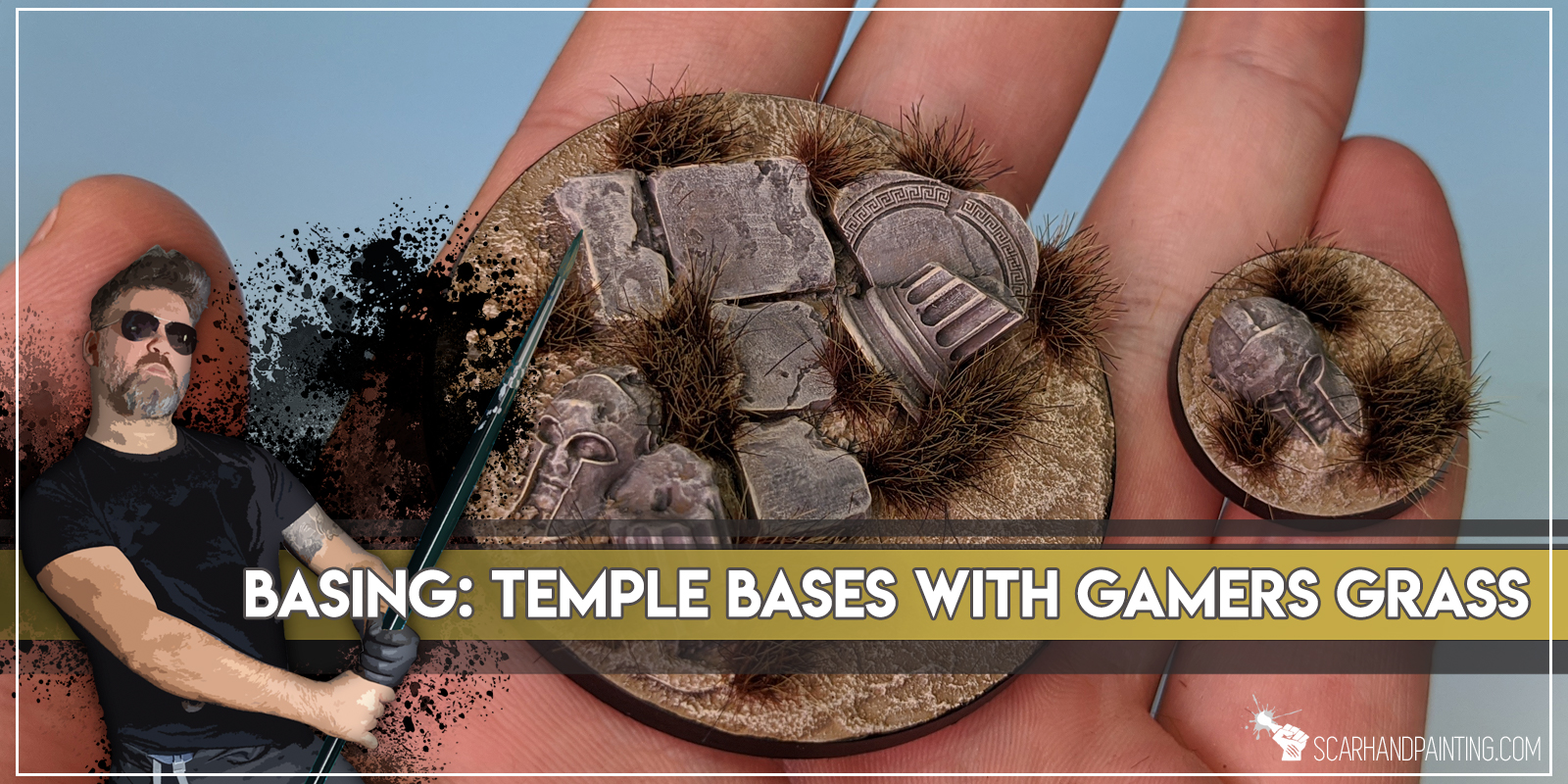
Before we start, some notes:

In my opinion base is supposed to complement a miniature, not steal the spotlight. For this reason, when making bases, I usually aim for fast, simple, yet effective solutions. Important thing to note when deciding on what to use for your bases is to pick a method that is easy to copy. This is why I consider Gamers Grass Basing Bits a perfect solution. Nicely textured, ready to use straight out of the box – glue them on, add some texture around – you’re ready to paint. All that being said – for this particular base type I choose Gamers Grass “Temple” basing bits.
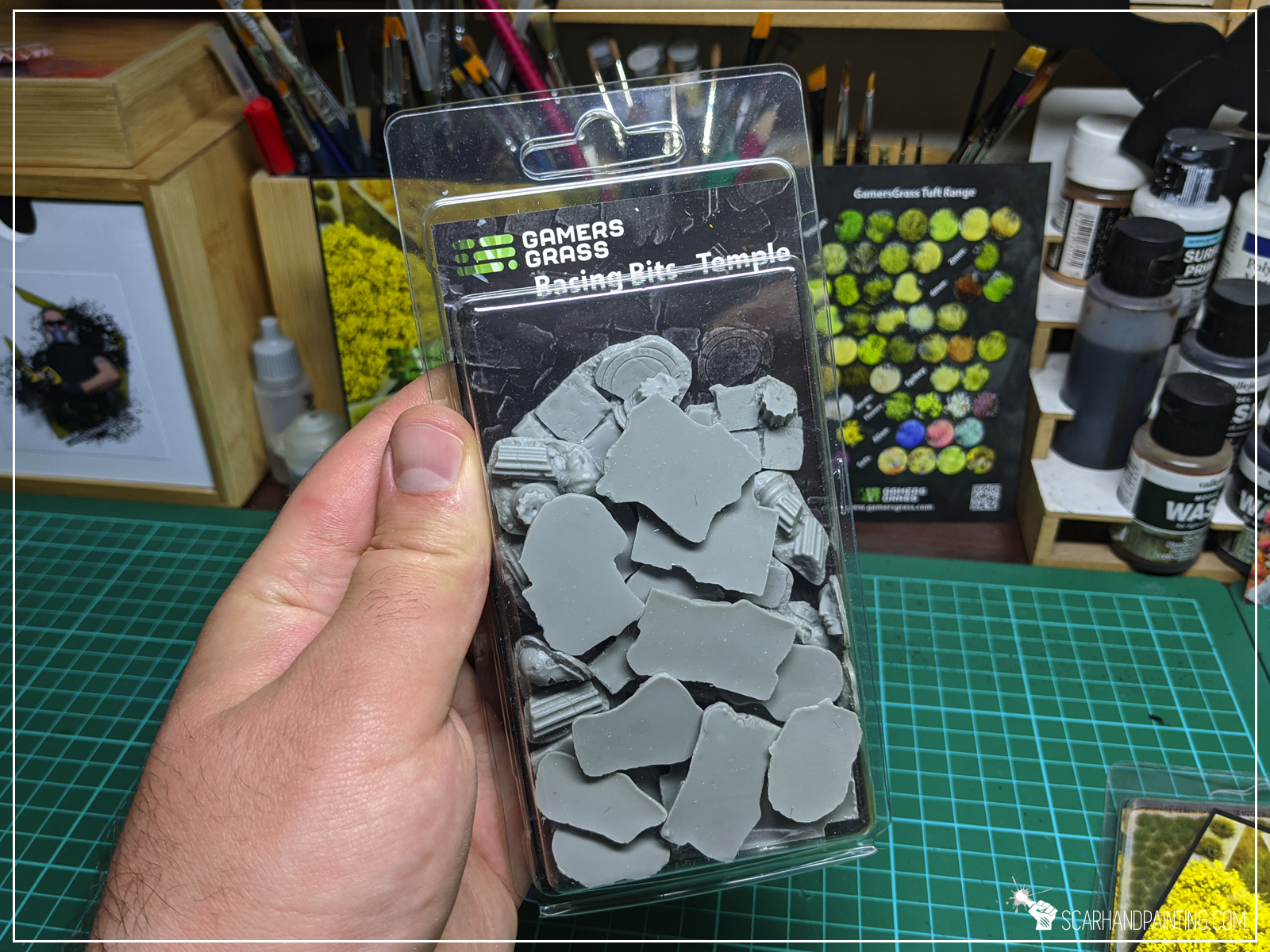
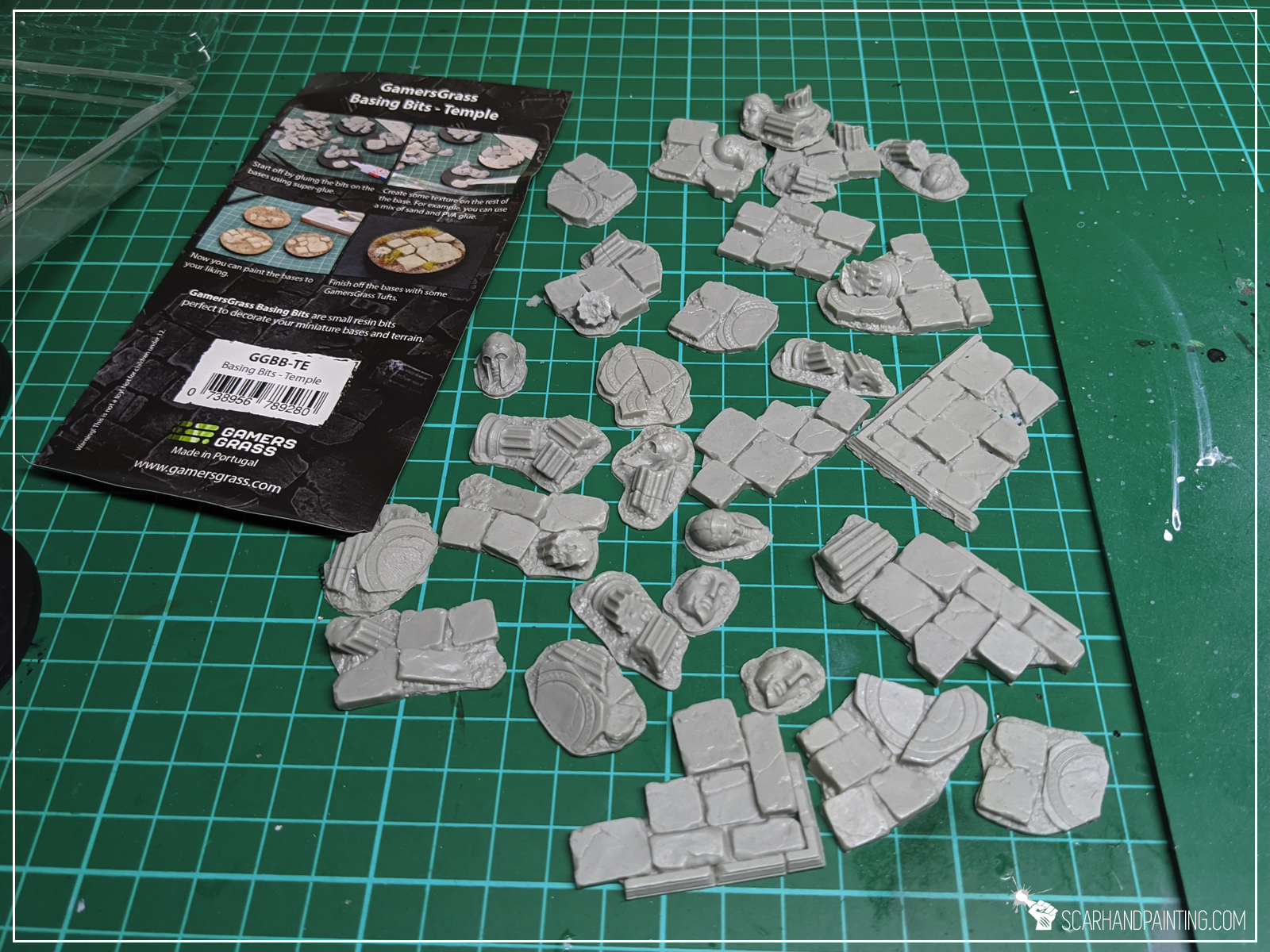
Step one: Applying basing bits
I started by applying glue onto the base and gluing few basing bits on top.

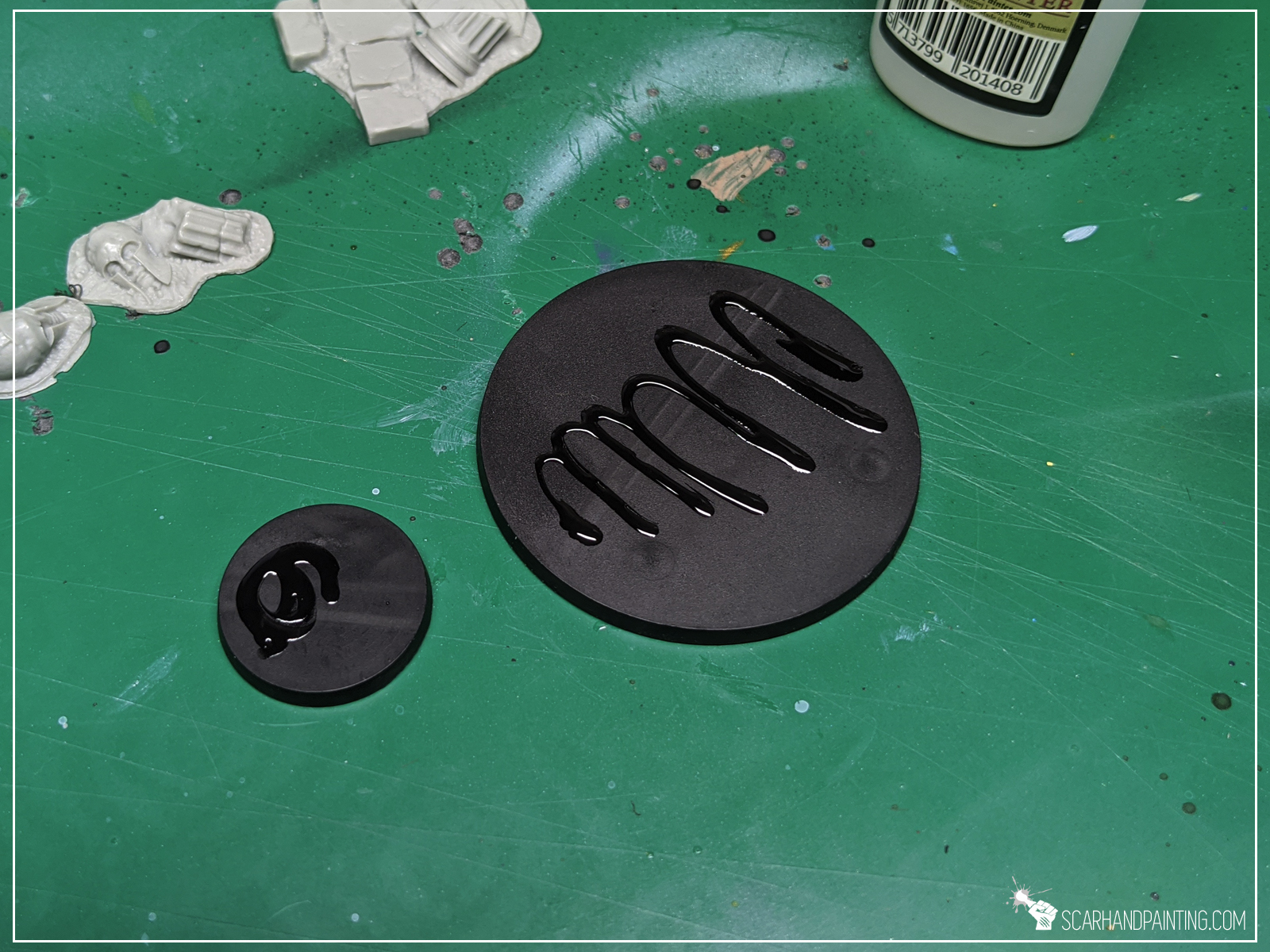
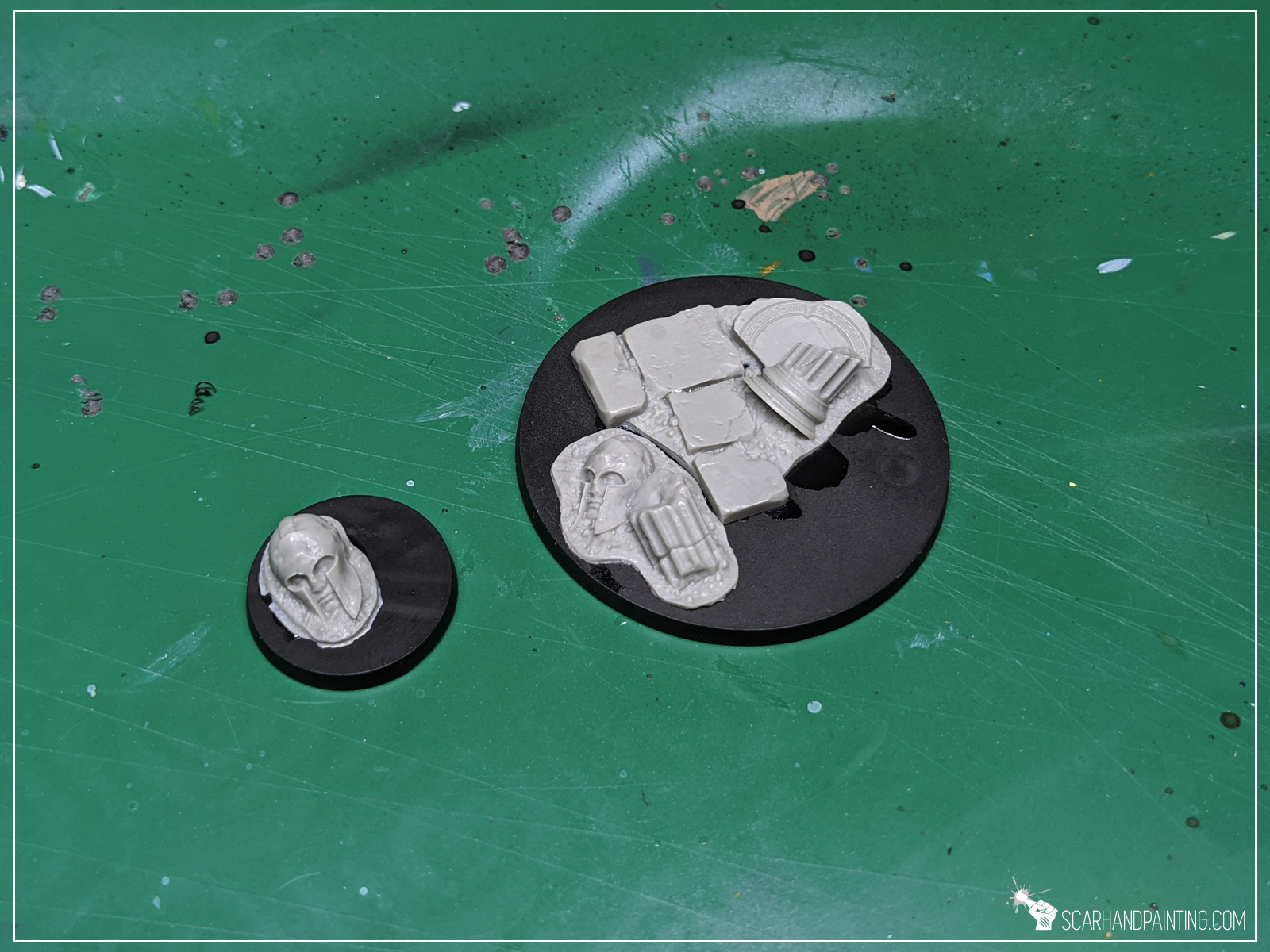
Step two: Applying texture
I then applied texture with Games Workshop Stirland Mud.
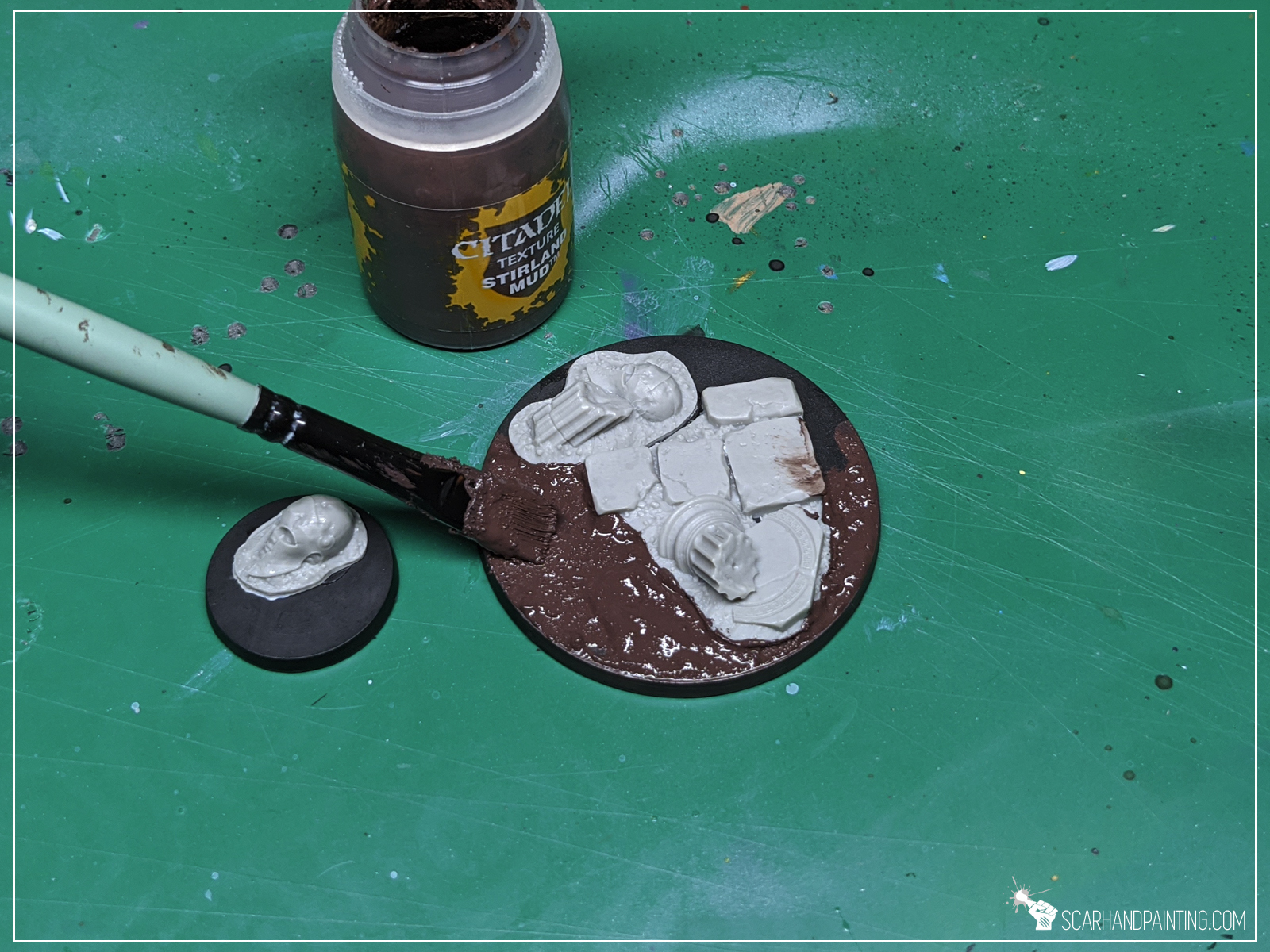
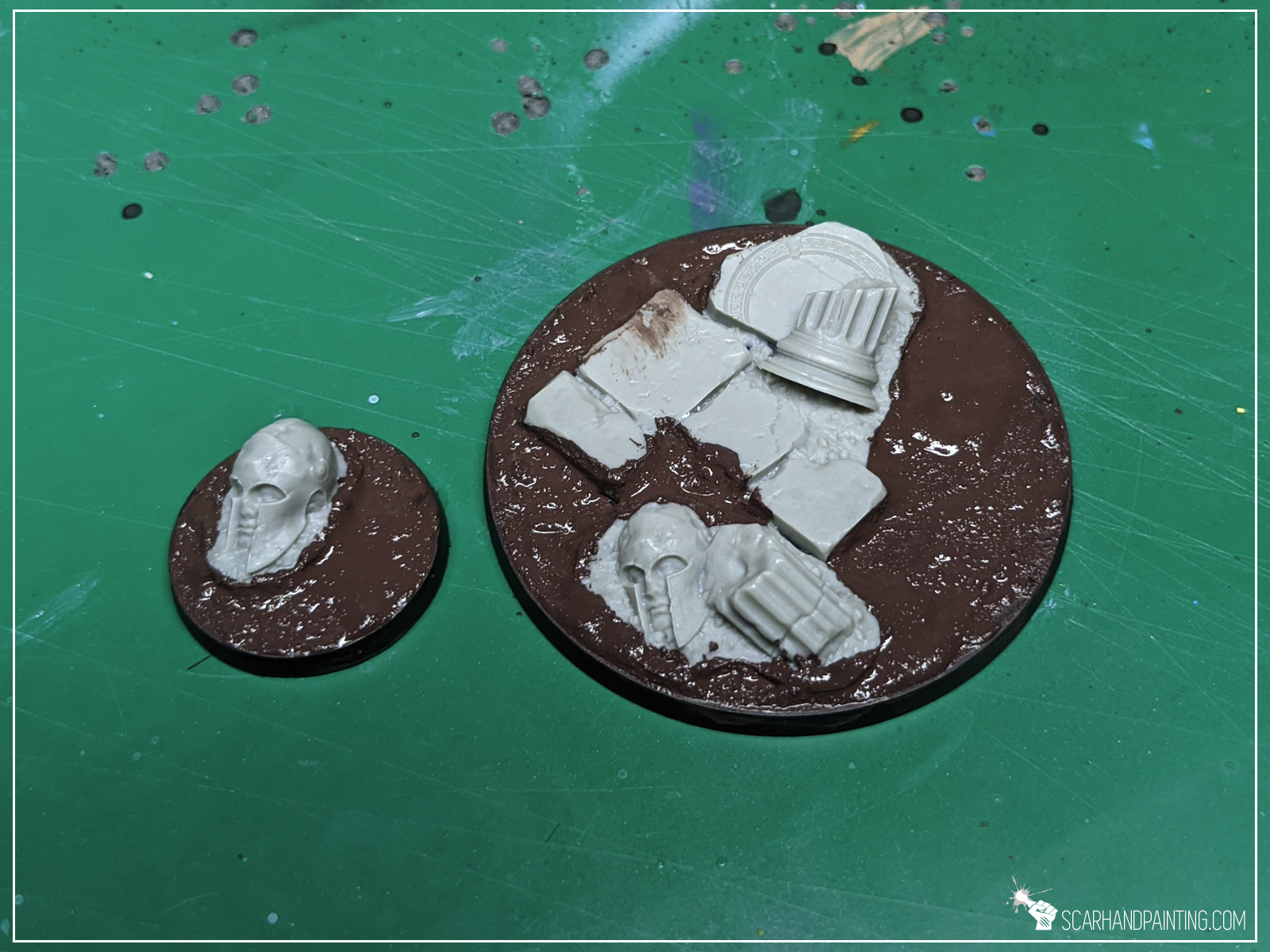
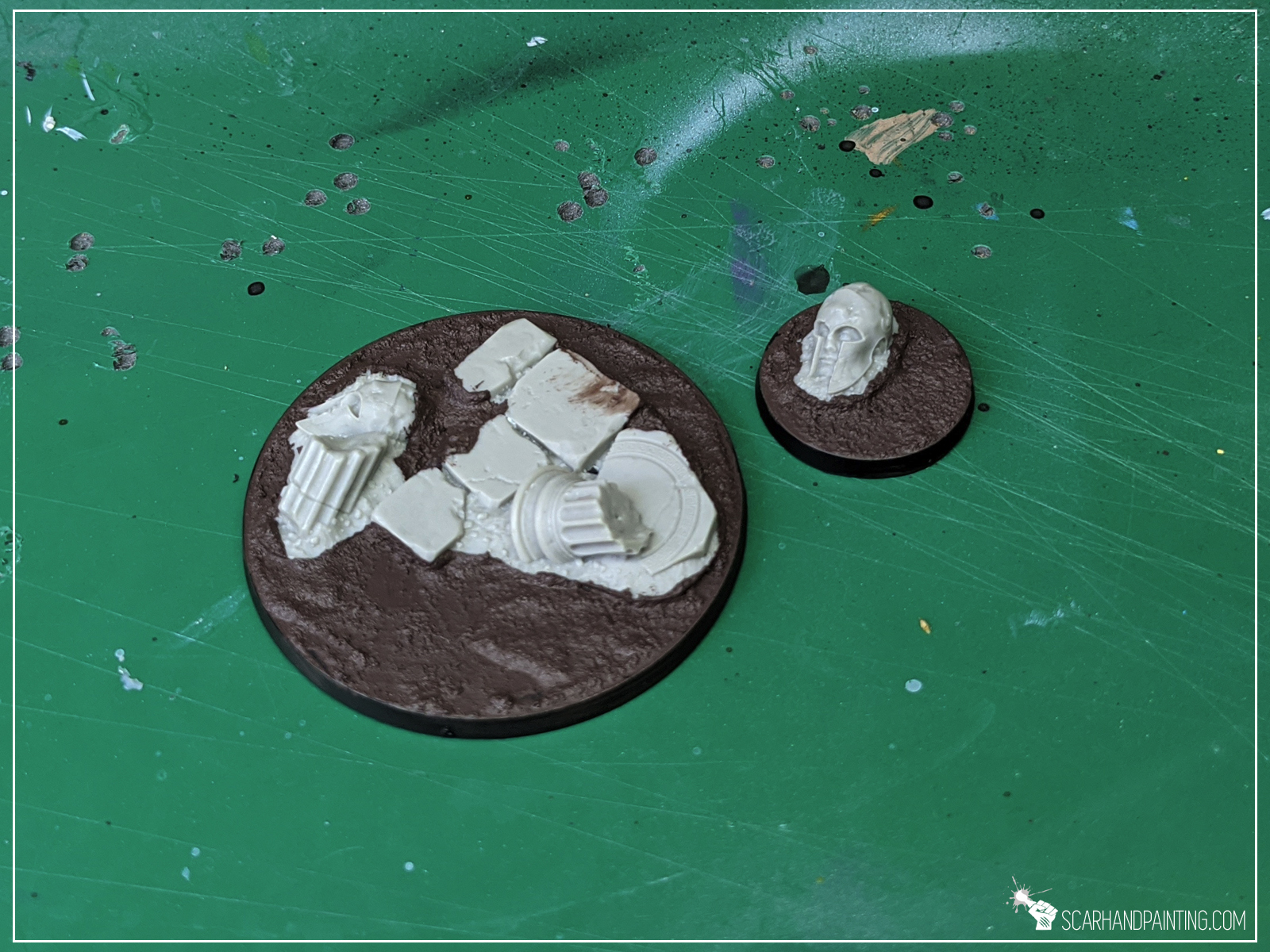
At this point entire “Modelling” part is done. If it seem fast it’s because it really is. Just two steps and you’re ready to paint!

I choose to paint these Temple bases in a bit of a Desert’ish style. Let’s say these are meant to be used for a large army. I want to keep things simple, best if within three layers per color, crowned with a single type of tufts. Nothing fancy, just nice looking, coherent bases. Here’s how I went about it…
Step one: Undercoat
I applied a black undercoat. This is my usual start for everything 😛
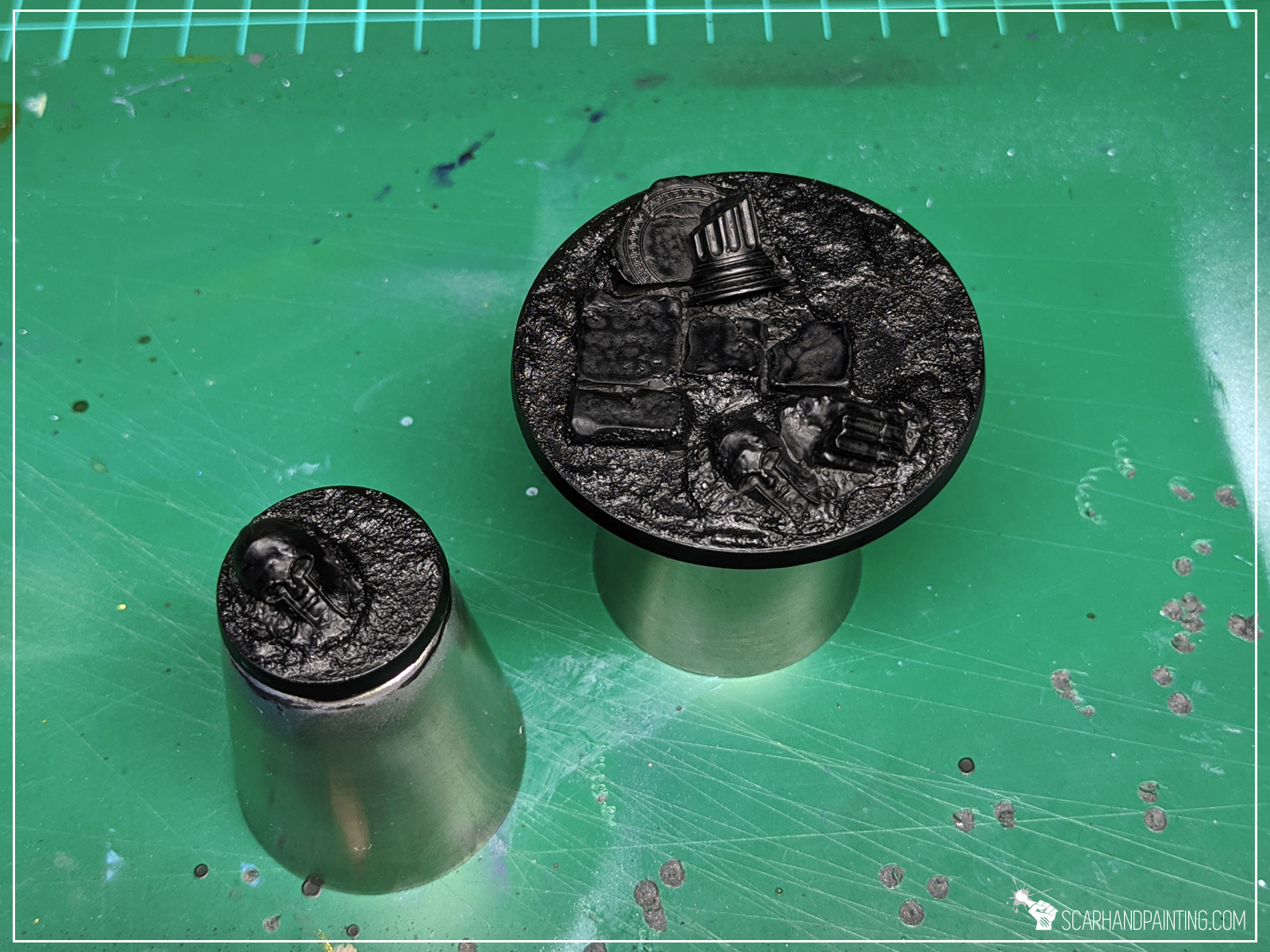
Step two: Main color
I then airbrushed Vallejo Desert Yellow over entire base. Once dry I applied Vallejo European Dust Wash.
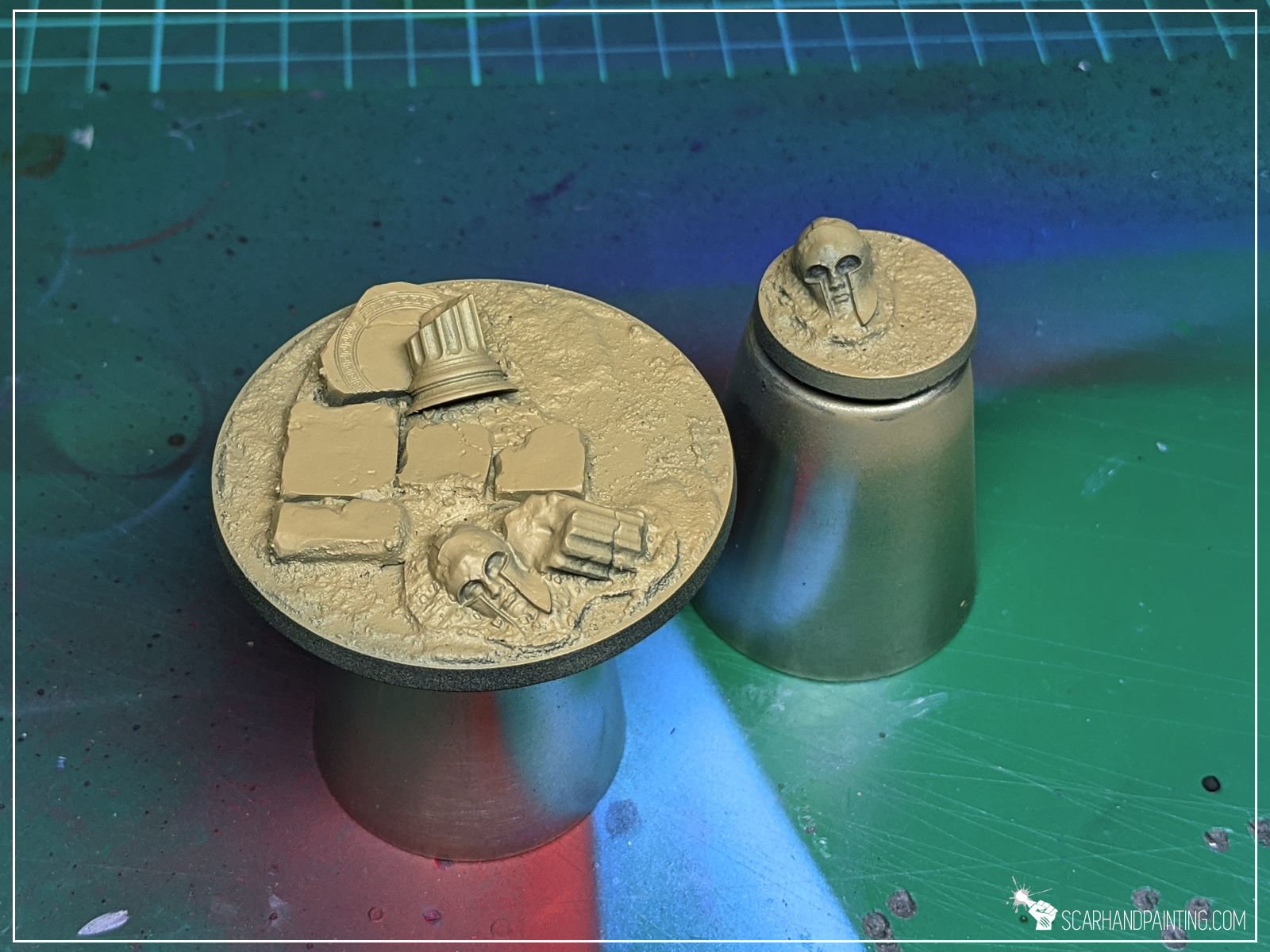
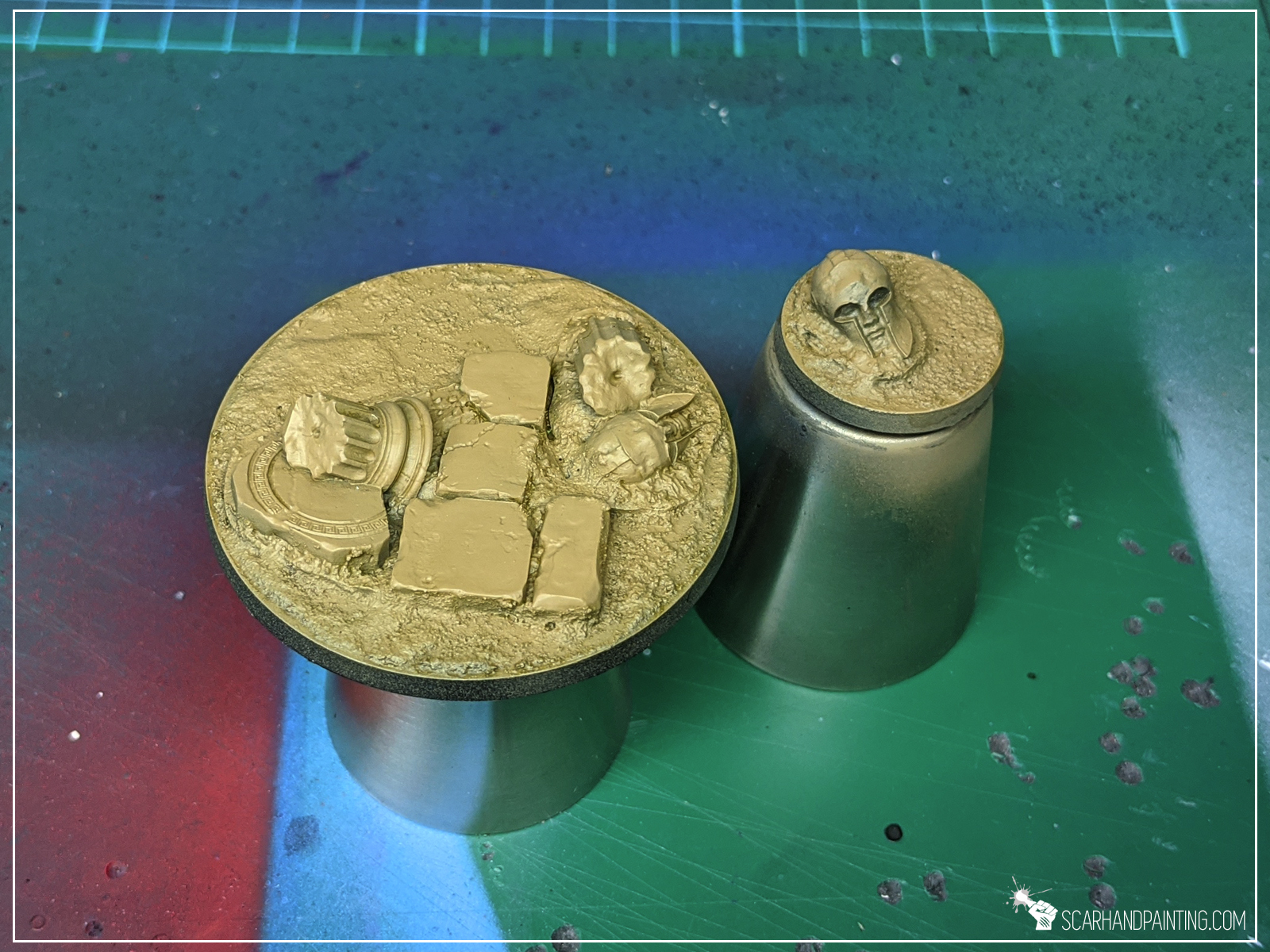
Step two: Secondary color
For ruins I choose Vallejo Cold Grey, followed by a wash of water thinned Vallejo Dark Panzer Grey.
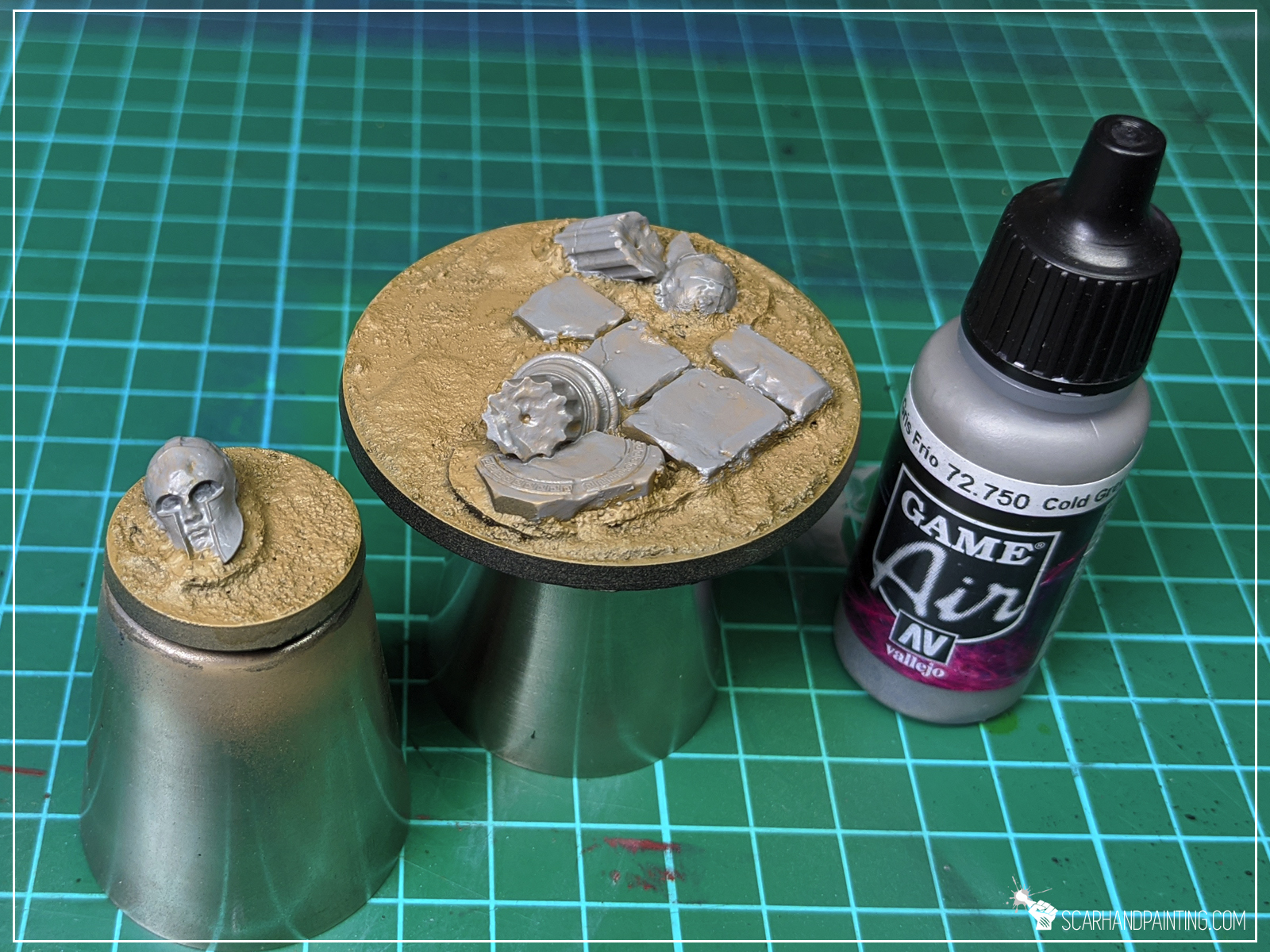
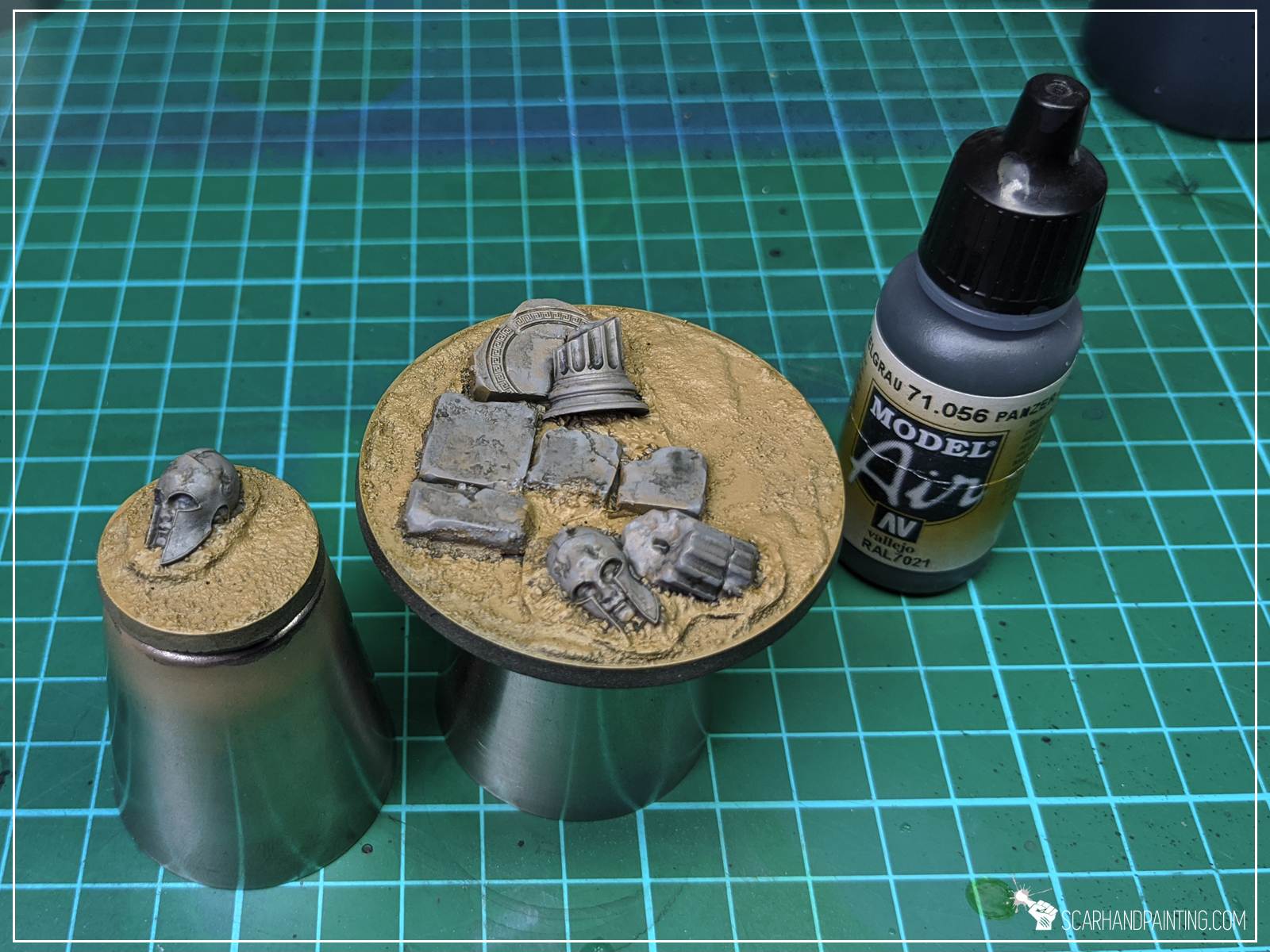
Step tree: Highlights
I then highlighted both colors with a soft drybrush of Games Workshop Flayed One Flesh. I also applied some highlights with the same color on the edges of ruins – just a bit to make them pop.

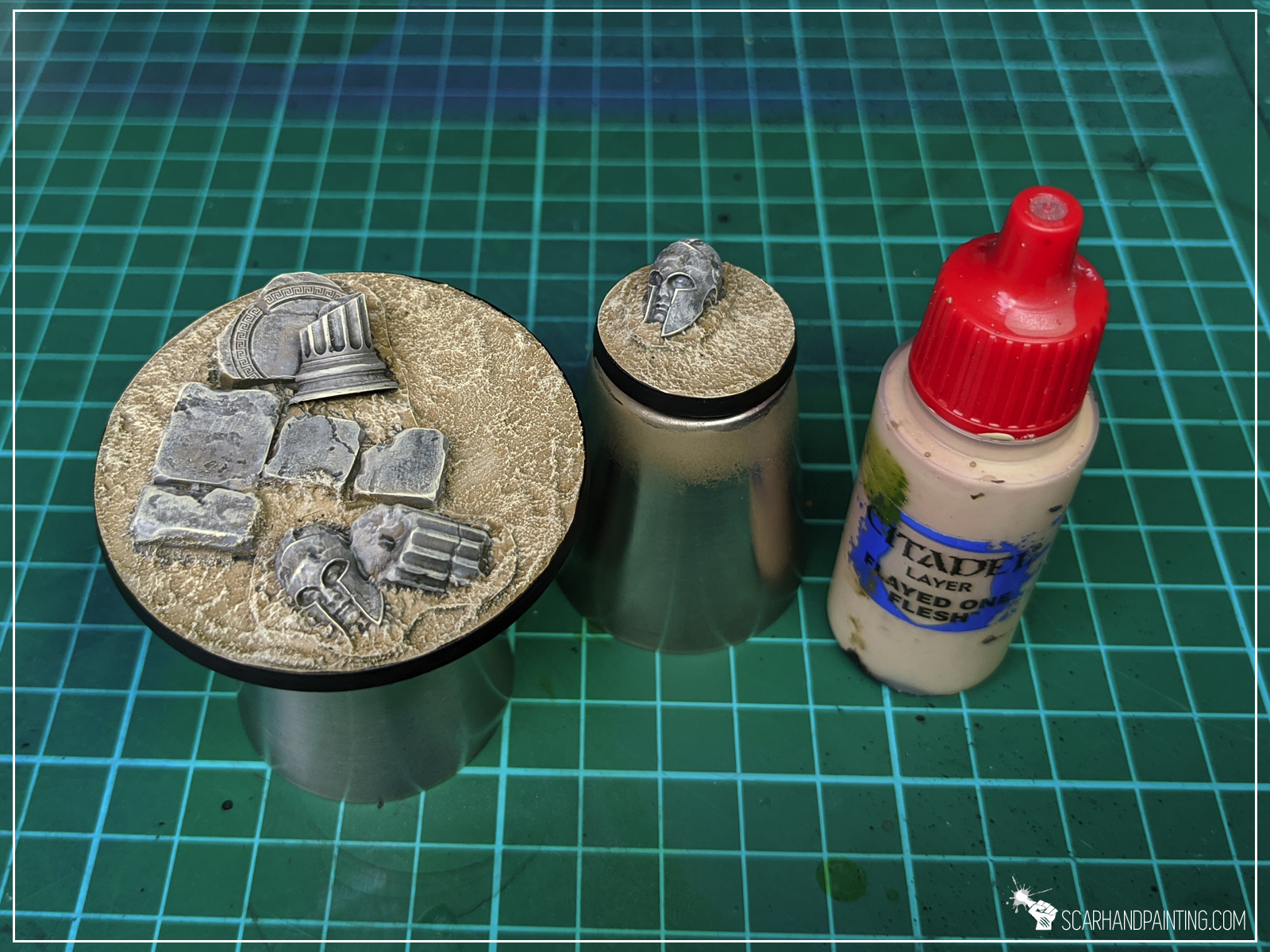
Step tree: Tufts
Finally I applied Gamers Grass Burned Wild Tufts.
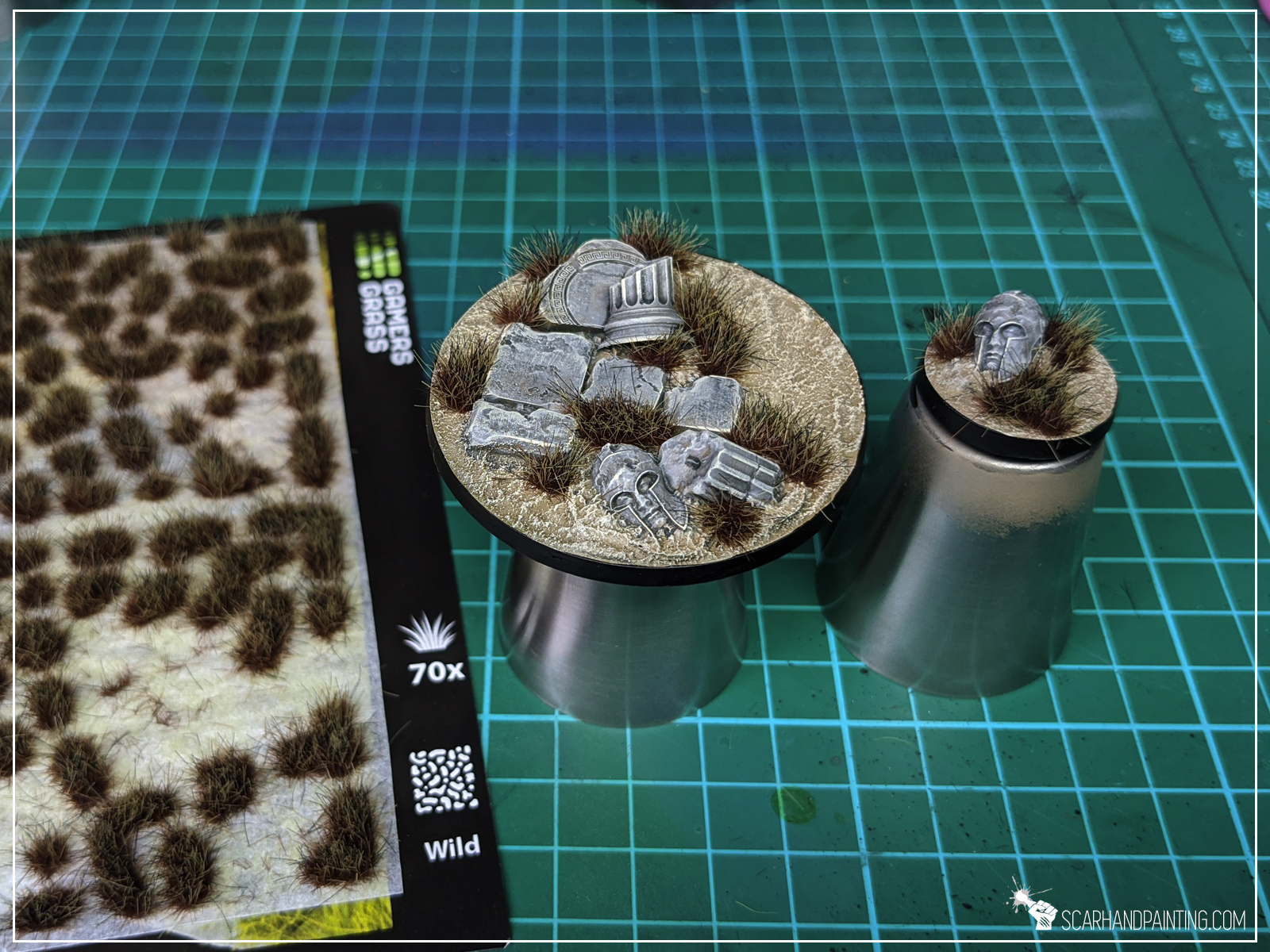


Job done! There’s some poetry in both starting and finishing a base using products from the same company 😛 Either way – I hope this was a pleasant tutorial and that you saw how simple the process is. If you want to learn more about Gamers Grass products – here’s my review:

Welcome to Painting Black Marbe tutorial. Here I will take you on a Step-by-step trip through the process of painting black marble.
Before we start, some notes:

Step one: Undercoat
I started with an airbrushed layer of White.
Step two: Base texture
For this step I used a Steel Wool stencil prepared in the previous Tutorial: Painting Marble. I simply took few pieces of steel wool, taped them together and used them as a stencil. I then airbrushed black paint through the stencil. Furthermore in some places I have removed black paint with a wet toothpick to create strong white lines.
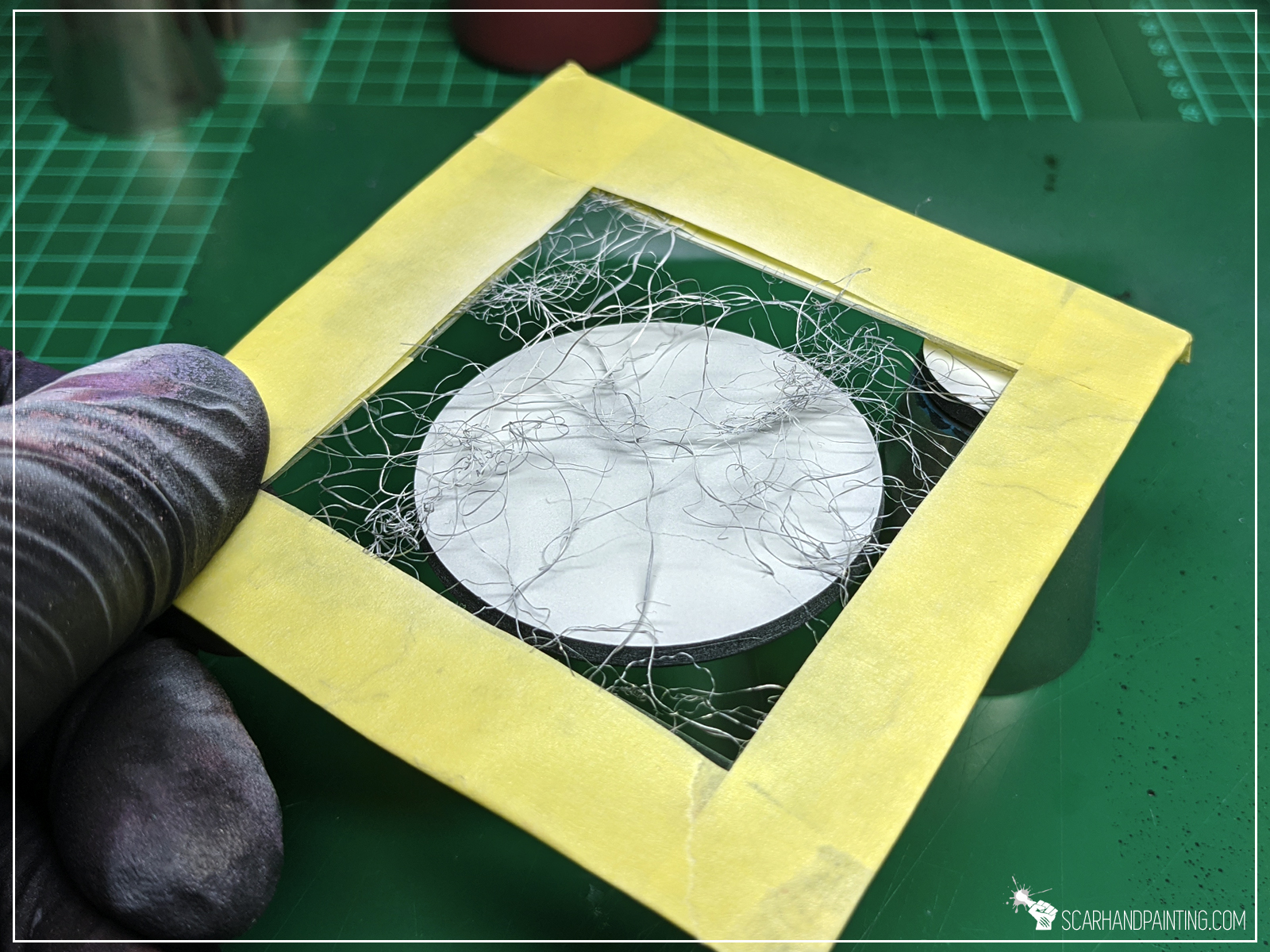
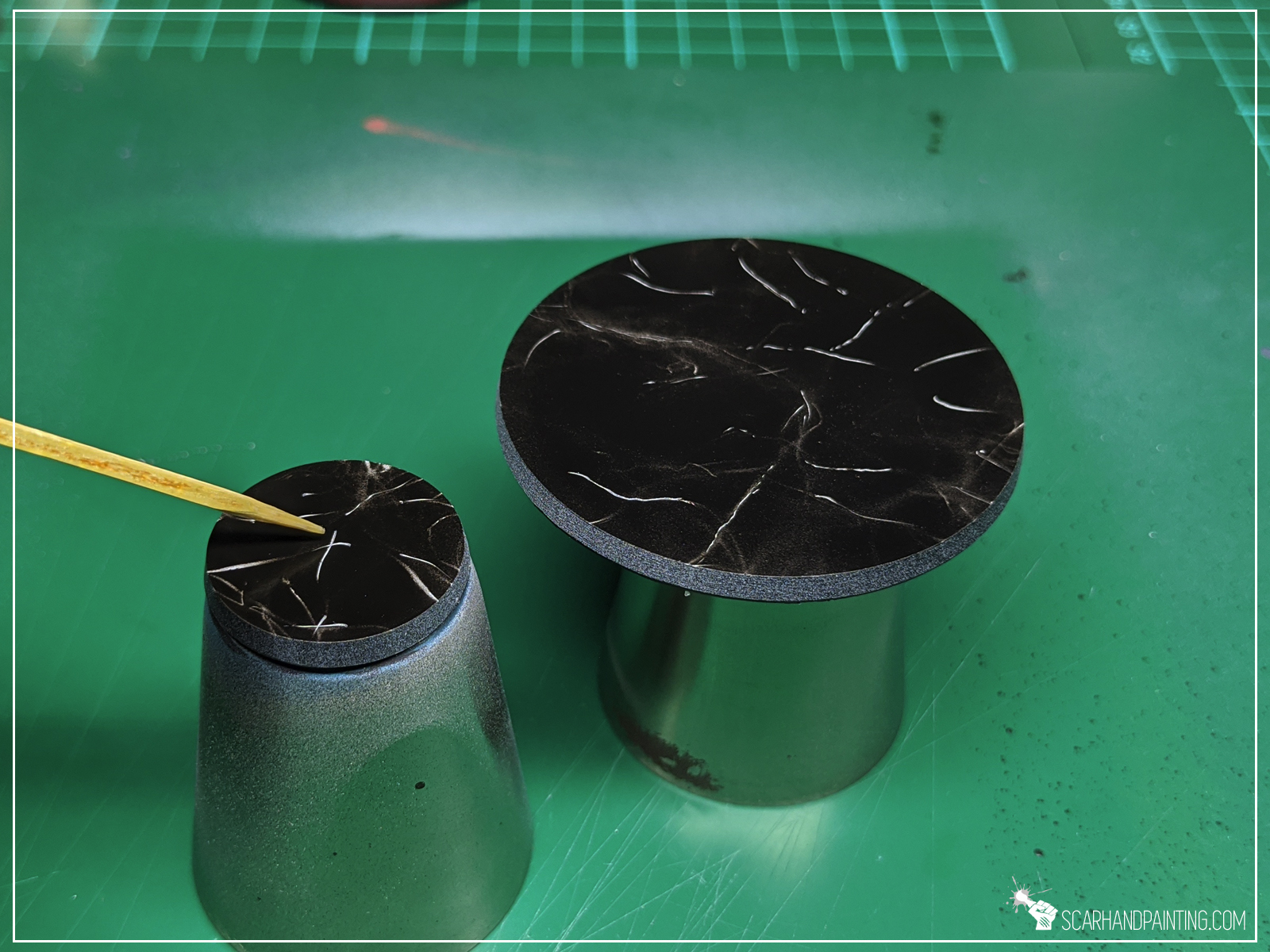
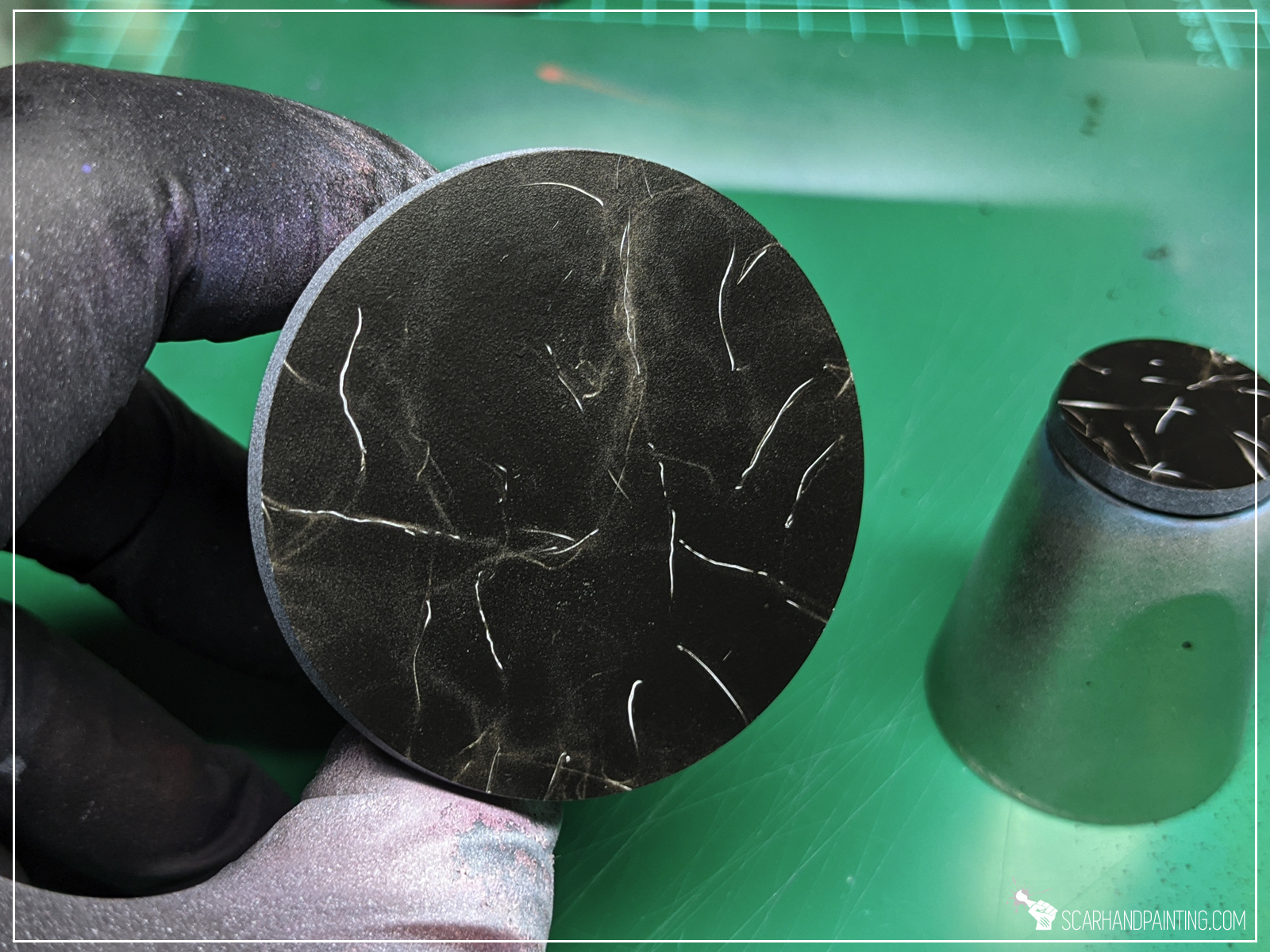
Step three: Texture
Next I added a layer of texture by manually applied stains of Vallejo Pale Grey Wash. After waiting half a minute I removed the excess of the paint with a paper towel.
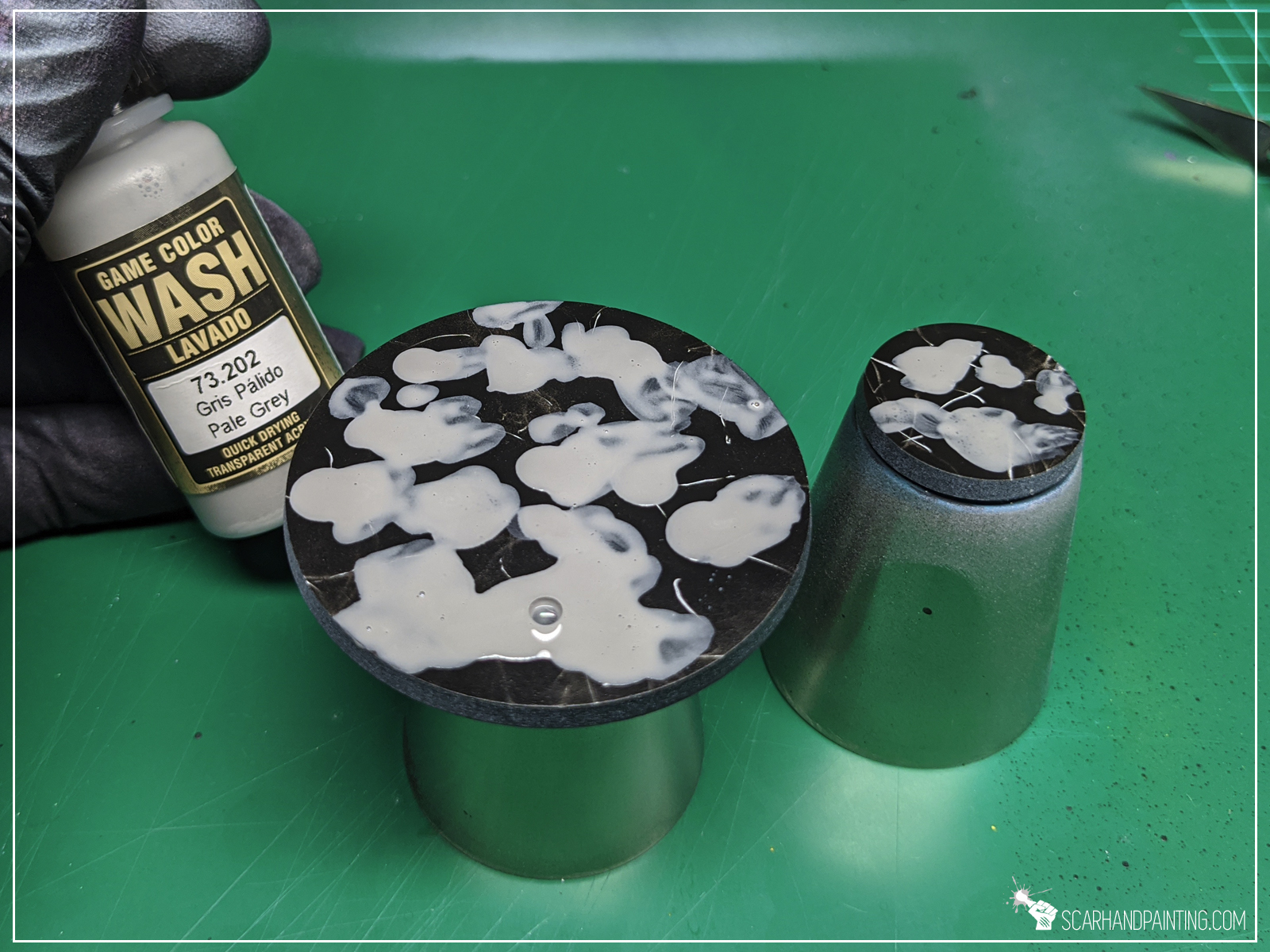


Step four: More texture
I then applied stains of Vallejo Air White, but this time removed the excess of the paint with slightly pressured water. You can simply airbrush water with around 0,5 bar pressure if you don’t have a sprinkler.

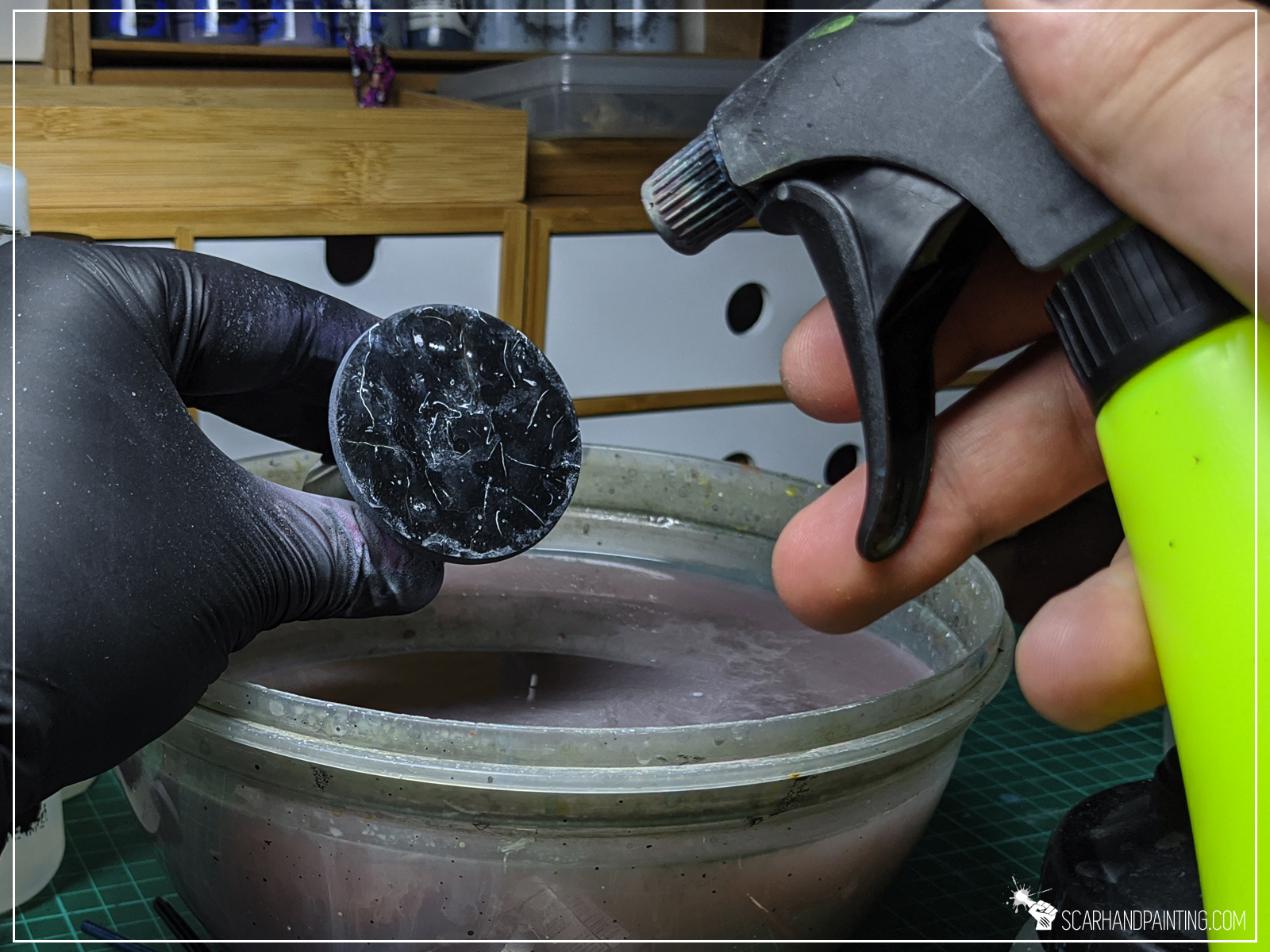
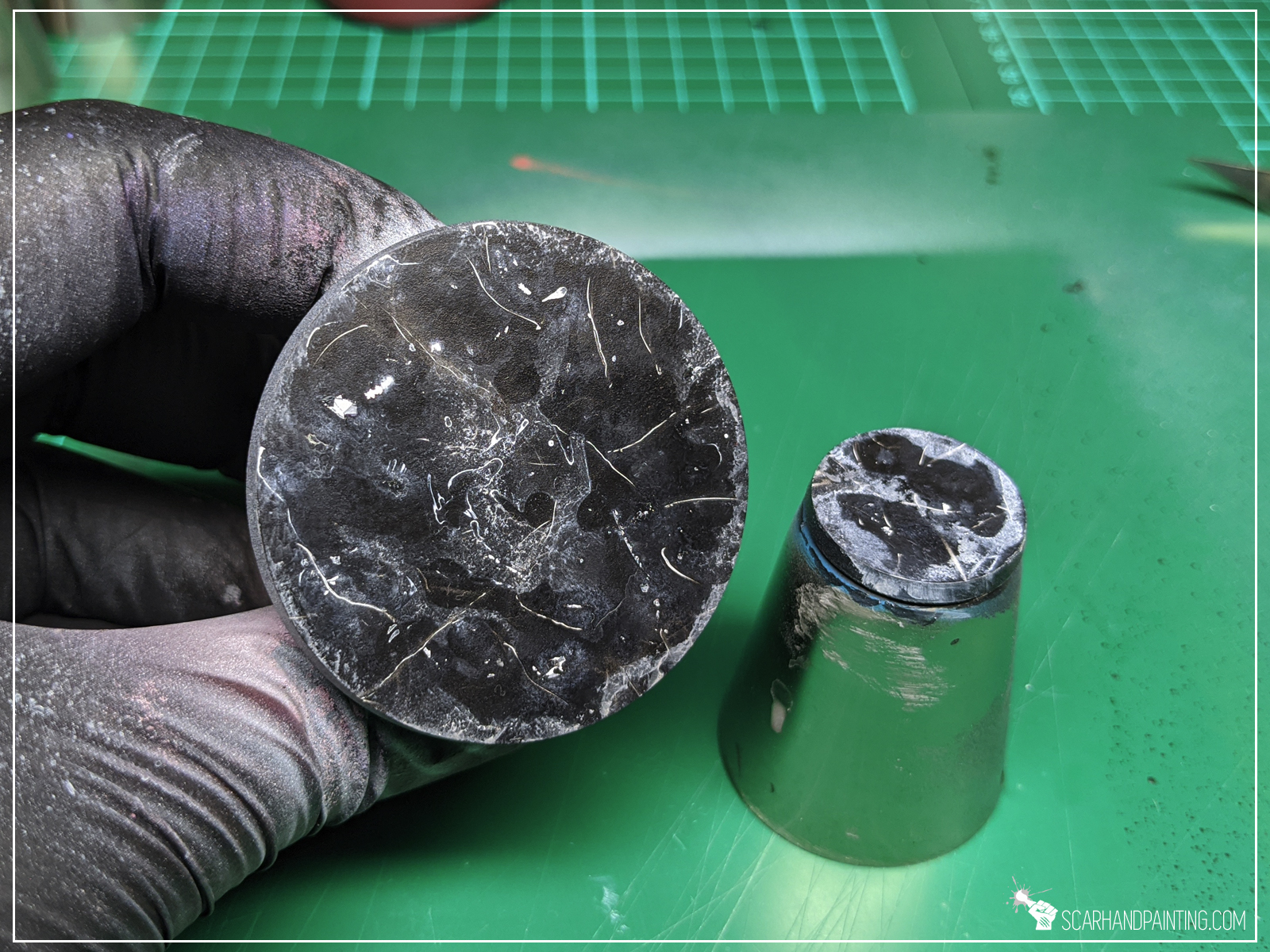
Step five: Sealing the colour
To seal the colour I applied an even, smooth layer of Army Painter Dark Tone Ink.
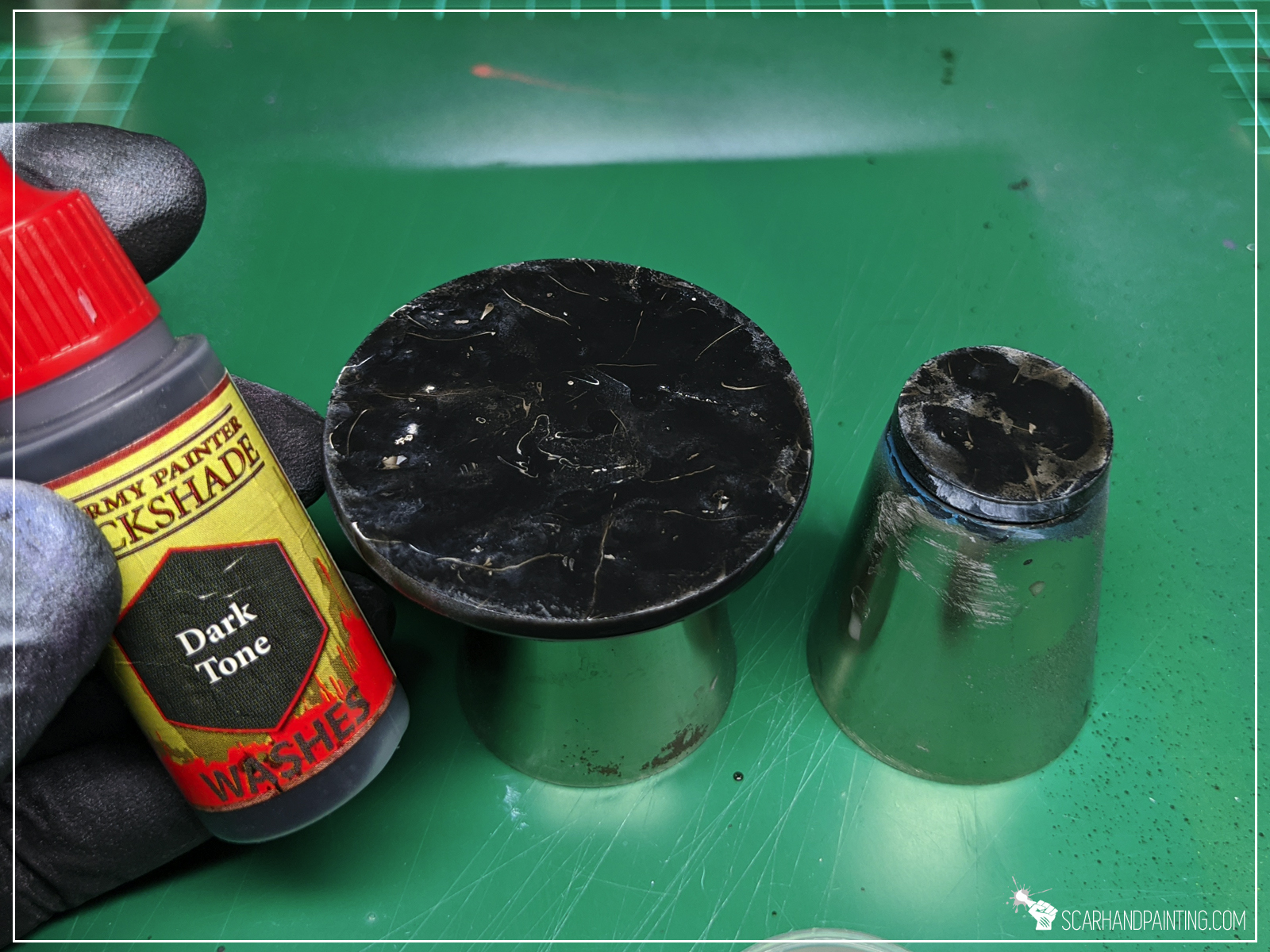
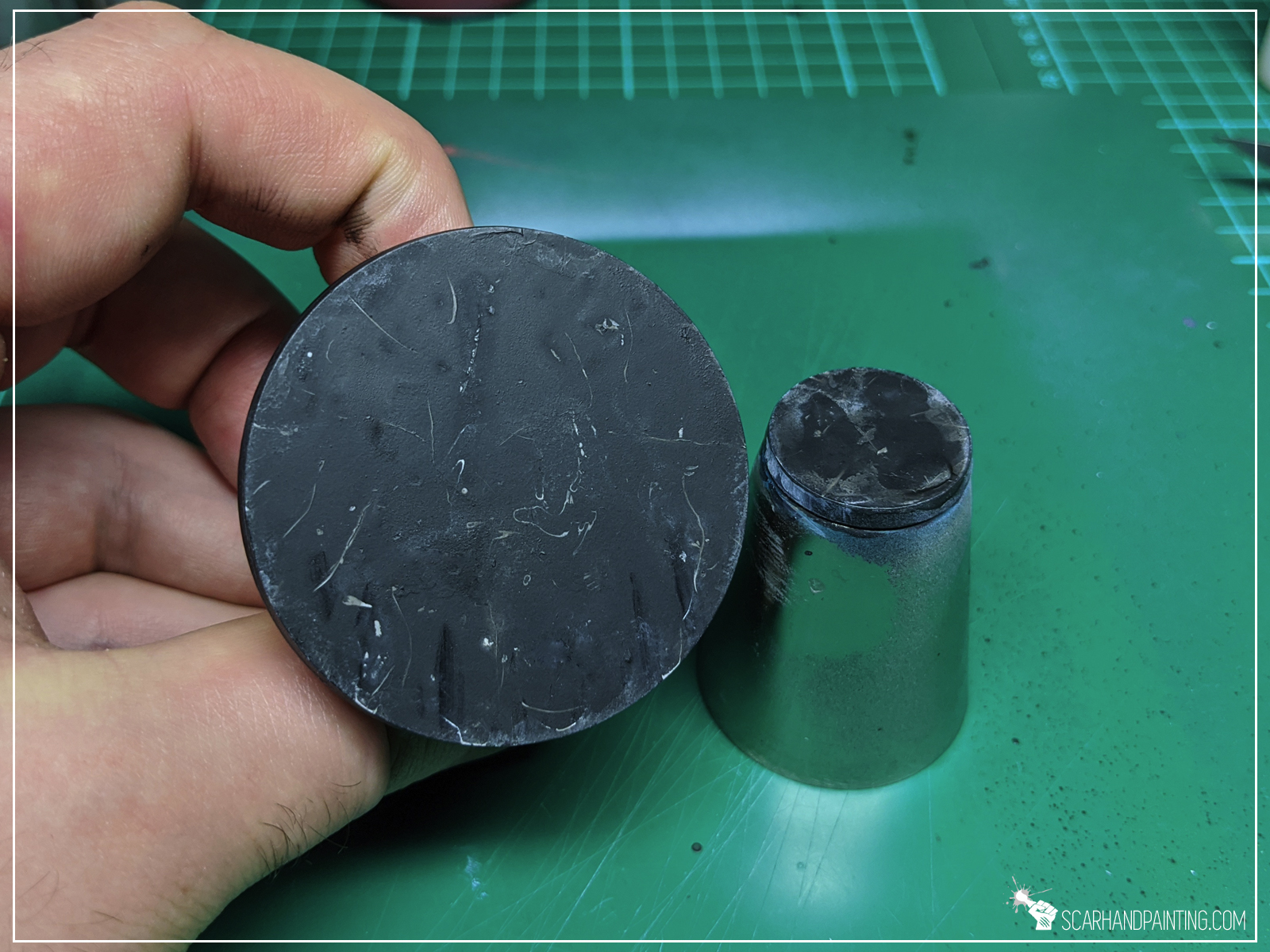
Step five: Gloss
Finally I applied two layers of airbrushed Gloss Varnish. This resulted in a nice polished glossy look but also added that 3d look to different layers.

Here’s how the finished base looks like.

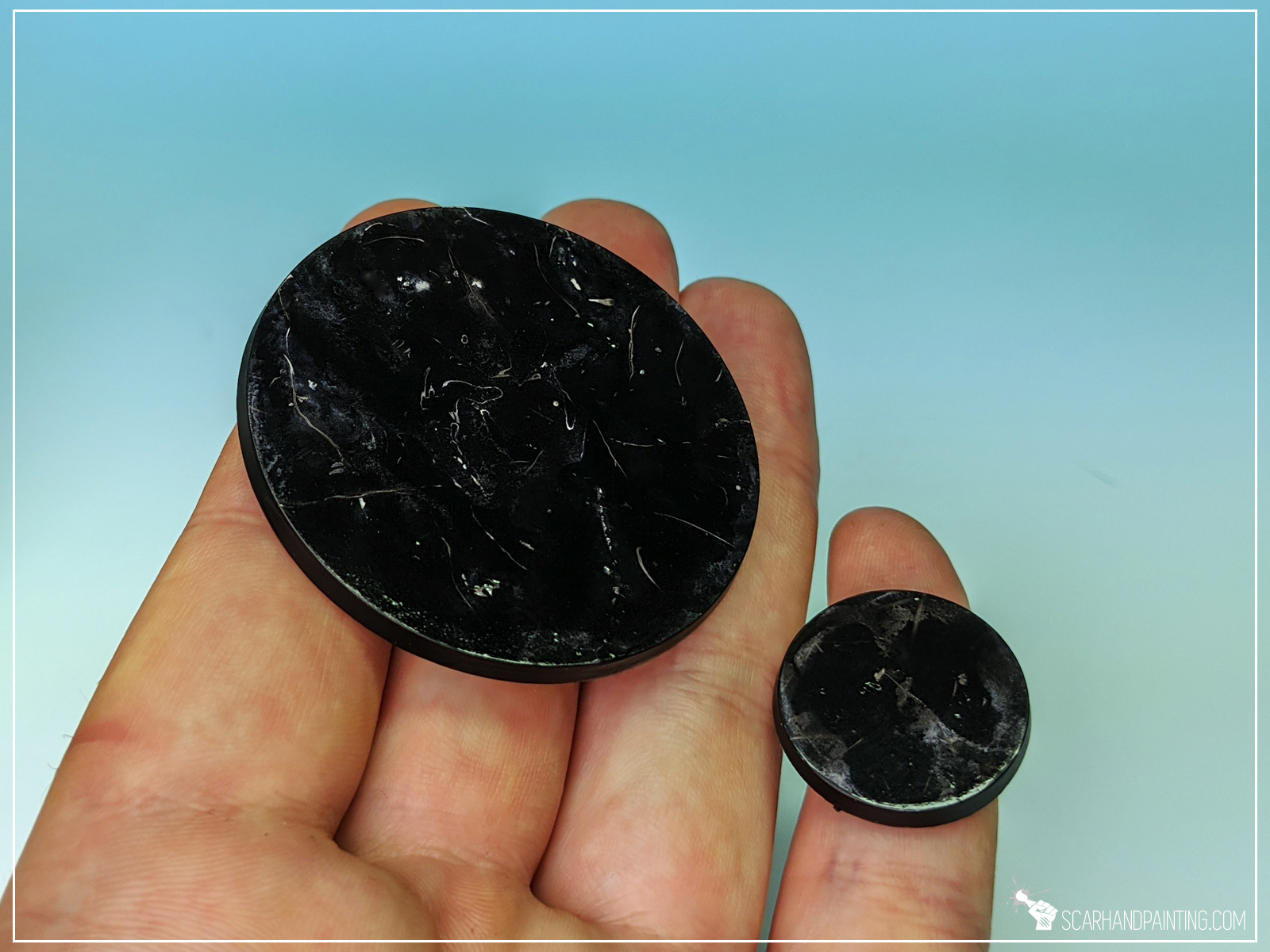
This bonus method is much simpler and I think it had a lot of potential, still I stumbled upon it by accident just fed ways ago and hadn’t had time to test it thoroughly. Here’s basics:
Done! Seems mind blowing? Surely is. Have I done this right? Totally no 😛 White spots are too large, but as mentioned – there’s potential in the method and at some point I will find a way to make it work.
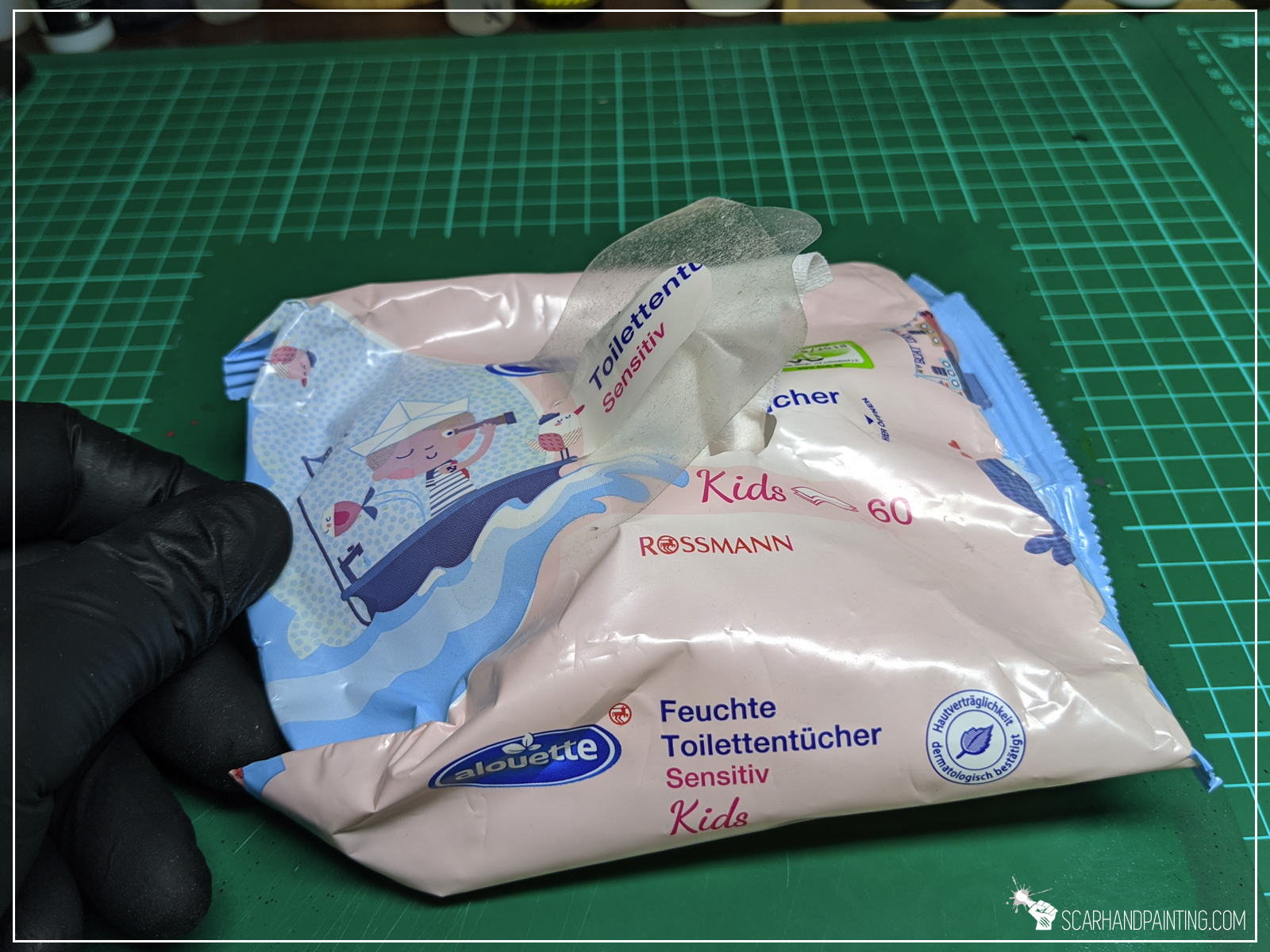




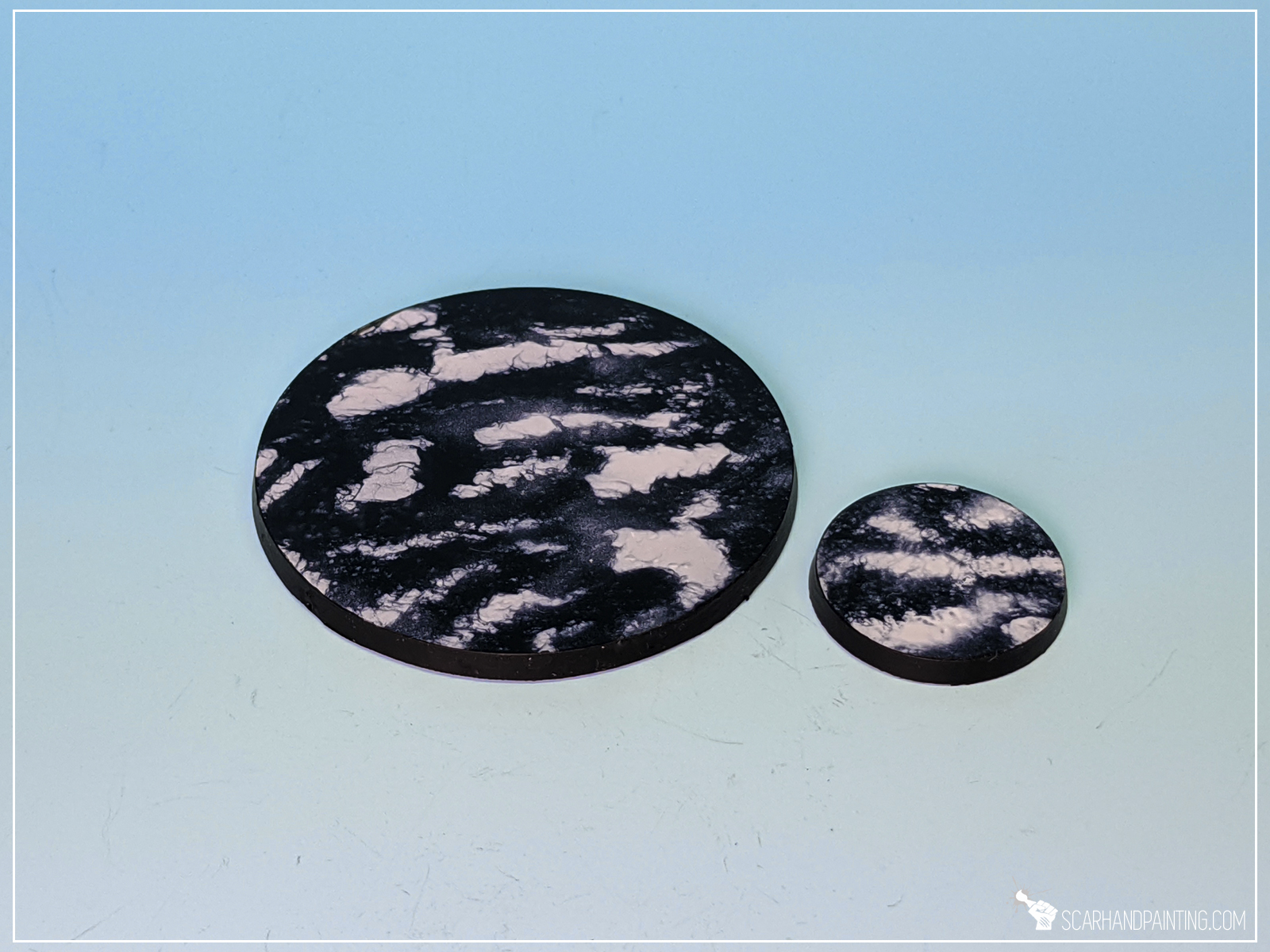
Note from the author: I hope you enjoyed this article. Be sure to let me know what you think in the comments or at my facebook. If you ever use the tutorial – please tag me at facebook or send pics through Line app to scarhandpainting, so I can enjoy your work 😉

Gamers Grass – a Portuguese company focusing on delivering a wide range of basing accessories. Formed in 2015 by a group of hobbyists, Gamers Grass brought many interesting products to the market. Alongside well established Tufts, Flowers and Shrubs, their range consists of ready to use Bases, but also basing Bitz and very colorful Alien Tufts. It was the latter that drew my attention to Gamers Grass, which instantly resulted in some shopping.
Now it’s a few days after the delivery. I have thoroughly tested a range of Tufts/Shrubs/Flowers and done some research, hence I am ready to share my opinion with a wider public.
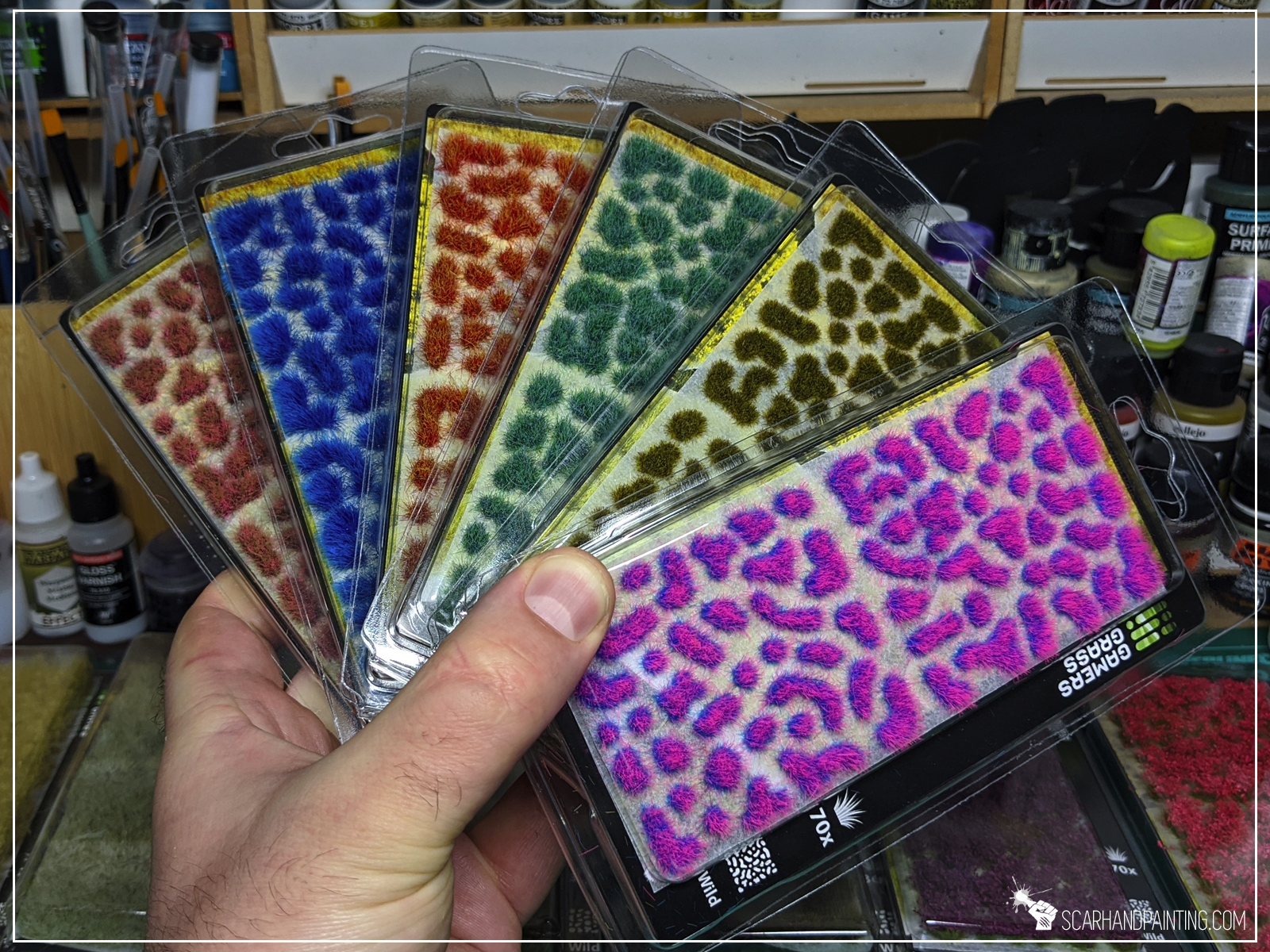
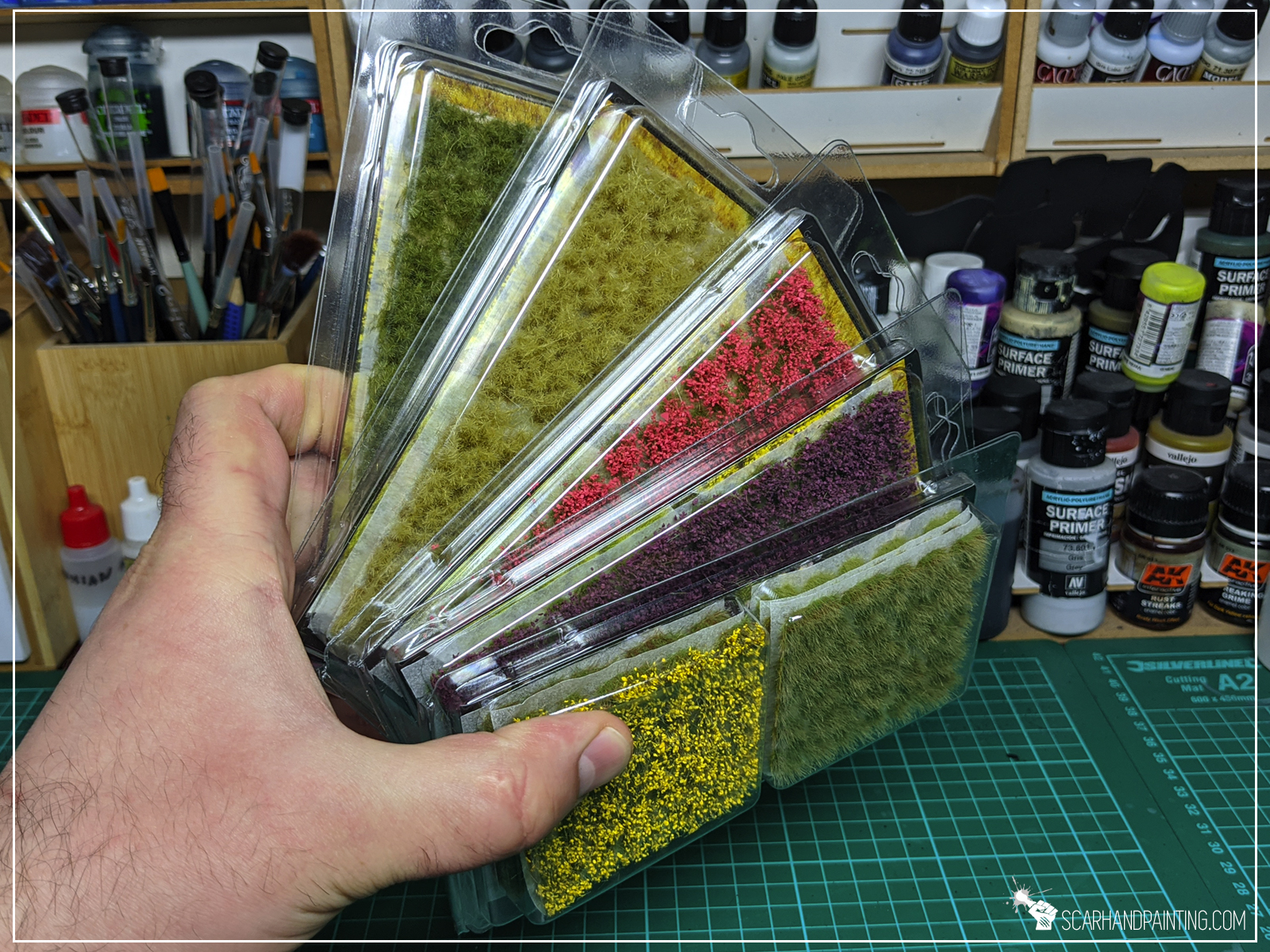

As a full time miniatures painter I cannot allow myself to use products of questionable quality. This is why quality is the first thing I look out for when purchasing hobby related items.
That being said Gamers Grass Tufts and Flowers strike me as well thought through, top quality products. They are mostly precisely shaped, with near to none stray hair. Each Tuft has a bit of adhesive at the bottom and can be applied straight from the sheet. Adhesive strength is comparable with Army Painter’s tufts, so less “goo” than for example Paint Forge’s and GW’s, but perfect for my personal taste. I apply some Super Glue either way.
Most importantly, except just just a few, the Gamer’s Grass Tufts hold their shape firmly. Not much hair fell off when I was removing the tufts from the sheets and applied them onto the bases.
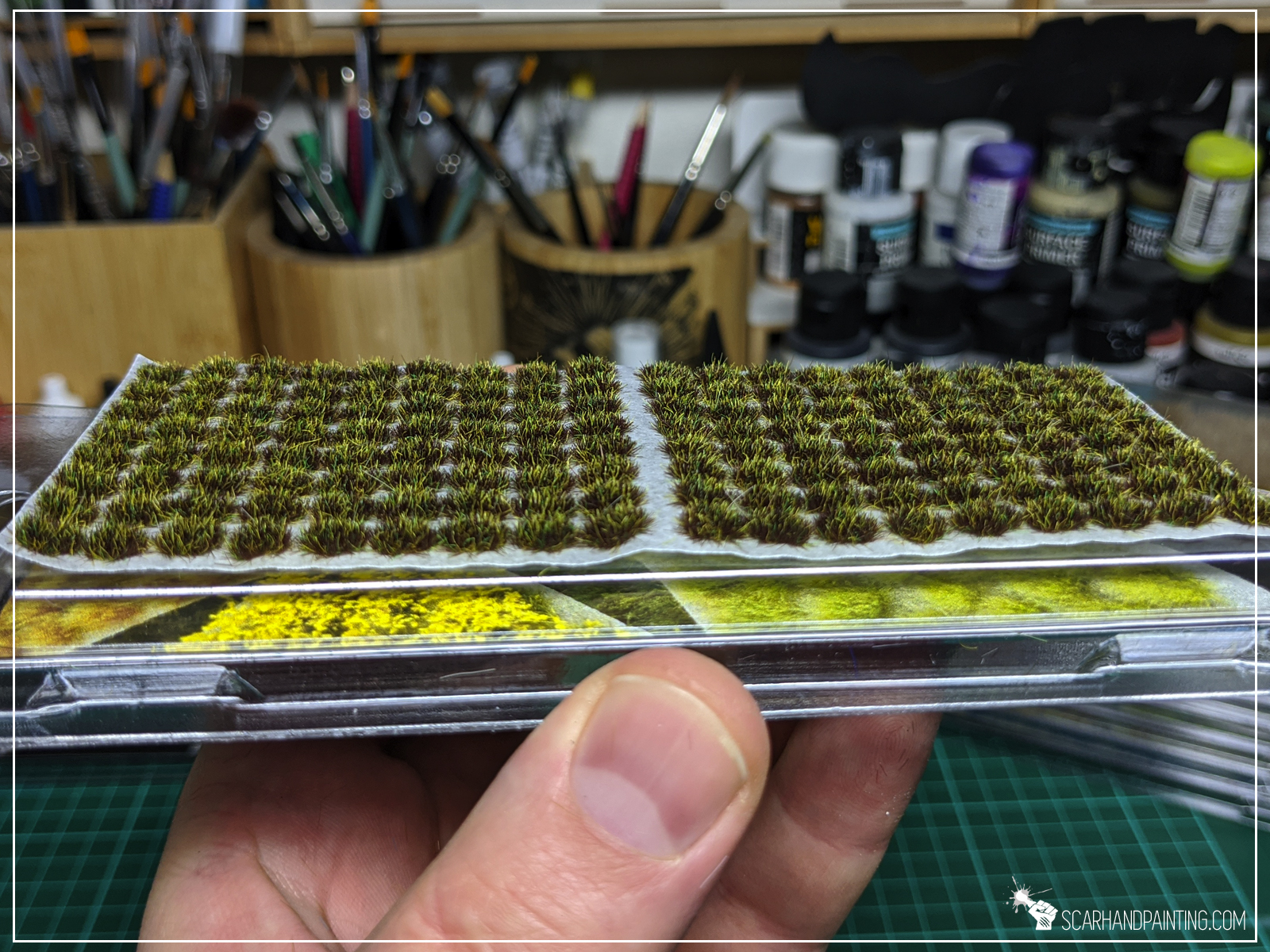
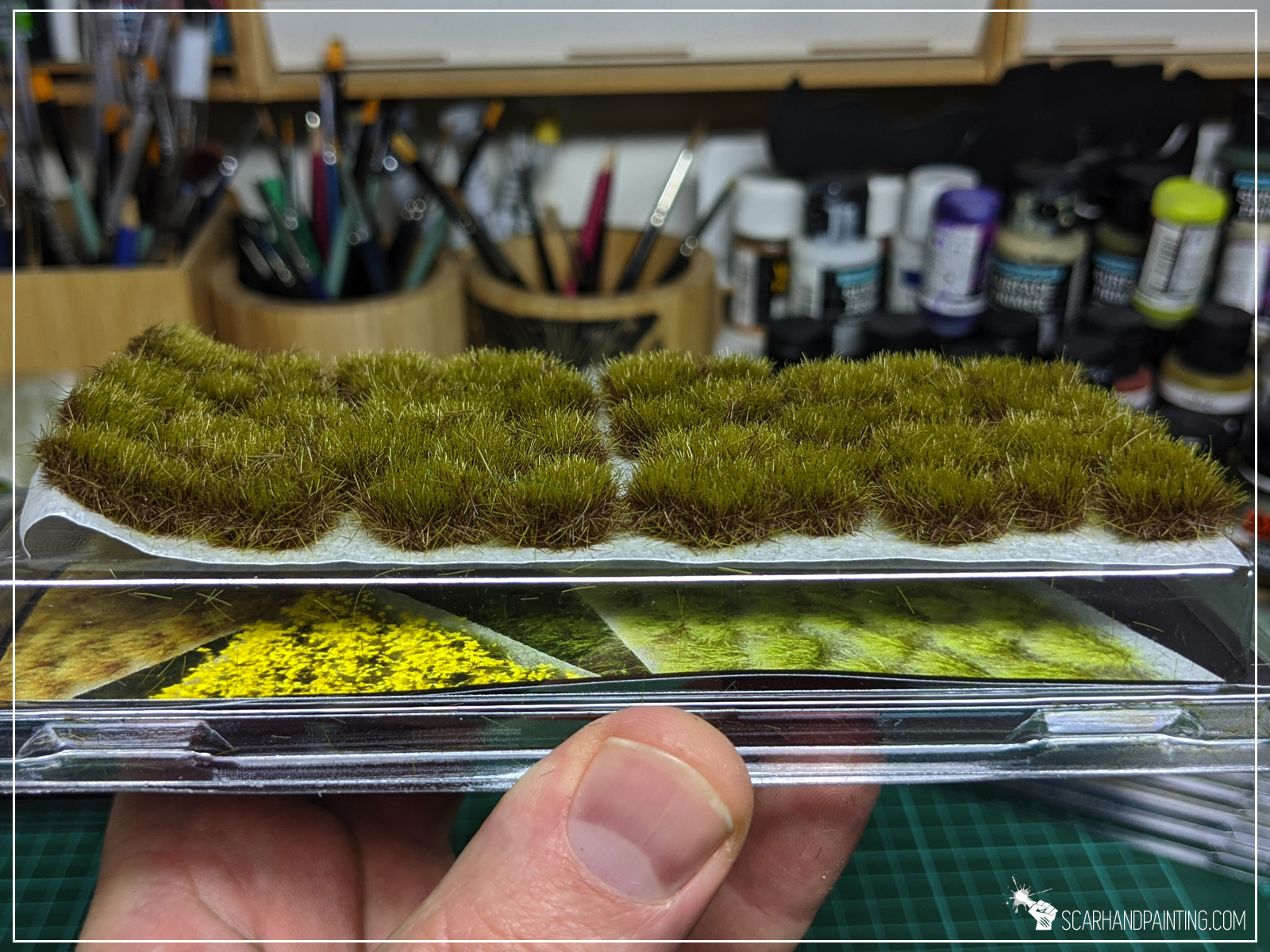
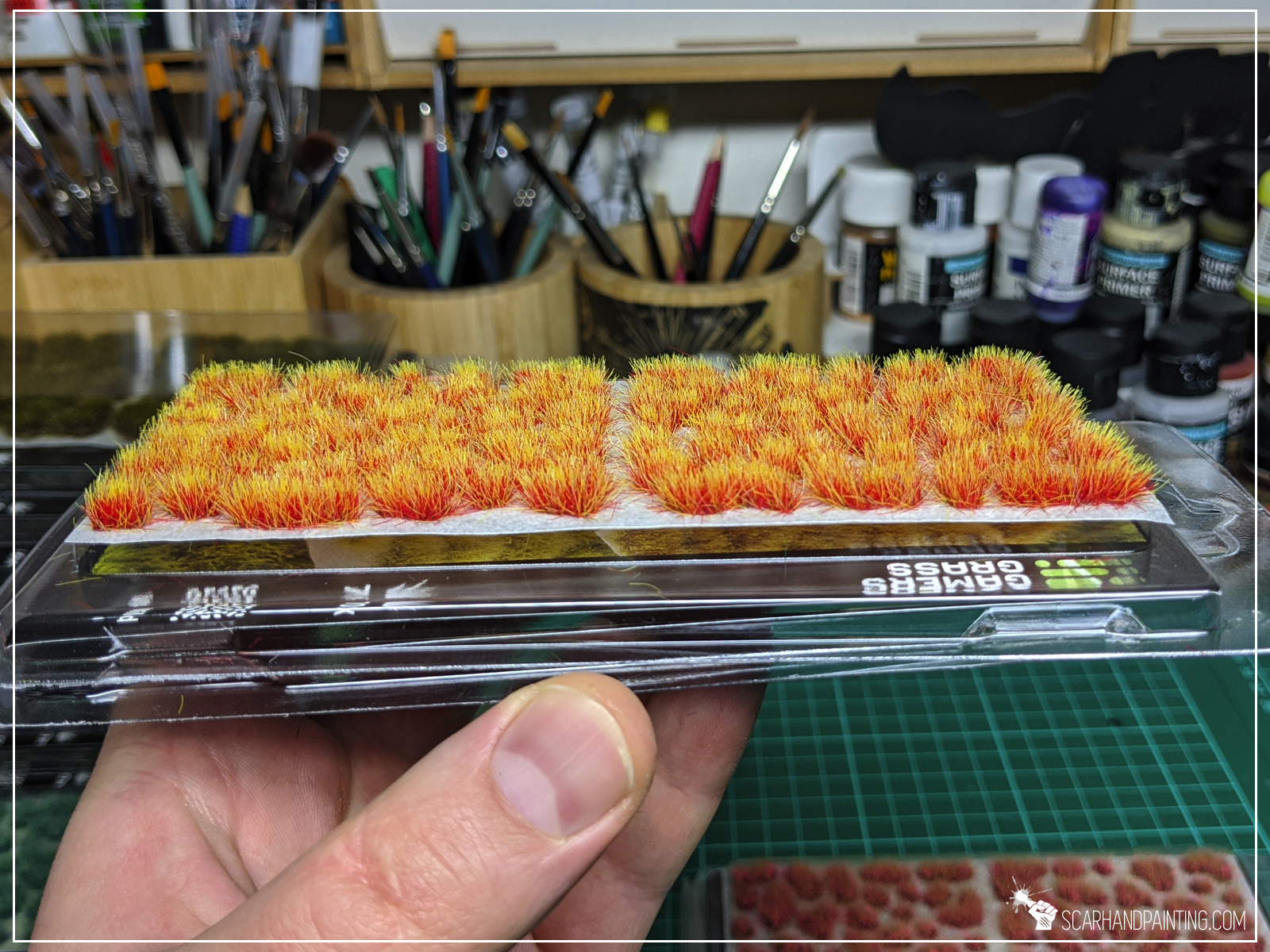
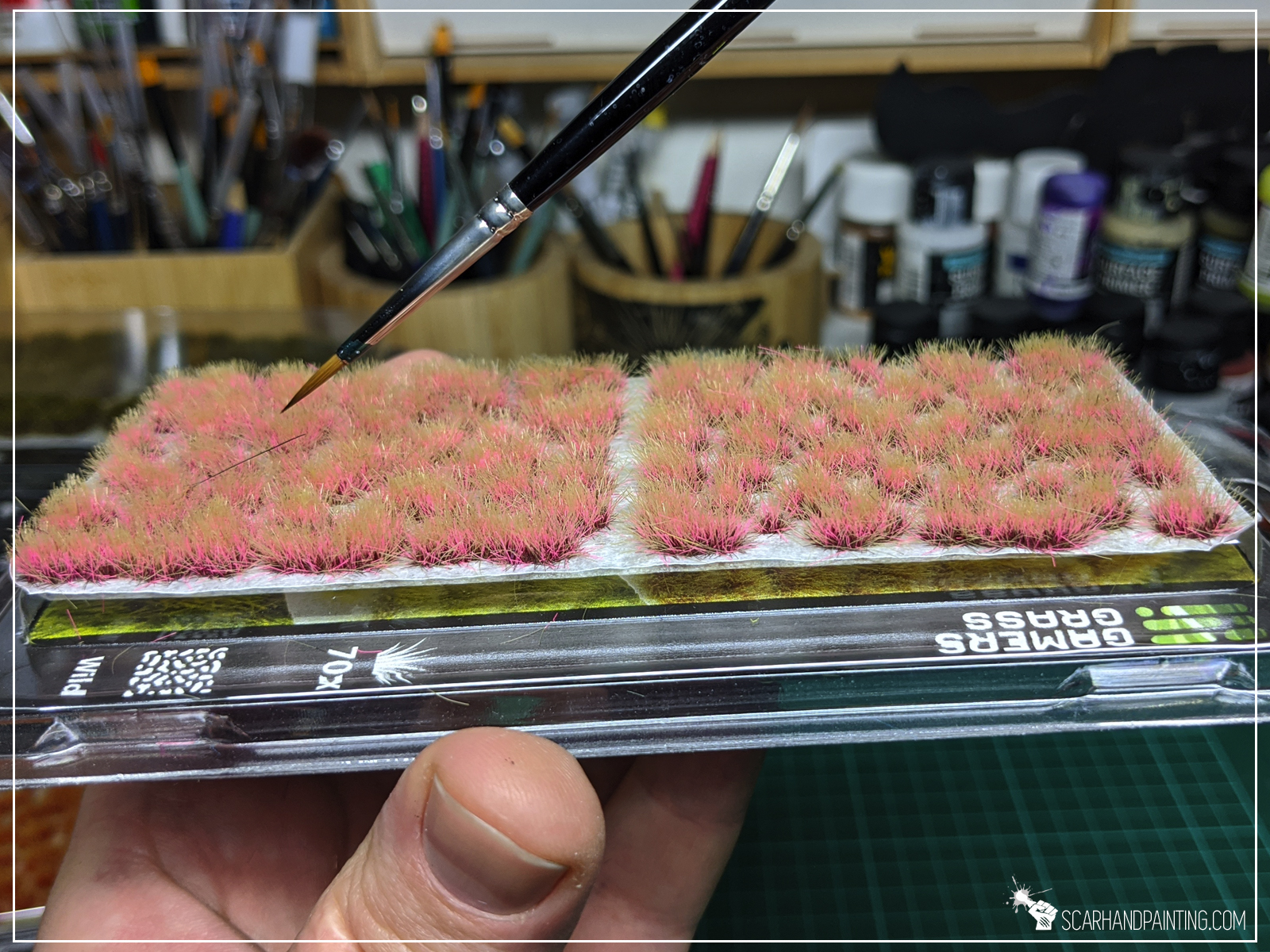
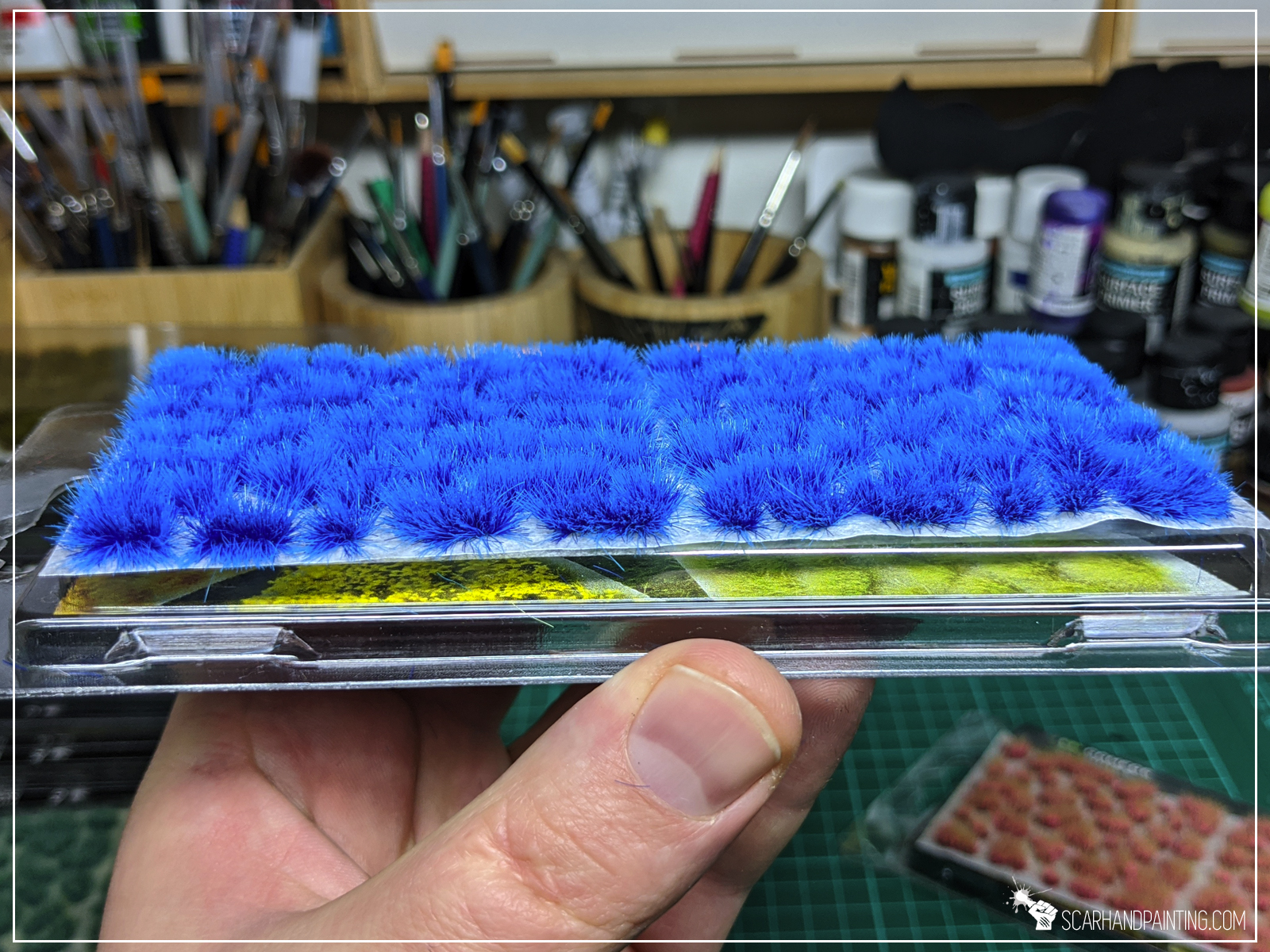
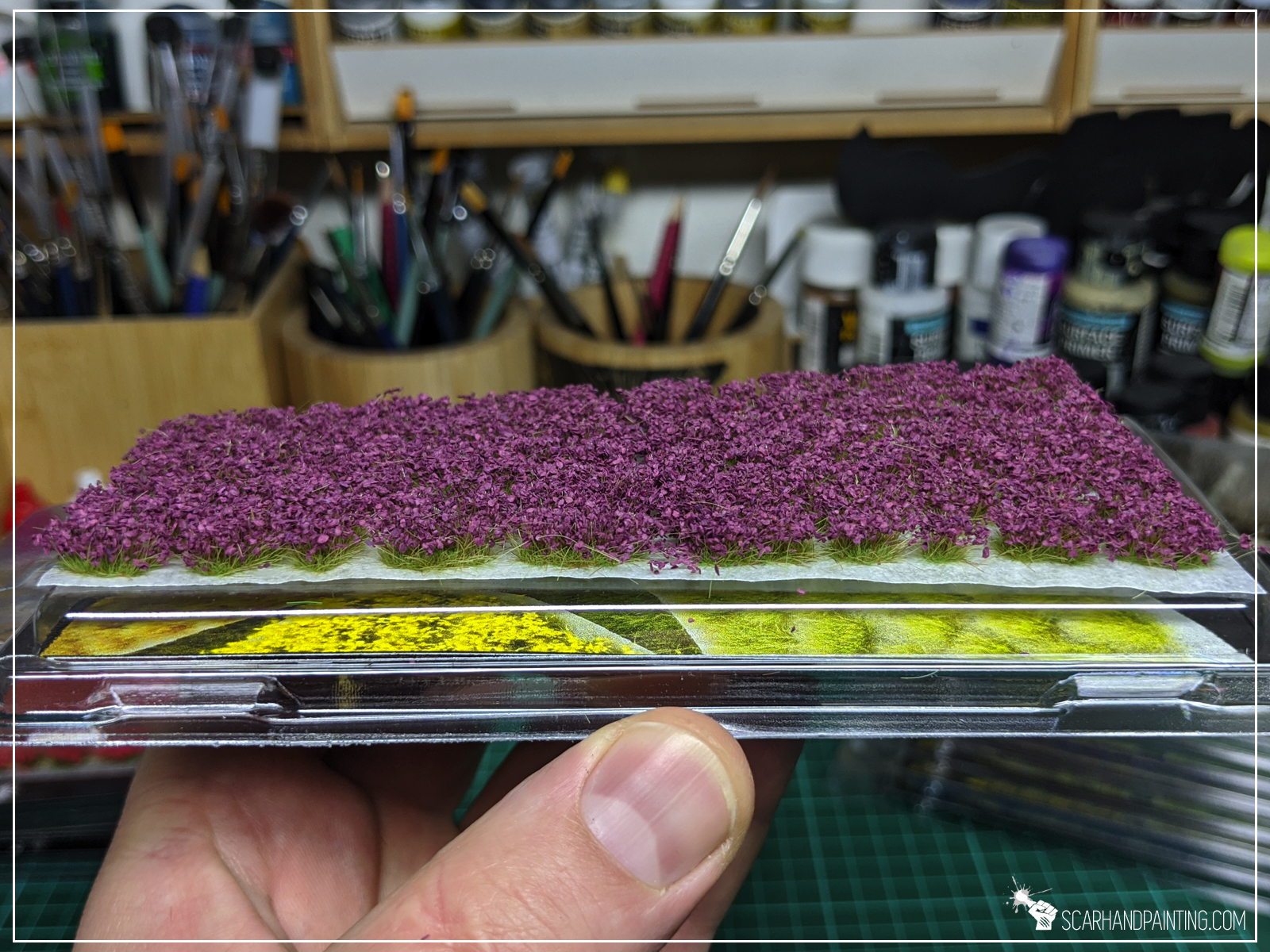
Visually Gamers Grass Tufts look stunning. Apart from classic tufts, there’s Alien and Spikey series, which are like nothing I’ve seen previously in the market. All tufts are fluffy and solid and thanks to a wide variety of colors and shapes – they turn bases into little pieces of awesome.
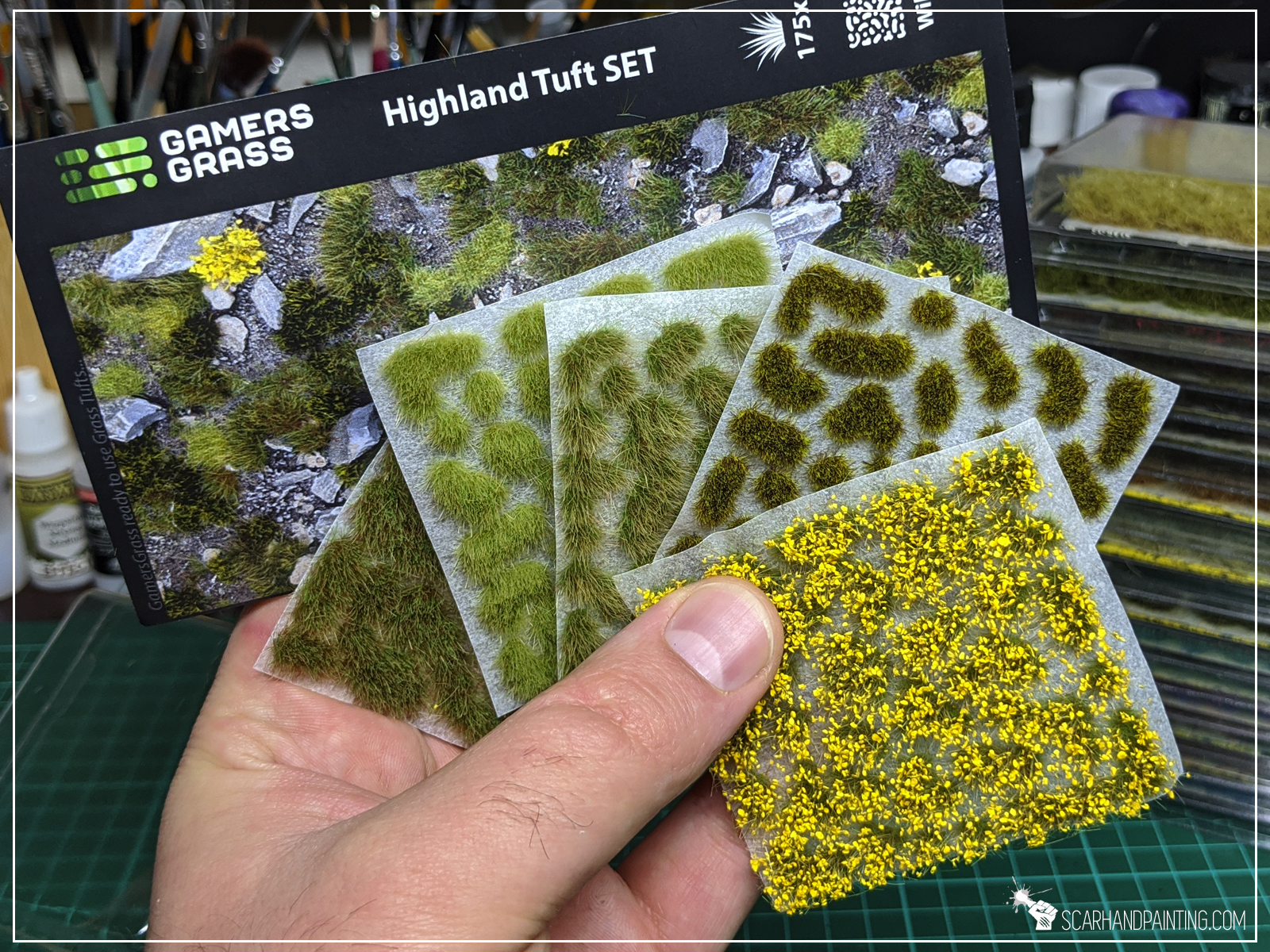
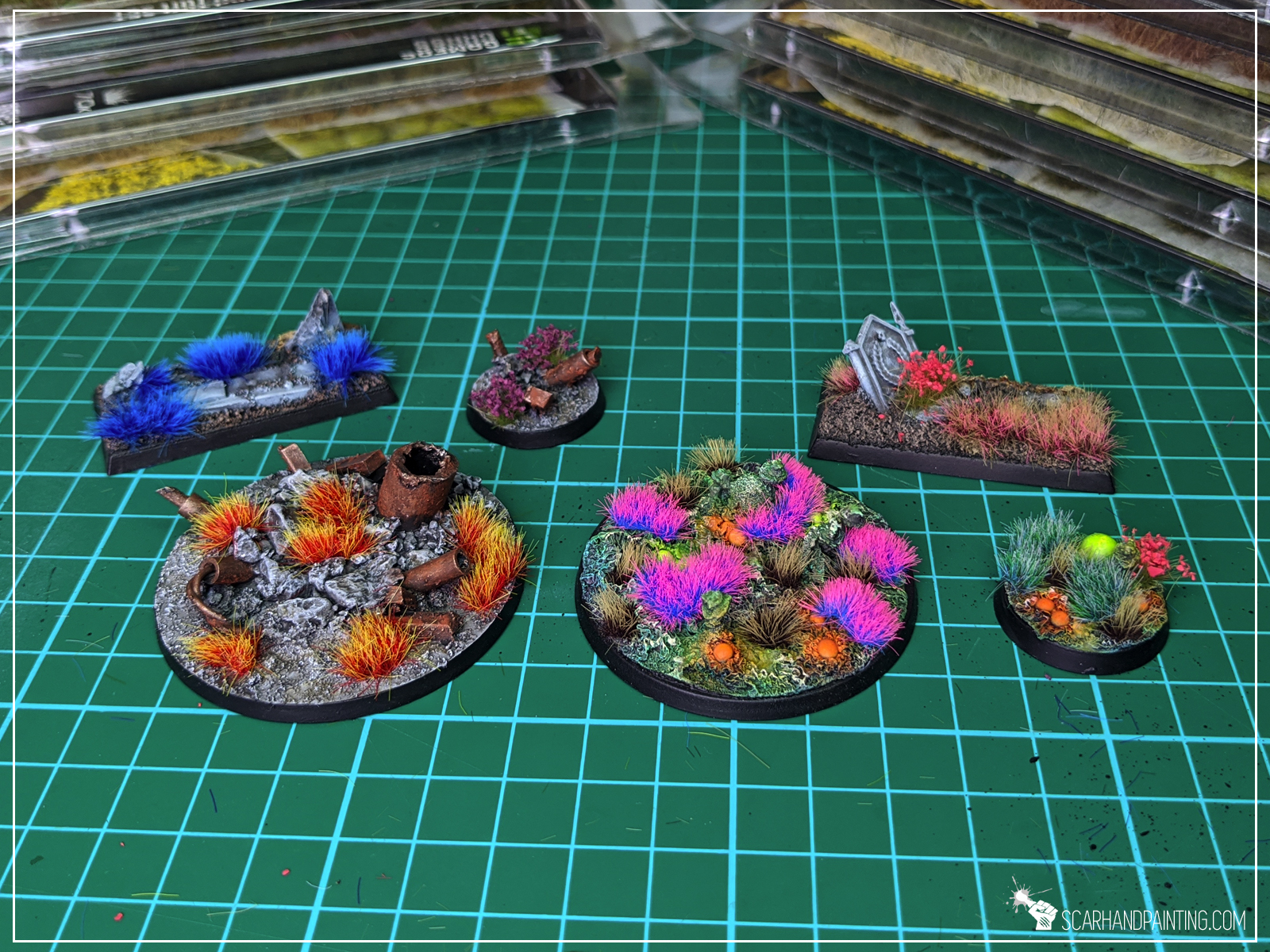
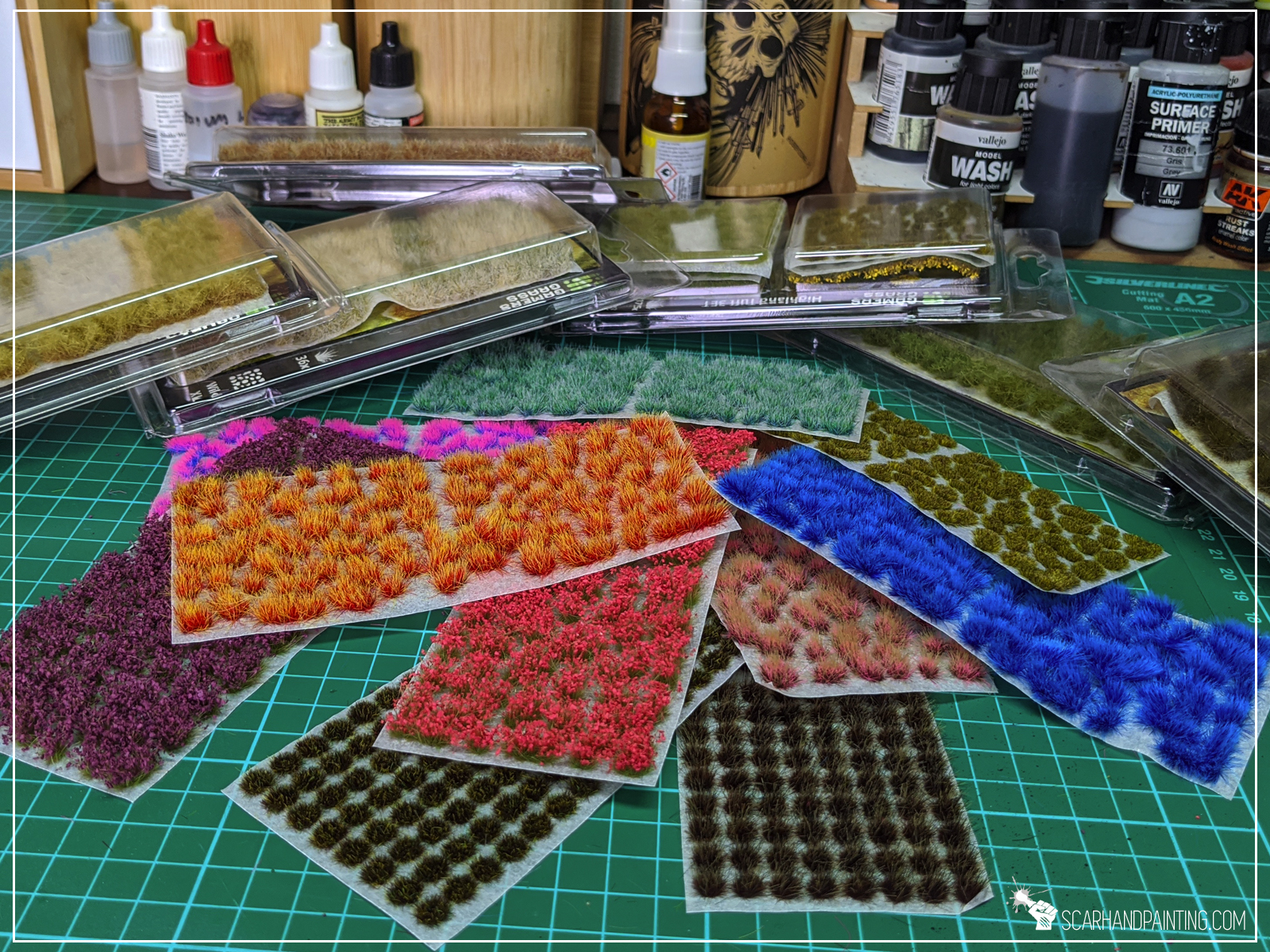
Most Gamers Grass Tufts are very user friendly. Separated on the sheet by a clear line, easy to pick and apply. Once picked, they hold their shape. I could go on, but let’s just say they are a joy to work with.

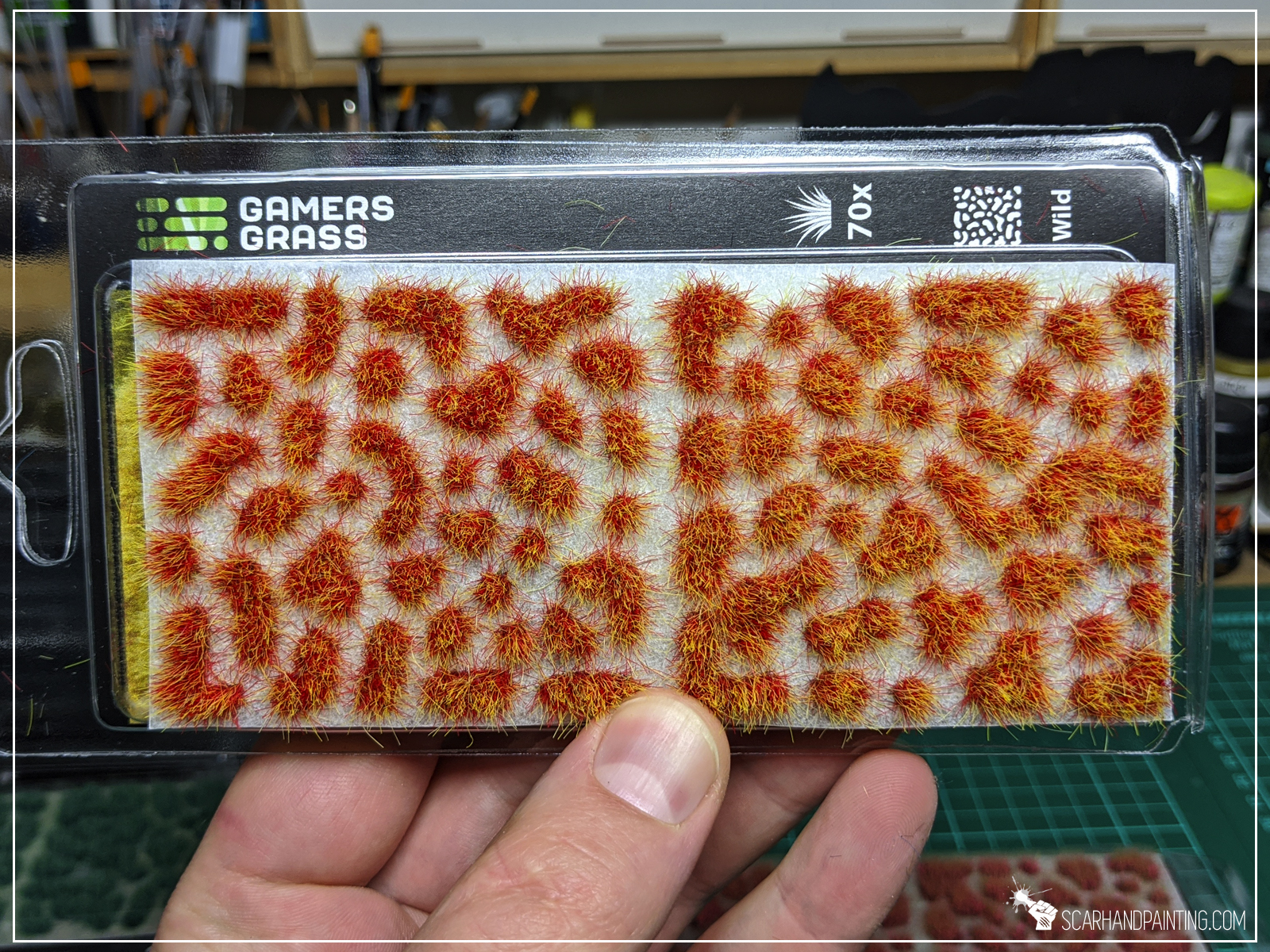
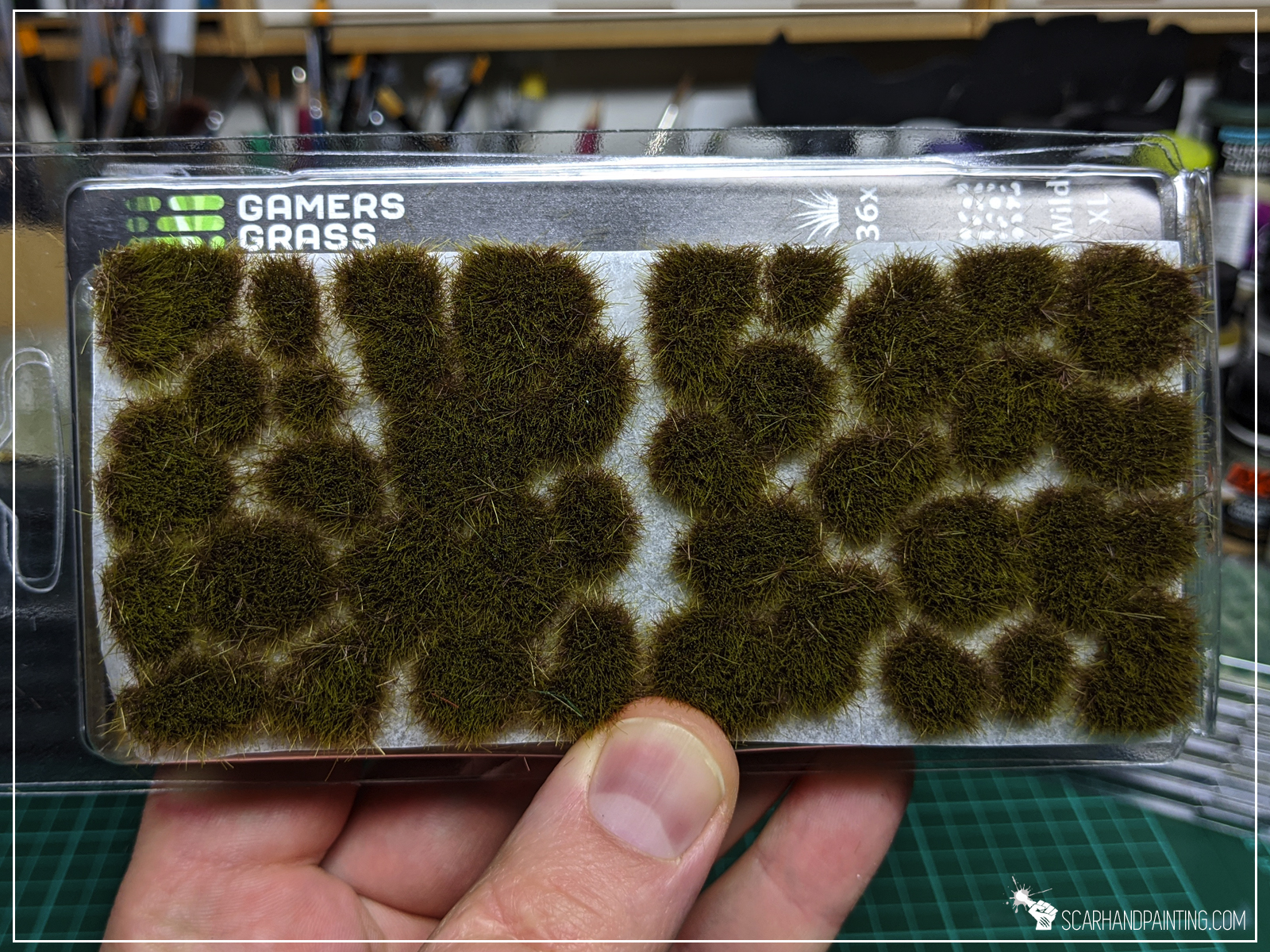
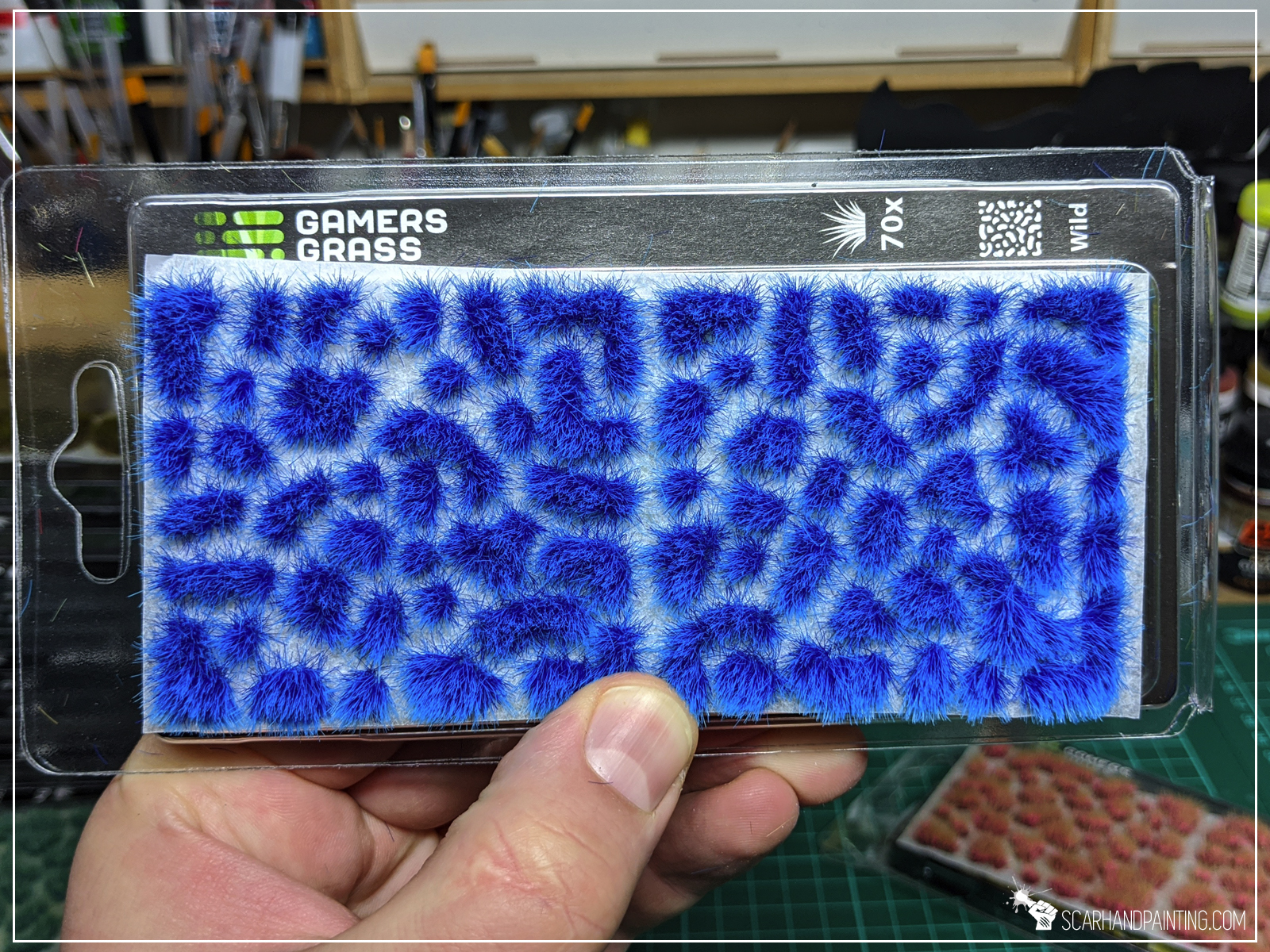
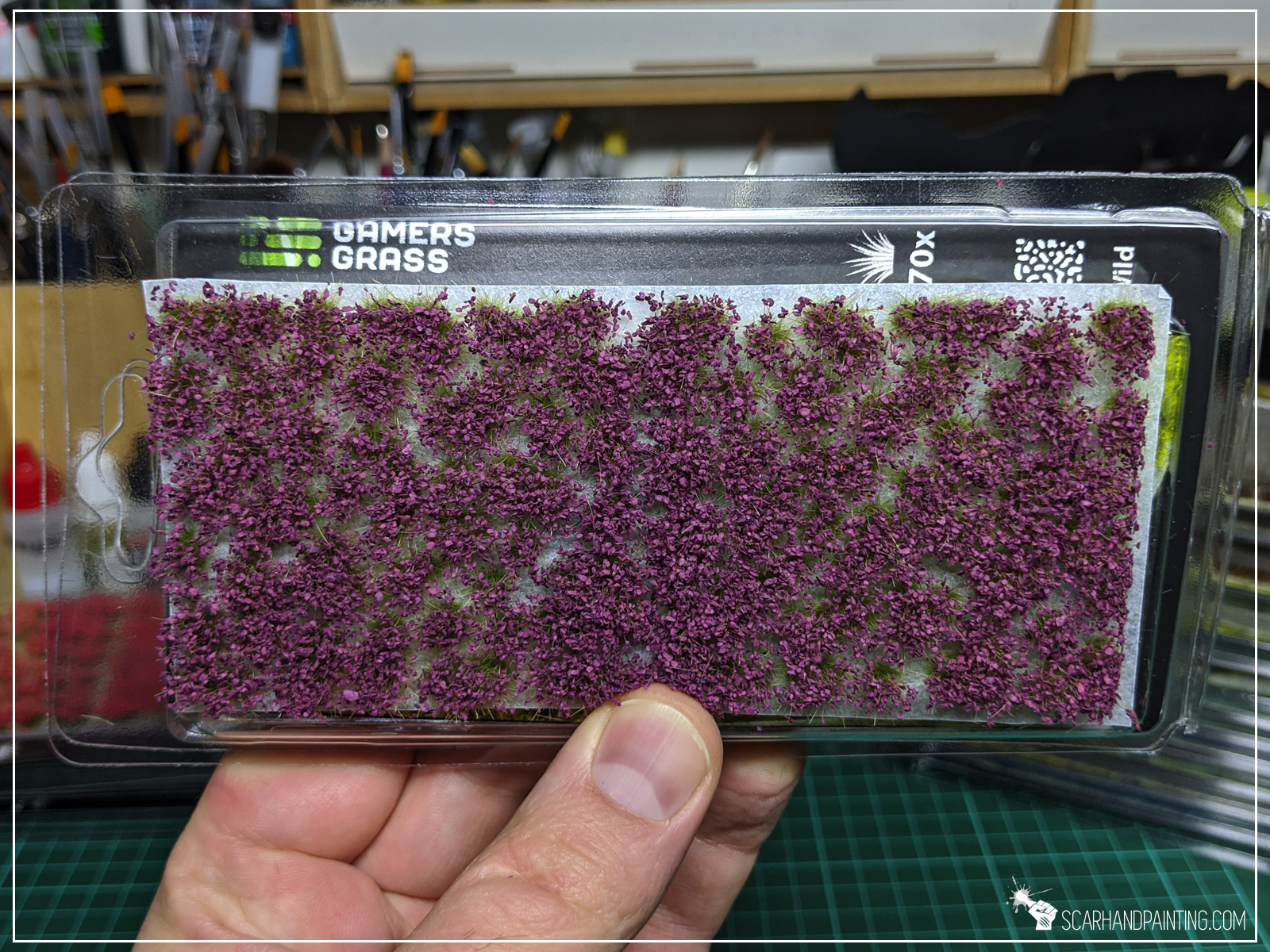
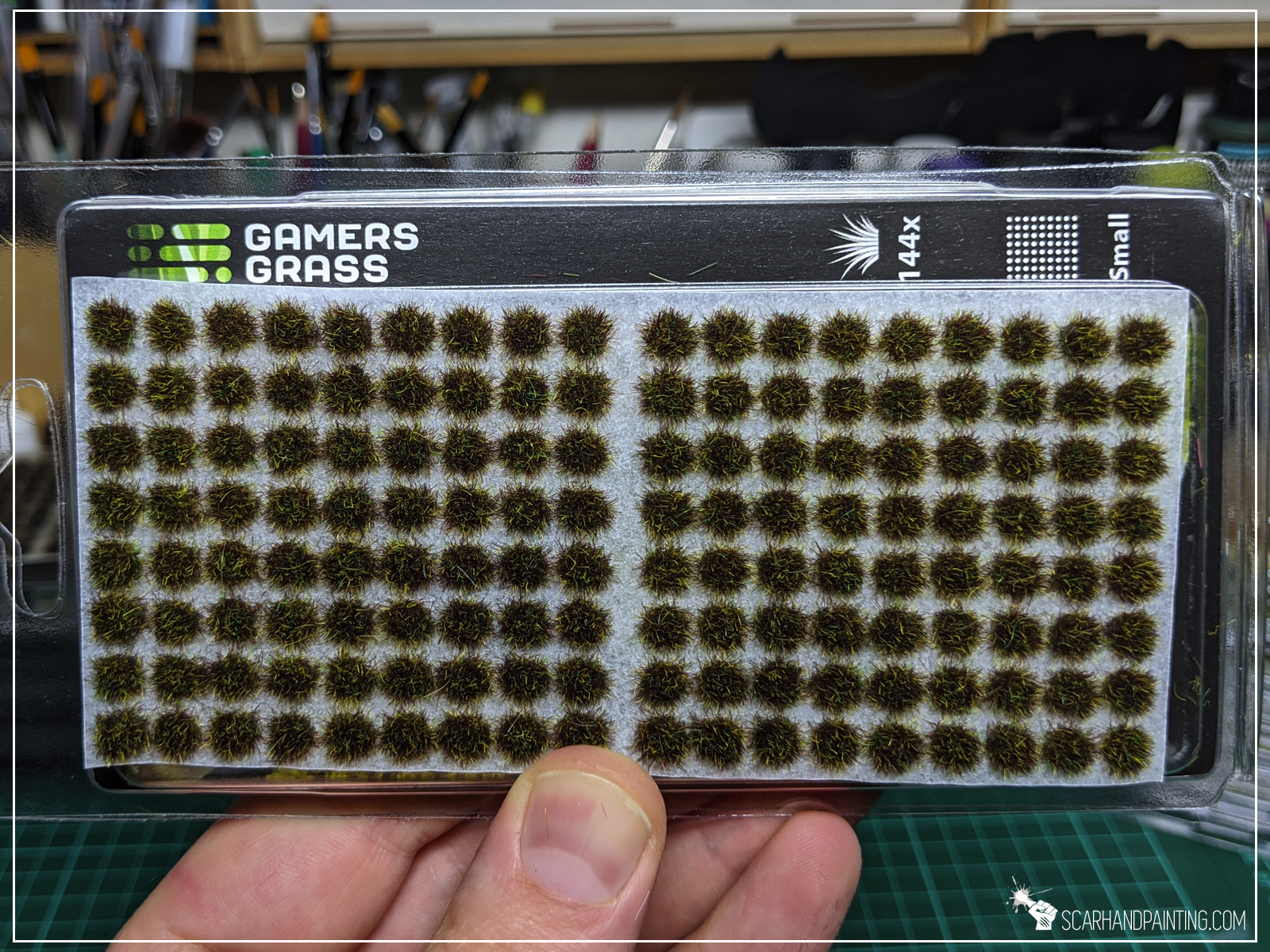
Like with all product series not everything is perfect. Amongst the batch I purchased there are two products that do not entirely hold up to the standards described above.
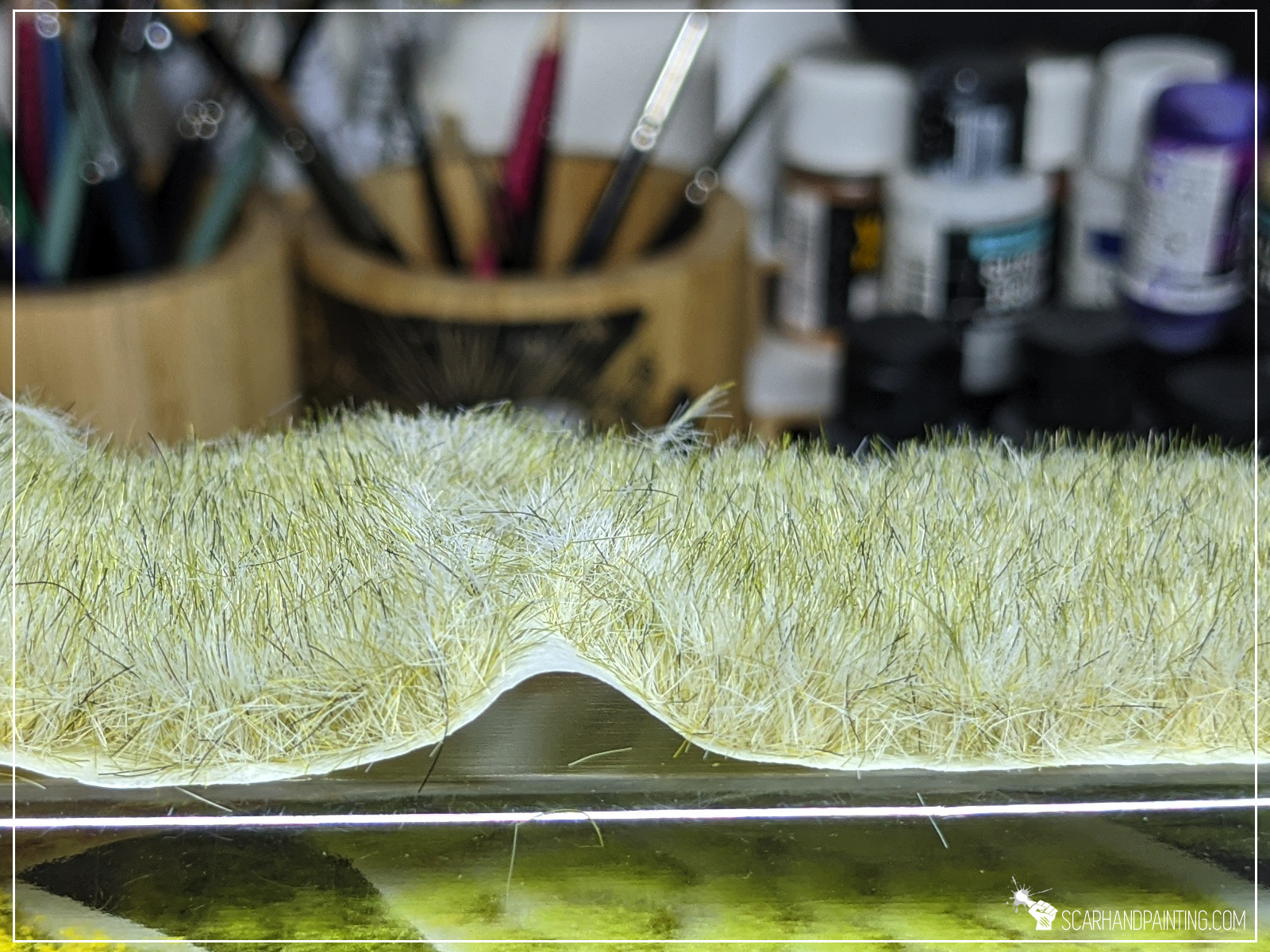
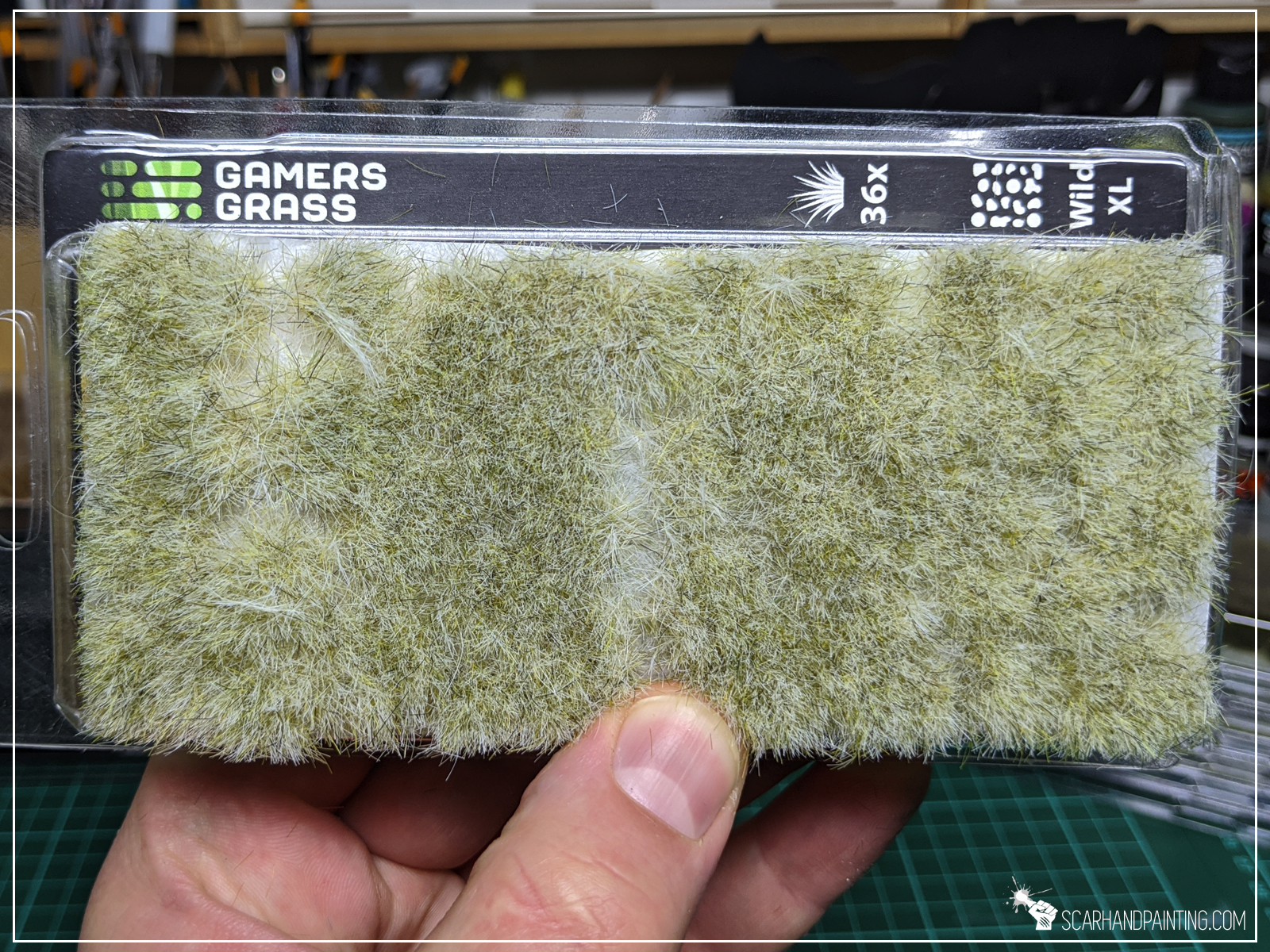
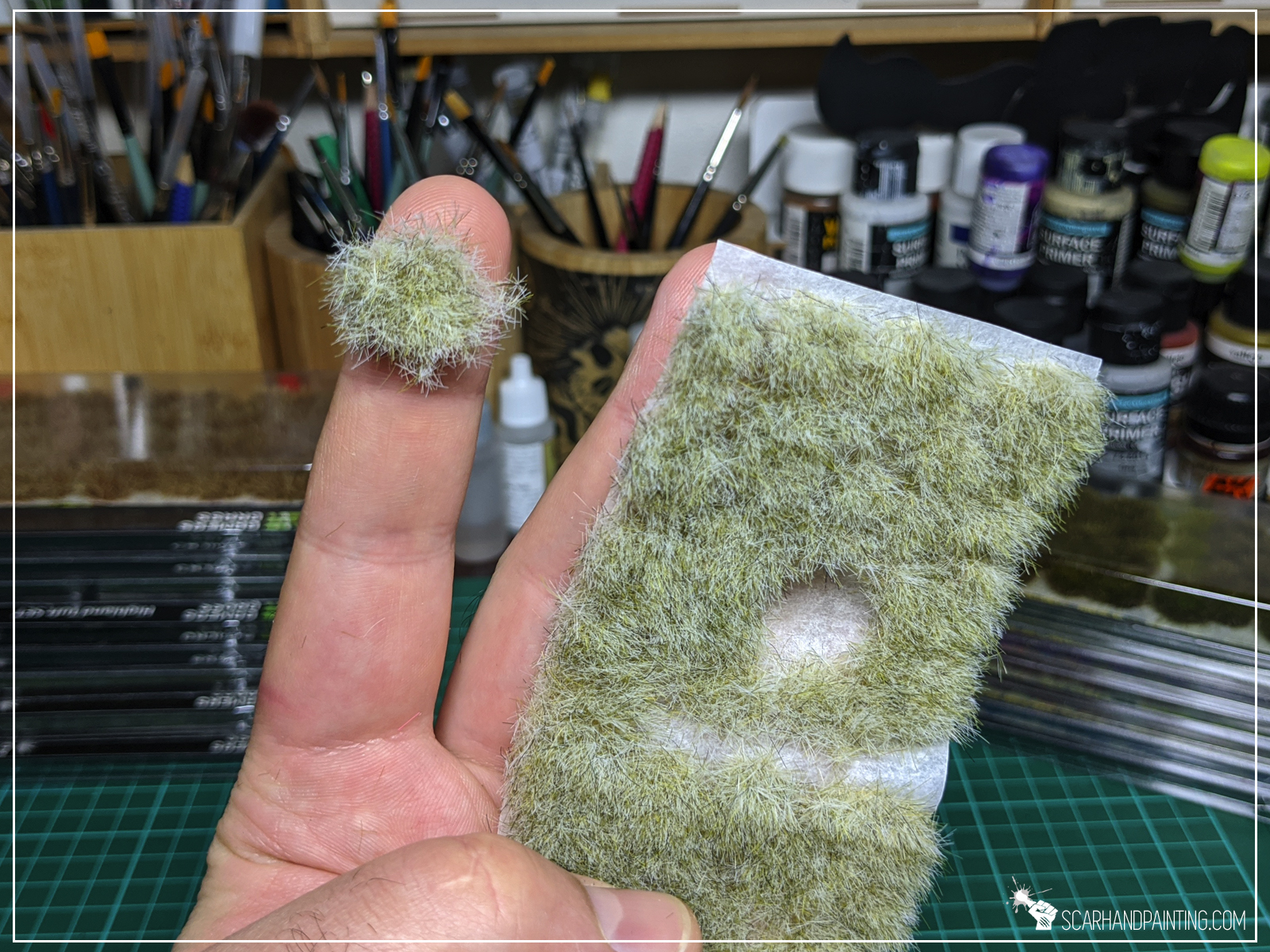
12mm Wild Winter Tuft is a bit too messy for my tastes. There’s not enough separation between particular tufts and there’s a lot of “leftover” coming off the tufts during use. It looks pretty dope once separated from the sheet, still I had issues separating particular tufts from one another.
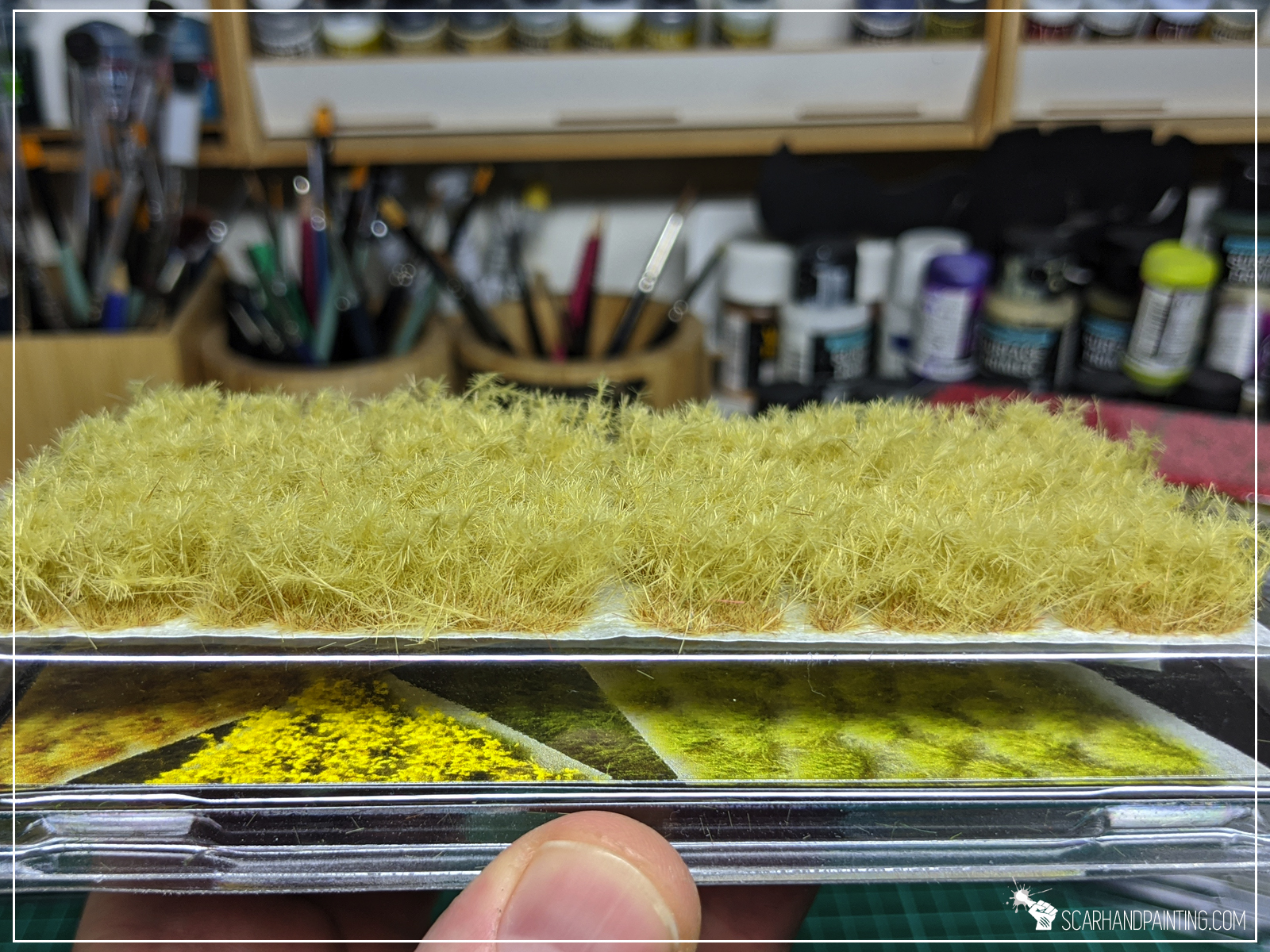
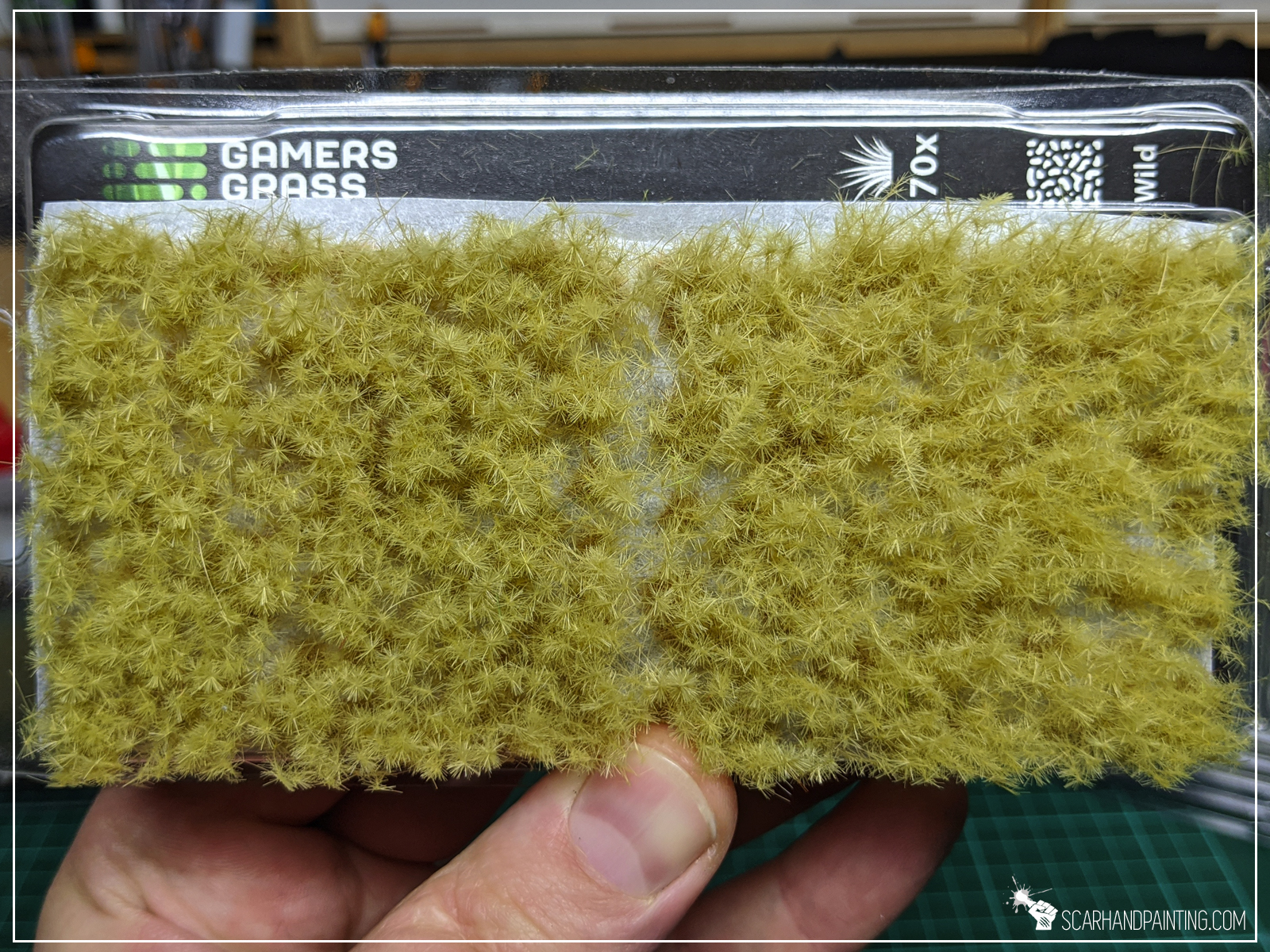

Similarly Wild Spikey Green and Wild Spikey Beige Tufts are very messy to work with. Whereas they look insanely cool, it is very difficult to remove them from the sheet intact. They lose a lot of strands in the process.
Fortunately these issues don’t translate to the entire range, which for the most part is full of top quality, high end products.
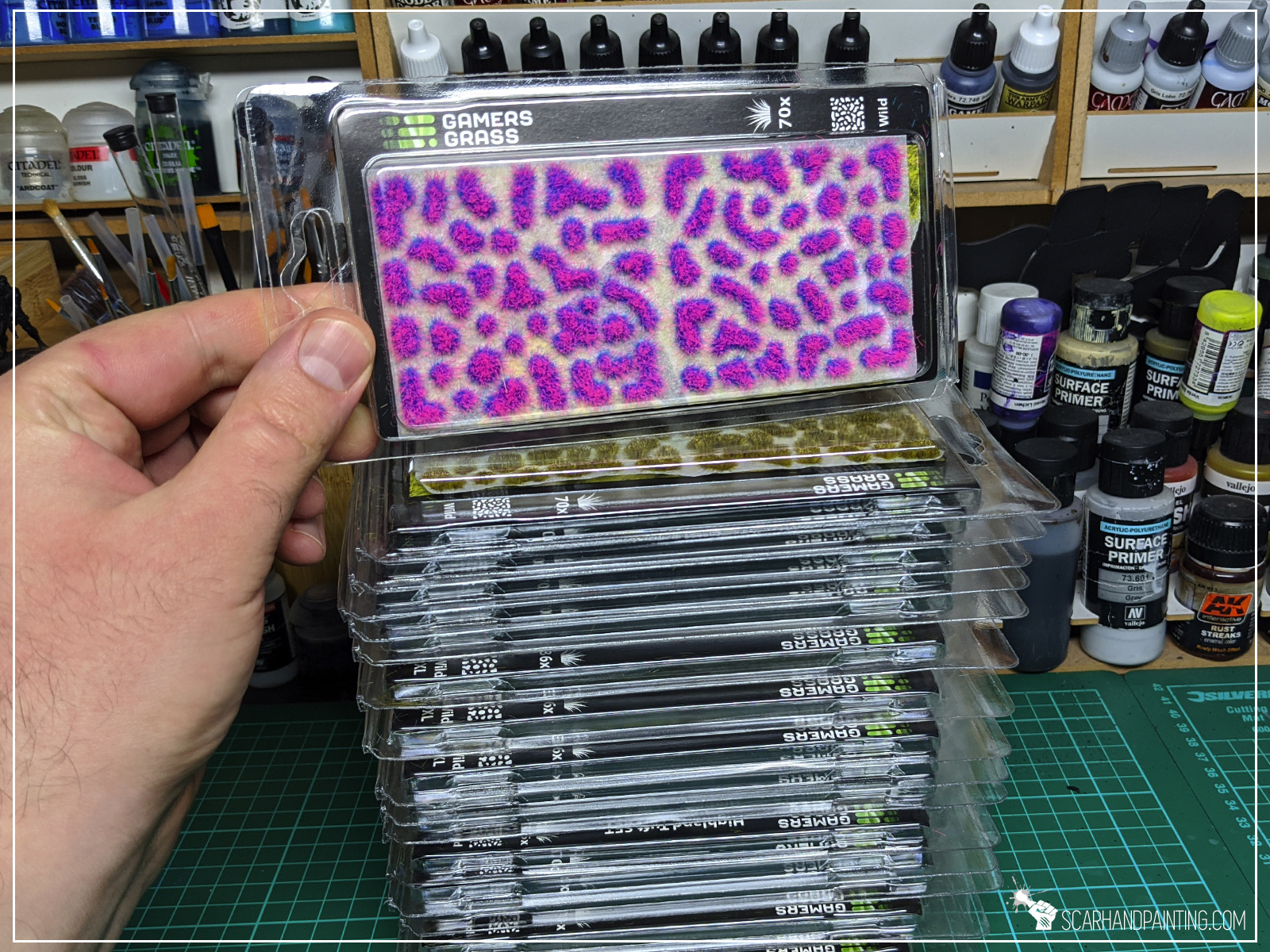
Time to focus on the price. I’ve done some math comparing the price of standard and “Wild” tufts from Gamers Grass, Games Workshop and Army Painter. Here’s where I’ve landed:
Easy to say that when it comes to price Gamers Grass beats its competition hard and that is great news!
To summarize, when it comes to professional hobby tufts Gamers Grass is totally in the lead. The vast variety of unprecedented lush colors and types is by itself a good reason to try their offer out. To top it all there’s perfect pricing. Their range as a whole is super solid. I will definitely use these from now on and wholeheartedly recommend you to test it yourself.
You can order through Gamers Grass official store, or try out your luck in a local hobby store. To make things easier for you, Gamers Grass prepared this awesome Store Locator. So what are you waiting for? I invite you to, at the very least, take a peek at their offer.
It’s July 2023 and I am still a huge fan. I have been working with Gamers Grass products for a few years now and throughout that time I got rid of all the alternatives. Gamers Grass is beyond any competition. I just love the quality, visuals and how user friendly their products are, at an affordable price on top.
More importantly the Gamers Grass range is growing. Just recently they sent me a package containing a variety of new releases. Just look at this stuff – it is out of this world!
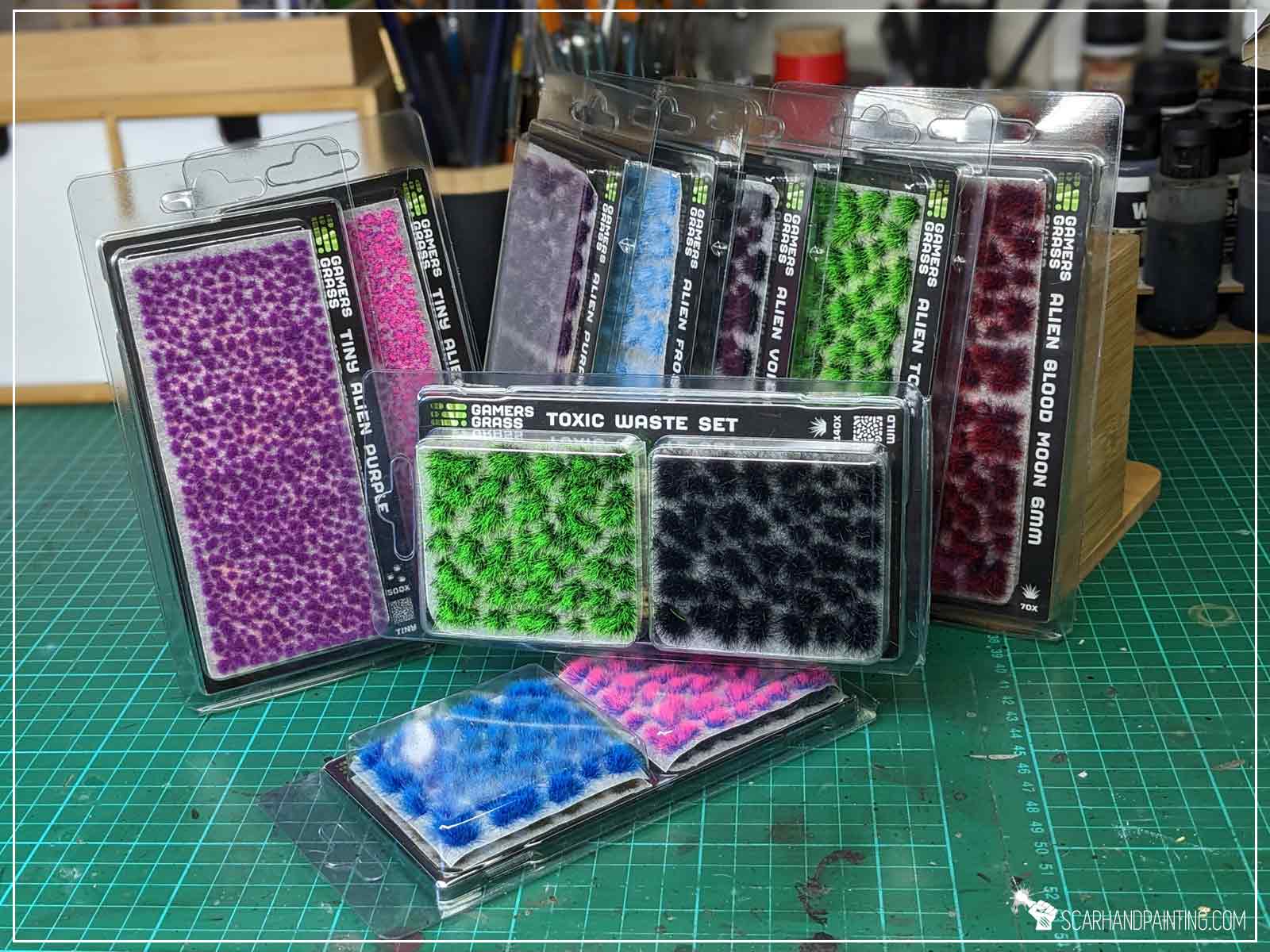
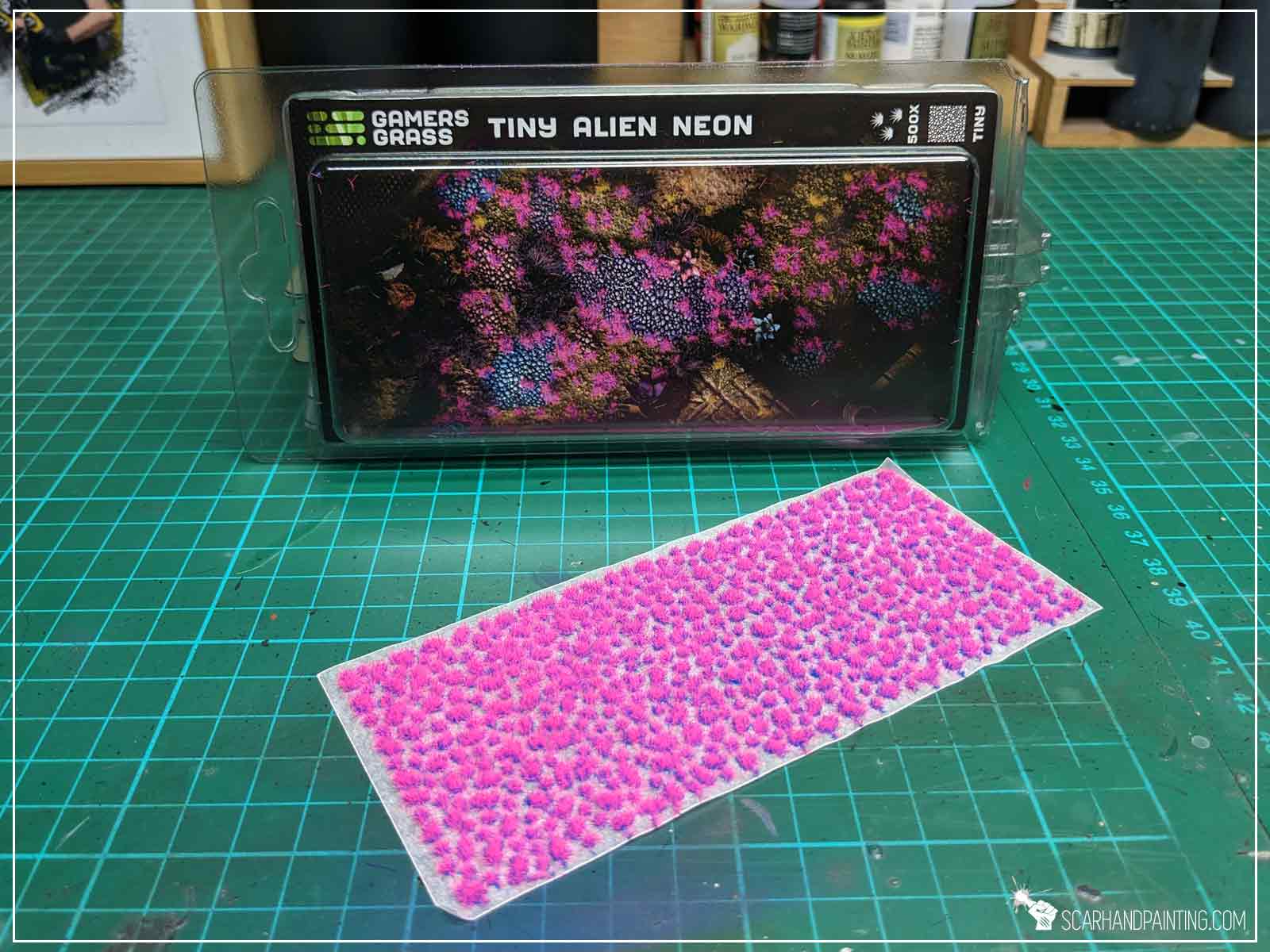
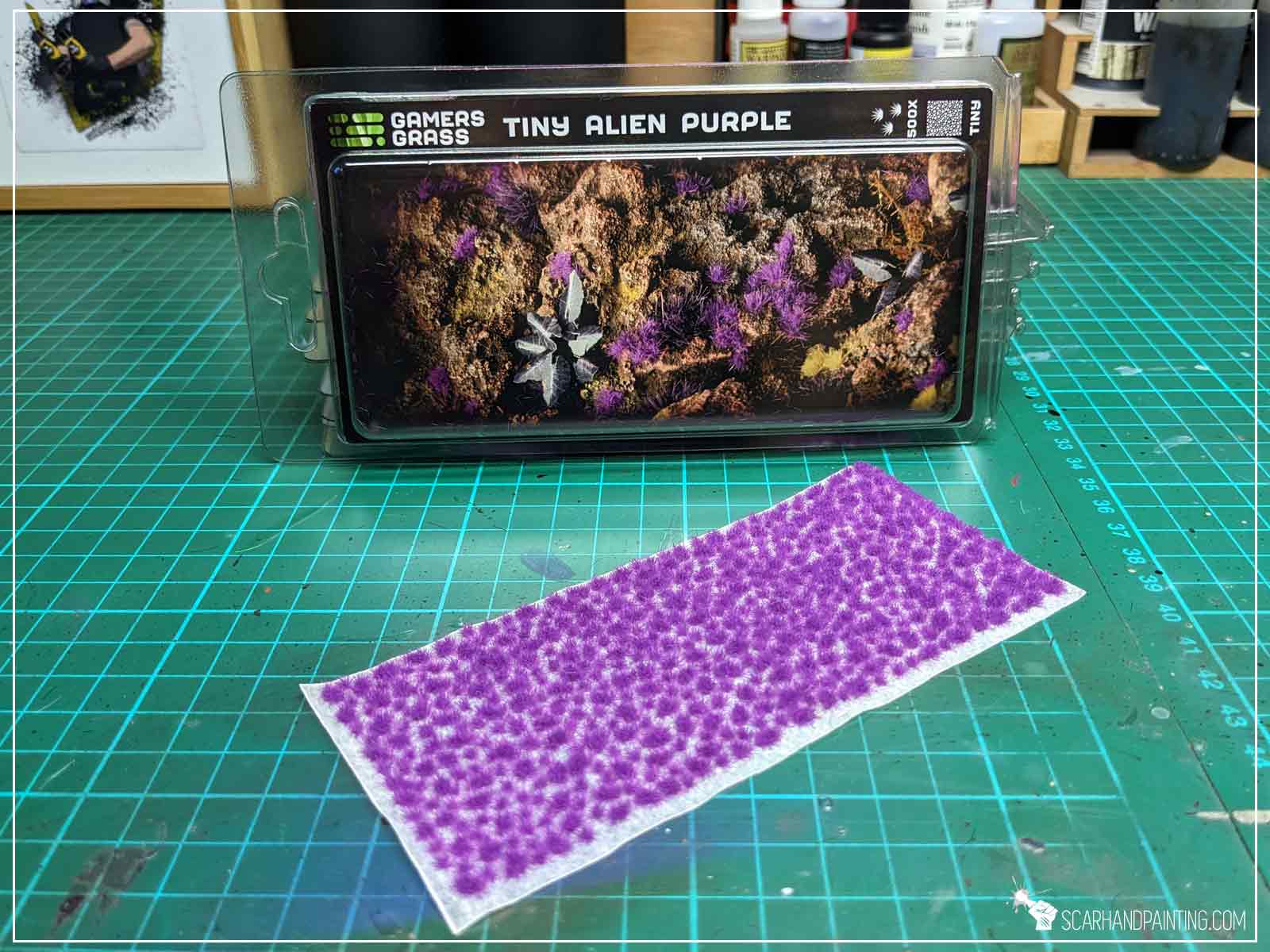
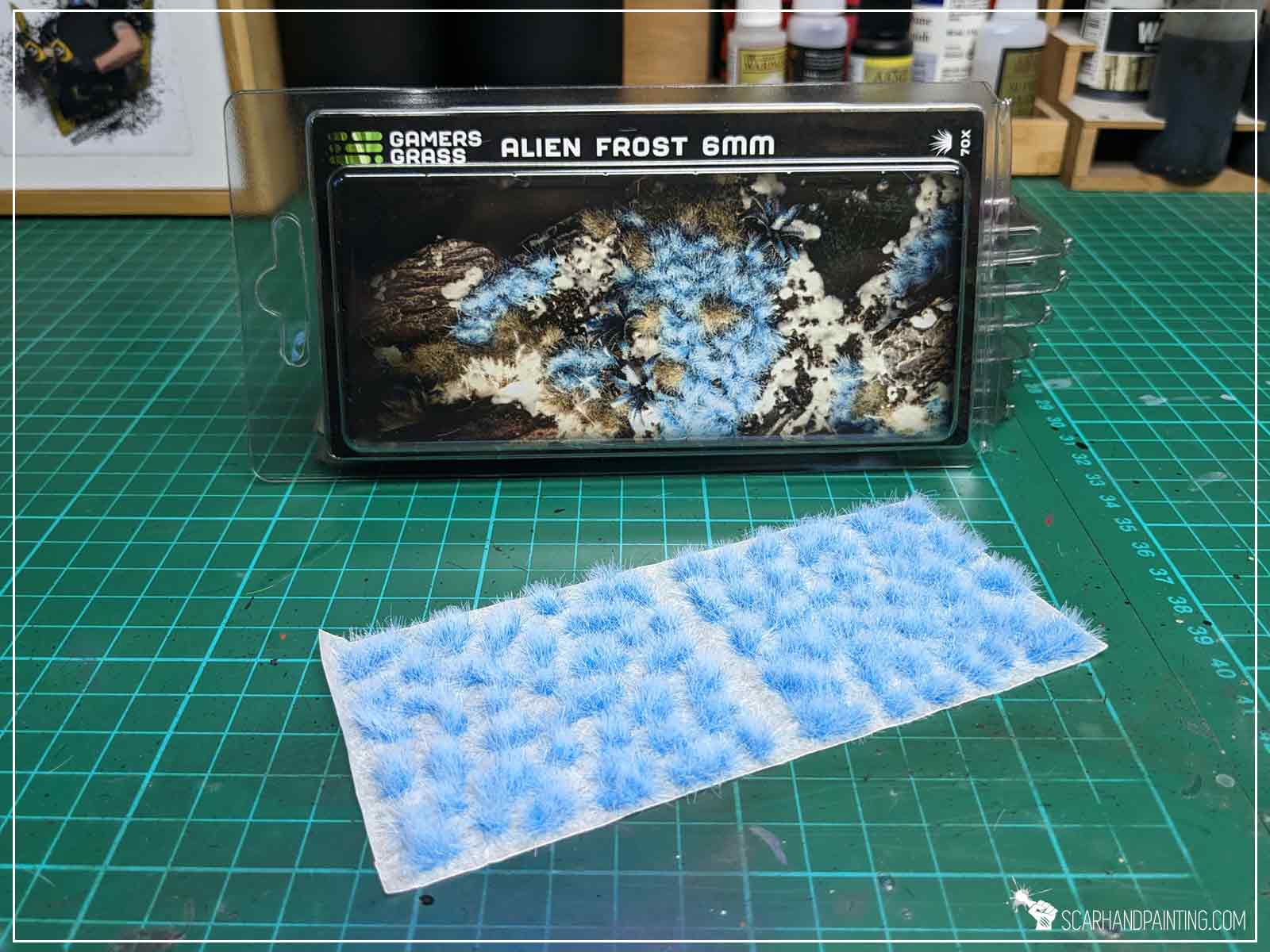
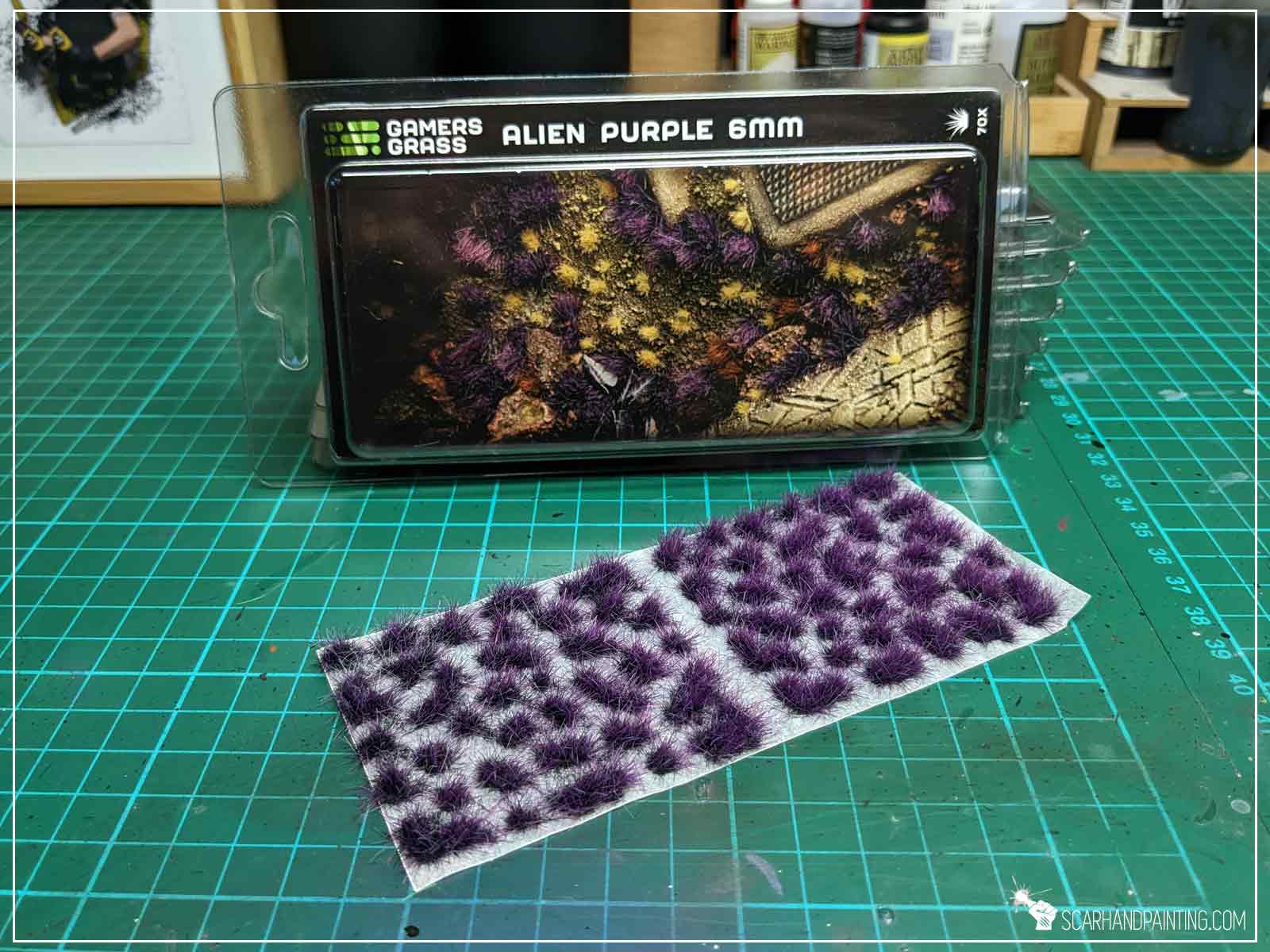
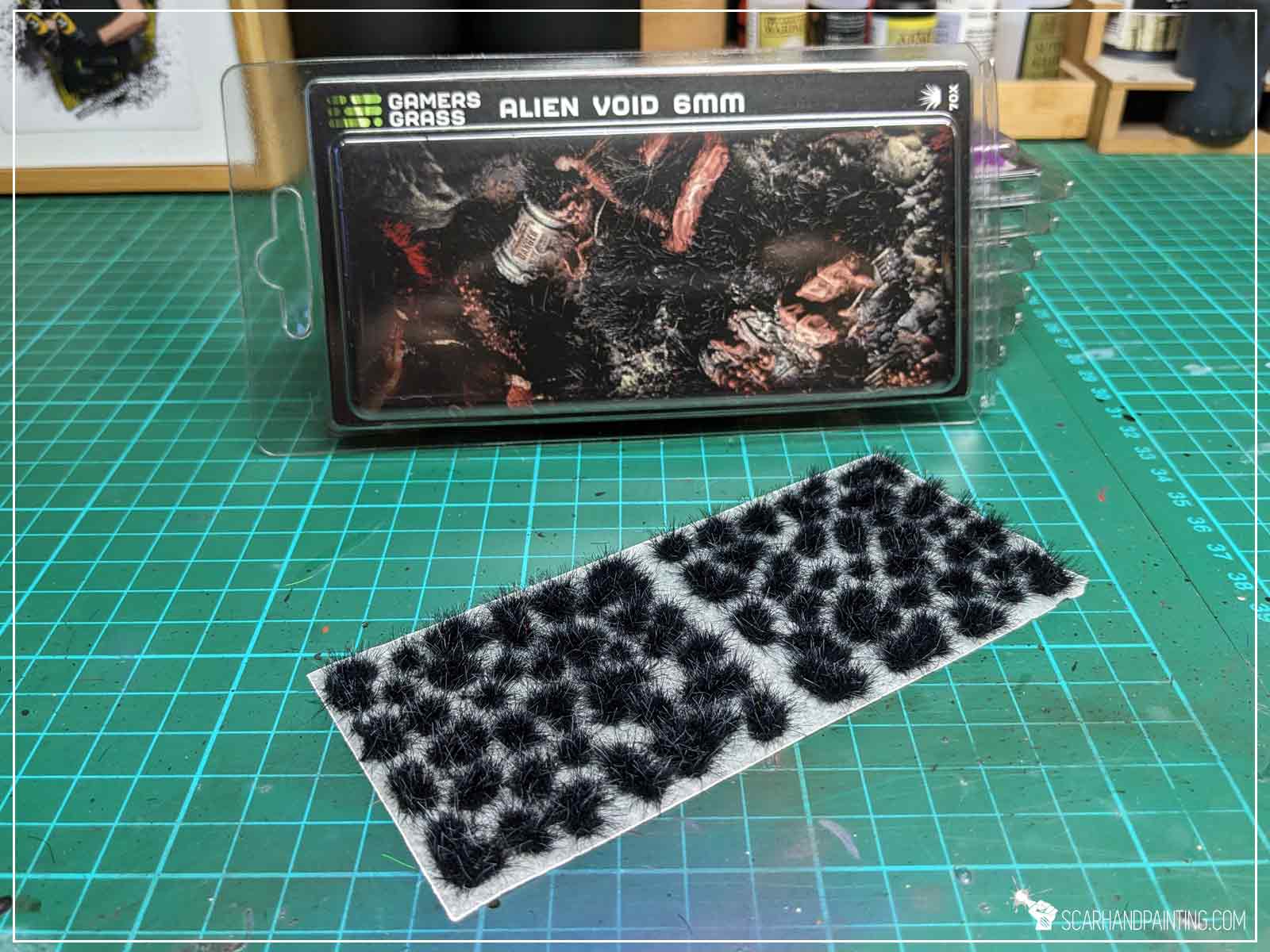
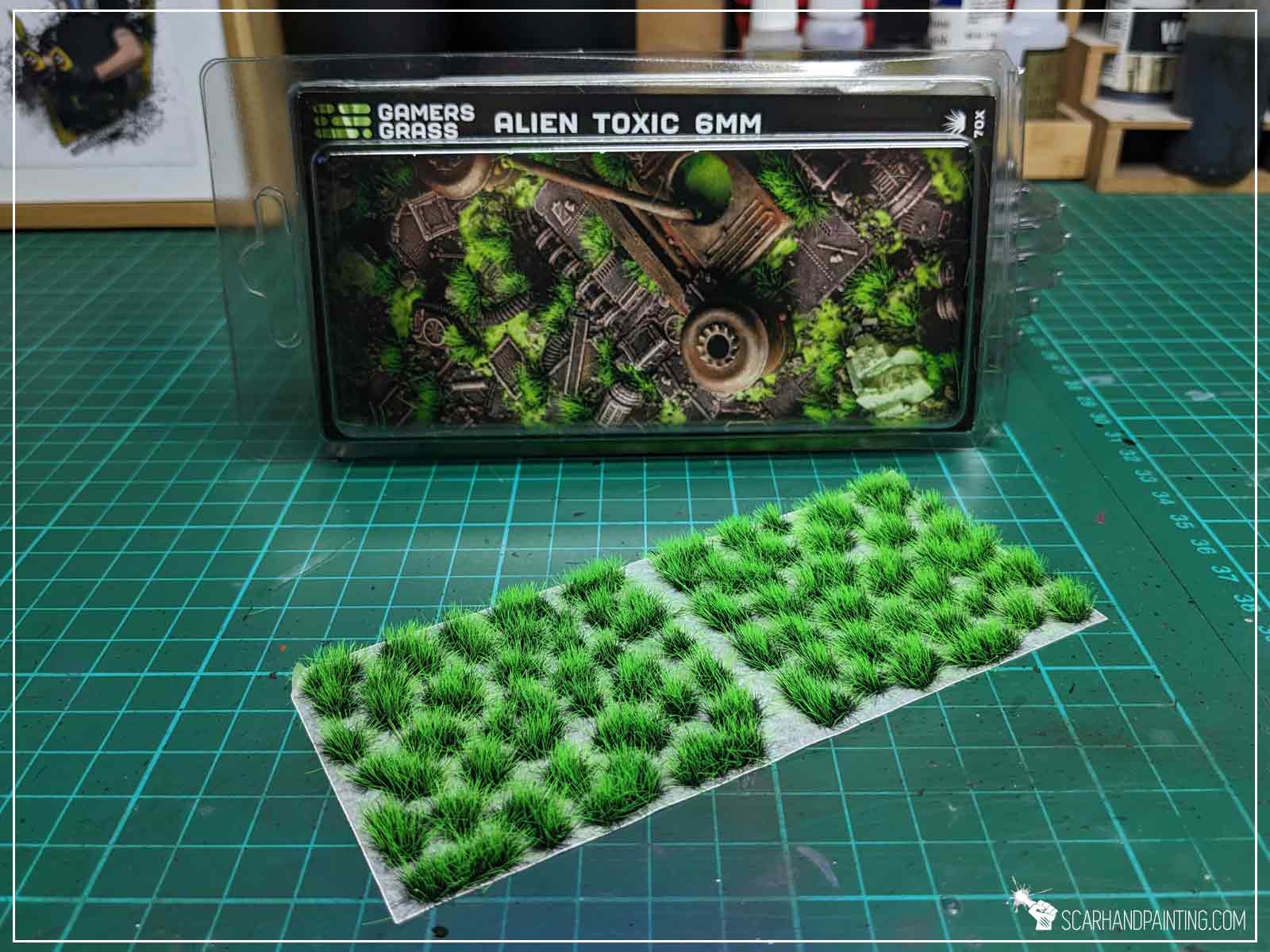
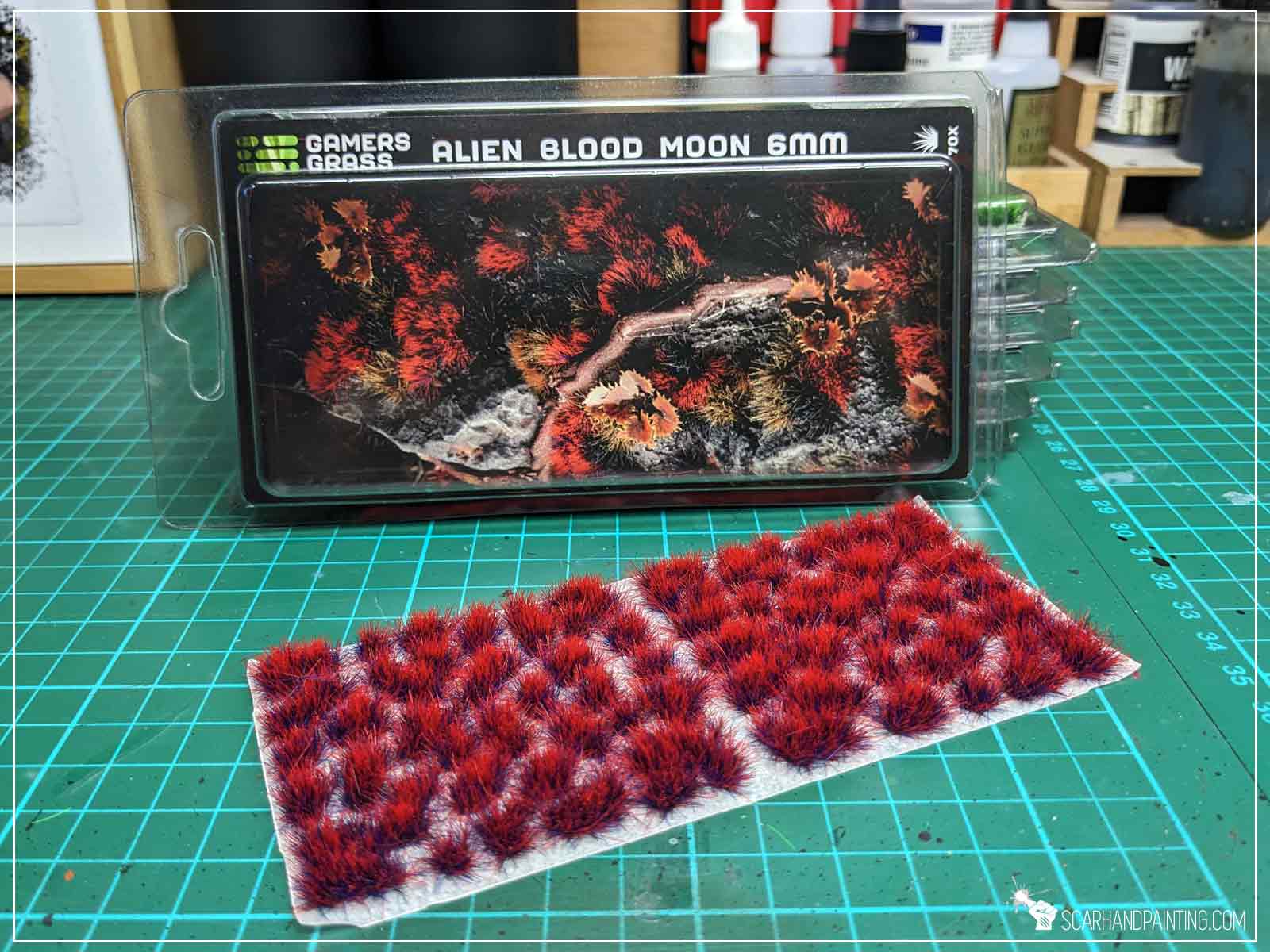
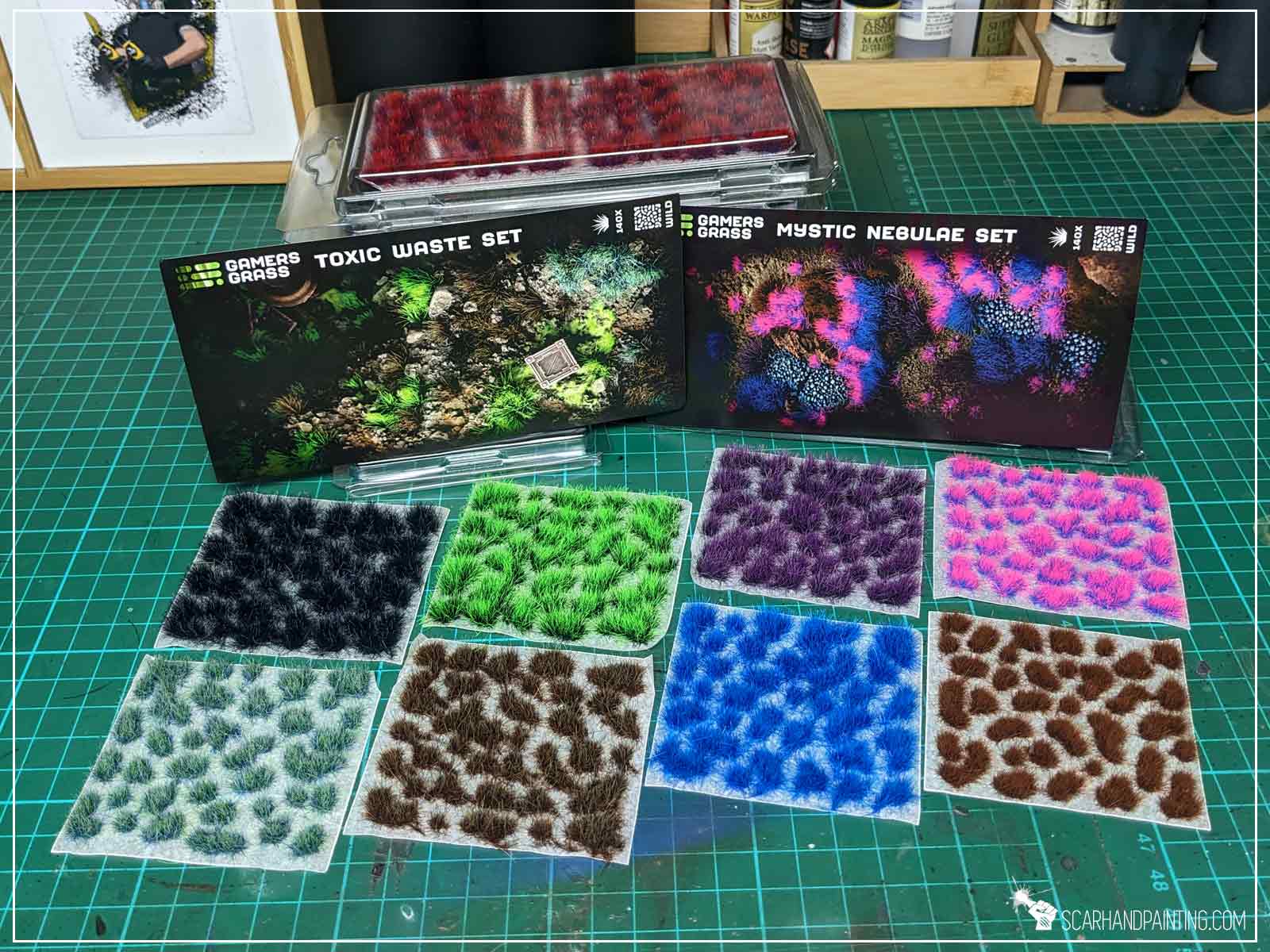
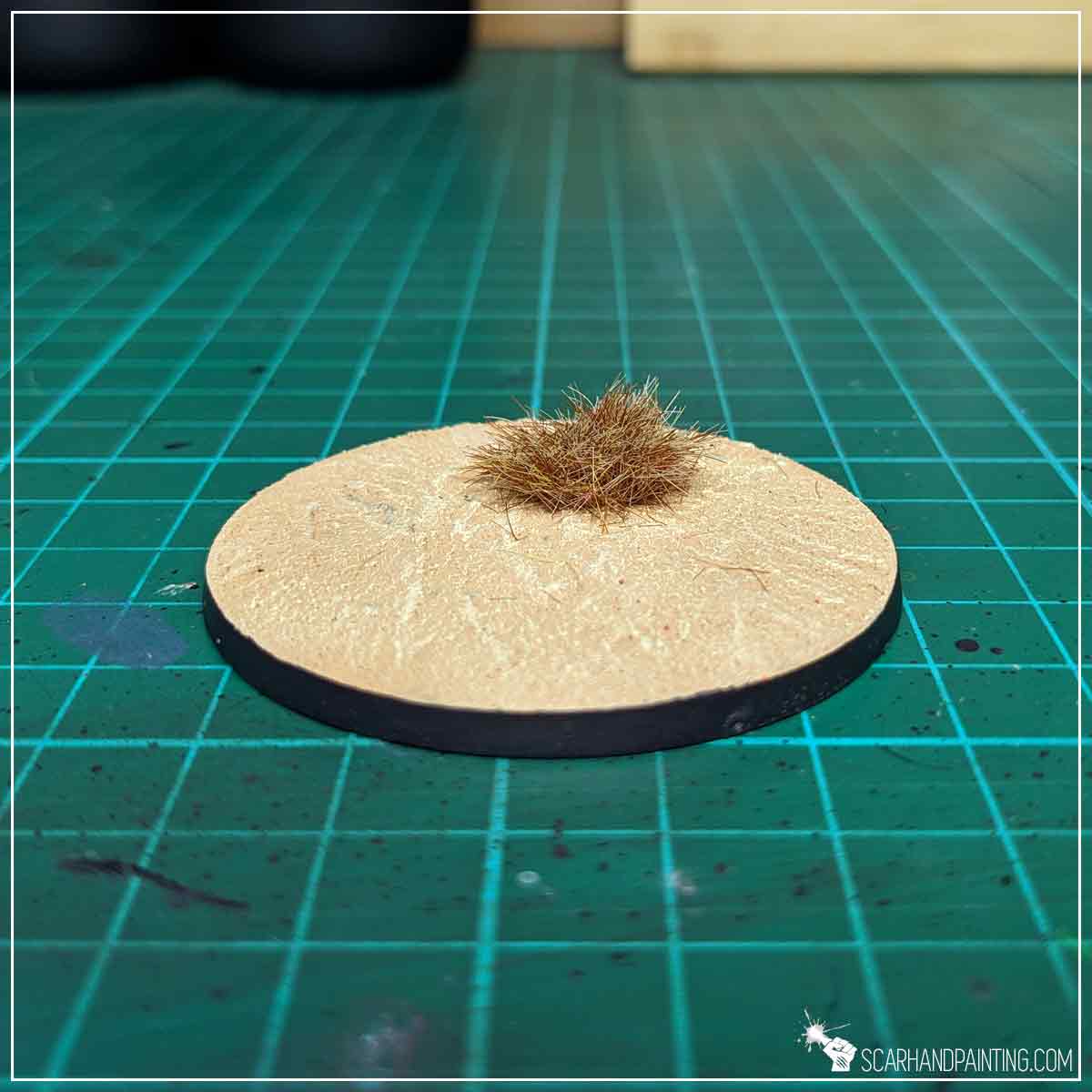
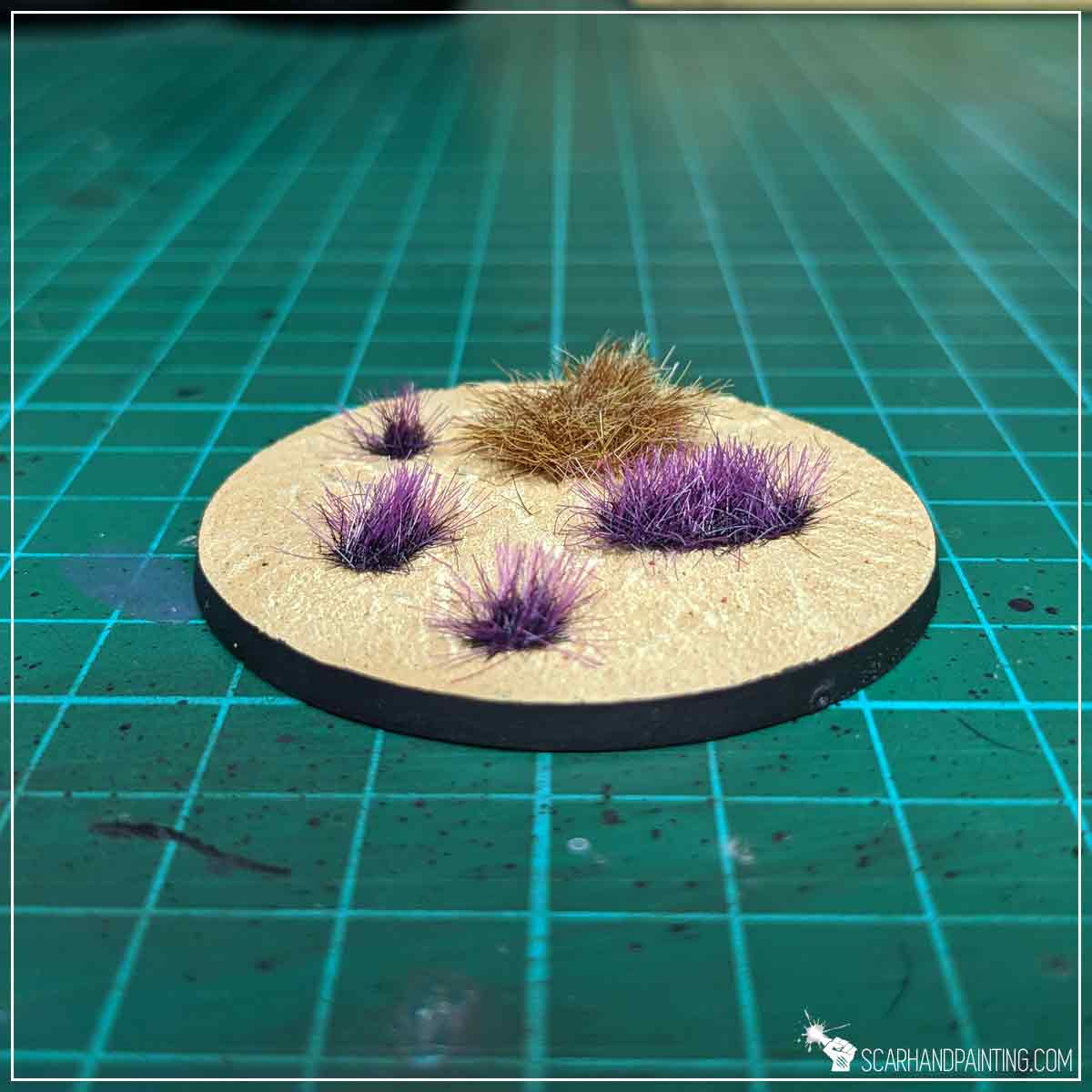
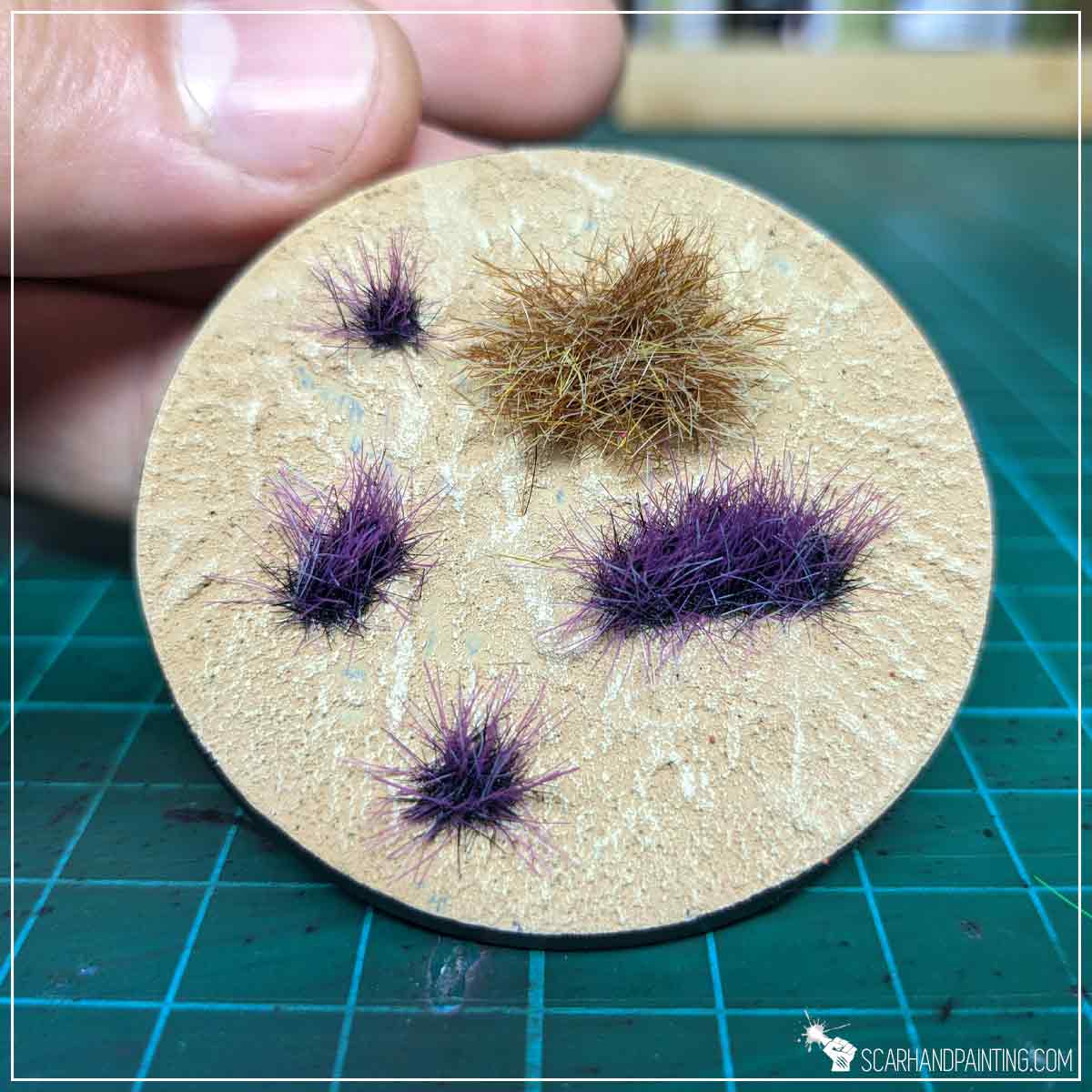
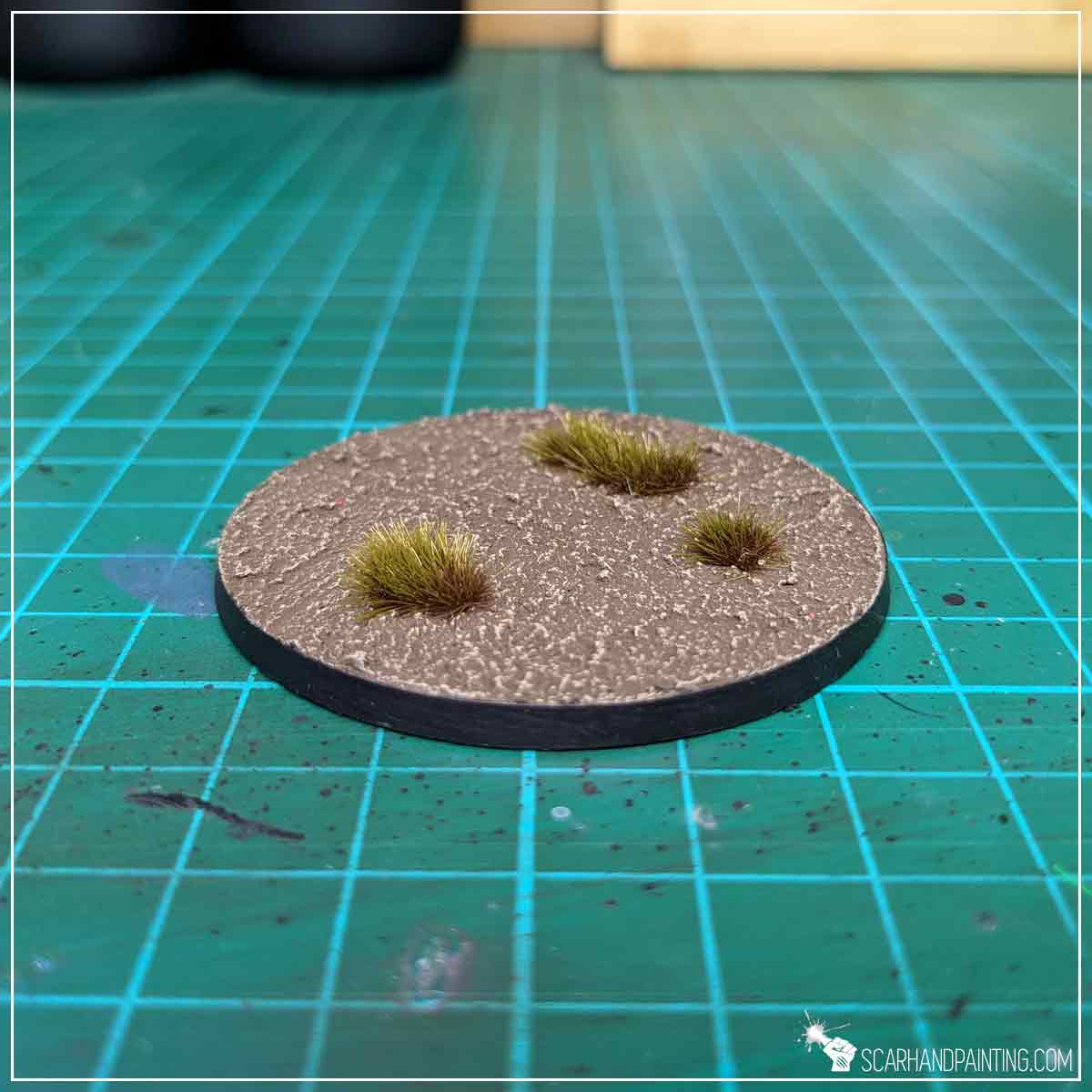
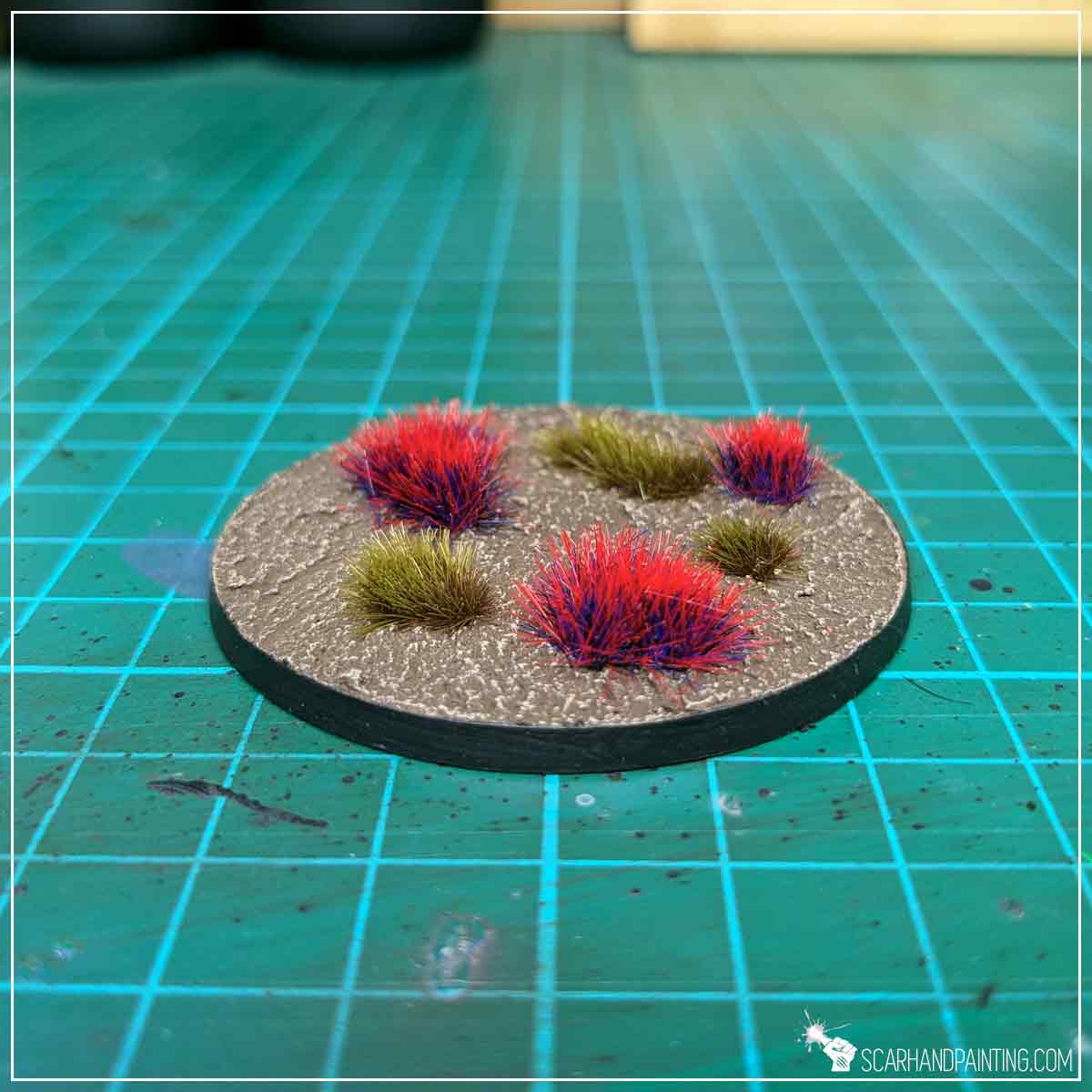
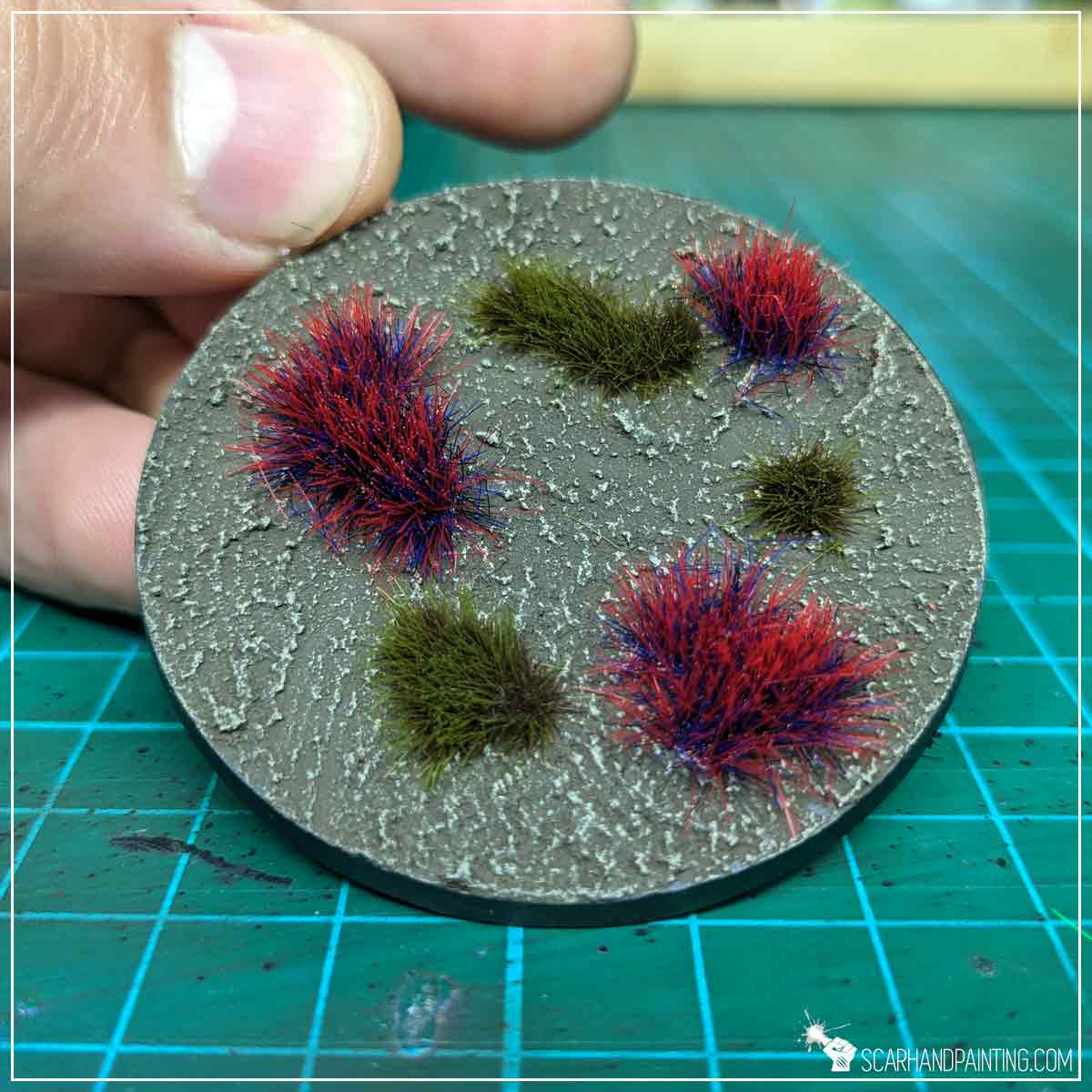
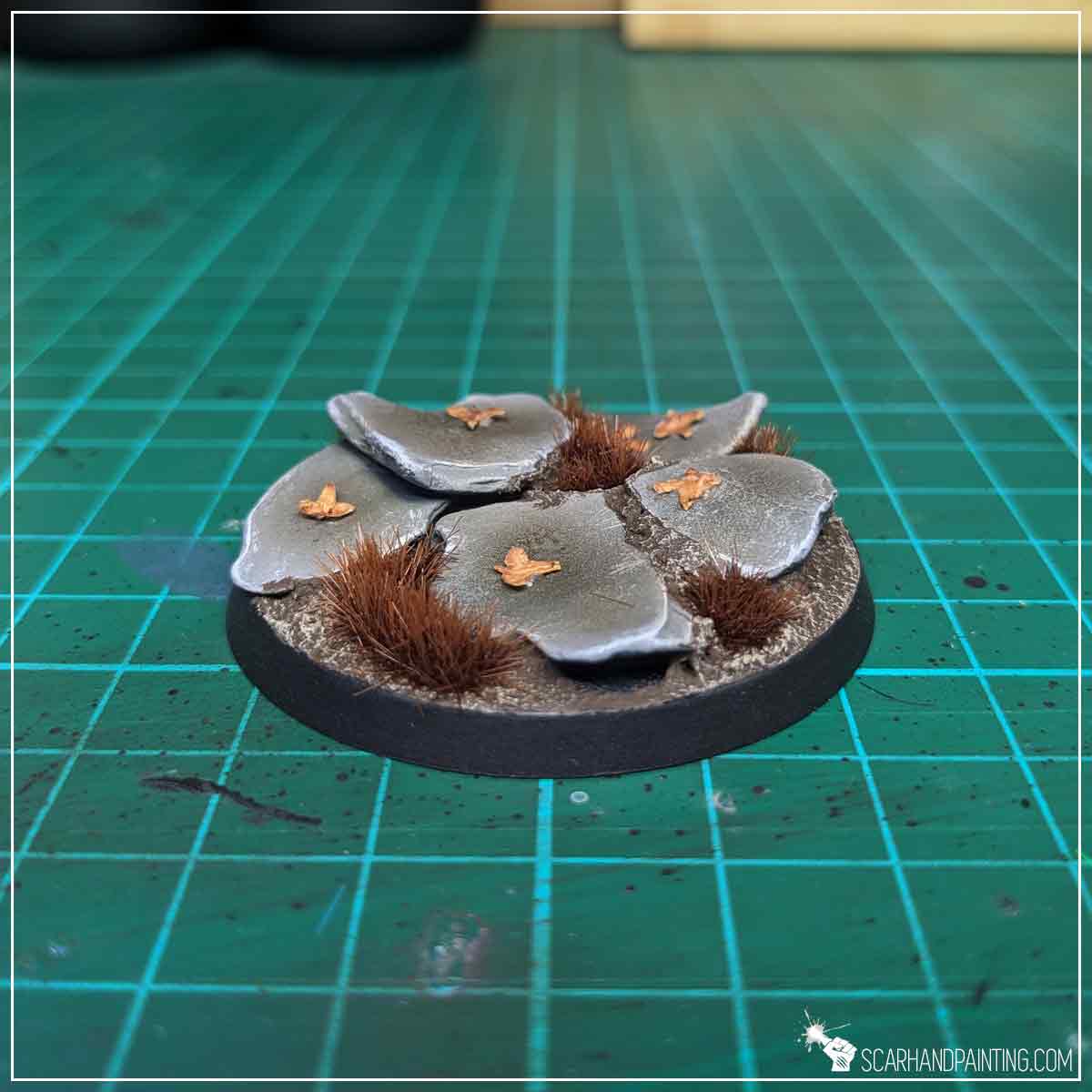
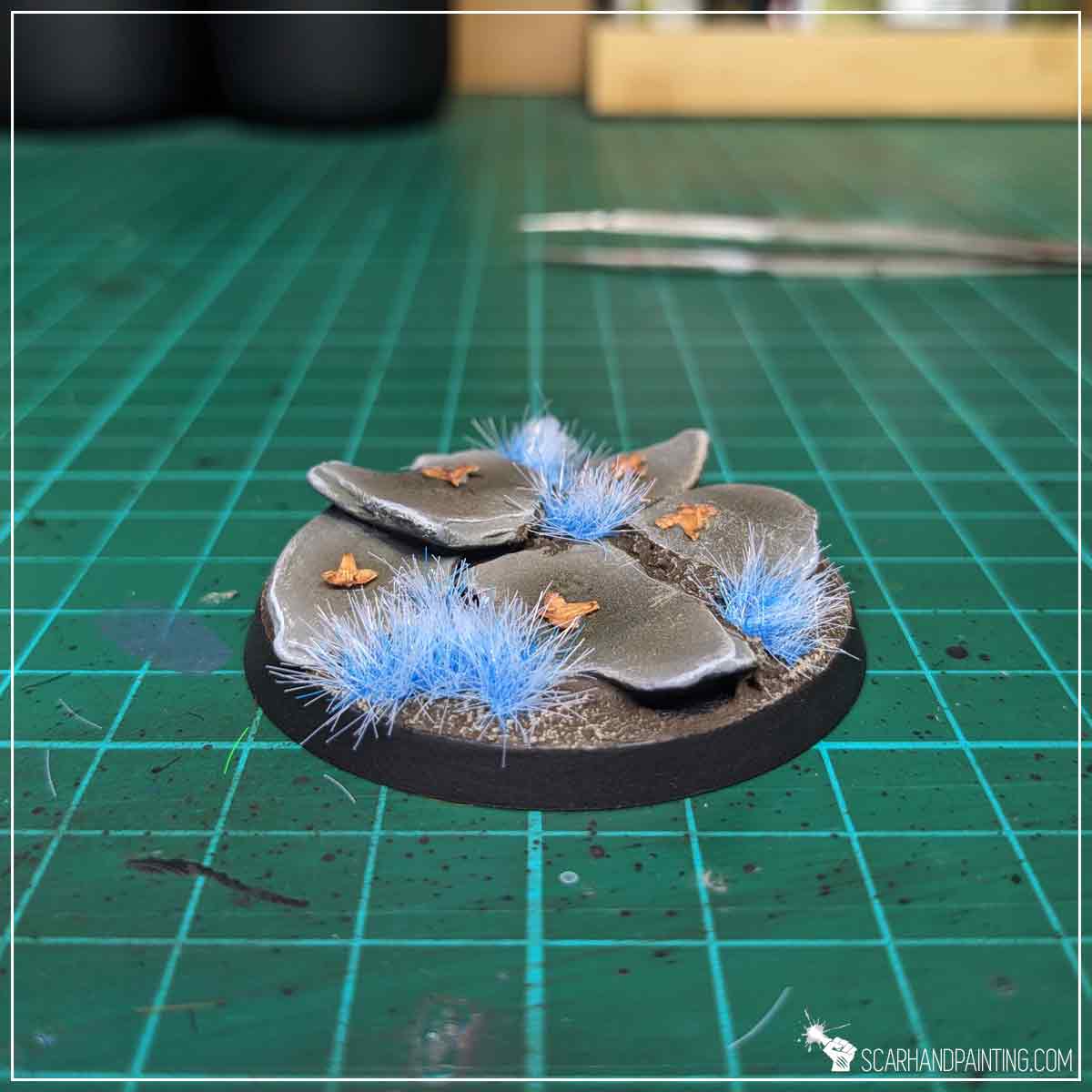
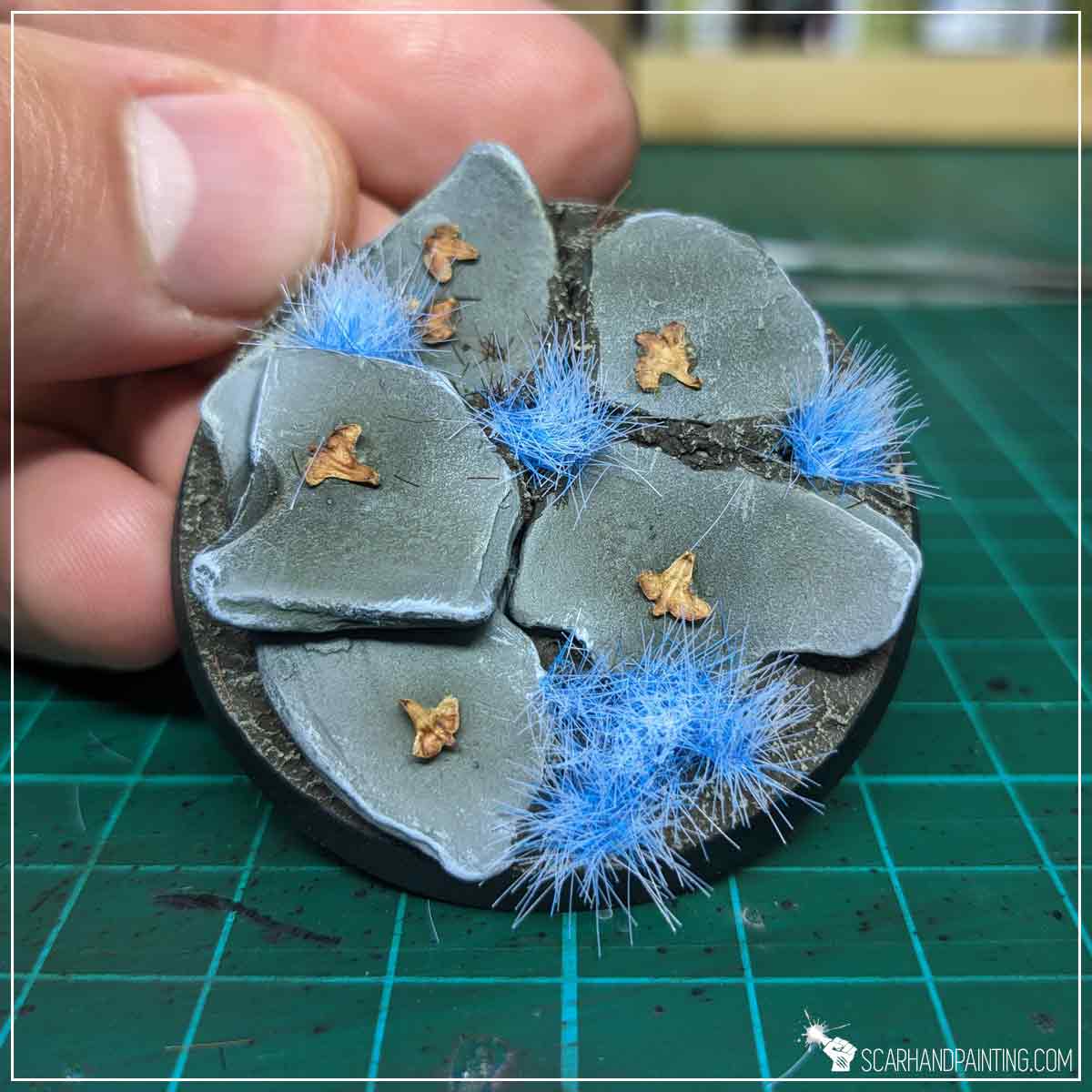
February 2024 hit and we’ve seen some expansion of the Gamers Grass regular 2mm tufts. Eight new products combining the features of “wild” and “tiny” lines into a 2mm series. As it happens, the Gamers Grass gifted me with a full set of eight. Now when I had sufficient time to get to know these streamlined products thoroughly, I am ready to share my take on them.
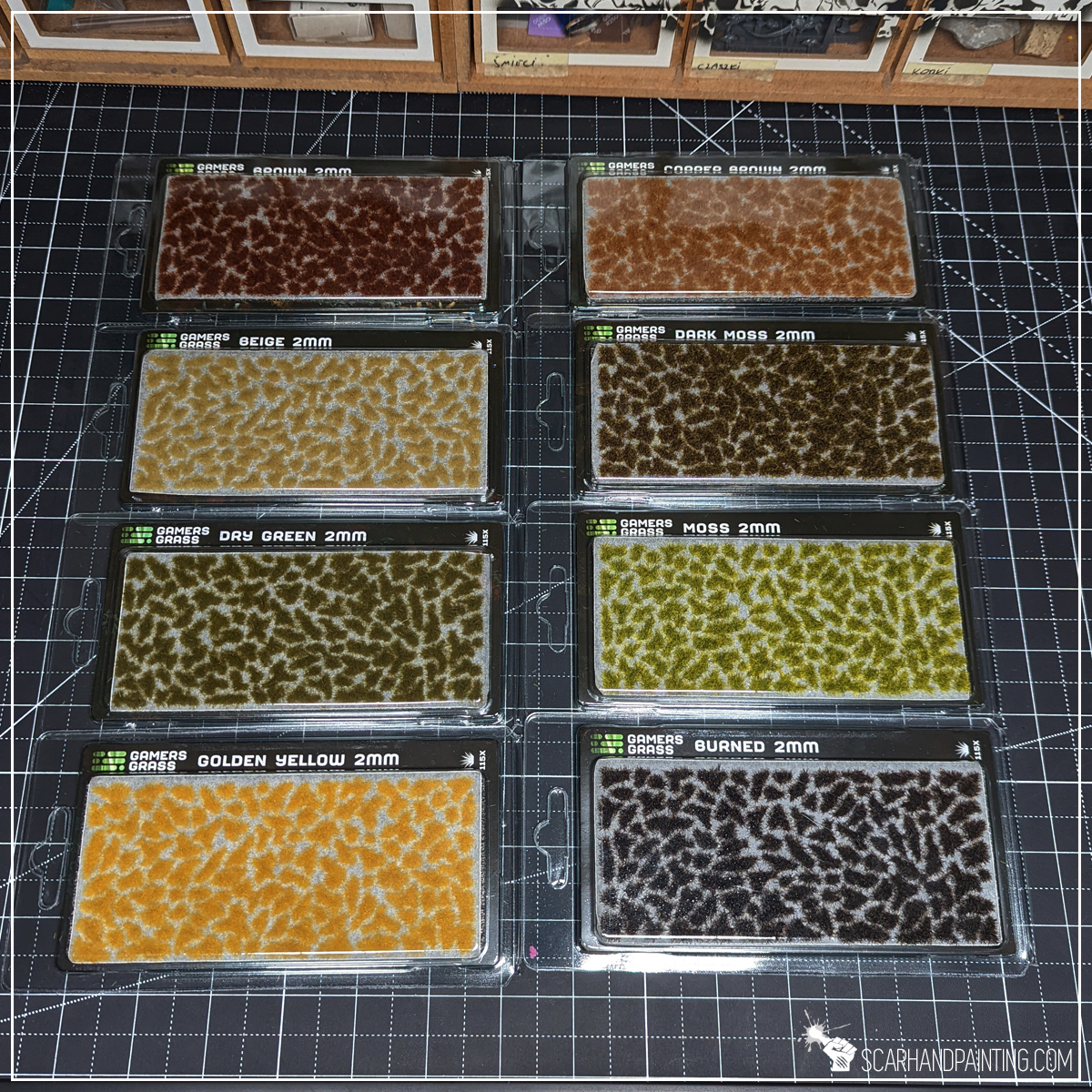
In terms of user friendliness, surface adherence and stalk length coherency – the product quality is of the same utmost best that you can expect from any and all Gamers Grass tufts. Shape variety is great with a mix of really small, medium and large swathes of tuft goodness.
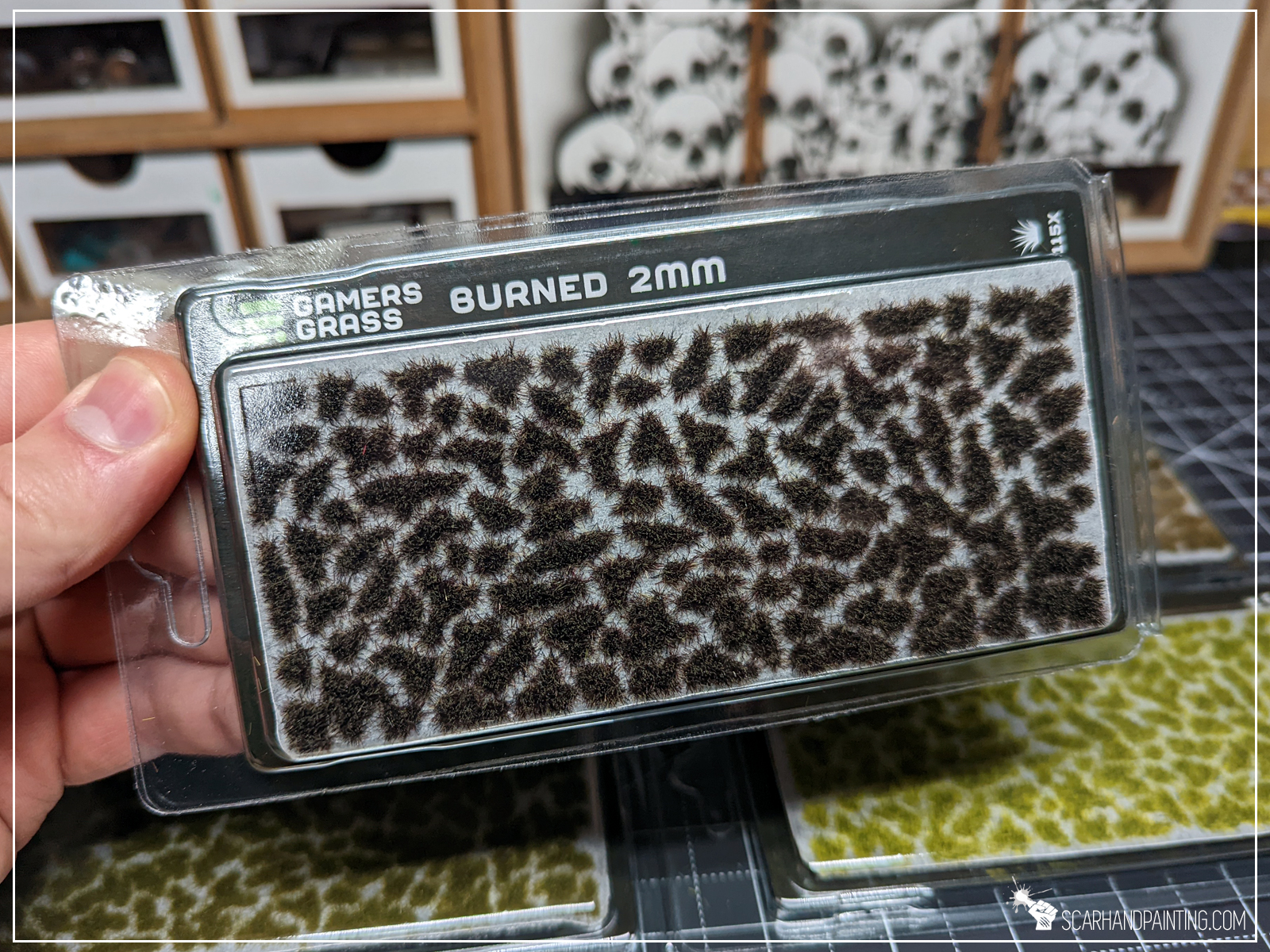
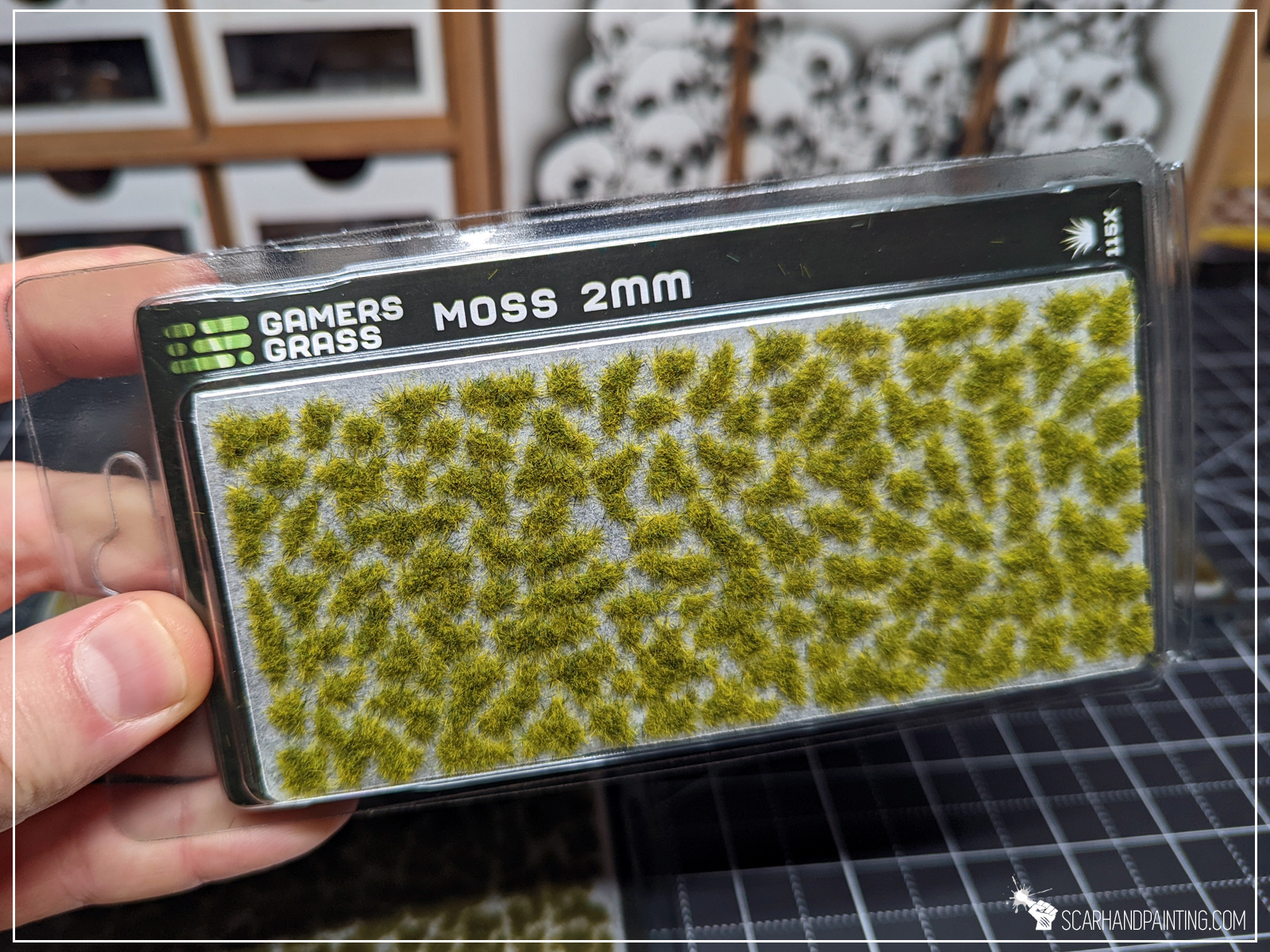
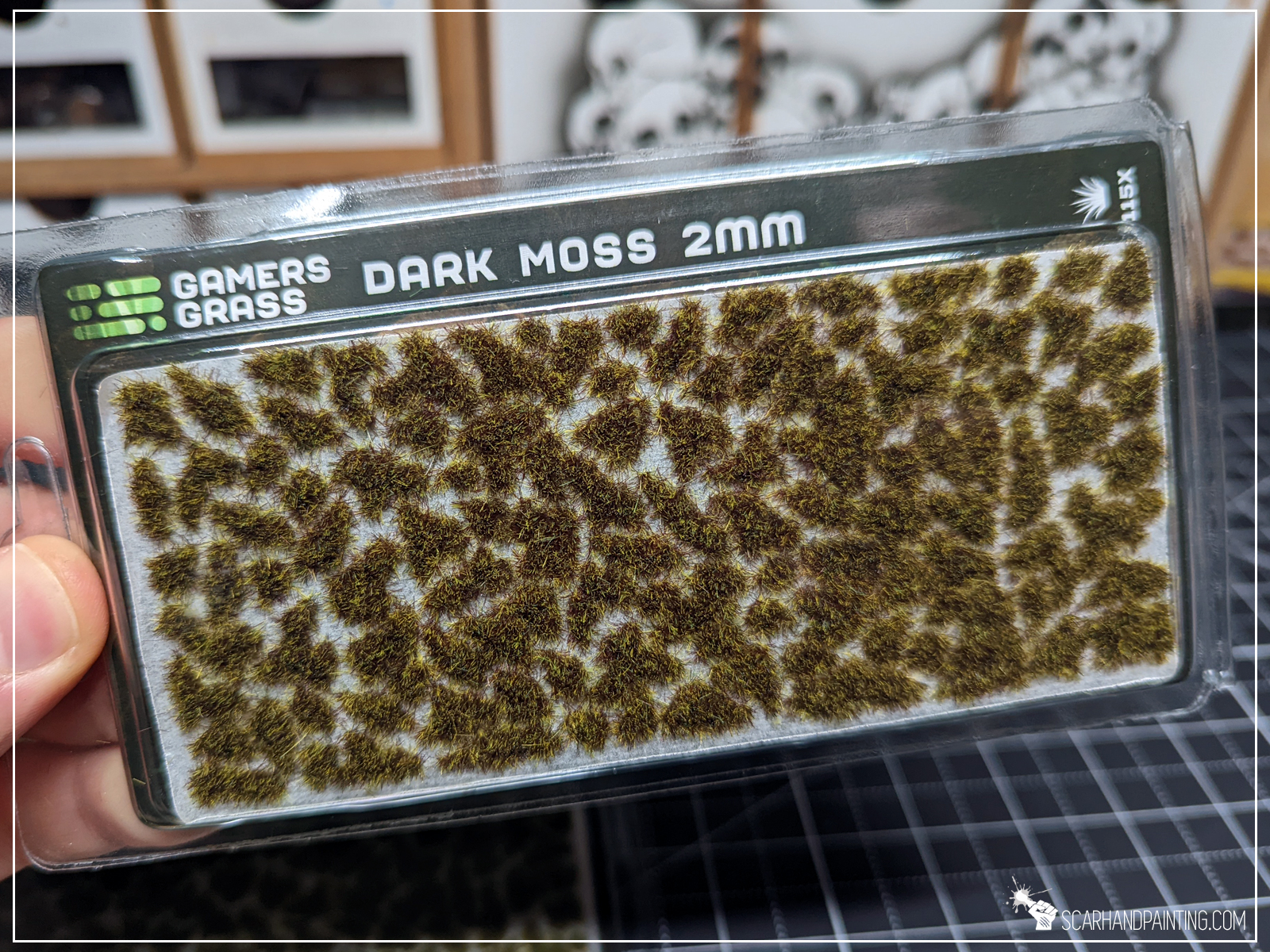
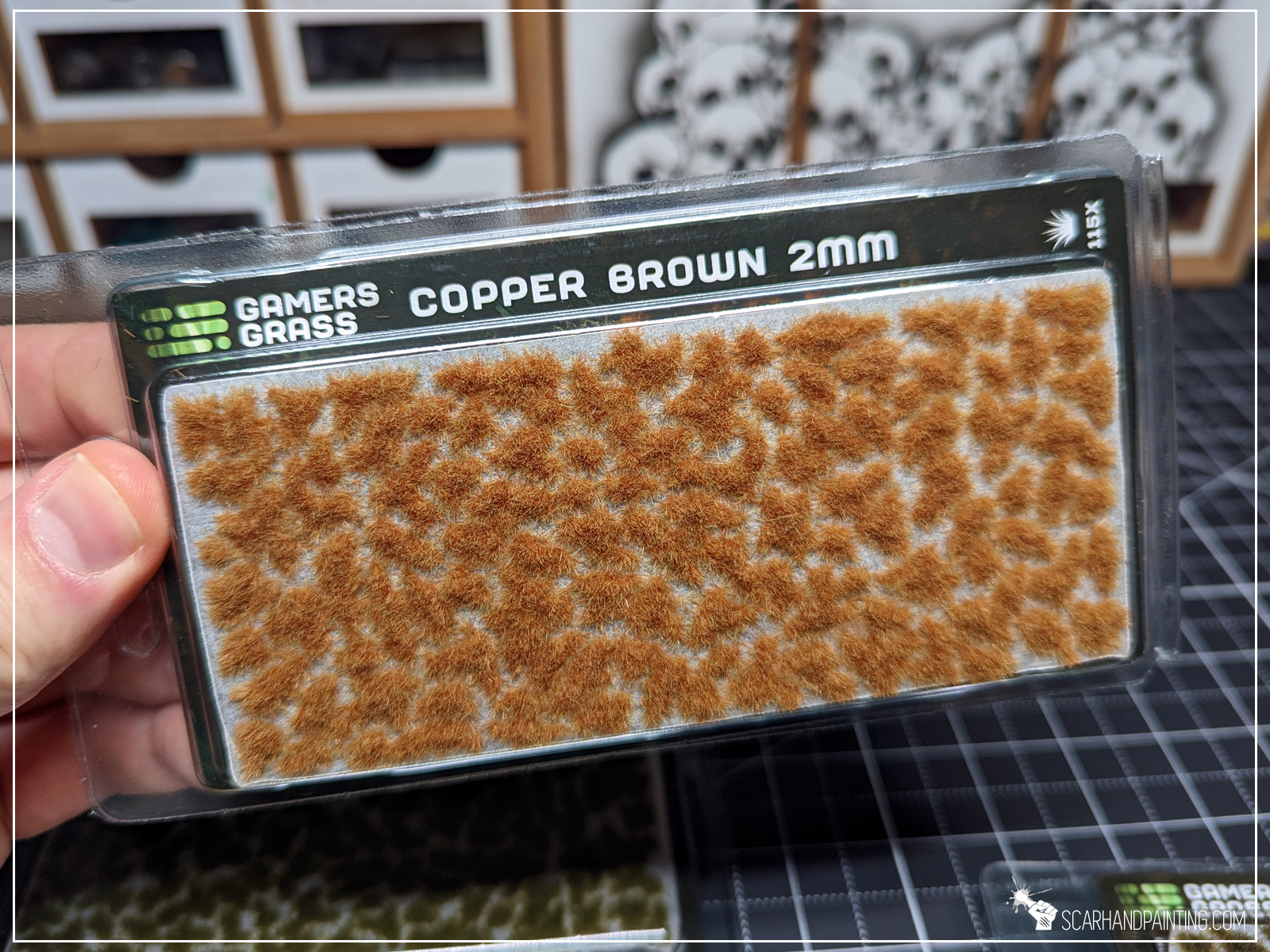
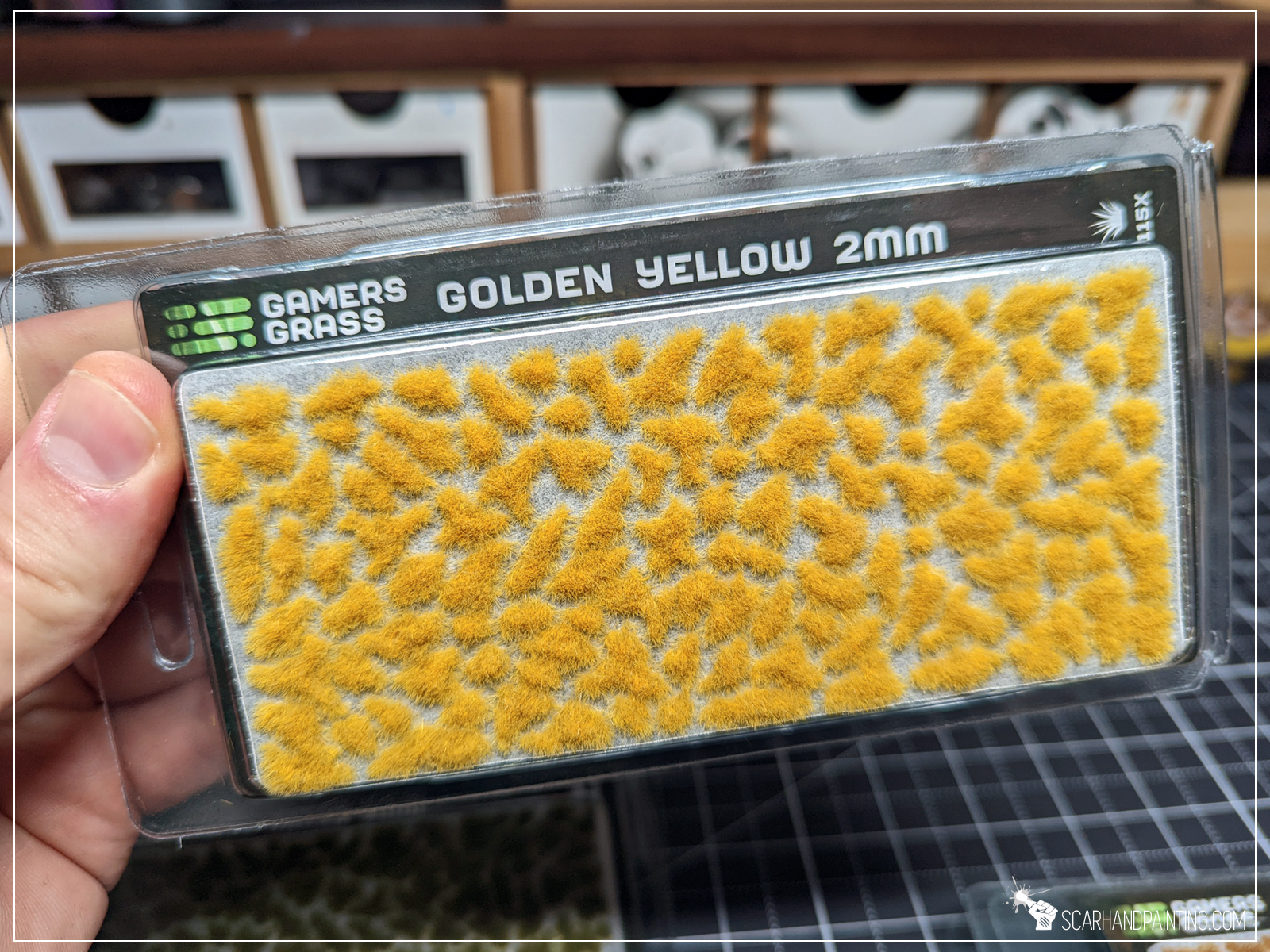
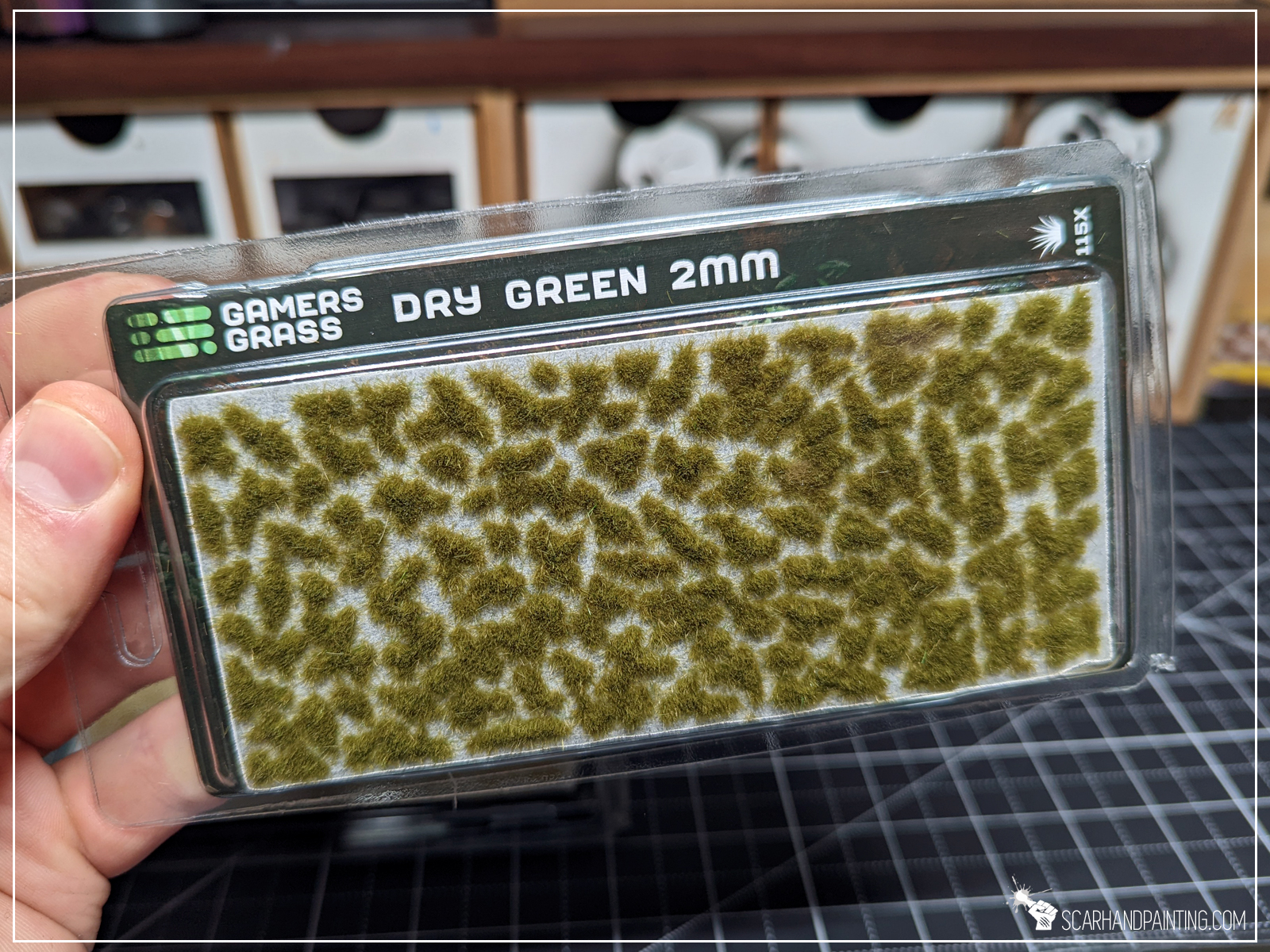
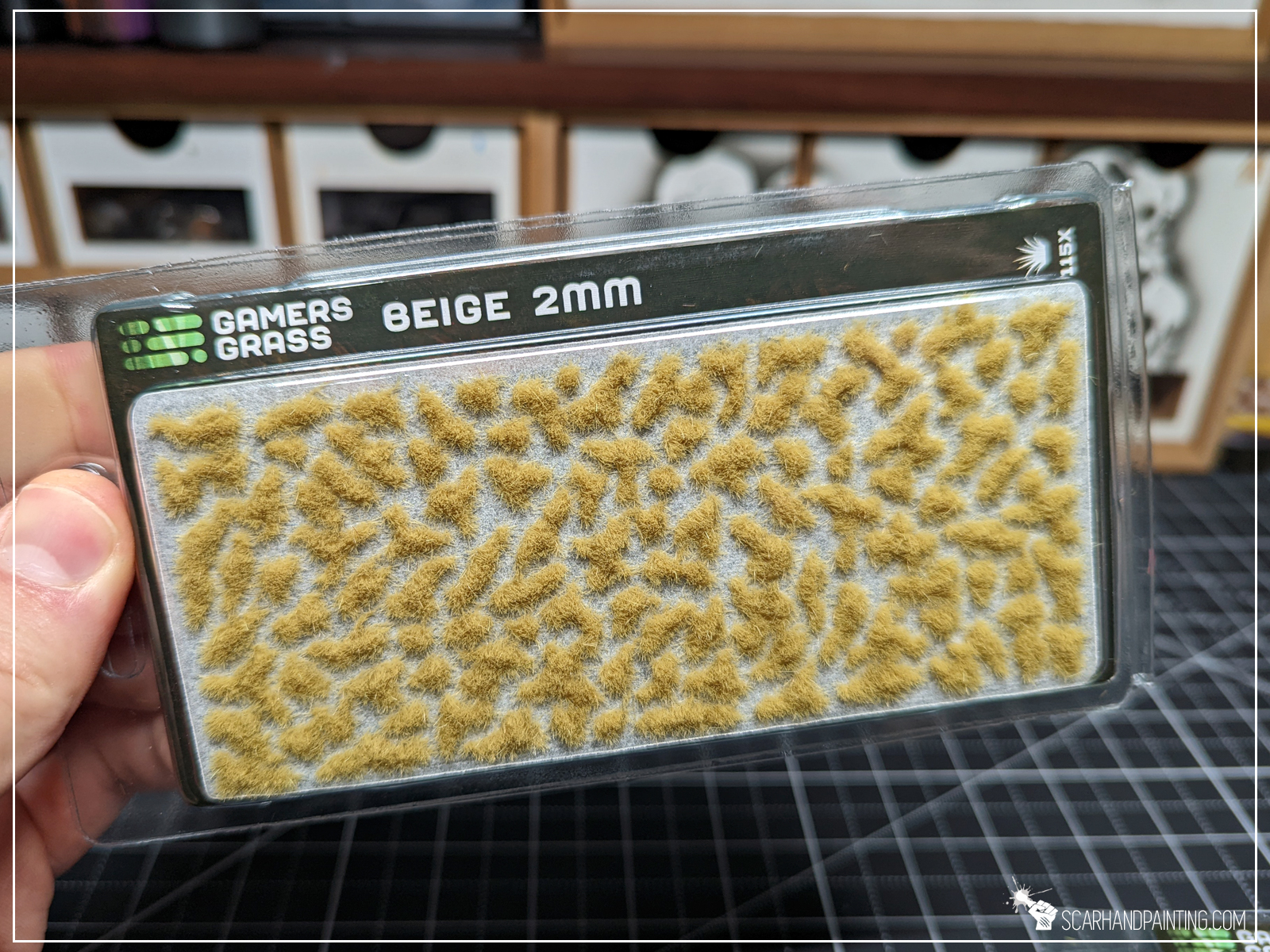
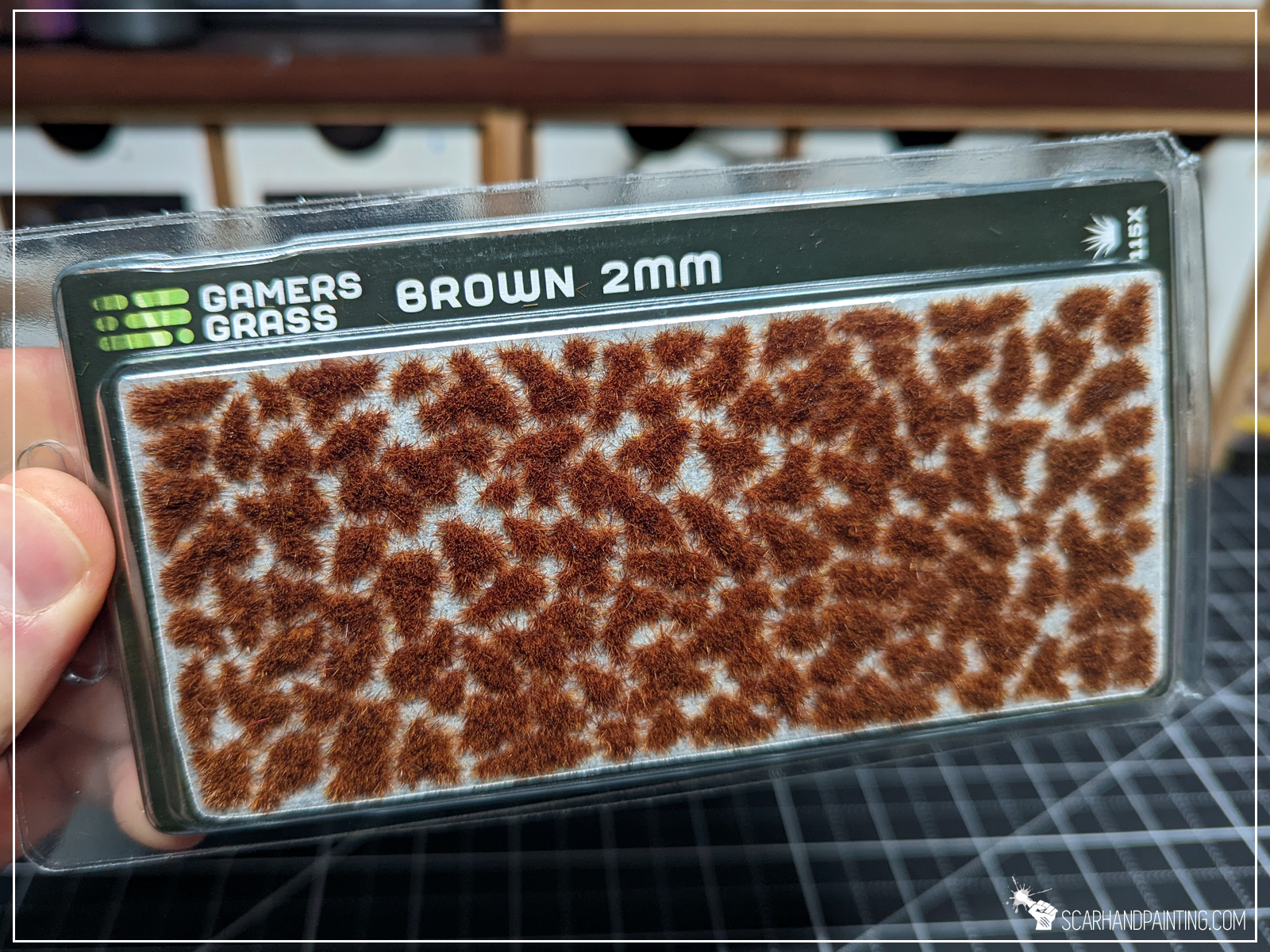
Colors are strong and vibrant (where varanted) and with a few exceptions, do match their larger counterparts that I had in stock to compare. Sadly, even though they do properly convey the ‘feel’, Burned and Brown 2mm tufts look out of synch with 4mm versions. Depending on your preferences this might be a positive, allowing for a bit of variety on a base by combining slightly different color tones and sizes. Still it seems like something worth being aware of beforehand.
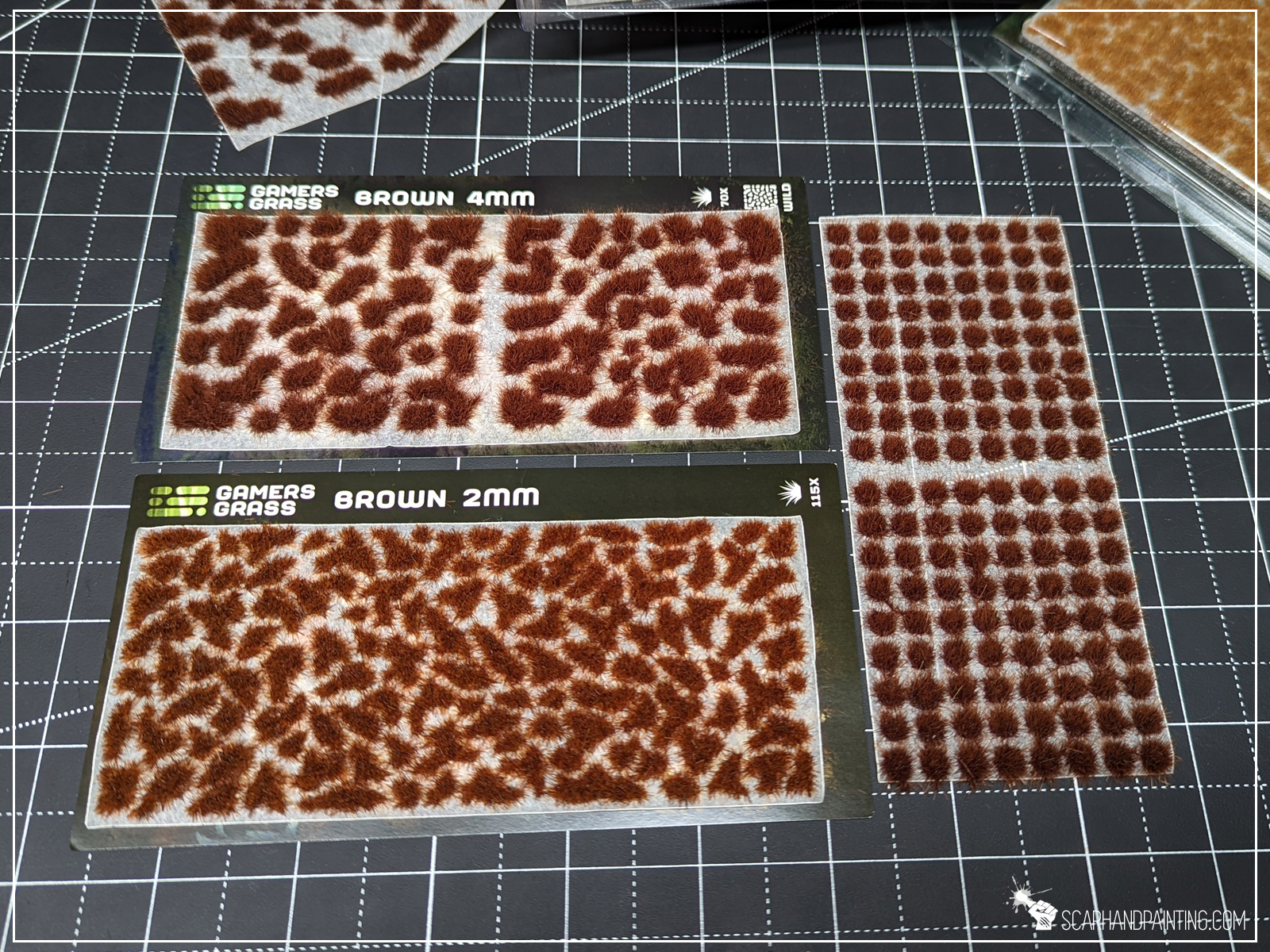
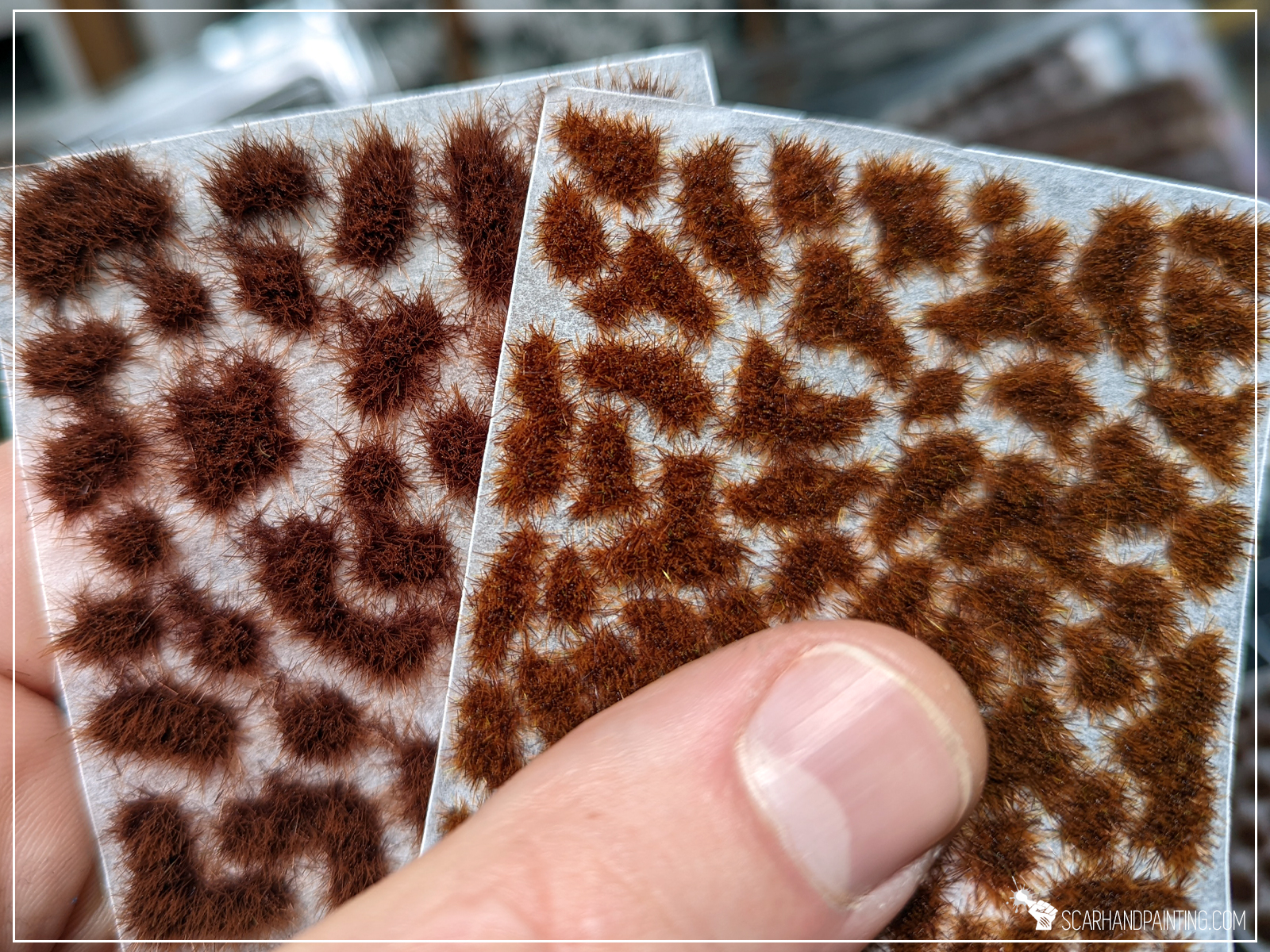
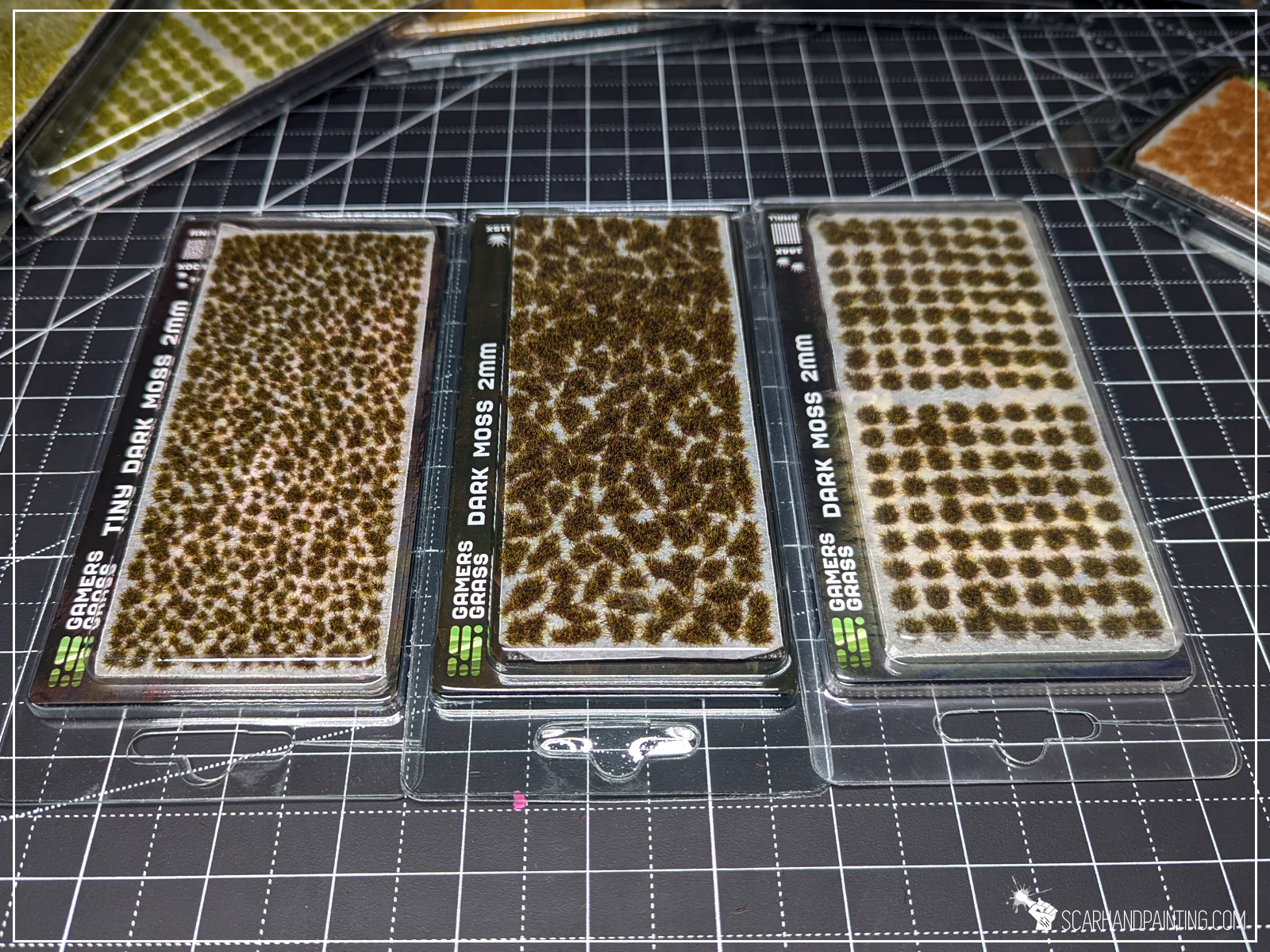
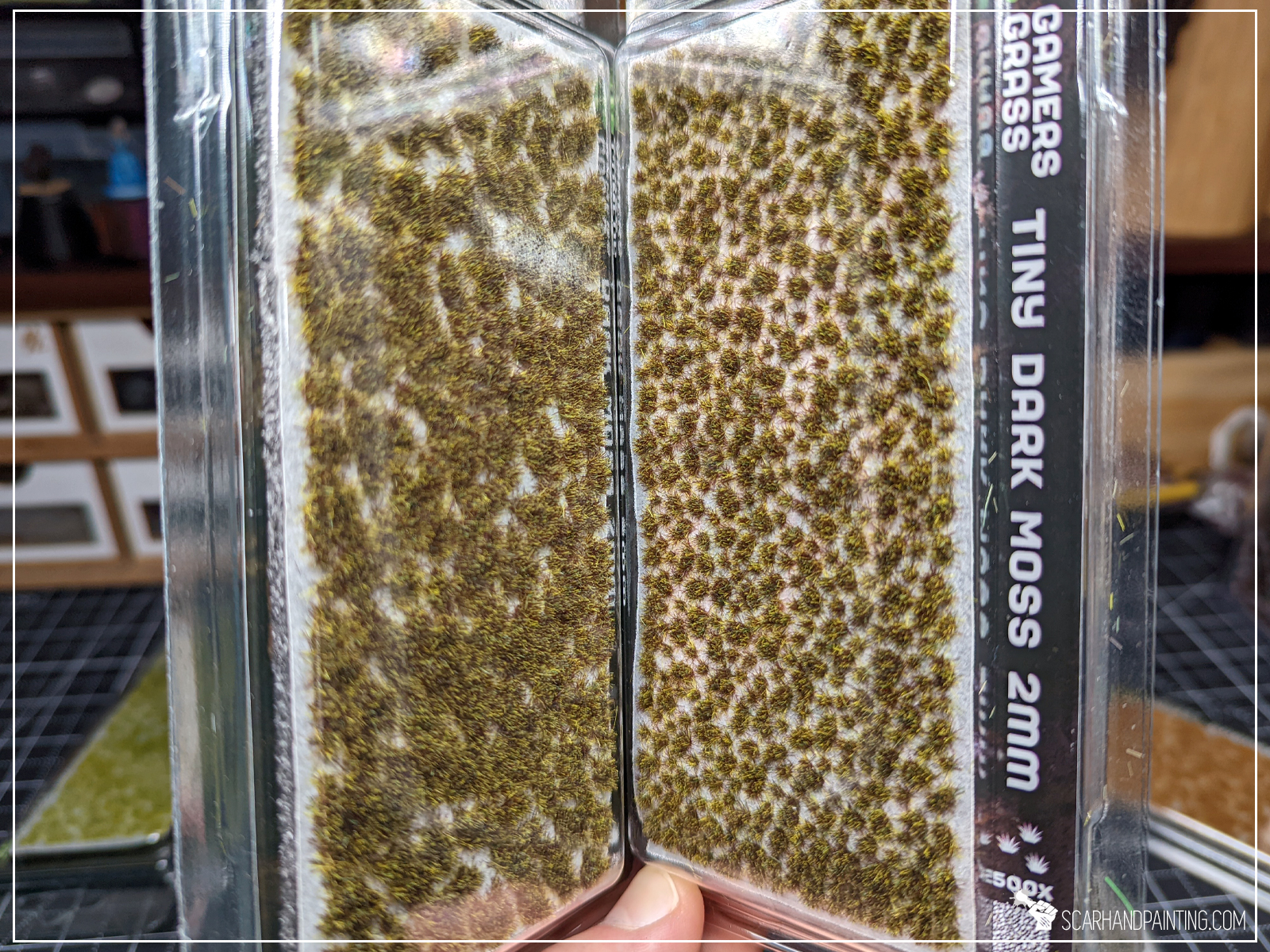
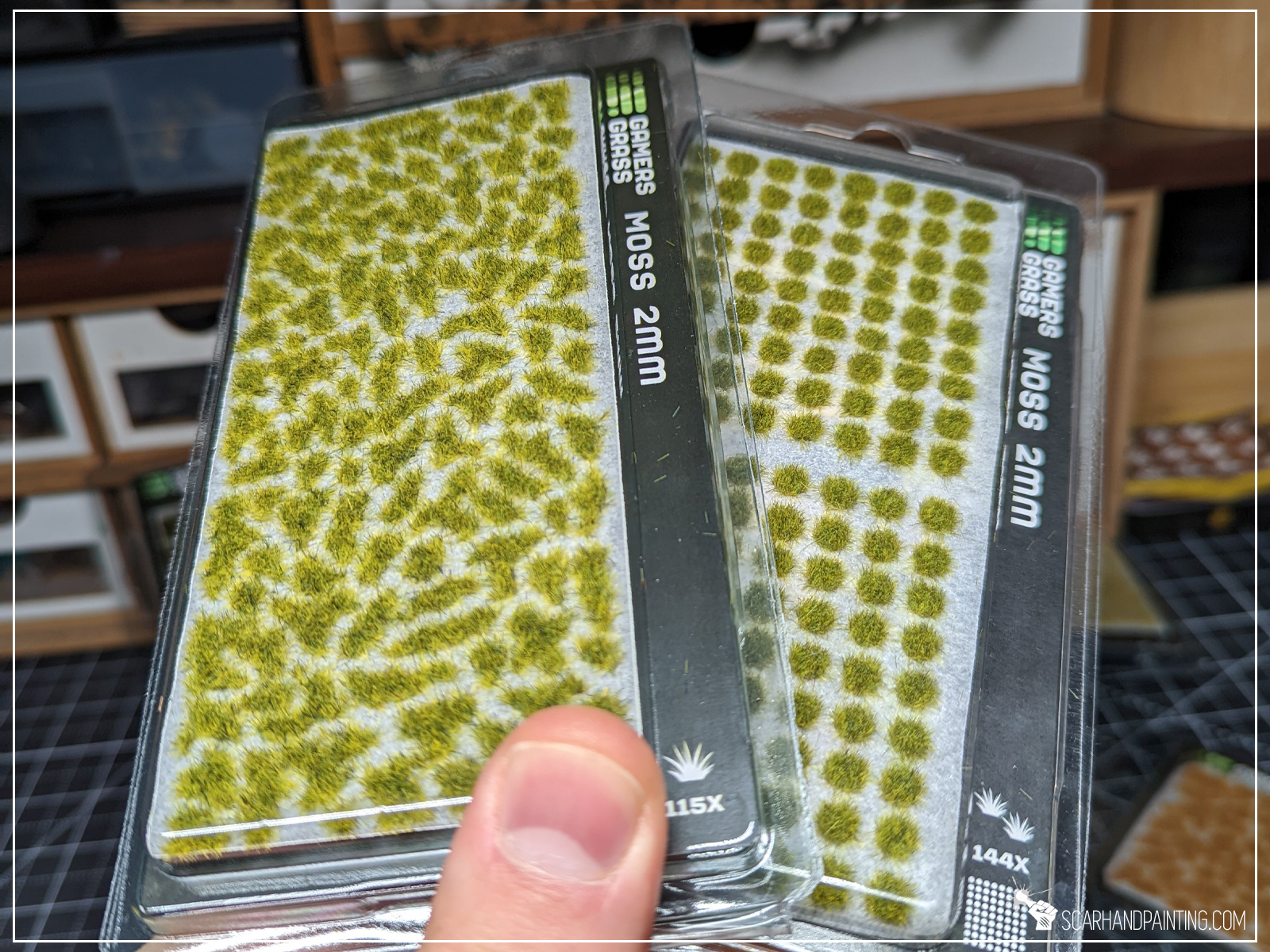
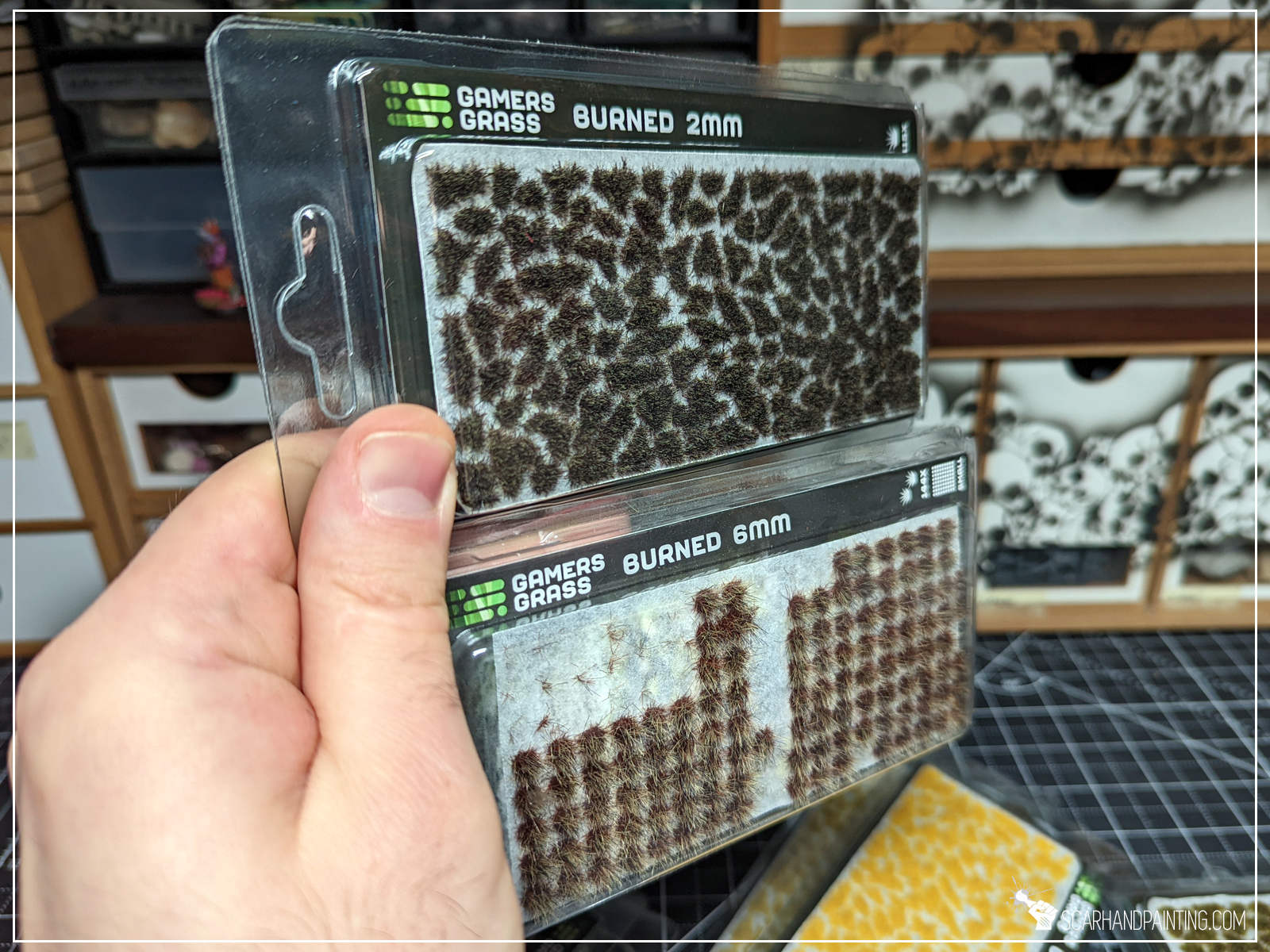
Personally I love to see the 2mm tufts line expanded. They are easy to work with, offer wide variety of uses and look amazing. I also very much appreciate the Gamers Grass pro customer move of offering all the options from really tiny to large wild swathes of grass in just a single pack of tufts. This is a big deal for anyone who wants to try out these amazing tufts but is not invested in a large scale miniatures project.
I hope you’ve enjoyed this article. Be sure to let me know your thoughts in the comments below or via Facebook or Instagram. I would also appreciate it if you considered sharing this content with your friends, who might find it interesting. Finally if you are looking for a professional miniatures painting service, be sure to contact me with this contact form. I always reply within 24 hours, after which please check out your spam folder.

Welcome to Painting Desert Bases tutorial. Here I will take you on a Step-by-step trip through the process of painting Desert Bases the same way as seen at: Gallery: Infinity USARF
Before we start, some notes:

Step one: Undercoat
I started with a lazy layer of Games Workshop Gorthor Brown. Any similar colour would do and the layer doesn’t need to be thorough.
Step two: Base texture
I applied a solid irregular layer of Games Workshop Agrellan Badlands with some points of Games Workshop Agrellan Earth on top.
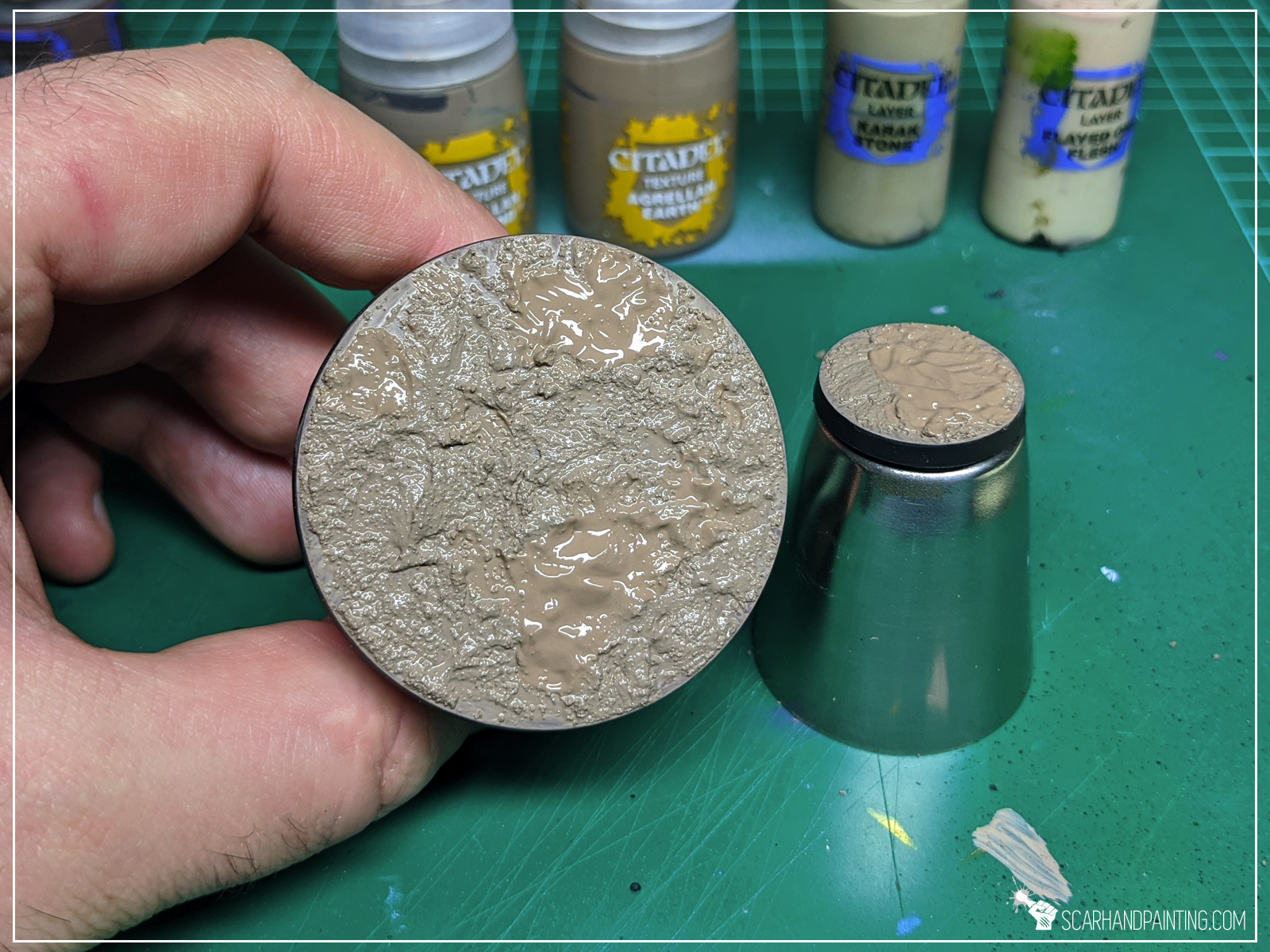
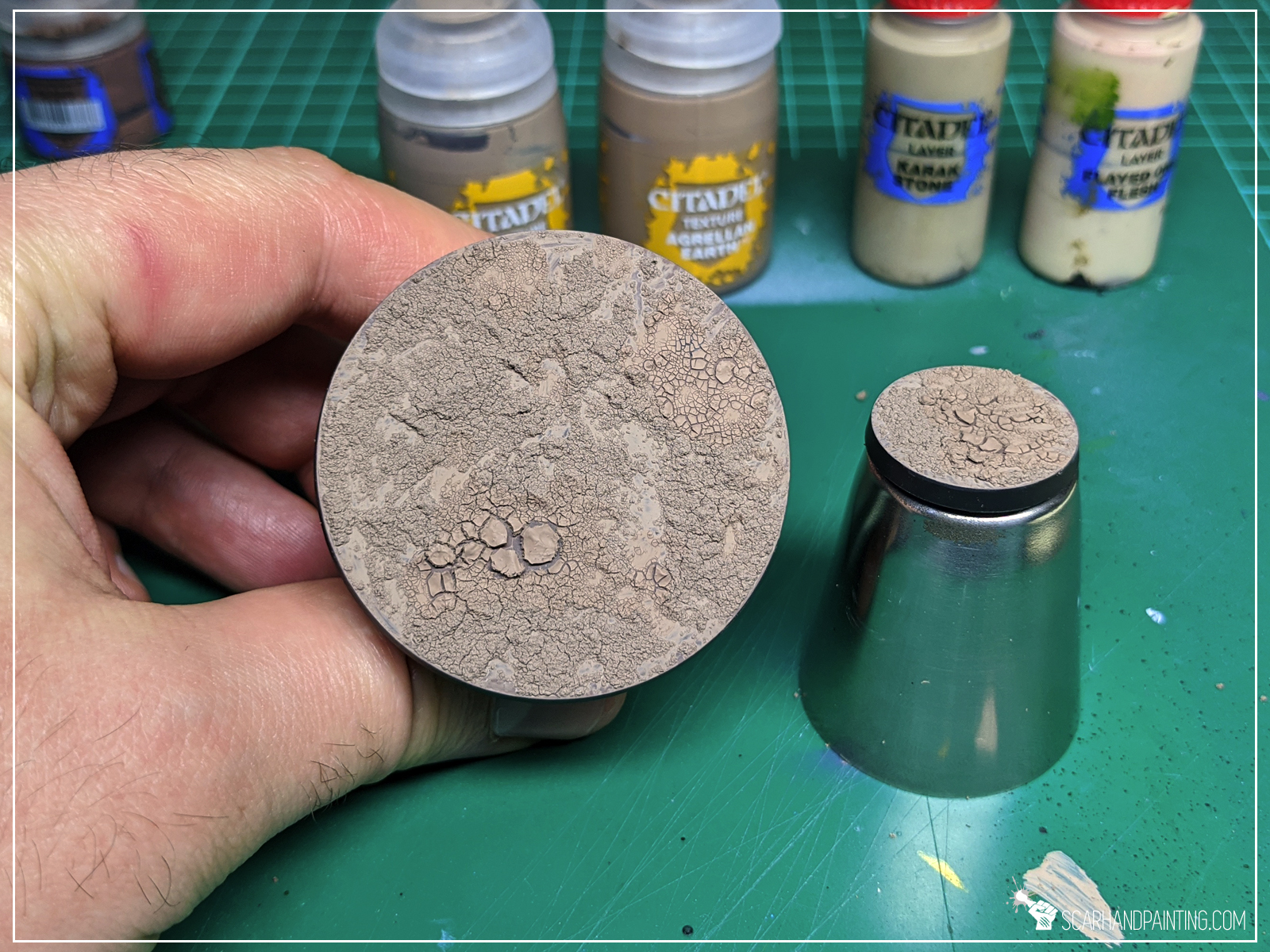
Step three: Highlight
Next I drybrushed a layer of Games Workshop Karak Stone. Some pieces of cracked earth fell off, but that doesn’t matter in the long run.
Step four: Highlight
I drybrushed again, this time with Games Workshop Flayed One Flesh.
Step five: Tufts
I glued Paint Forge Steppe tufts on top of the bases, ensuring that any points where cracked earth fell off got covered.
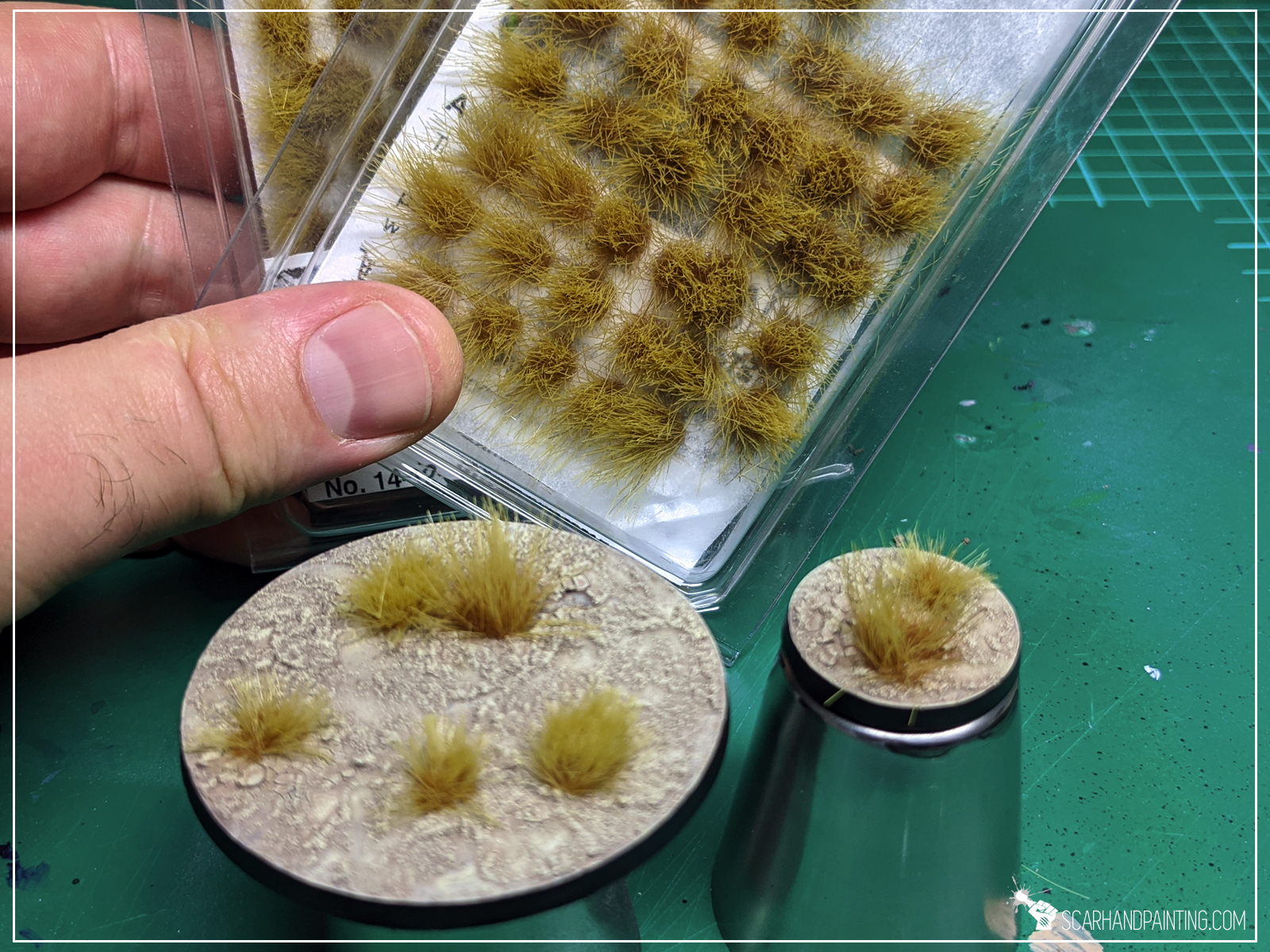
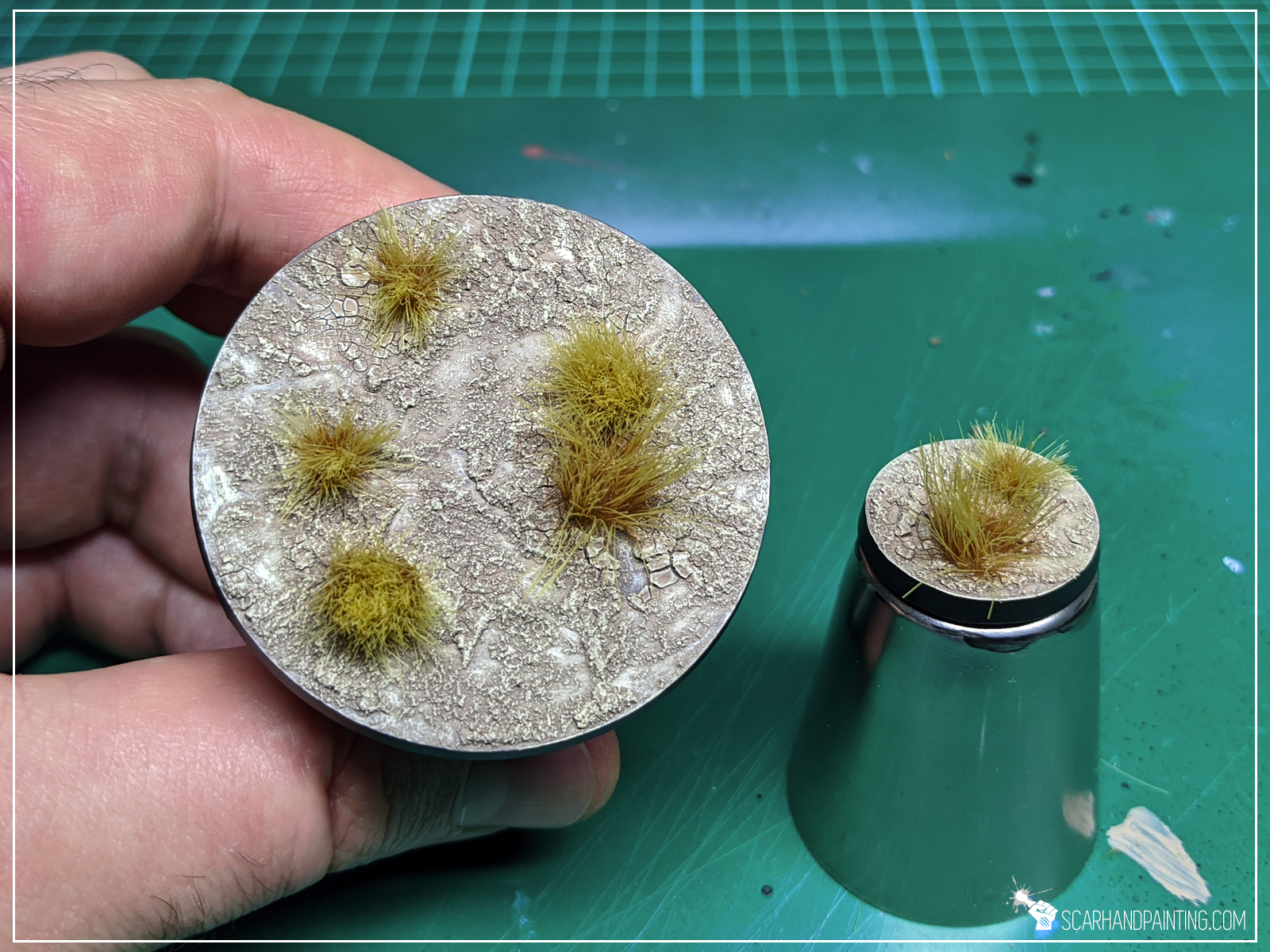

Here’s how the finished base looks like. 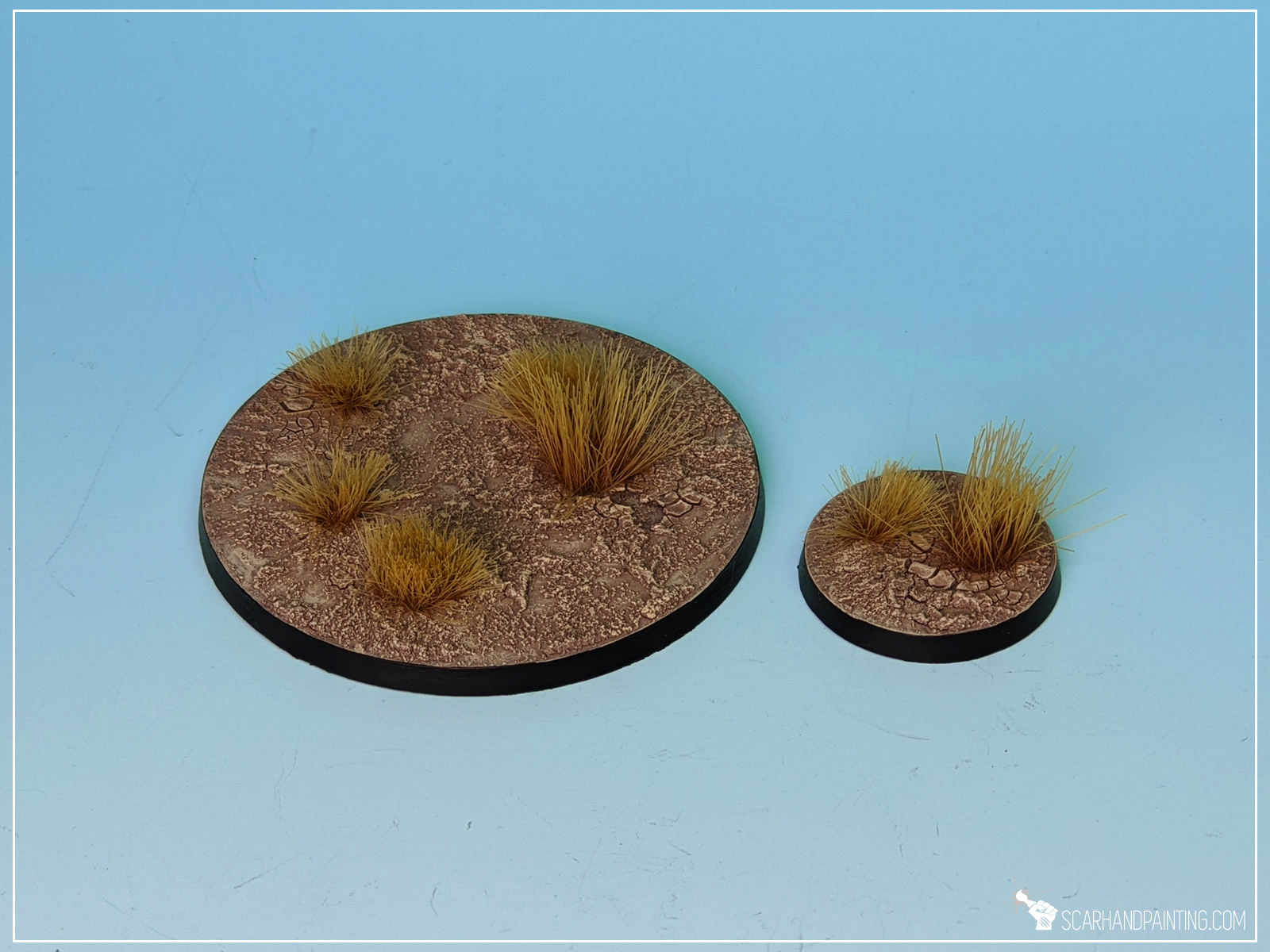
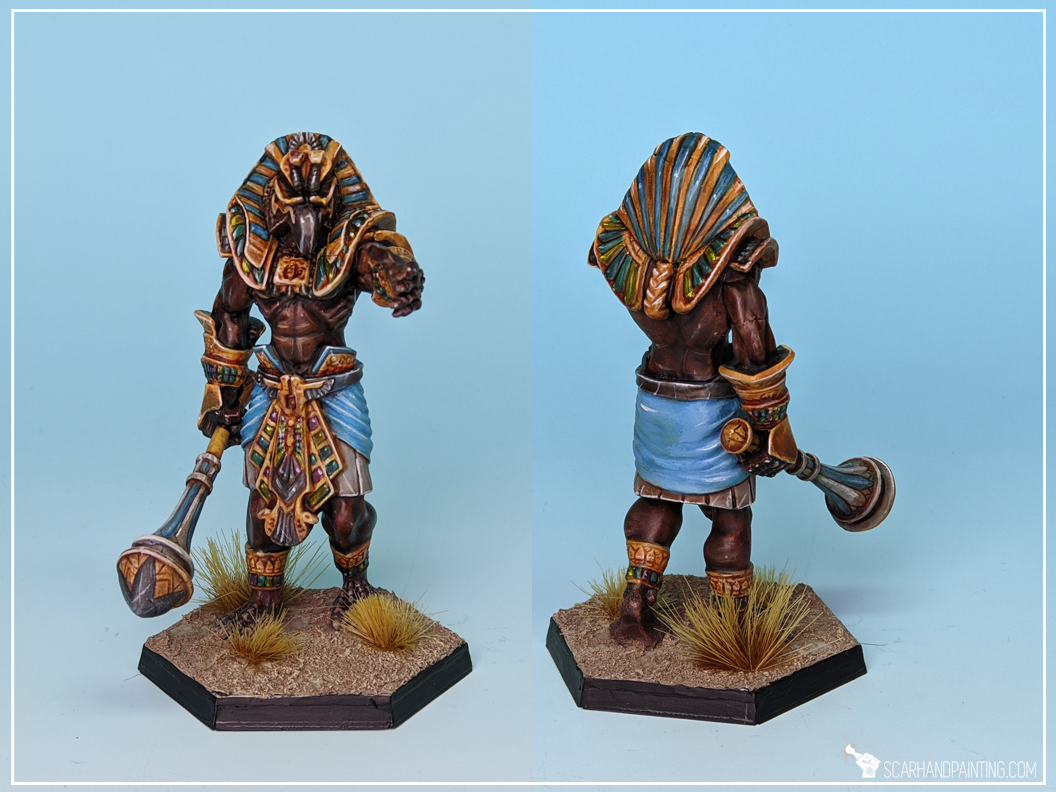
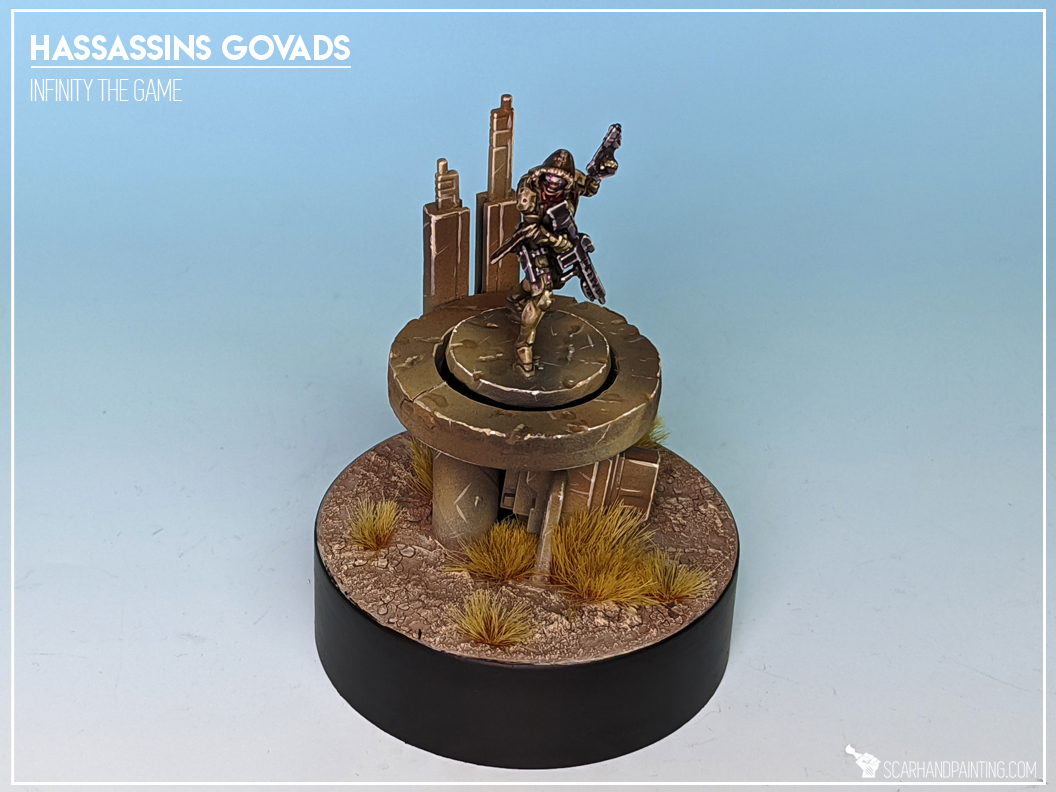

Welcome to Painting Marbe tutorial. Here I will take you on a Step-by-step trip through the process of painting marble the same way as seen at: Gallery: Horus Lupercal
Before we start, some notes:

Step one: Undercoat
I started with a solid layer of Vallejo German Red Brown. Any similar colour would do.
Step two: Base texture
For this step I used a life hack. I took few pieces of steel wool, taped them together and used them as a stencil. I then airbrushed pure white paint through the stencil and onto the bases.
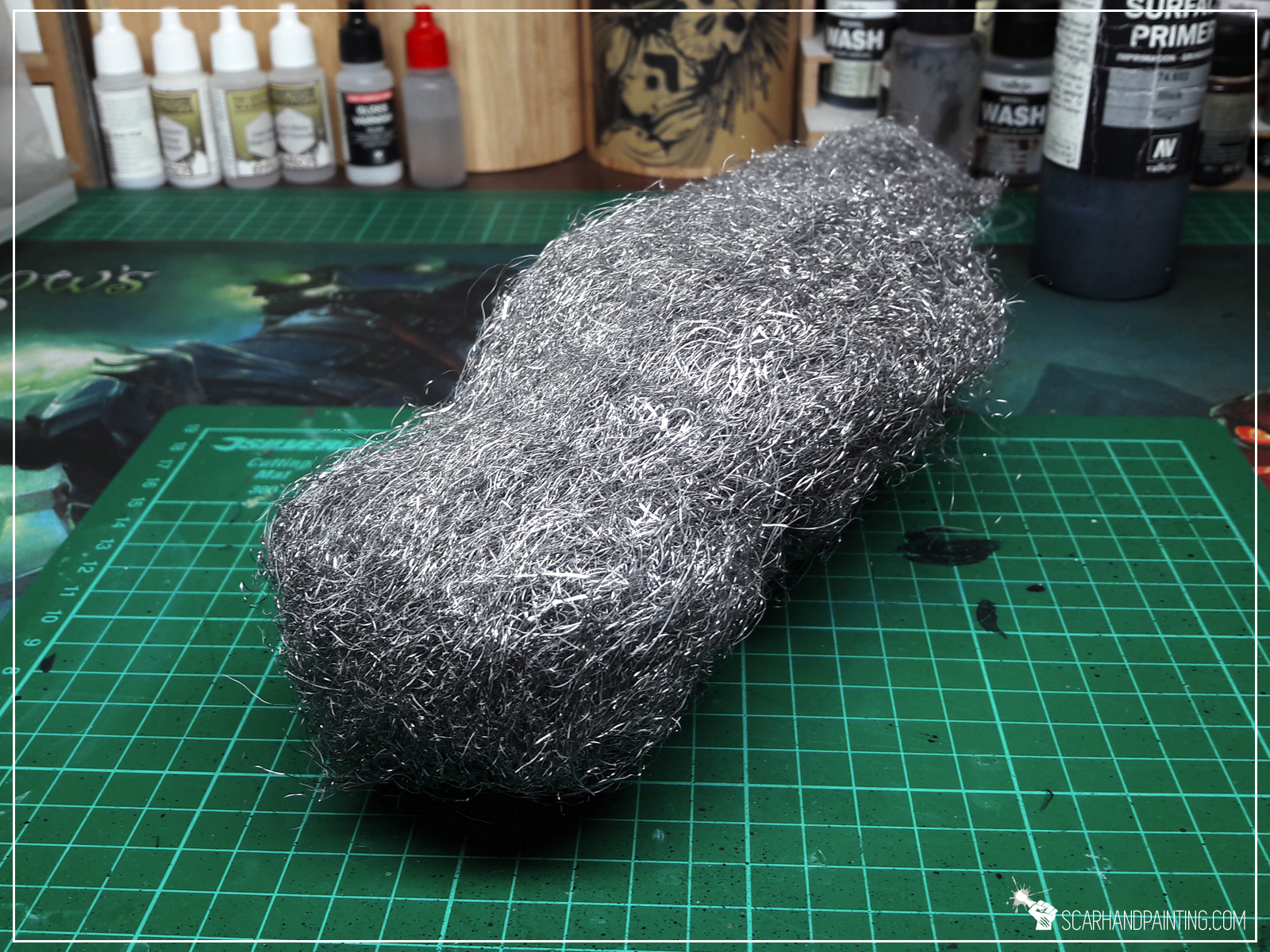


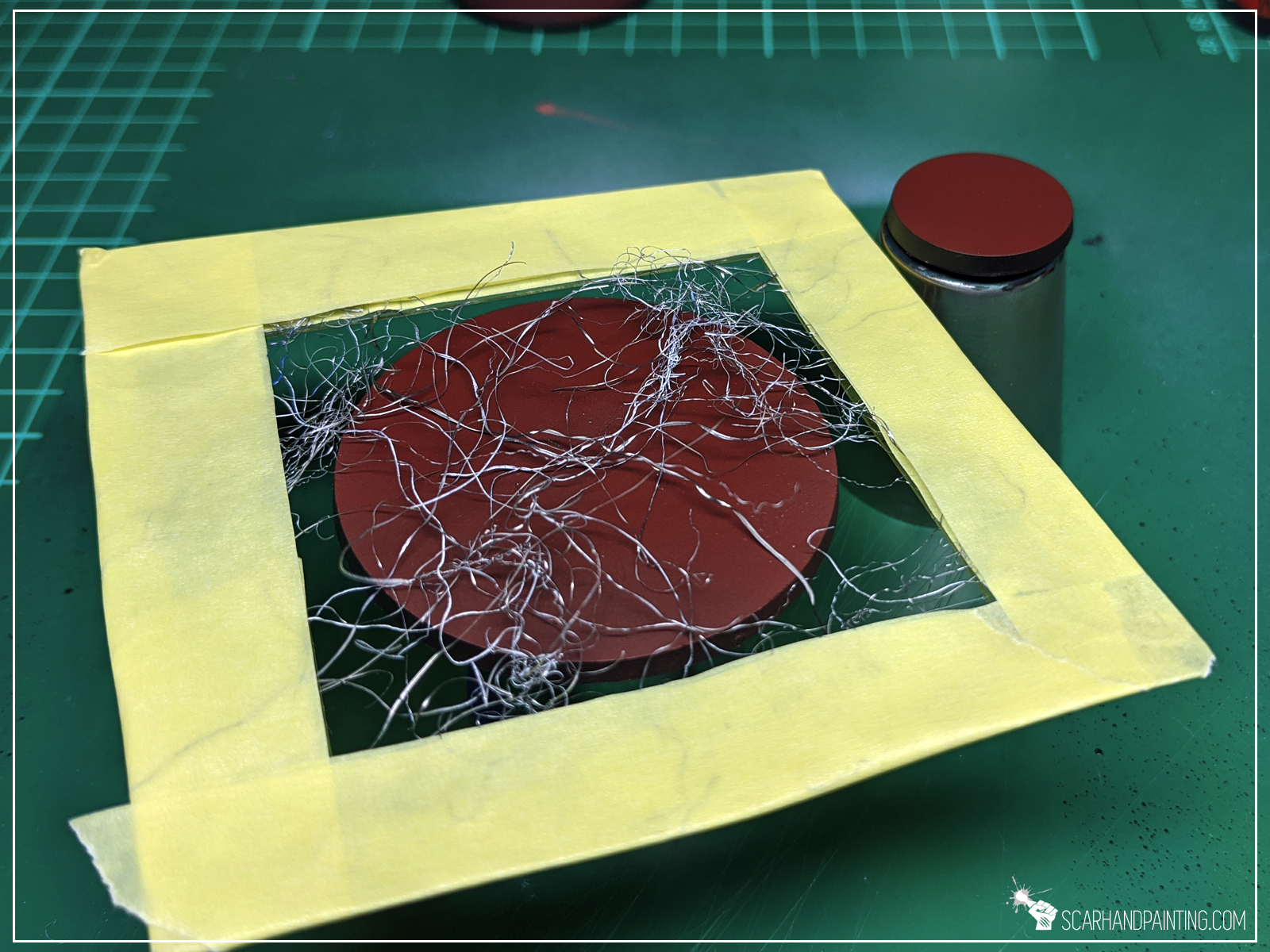
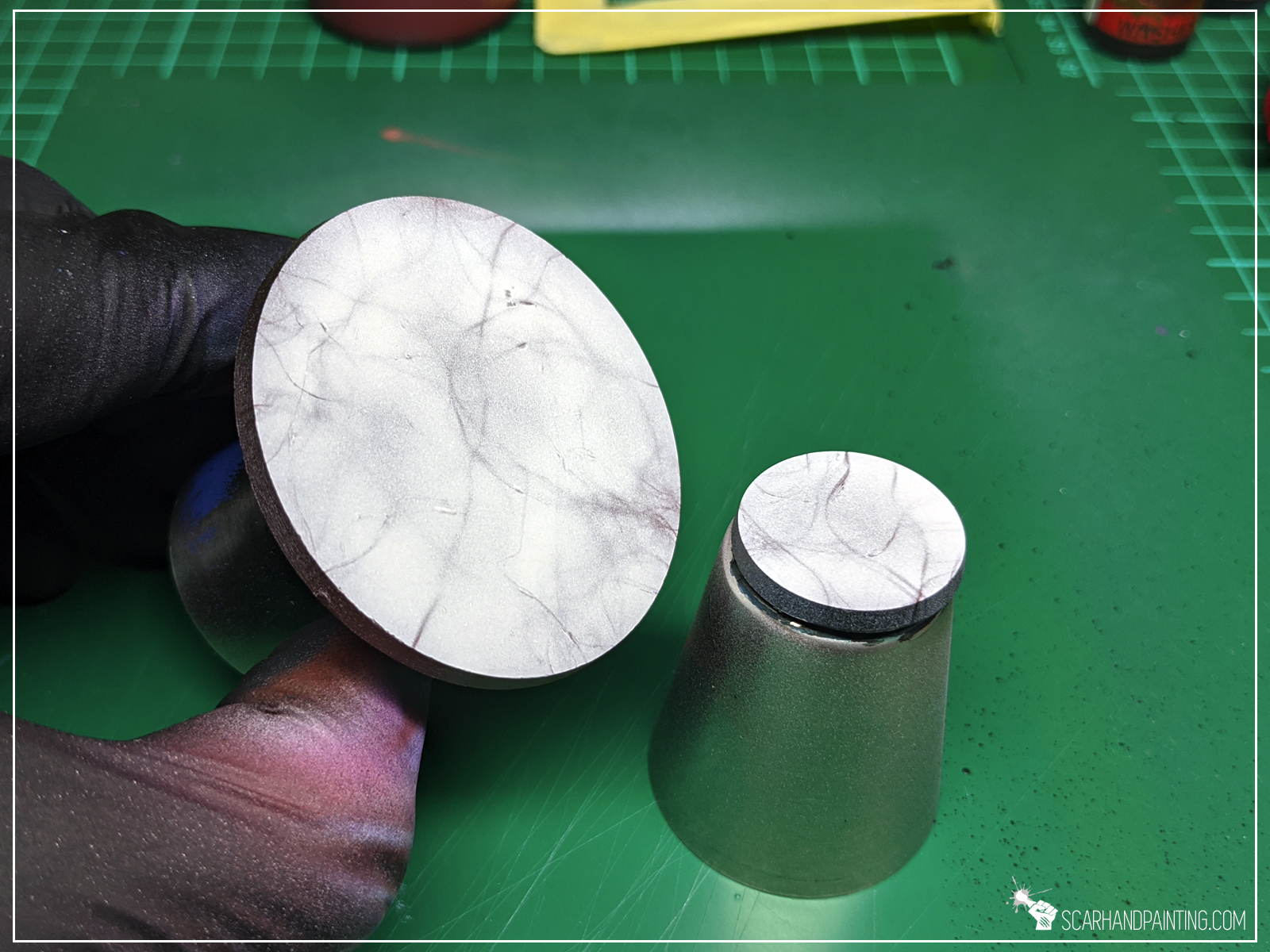
Step three: Texture
Next I applied more layers of marble texture. This time I manually applied irregular stains of Army Painter Strong Tone Ink, waited half a minute then removed the paint with a paper towel. I then repeated the process once again applying and then removing excess Strong Tone Ink.

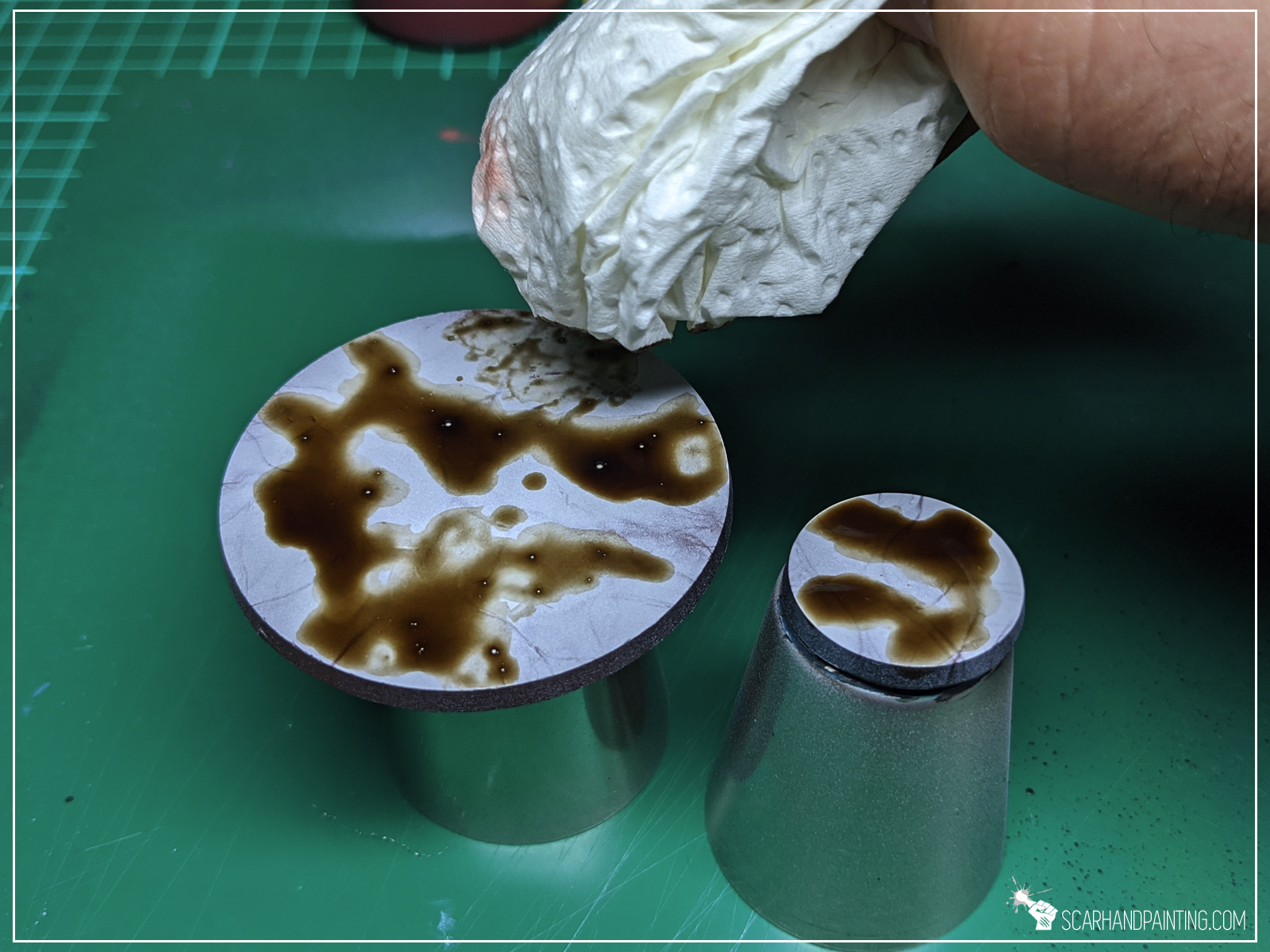

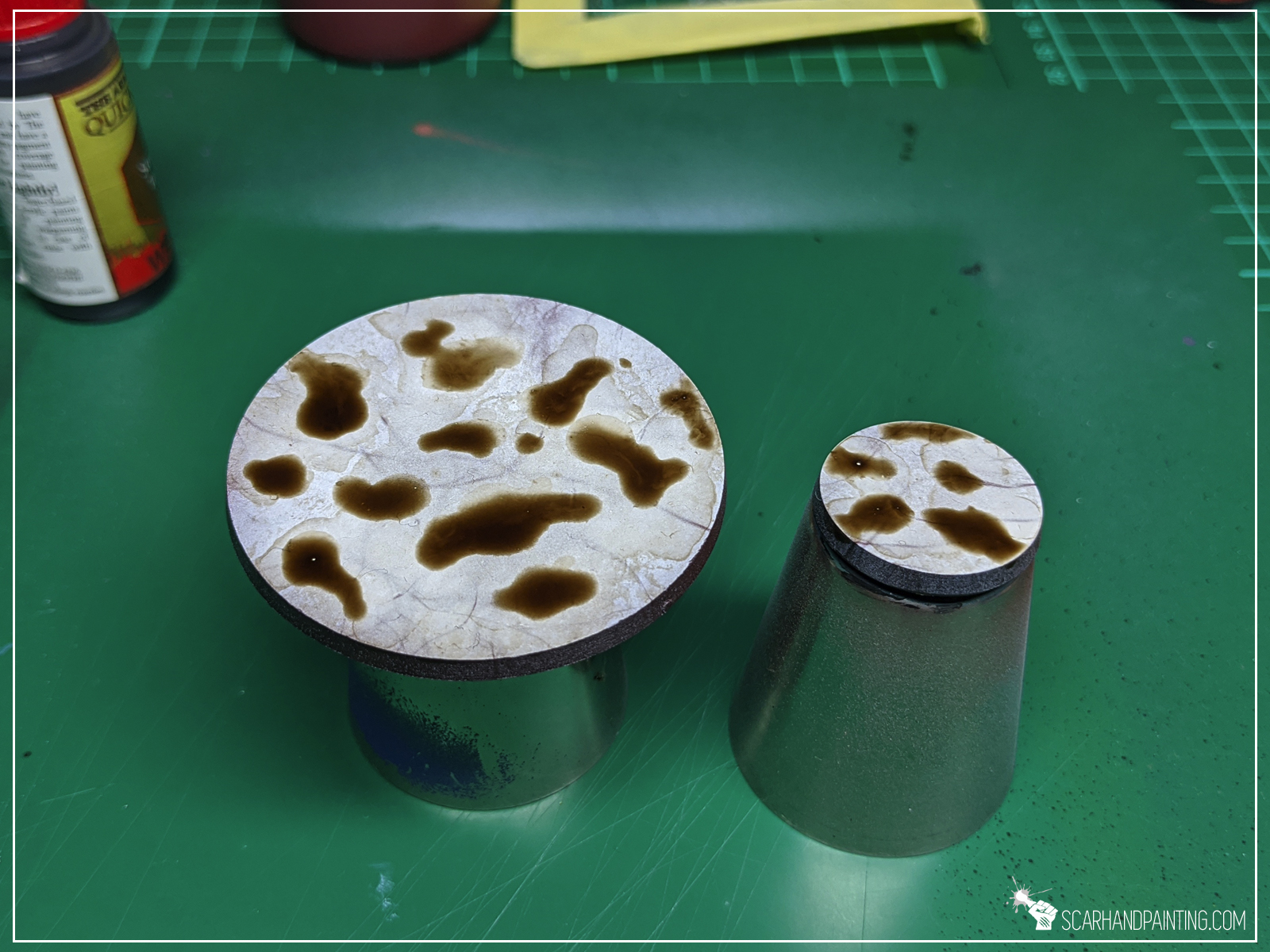
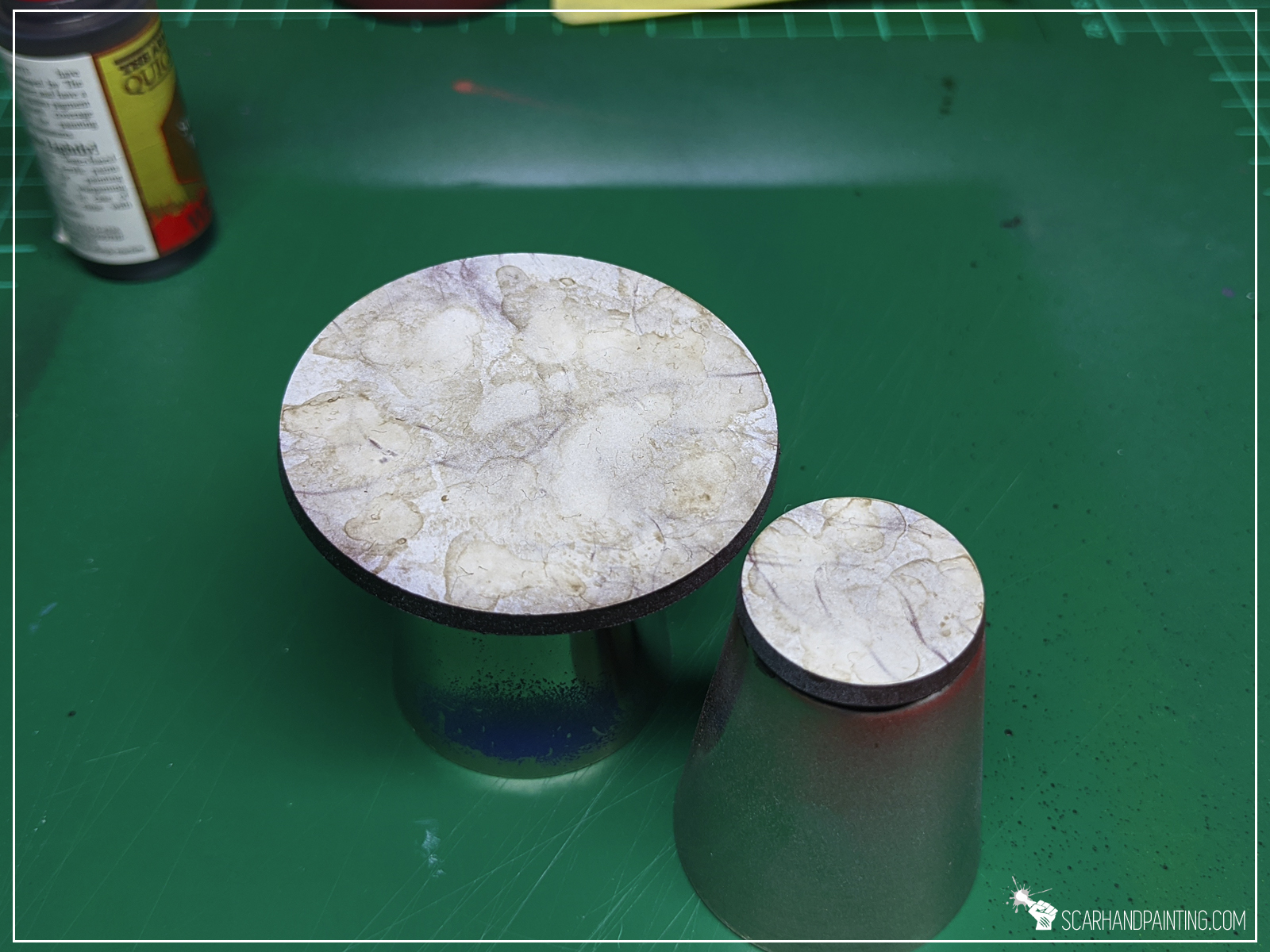
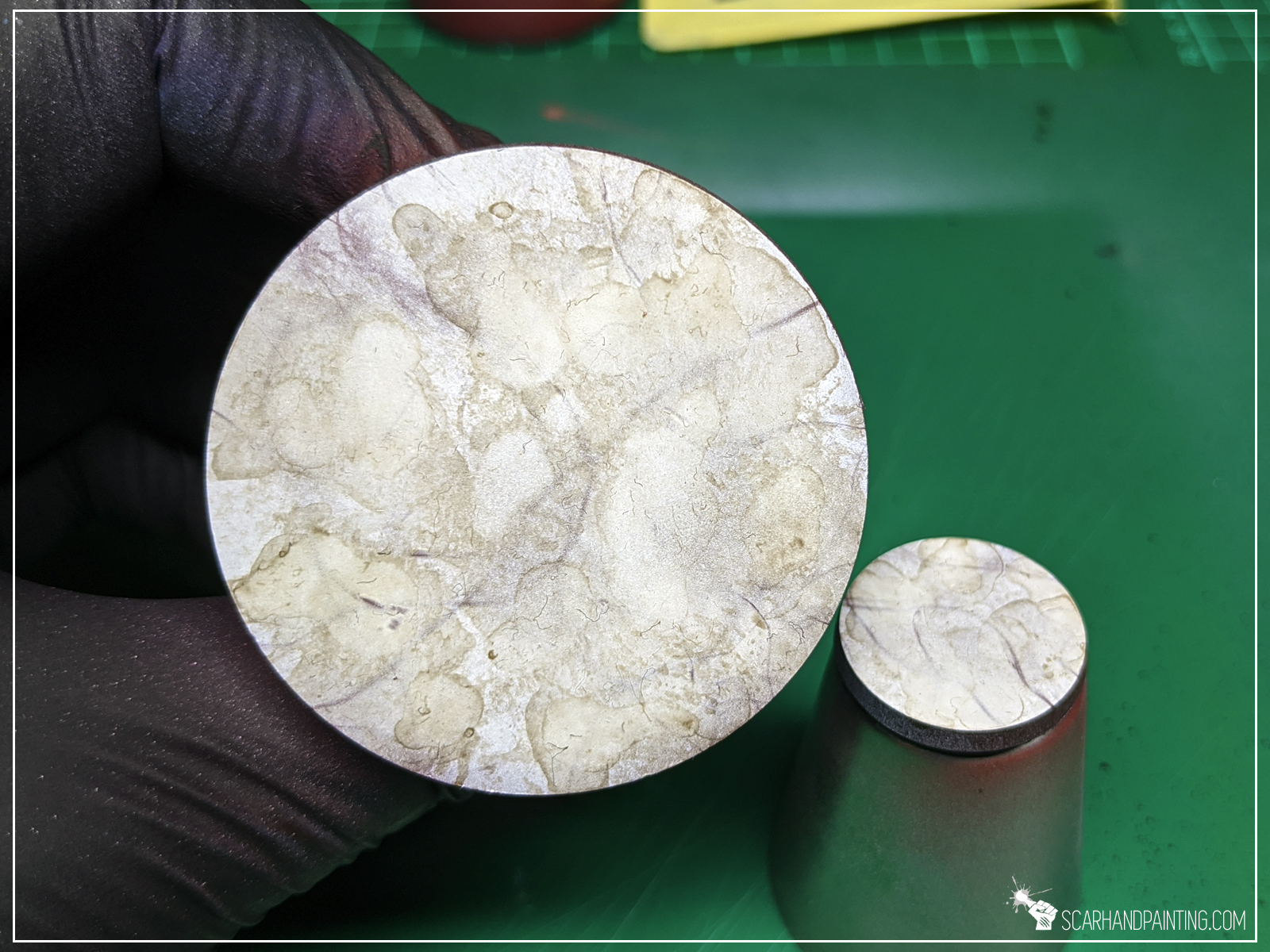
Step four: Sealing the colour
I then painted entire base with Army Painter Soft Tone Ink thinned with Games Workshop Lahmian Medium. I tried to keep the layer smooth and even.
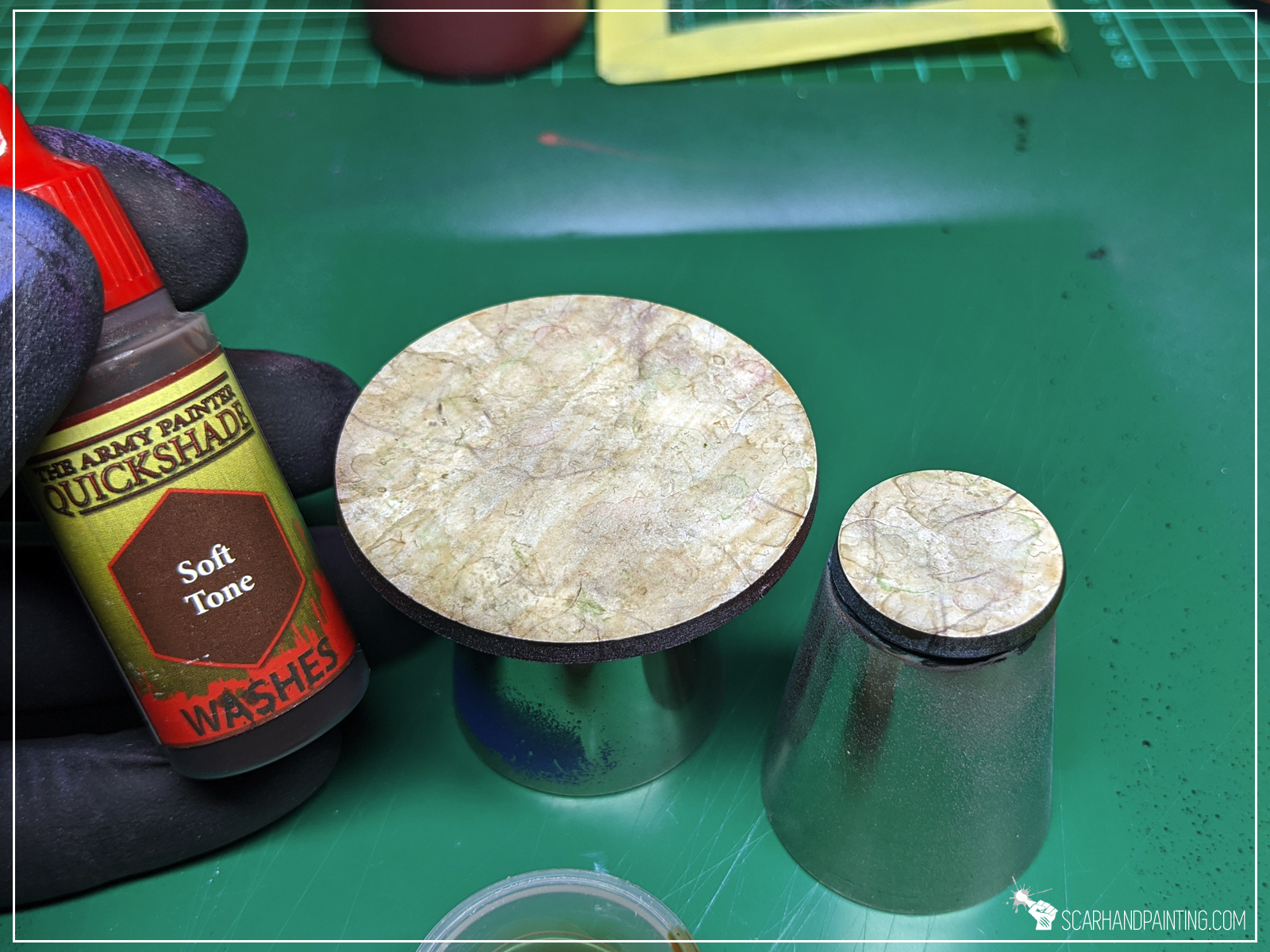
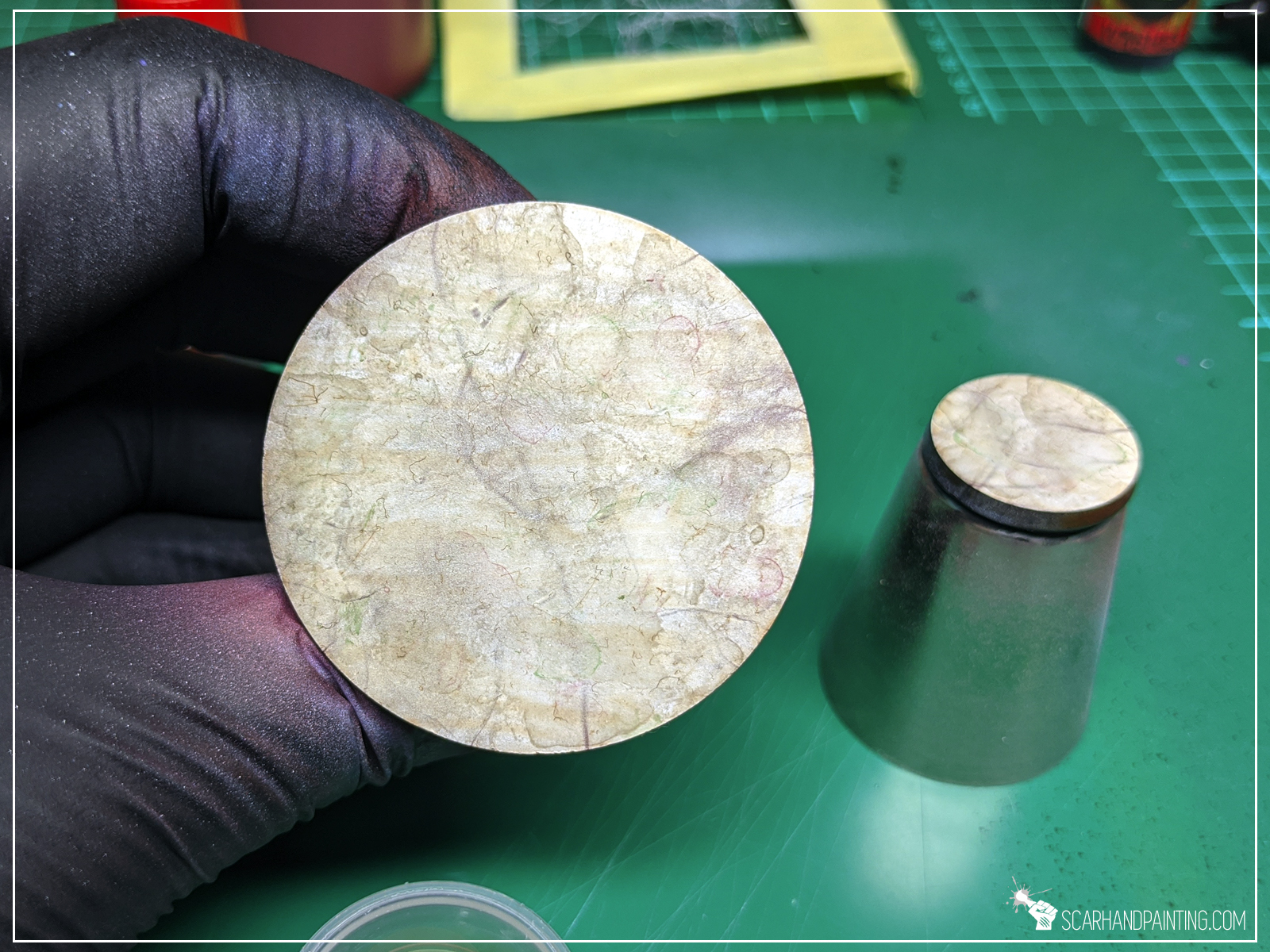
Step five: Gloss
Finally I applied two layers of airbrushed Gloss Varnish. This resulted in a nice polished glossy look. Depending on the effect you aim for Gloss Varnish can be switched with either Satin ot pure Matt.
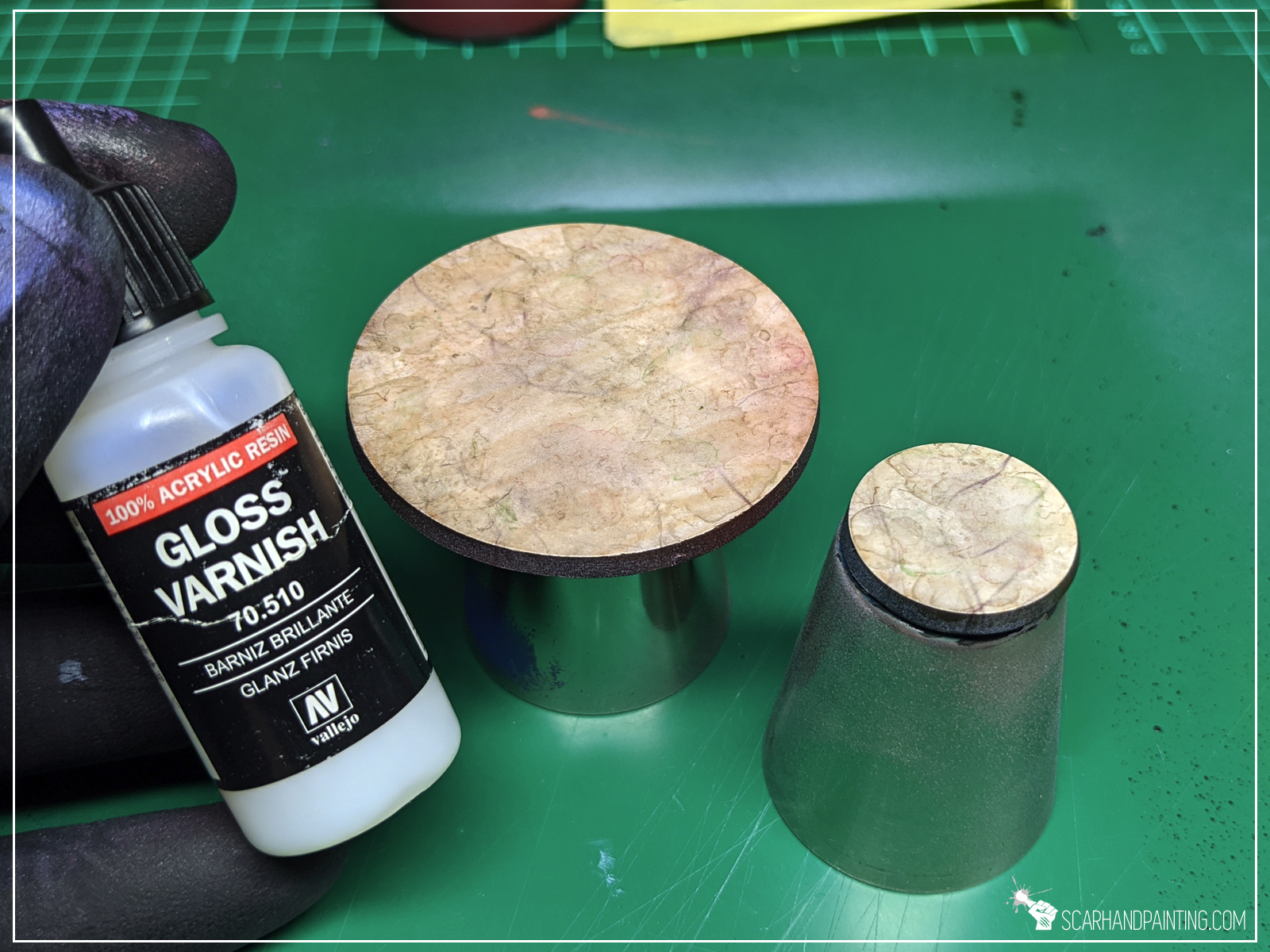
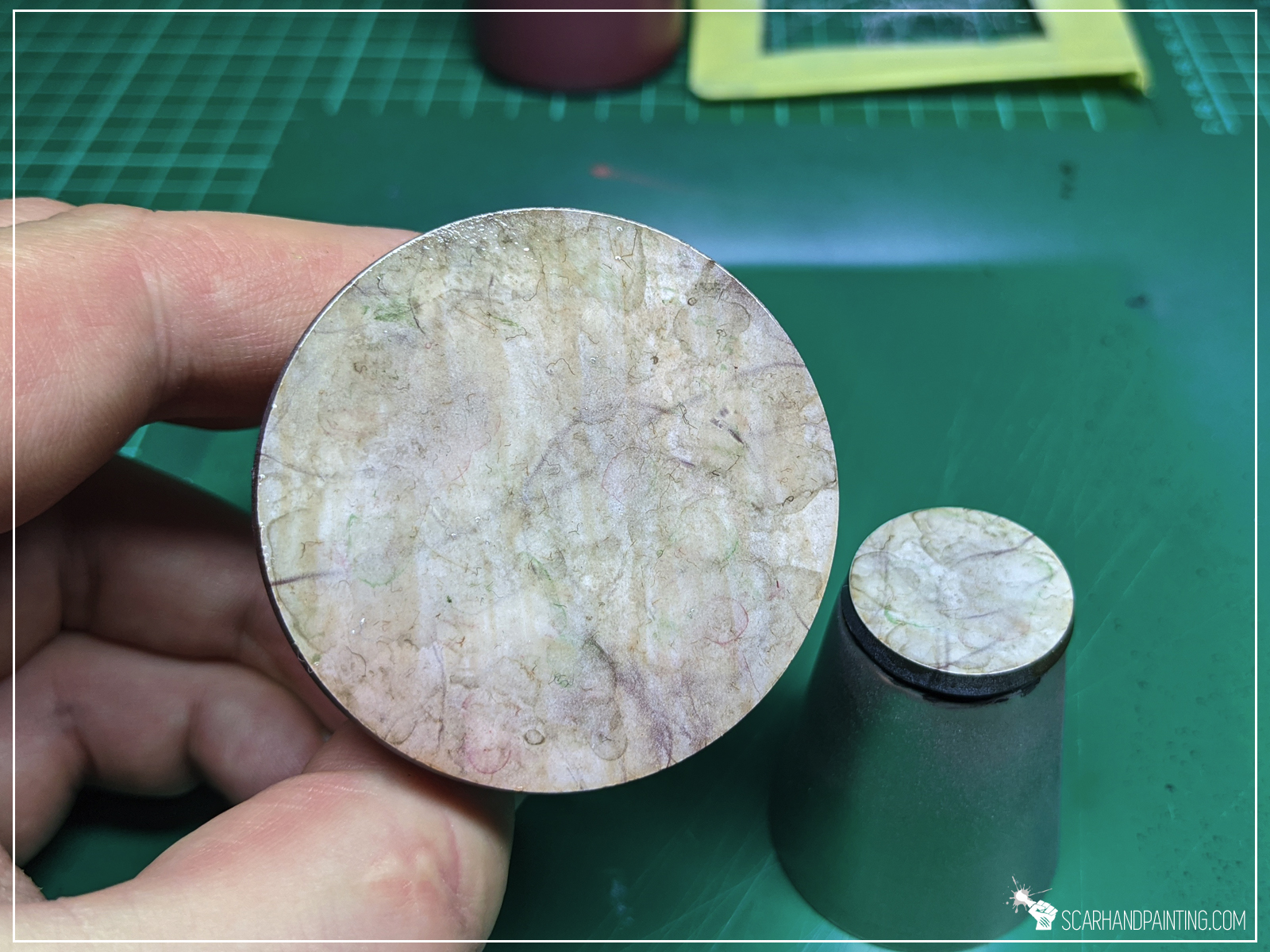

Here’s how the finished base looks like.


Note from the author: This tutorial is by far the most popular article on Scarhandpainting.com. It was first published in early 2016 and then refurbished exactly four years later. I hope you enjoy this new look and that the tutorial is now much easier to follow. Comments and Critique are welcome.

I see a model and I want it painted black
No colors anymore I want them to turn black
I see the minis go by painted in studio schemes
I have to turn my head until my darkness wins
I see a line of parts and they’re all painted black
With primer and my brush both never to come back
I see people turn their heads and quickly look away
Like a newby painter it just happens every day
I look inside myself and see my heart is black
I see my minis I must have them painted black
Maybe then I’ll wash away and not have to paint the lines
It’s not easy highlightin’, when your whole mini’s black…
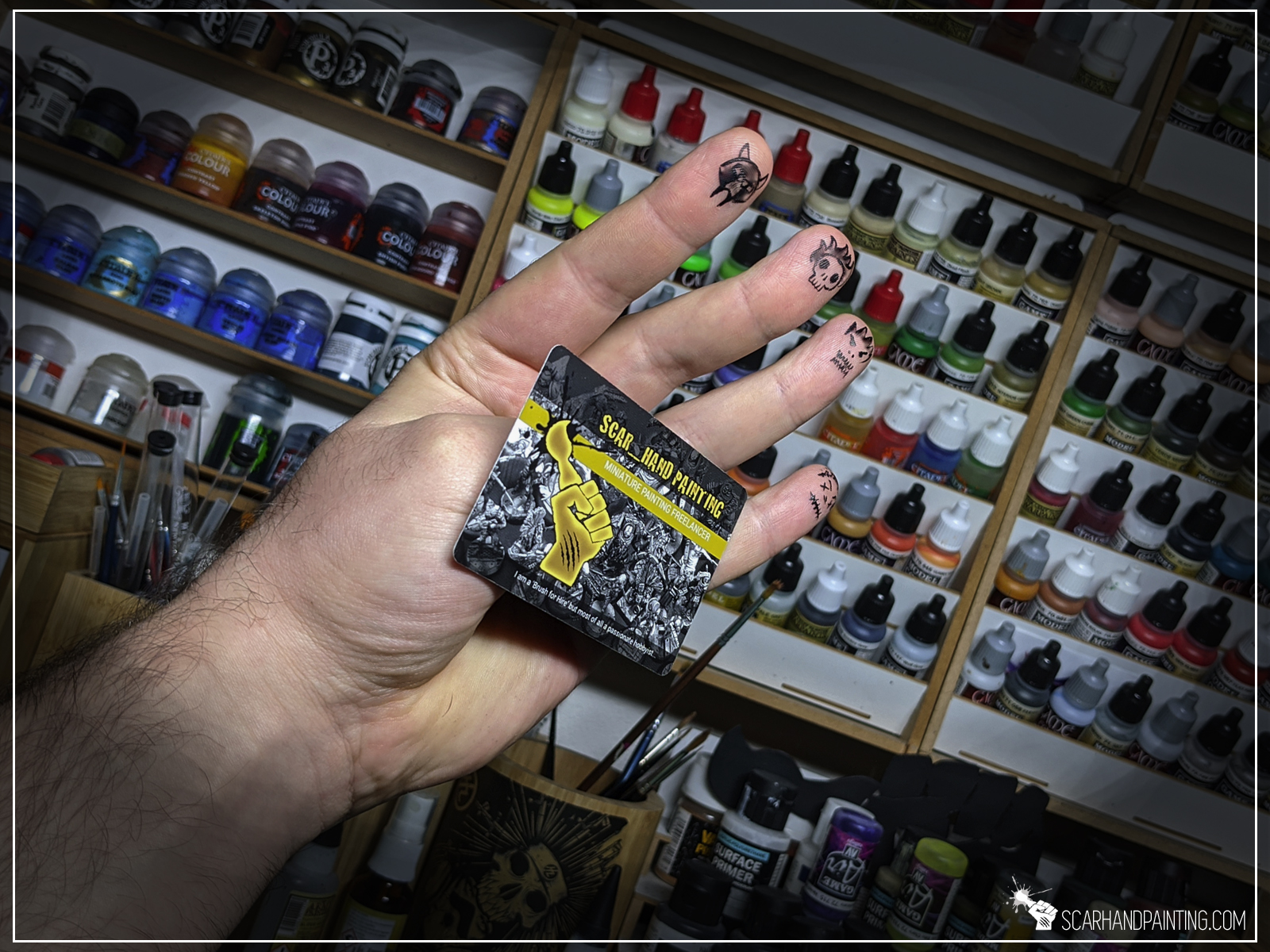
Another twelve months and a wide range of awesome projects accomplished – all dim in face of the latest developments. My family is now four. Basia, my daughter, joined me, my wife Anna and our dog D.Va to form a quartet that will shake the world! Not your world of course – but mine… totally!
Thus this anniversary is sponsored by number four marking Scarhandpainting.com’s fourth birthday and a new era in my life.
For those of you wandering how an arrival of a young child impacts a commissioned miniature painter’s life I can only say this: Everything is turned upside down and any trace of a coherent painting routine is dead. I’m used to an empty house, clear mind and being a master of myself. Nowadays I still manage to paint, but it’s just totally different than before.

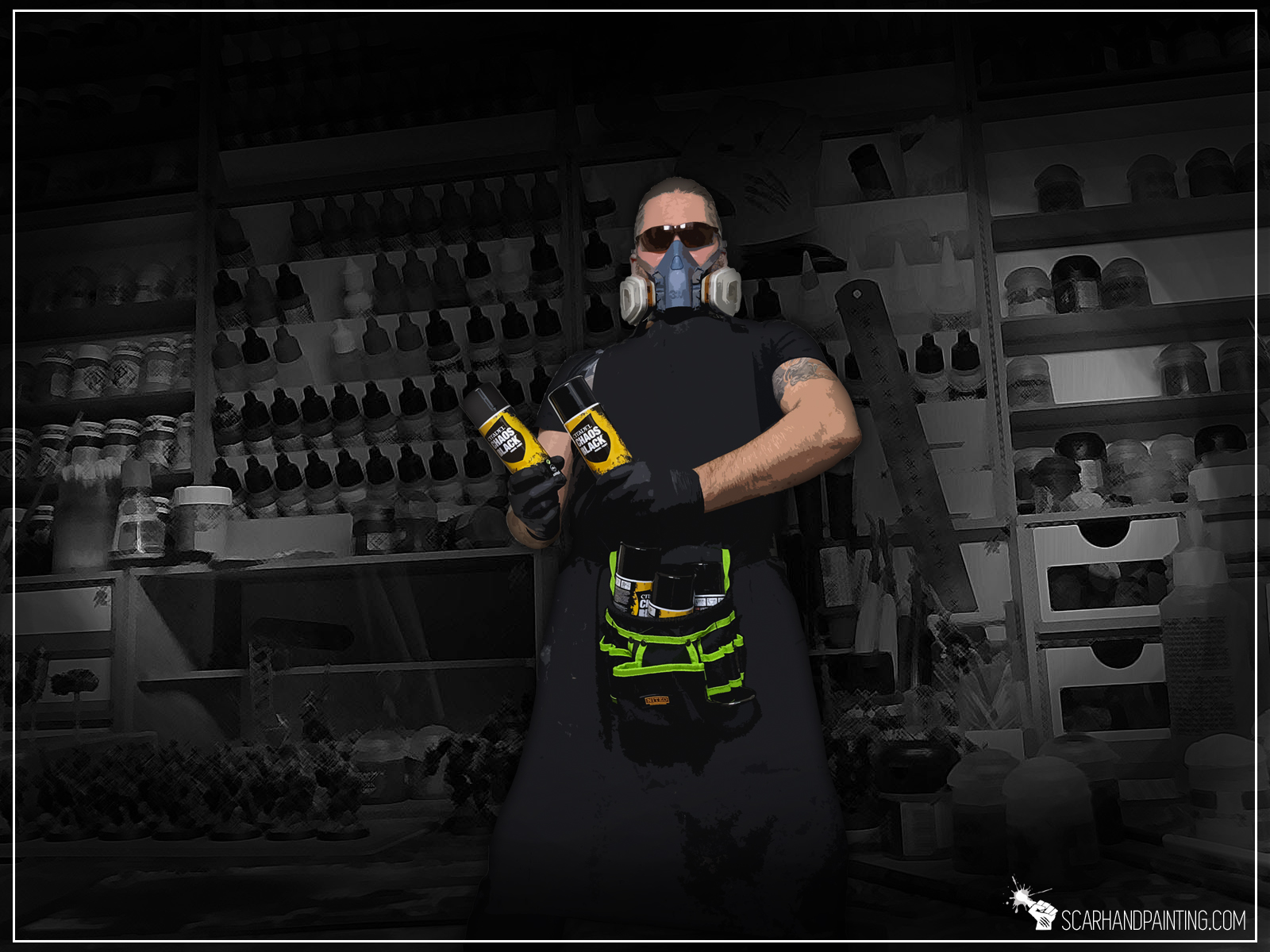
Back to miniatures – 2019 was a year of quality over quantity. I took on some really challenging projects and feel I learned a lot thanks to it. Last year tested my prowess as a painter and kept me switching between comfort zone and the unknown. I believe that constant self improvement is imperative in this line of work, and appreciate how 2019 abounded in opportunities for me to take bold steps. Looking back I can honestly say I feel accomplished as a hobbyist.
It’s cool to see that Scarhandpainting.com Blog popularity is holding up. With only 29 articles published hitting over 100k visits in last twelve months is a feat! This year I plan to revamp and update some of the old articles, as well as bring in new ones – all in hope to keep you peeps entertained! ;*
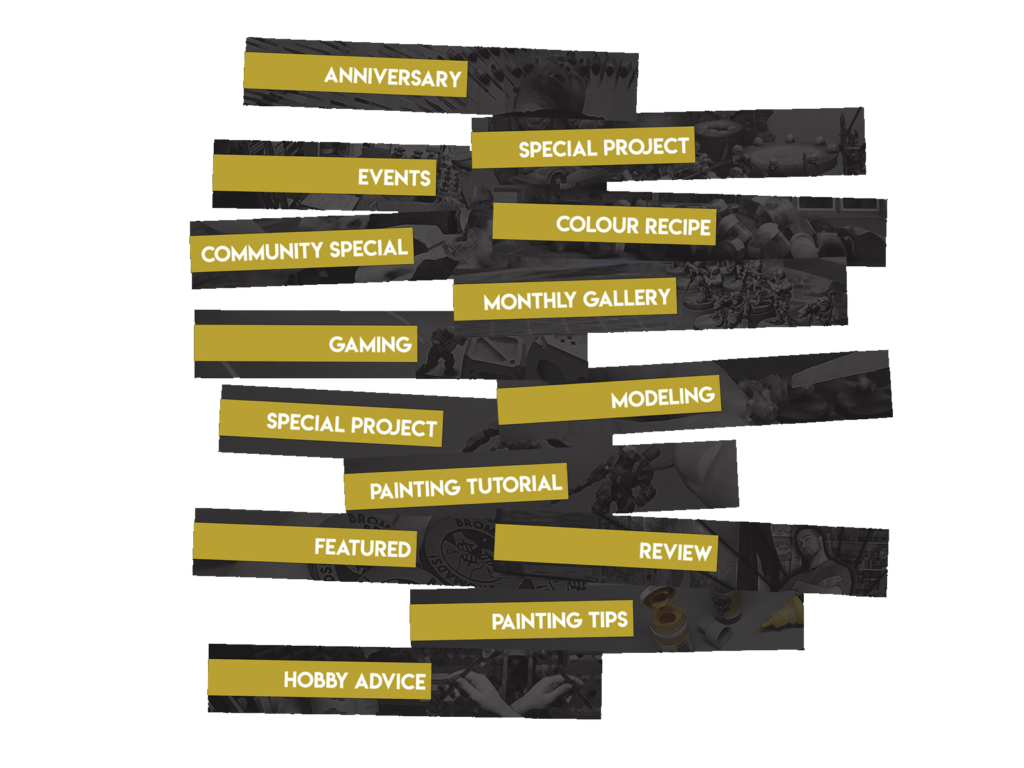
29 new articles showed up since previous anniversary. These are the ones you found to be the most interesting…
Colour Recipes: Infinity Aleph S.S.S.
Review: Guild Ball Legacy Collection (Resin) Mortician’s
“Infinity Cars” Special Project
Colour Recipes: Infinity Yu-Jing IS
…and unexpected TOP 3 of all time favorites:
TUTORIAL: PAINTING MARBLE 16k views!
TUTORIAL: INFINITY DIY CONSOLE 13k views
TUTORIAL: INFINITY ‘DO IT YOURSELF’ GAMING TERRAIN 8k views

Last year was fantastic! I enjoyed every bit of it and for this I would like to thank all of my friends and customers. You supported me, you gave me a job and let me live the way I love. That is the best gift a hobbyist like myself can hope for.
Special thanks to Sarah, Romana, Bettina, Michael, Andreas, Thomas, Max and Clemens. You guys humble me with your continuous support and trust.
I look forward to 2020 and all the cool stuff already scheduled. Some nice projects ahead so stay tuned and remember – if you want, or know someone who wants, to get miniatures painted – you know where to find me 😉

Here are some Colour Recipes for Sa’Cea Tau from Gallery: Tau Sa’Cea. Please take note that this is a simple colour scheme, not covering multiple overlapping layers and blends in between, that lead to the final product. It is supposed to be used as guideline not a step-by-step.

BLUE armour:
French Blue (Val), *
Ultramarine Blue (Val), *
Mix Ultramarine Blue (Val) 5:2 Light Sea Blue (Val), *
Black Wash For Dark Vehicles (Val), *
Hoeth Blue (GW), l&p
Glacier Blue (Val), l&p
GREY:
Dark Panzer Grey (Val), *
Cold Grey (Val), *
Wolf Grey (Val), l&p
Dark Tone Ink (AP), blend
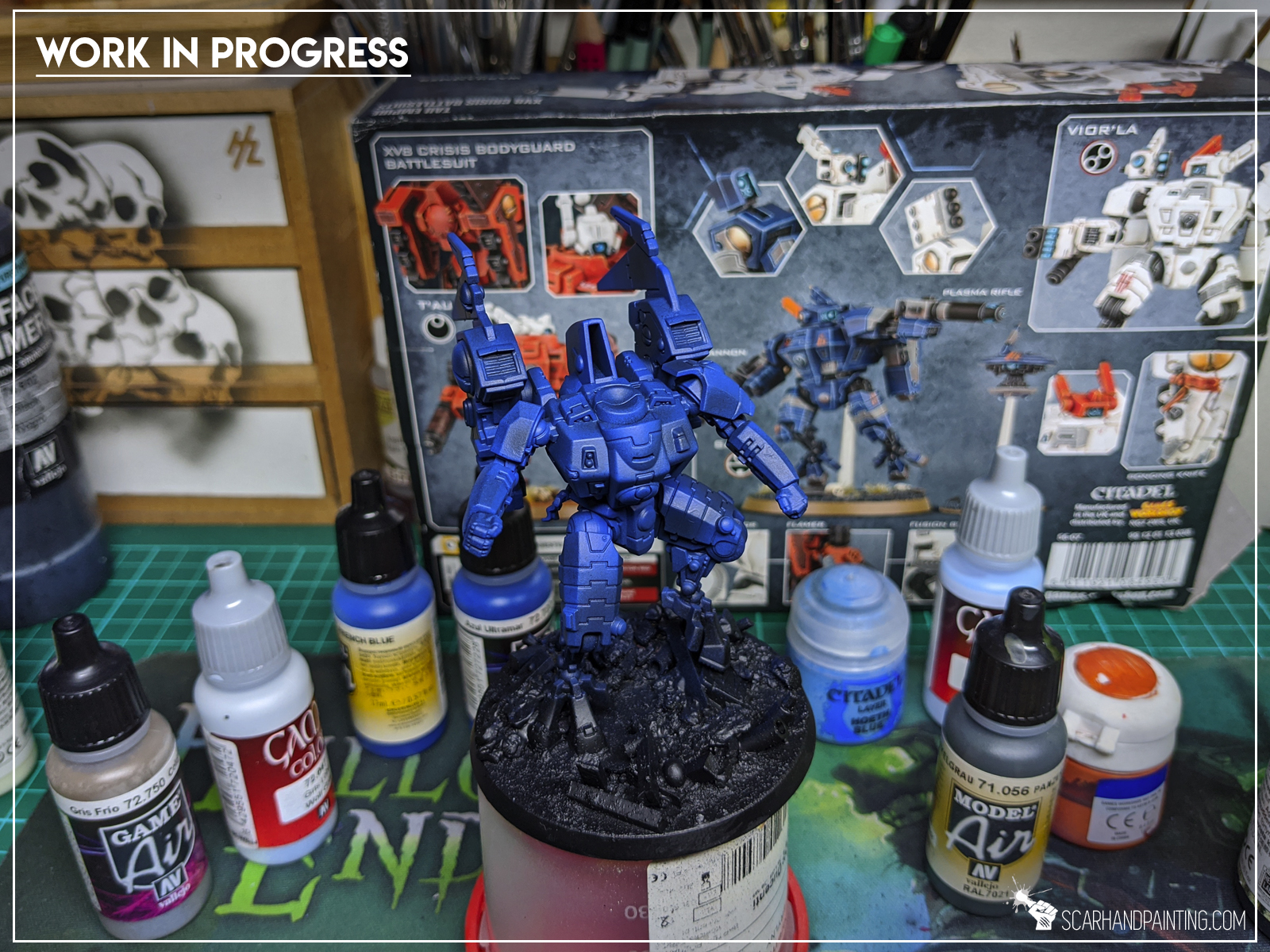
ORANGE:
Macharius Solar Orange (GW),
Fire Dragon Bright (GW),
Elf Skintone (Val), l&p
GREEN OSL:
Duck Egg Green (Val), *
Light Livery Green (Val), *
Ivory (Val), l&p

SKIN:
Shadow Grey (GW),
Mix Shadow Grey (GW) 1:1 Frostbite (P3),
Mix Shadow Grey (GW) 1:2 Frostbite (P3), drbr
Frostbite (P3), Soft drbr
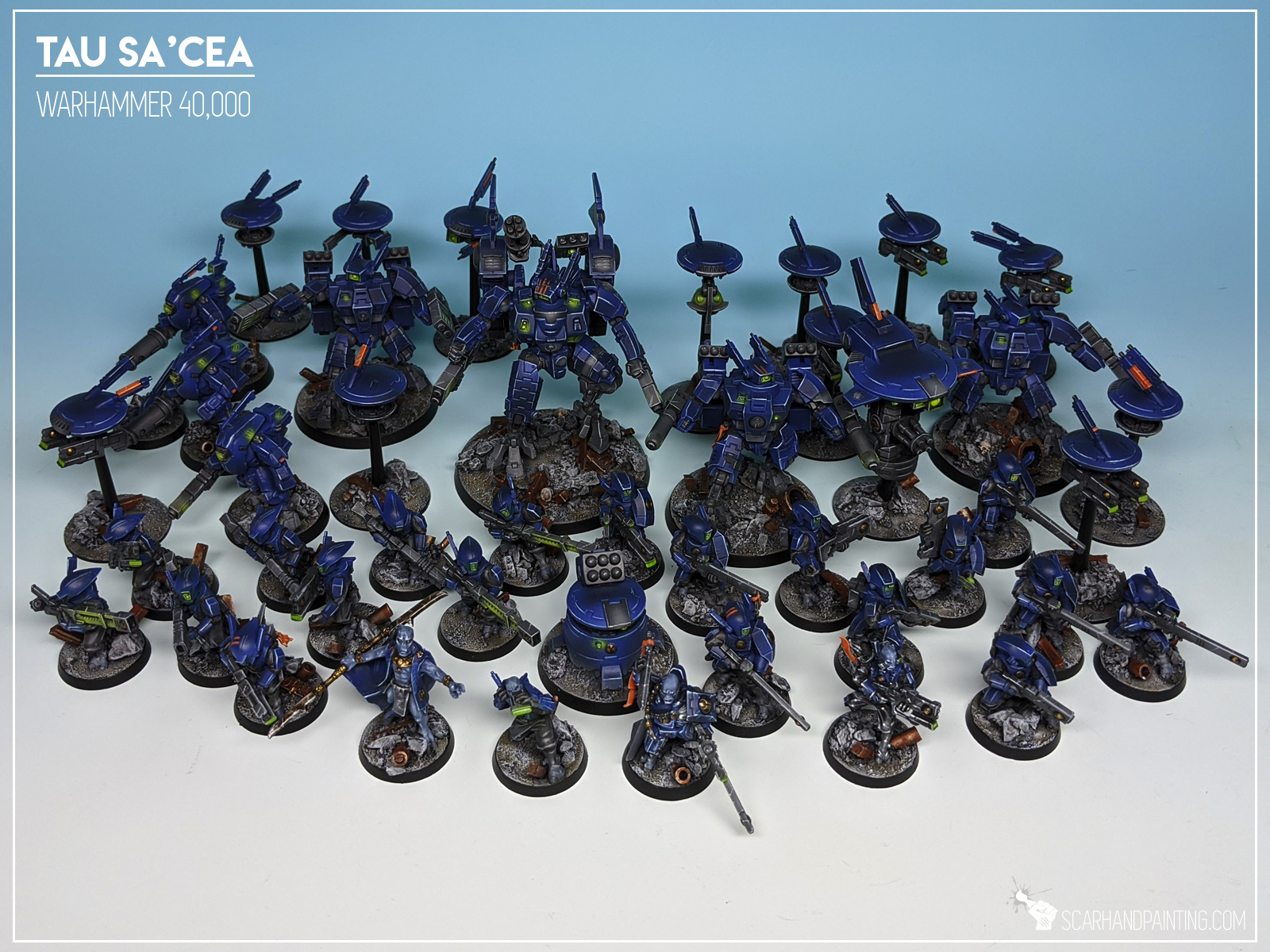
l&p – lines and points,
p – points,
bl – blend,
gl – glaze,
drbr – drybrush,
fltbr – flatbrush,
lobr – loaded brush,
stpl – stippling,
*Airbrushed (with multiple layers and mixes)

In this step-by-step tutorial I’m going to show you how to create Cityfight bases same way I did for Gallery: Tau Sa’Cea.

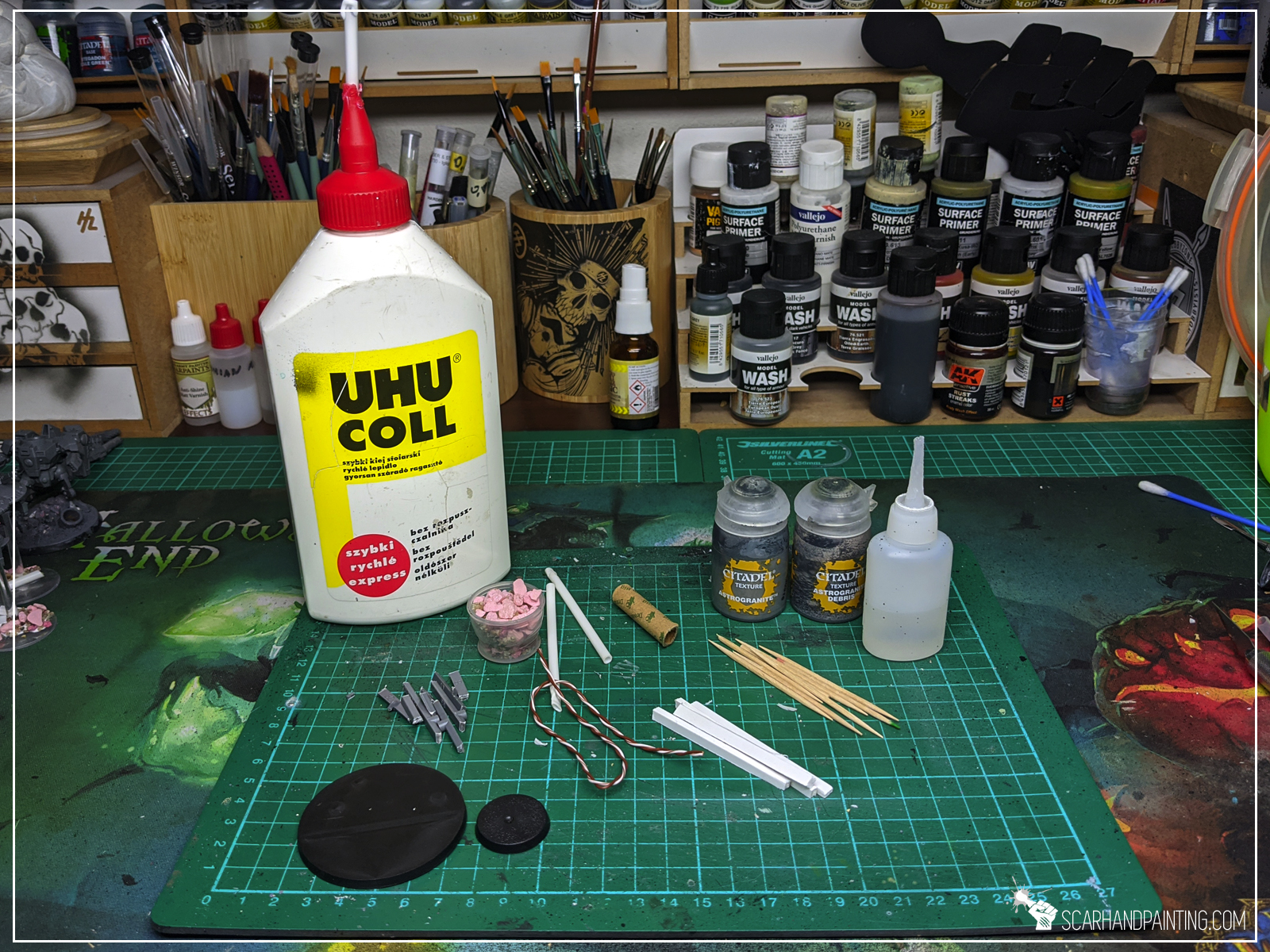
I used:
Step one: Special detail
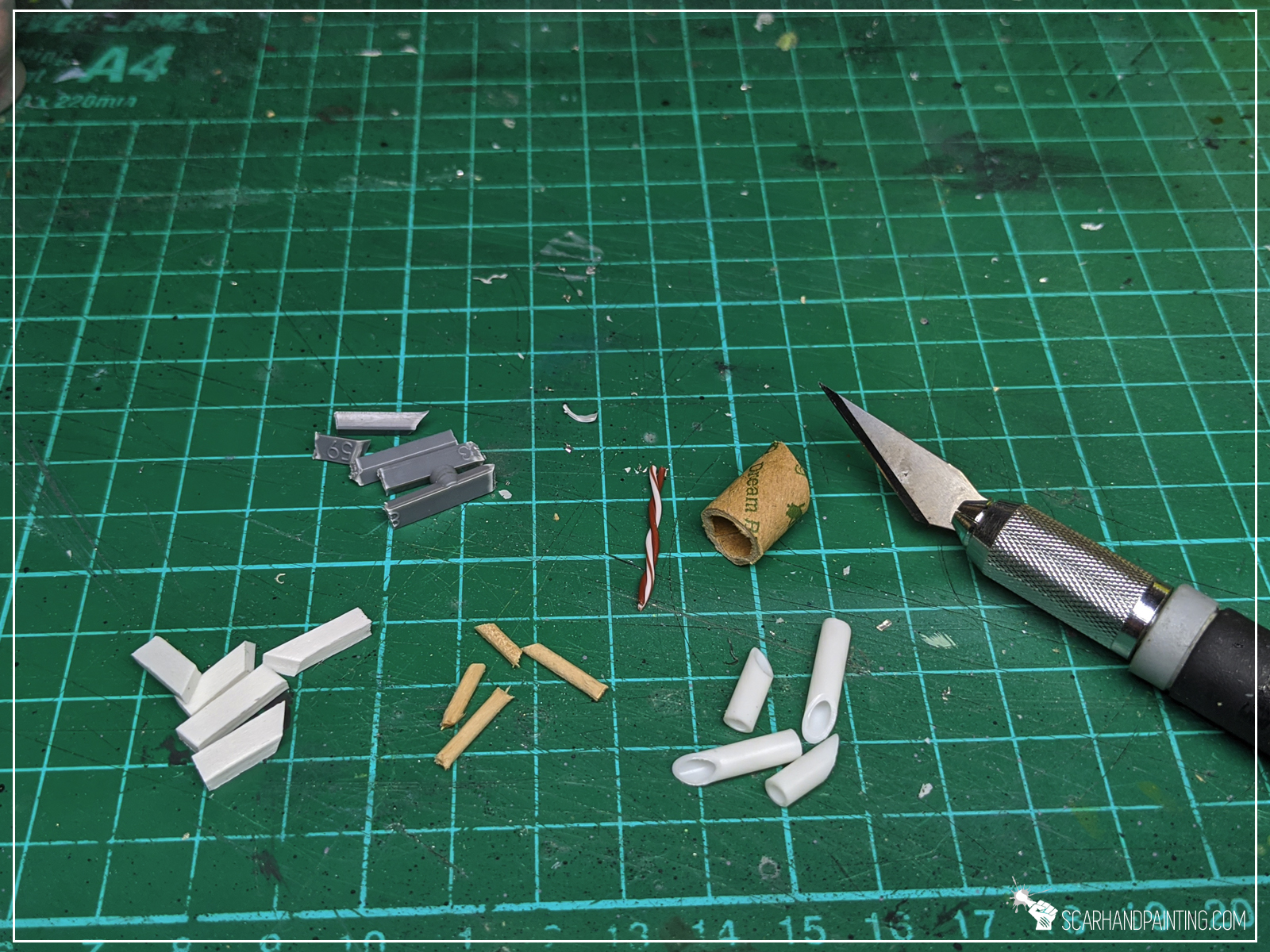

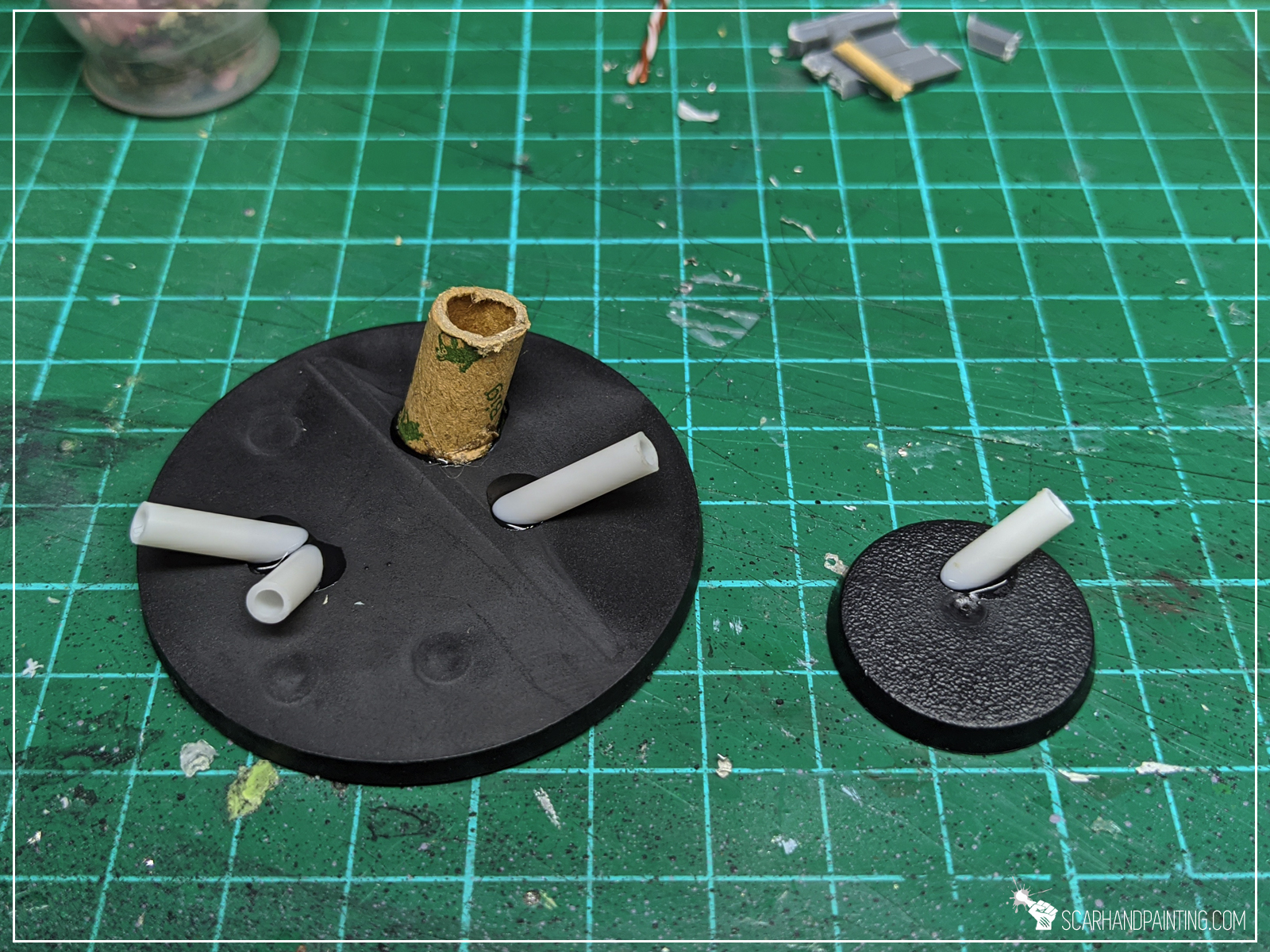

Using a hobby knife I cut all the sticks, sprues, toothpicks, plasticard and tube into small pieces. I made sure to cut one side of each piece at an angle, to better position each piece on the base. I then glued random pieces on top of a base using Super glue.
Step two: Gravel
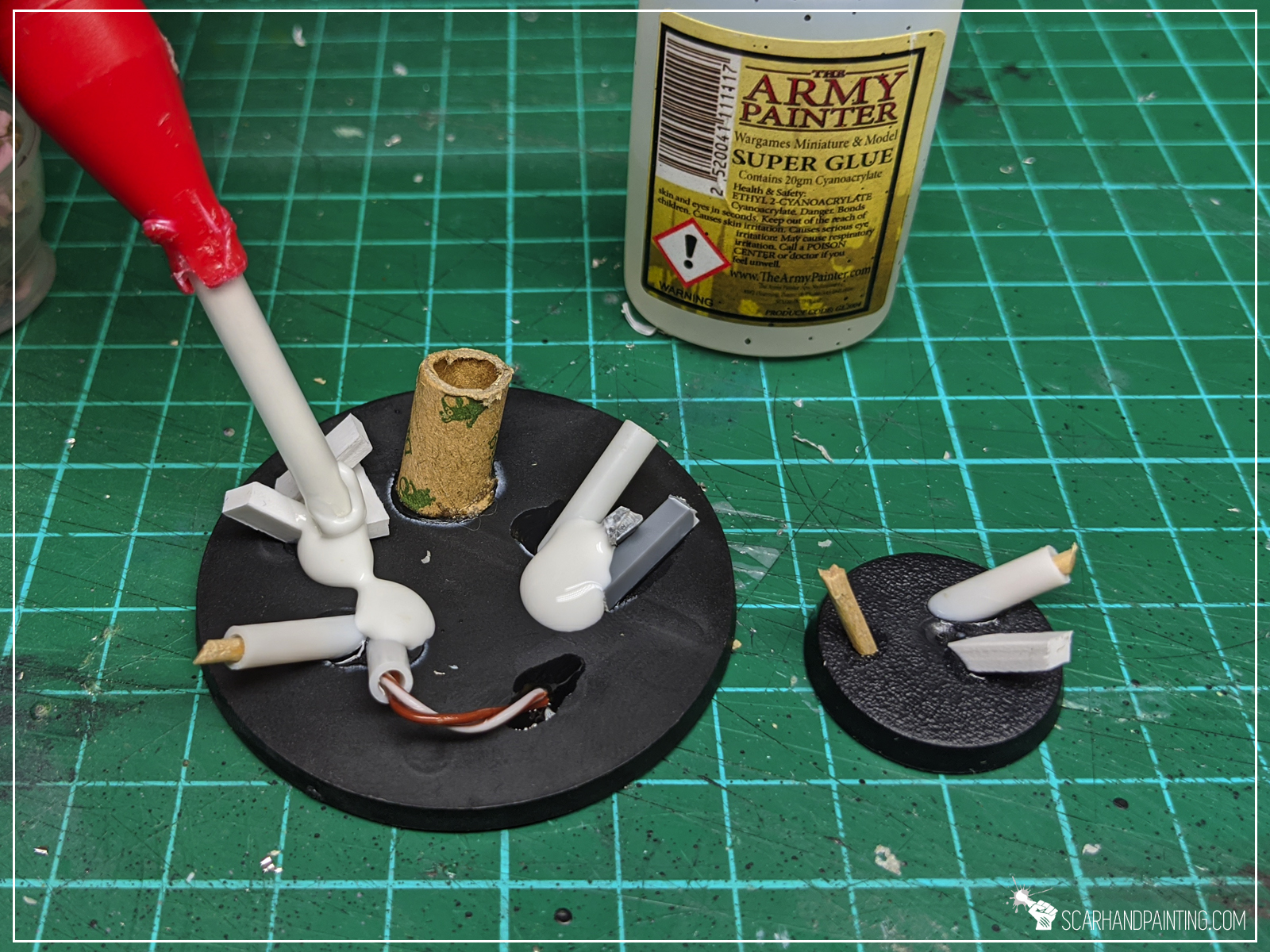
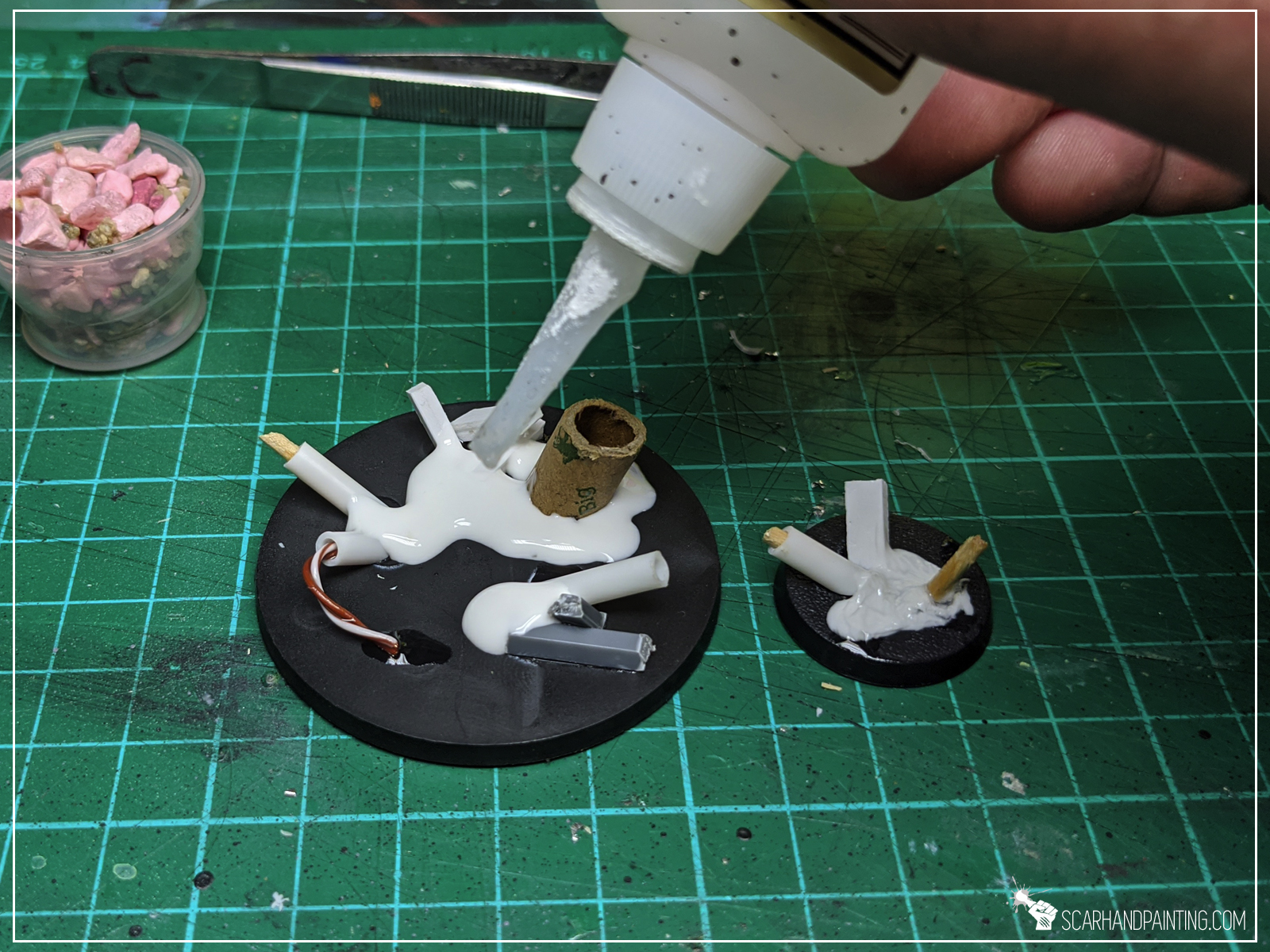


I applied PVA glue around previously glued pieces. I then applied Super glue on top of it and, before super glue hardened, covered entire thing with thick sand mixed with hobby gravel.
Step three: Texture
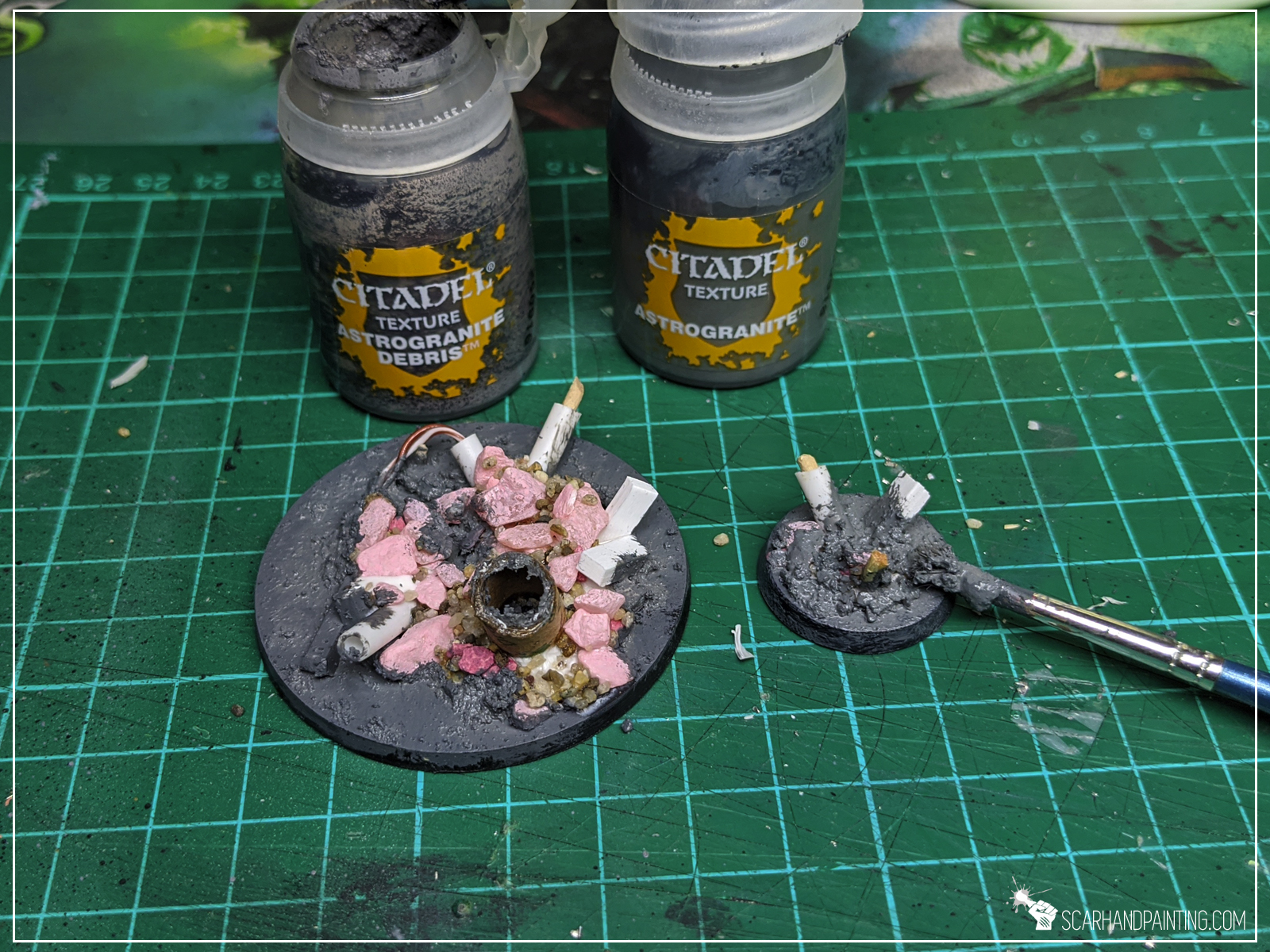
I then textured rest of the base using Games Workshop Astrogranite and Astrogranite Debris paints.
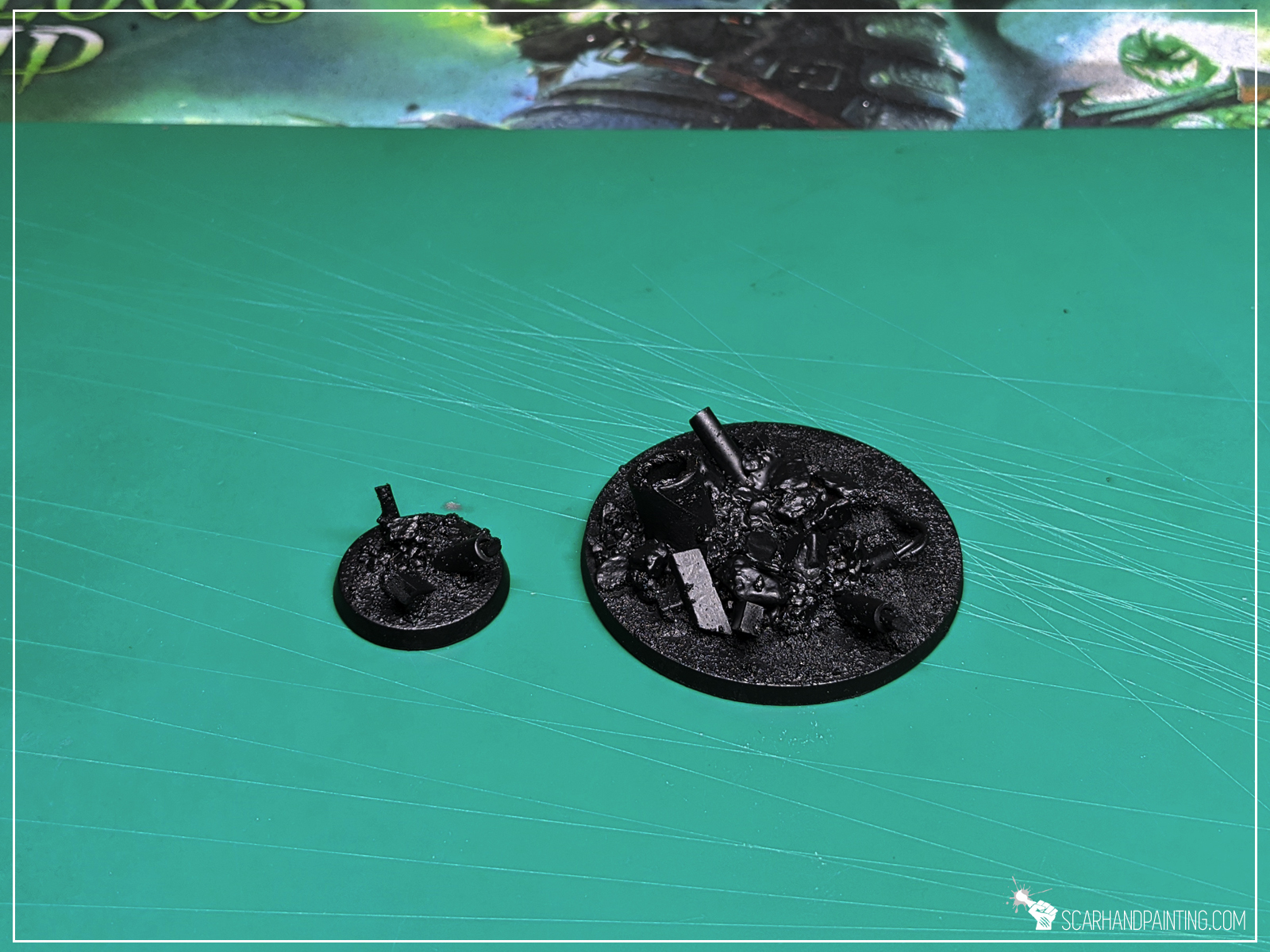
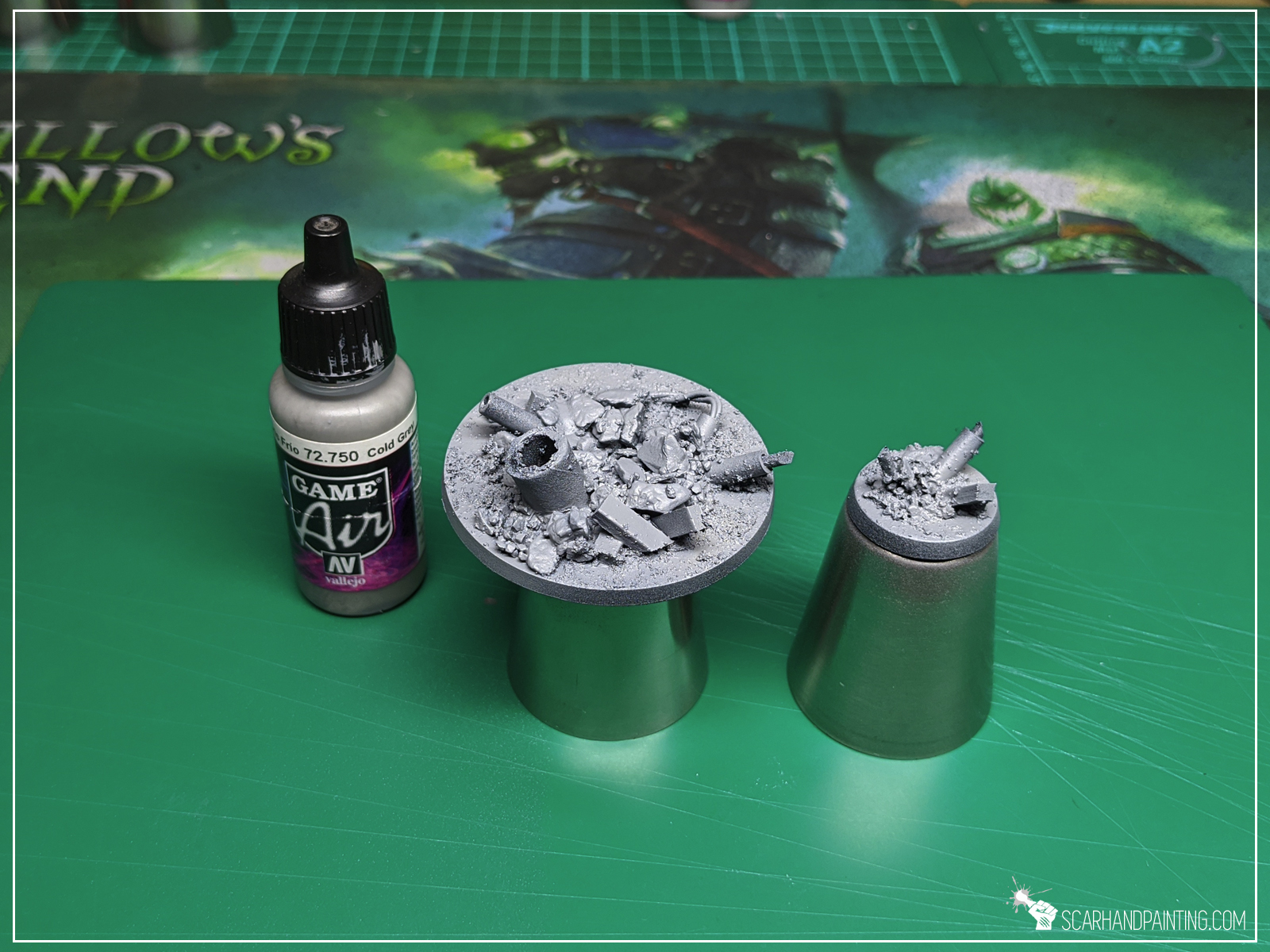

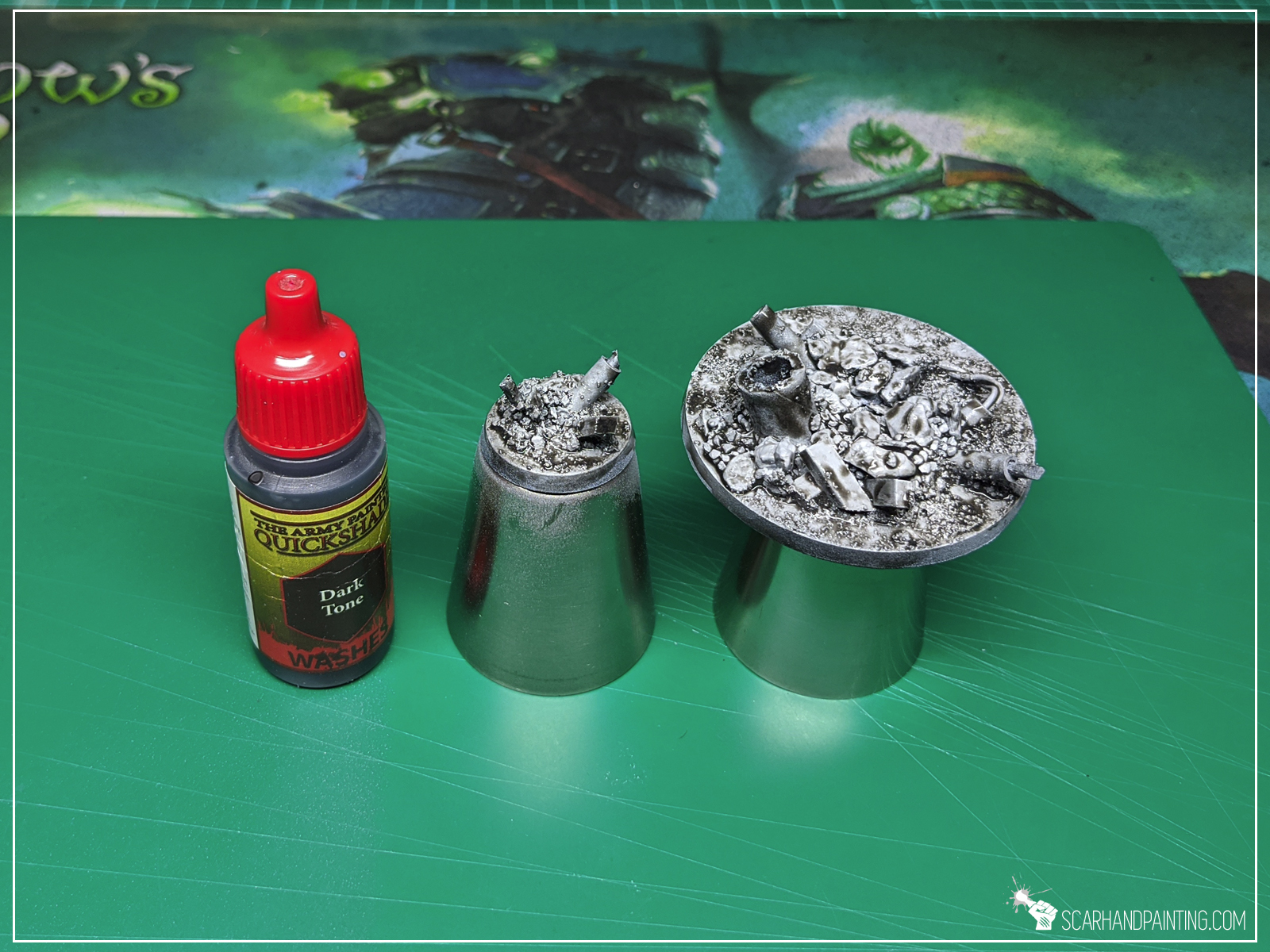
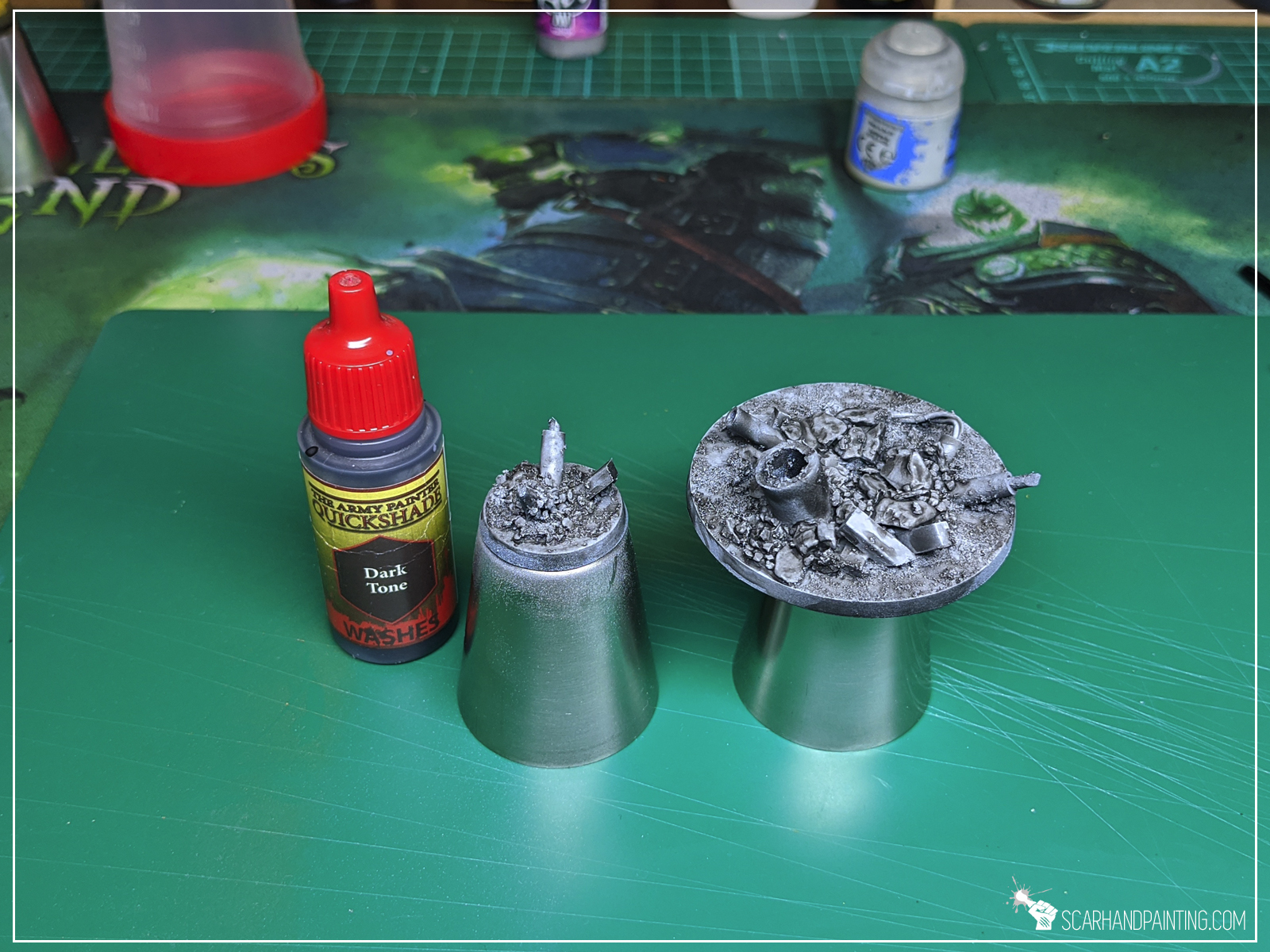
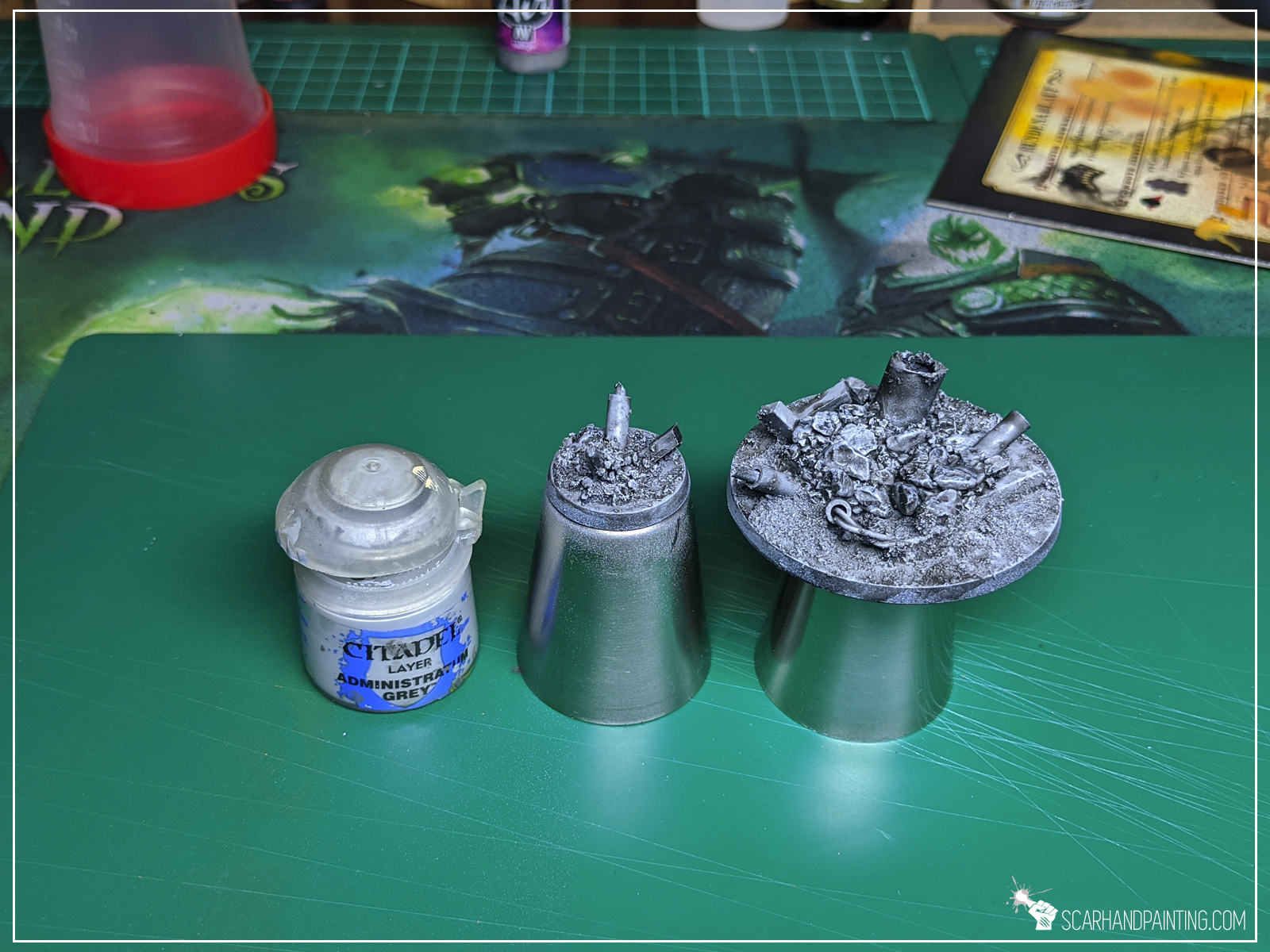
I started with Black Undercoat, then airbrushed a layer of Vallejo Cold Grey, followed short by Vallejo Stonewall Grey. I then washed everything black using Army Painter Dark Tone Ink and once it dried I drybrushed entire base with Games Workshop Administratum Grey.



For metal debris elements I used a mix of Games Workshop Warplock Bronze and Army Painter Gun Metal, followed by a highlight of Army Painter Shining Silver. I then washed all the pieces brown with Army Painter Strong Tone Ink.
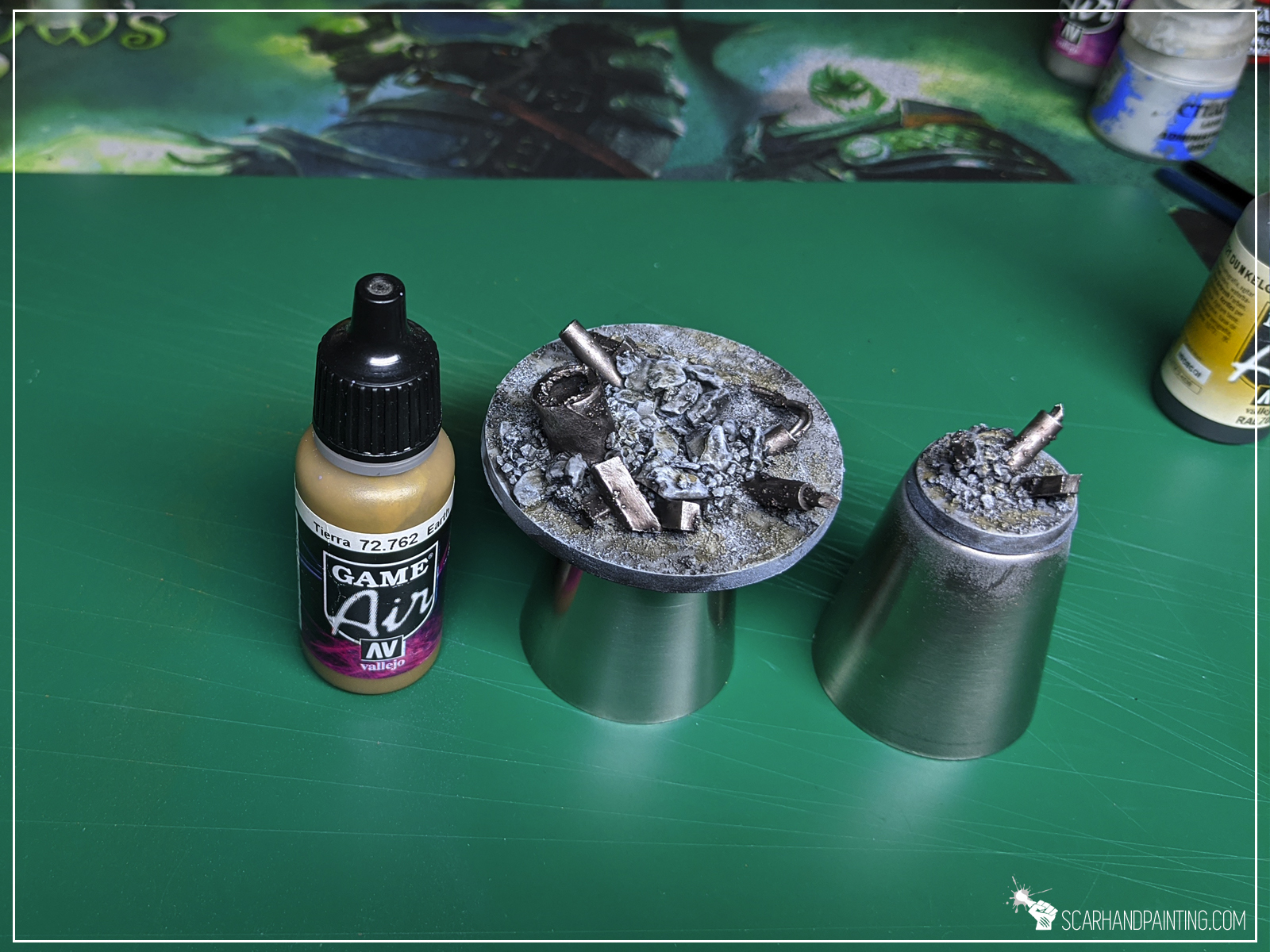
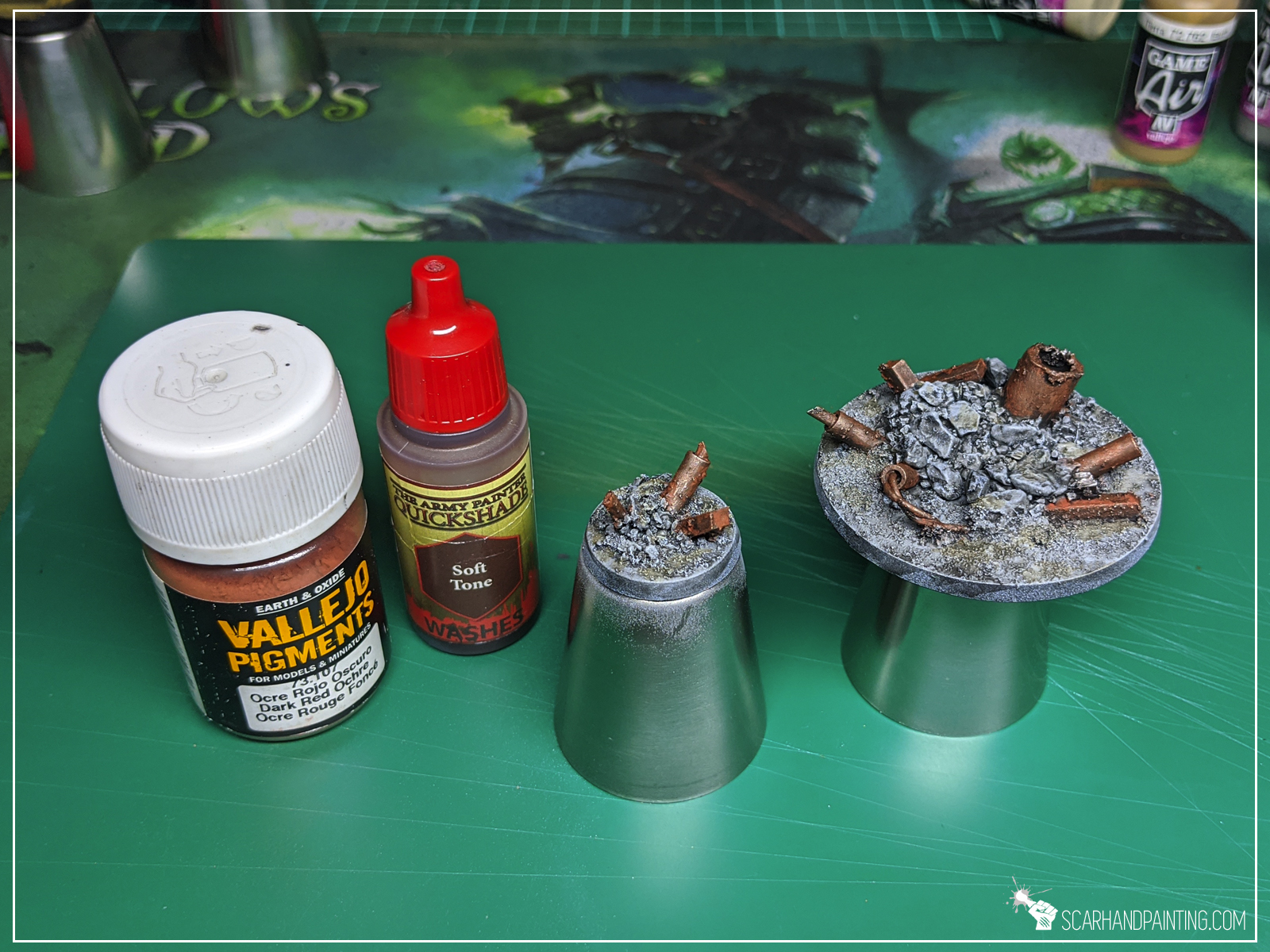

For additional depth and effects I blended in some watered Vallejo Earth. Next I washed all metal debris with a mix of Vallejo Dark Red Ochre Pigment and Army Painter Soft Tone Ink. Lastly I drybrushed grey areas with Vallejo Ghost Grey.
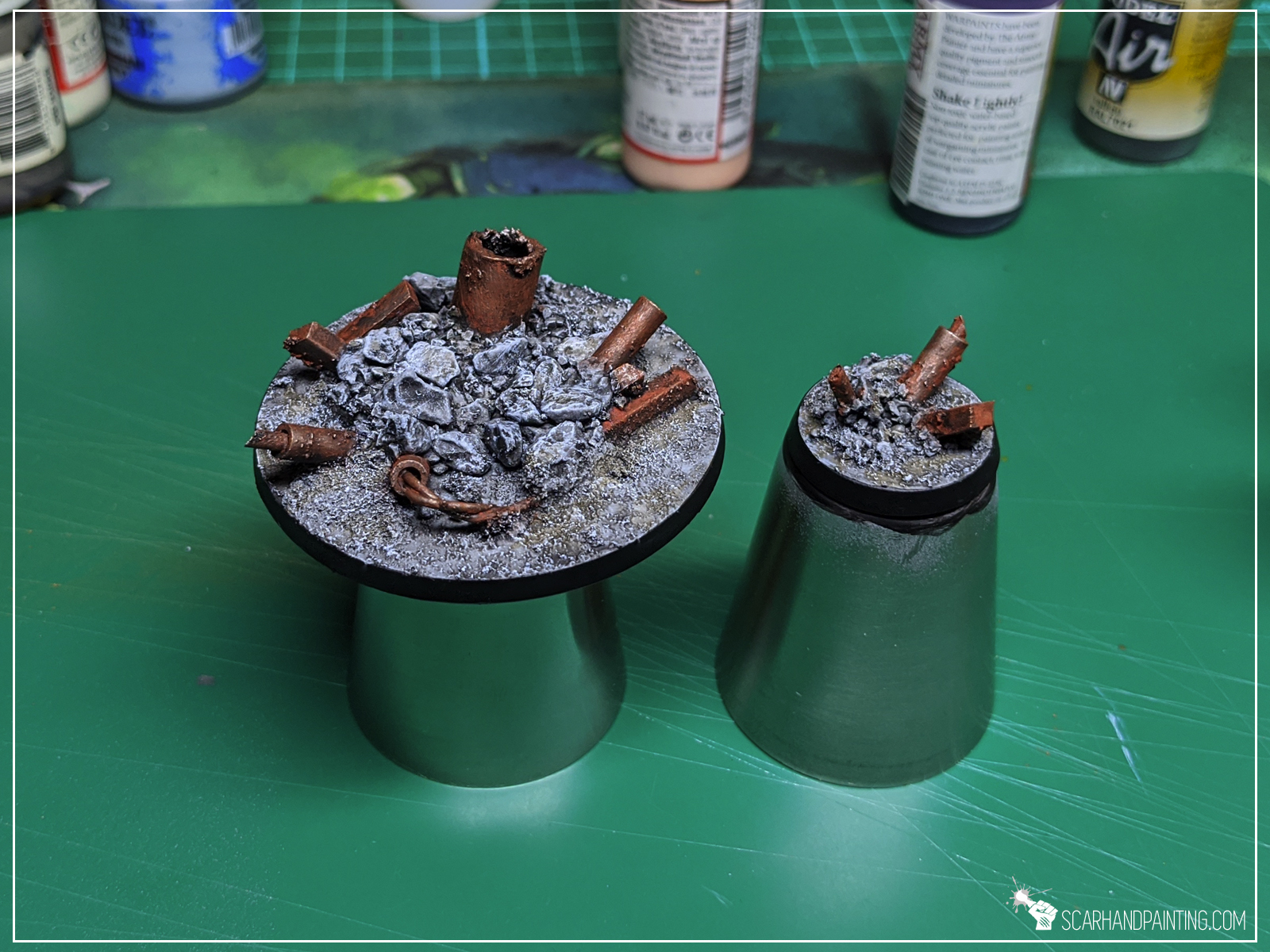
Edges repainted black and job done!
You like this article? Don’t be a stranger! Let me know what you think in the comments below or at my Facebook profile! Cheers!

Welcome to Painting Daemonic Purple Skin tutorial. Here I will take you on a Step-by-step trip through the process of painting purple skin the same way as seen at: Gallery: Confrontation Mid-Nor

Before we start, some notes:
* This one requires basics of loaded brush technique.
* For the purpose of this tutorial I used a Confrontation Mid-Nor miniature that has a large detail and is better to show the steps on.
* As usual, please take note that what works for me might not necessarily work for you.
Ready to do this? I assume your miniature is already painted black (or in my case first layers of “Infinity Black“), so buckle up and let’s go!
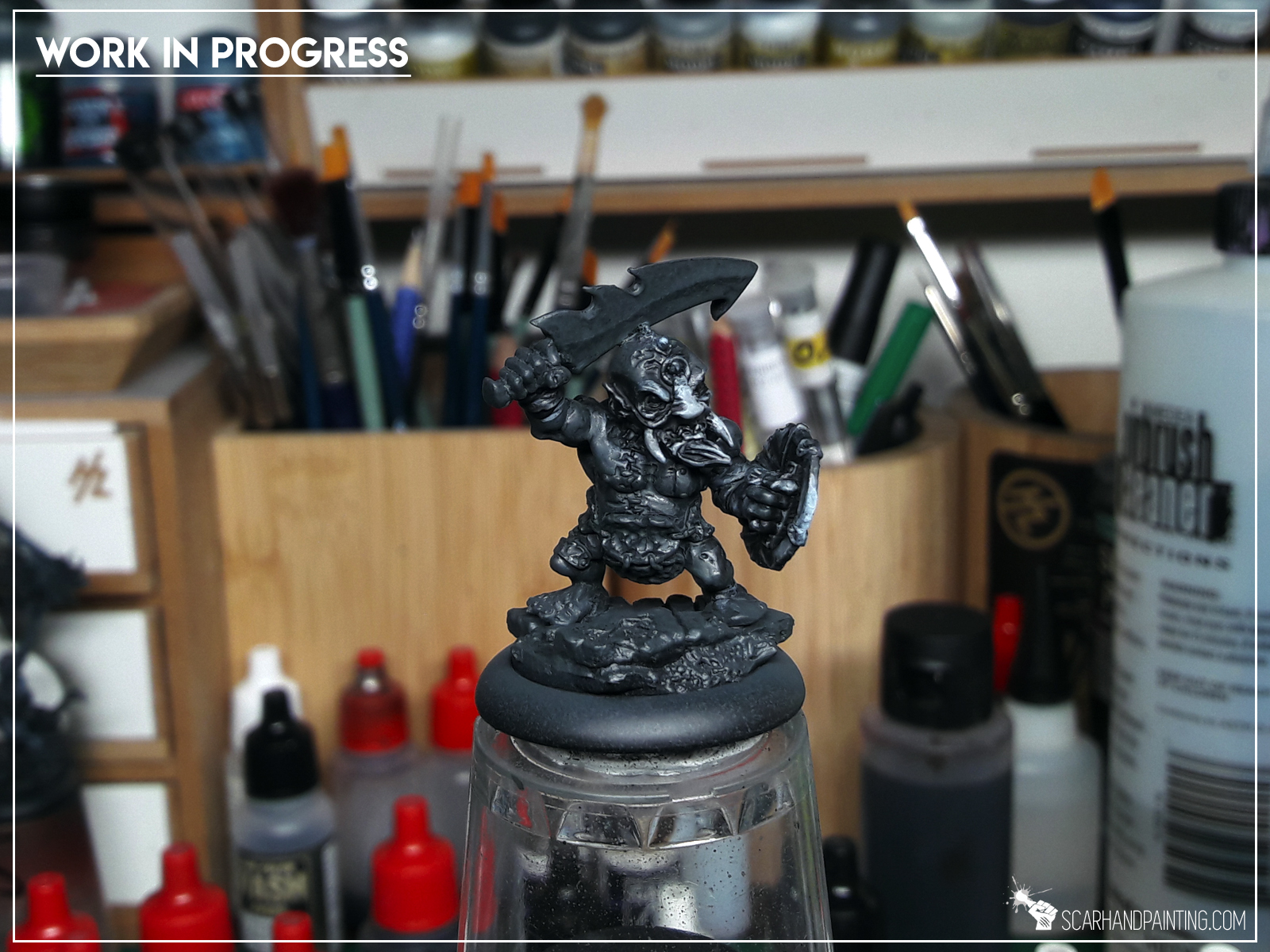
* Start with a solid layer of Warpfiend Grey (GW). The layer does not have to be perfectly smooth. The goal is to make sure all deep areas are filled with paint. I tend to thin down the paint with a bit of water to fasten this step.
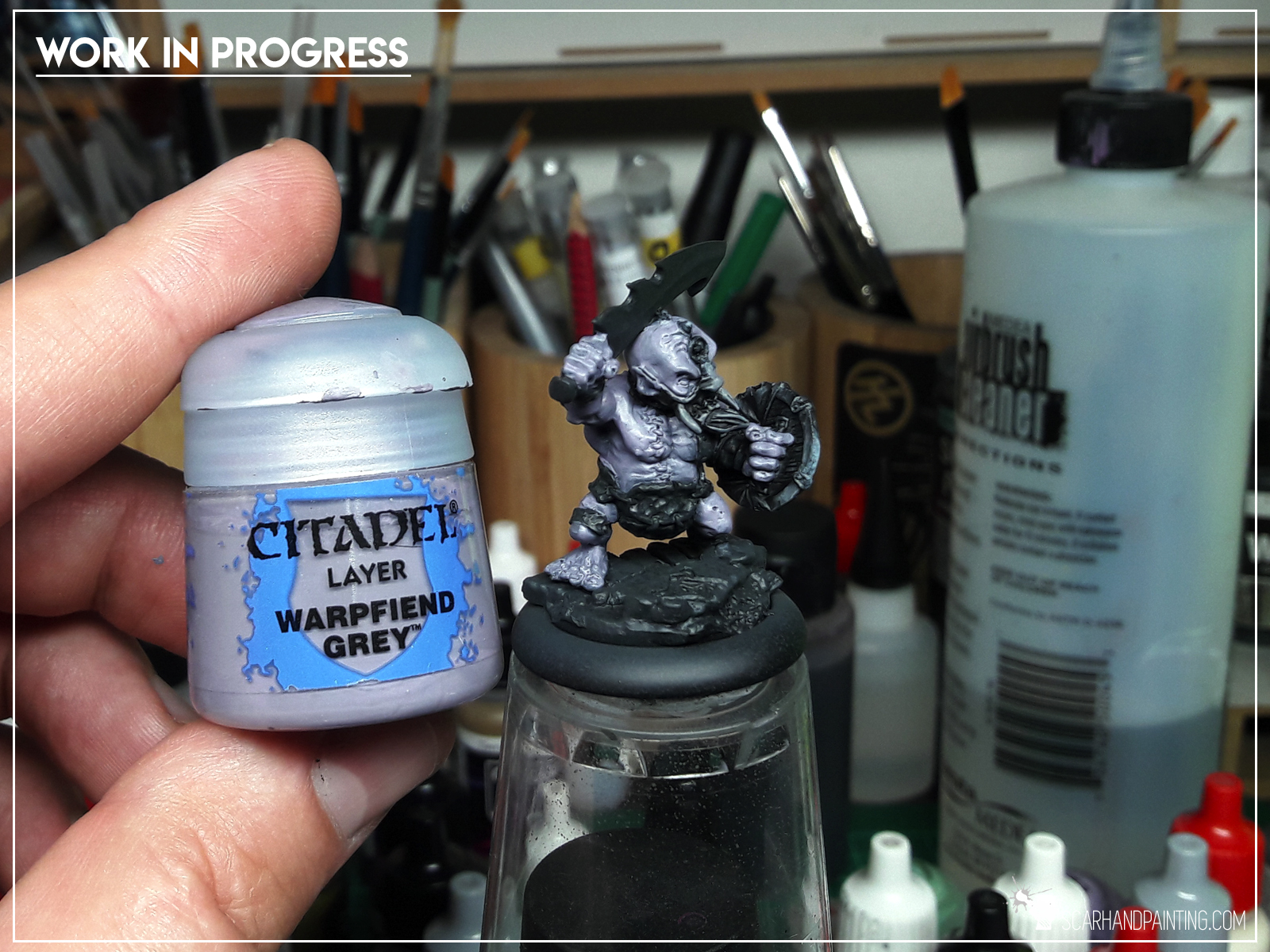
* orem ipsum dolor sit amet, Integer commodo tristiqu odio, aliquet ut. Maecenas sed justo imperdiet bibendum. Vivamus nec sapien imperdiet diam. Aliquam erat volutpat. Sed onsectetur suscipit nunc et rutrum. Lorem ipsum dolor sit amet,volutpat. Sed onsectetur suscipit nunc et rutrum. Lorem ipsum dolor sit amet, volutpat.
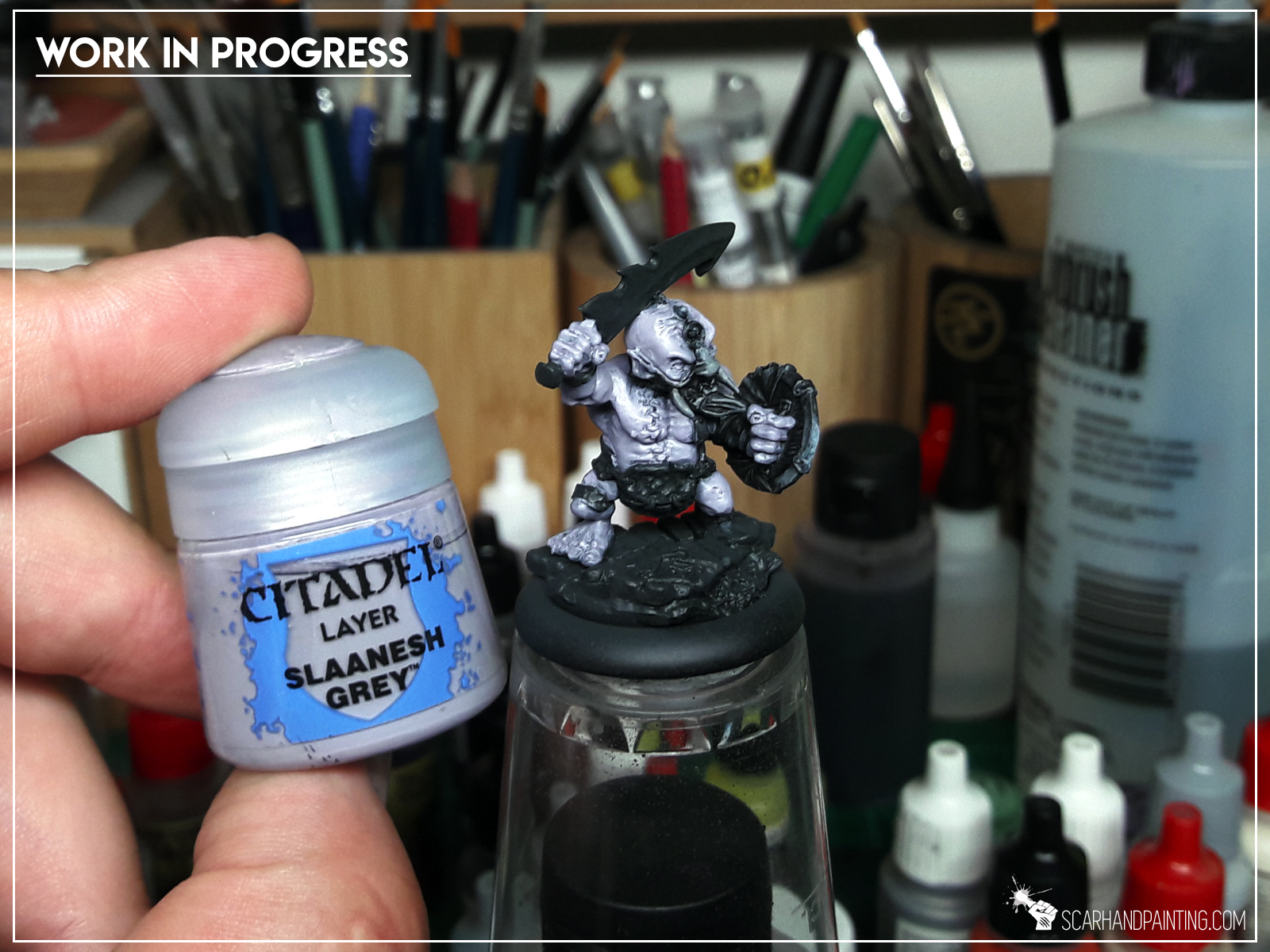
* Time for a little bit of magic trickery. Wash with a mix of Purple Tone Ink (AP) 2:1:1 Strong Tone Ink (AP), Lahmian Medium (GW).

* Back to Slaanesh Grey (GW). Here's where loaded brush becomes handy. Repaint all the exterior areas with Slaanesh Grey. Might be a bit thinned, the paint has enough pigment to do the job.
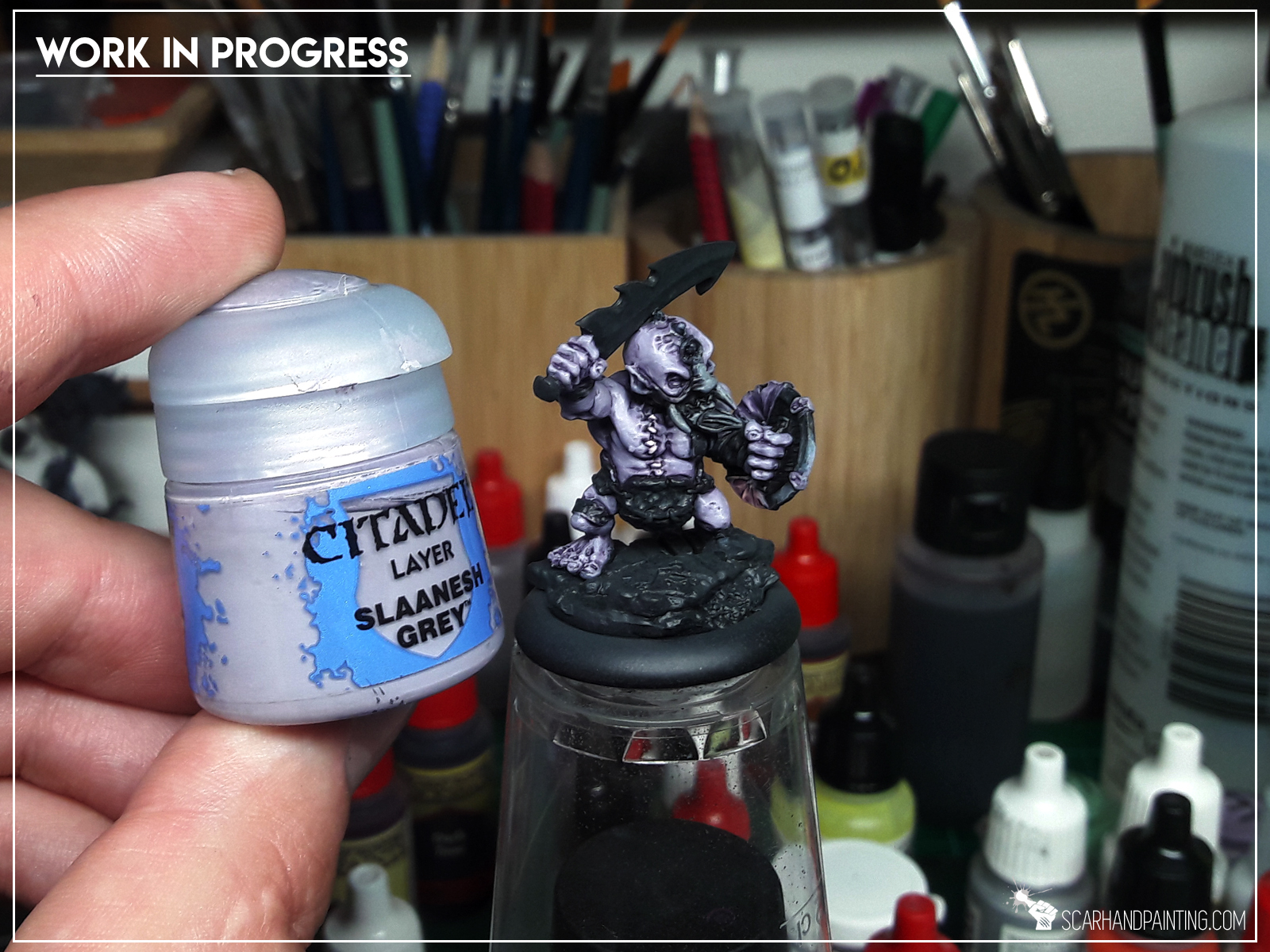
* Now same thing, but with a mix of Slaanesh Grey (GW) with just a bit of Pale Flesh (Val). This time though focus in edges and middle points of larger areas.
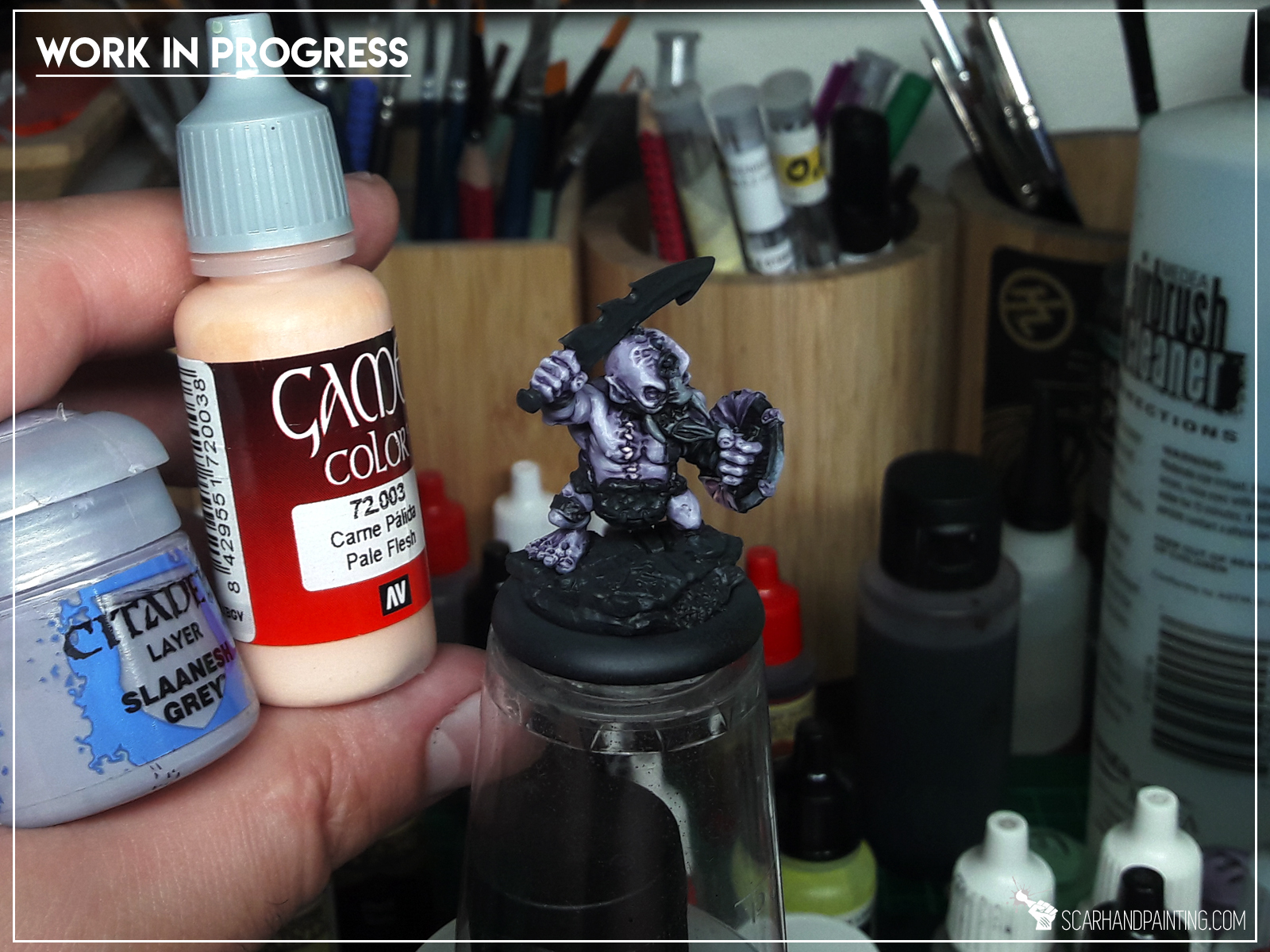
…and that’s it. You can further highlight edges and important points adding more Pale Flesh (Val) to the mix. The end result looks like this:
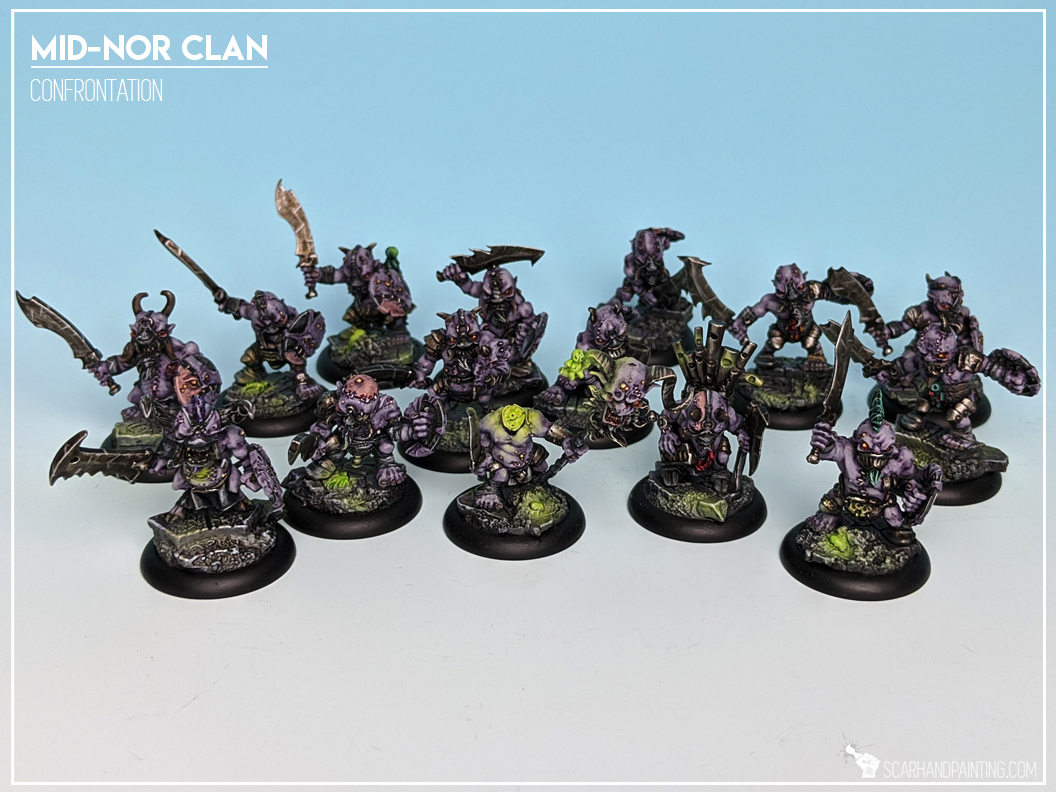

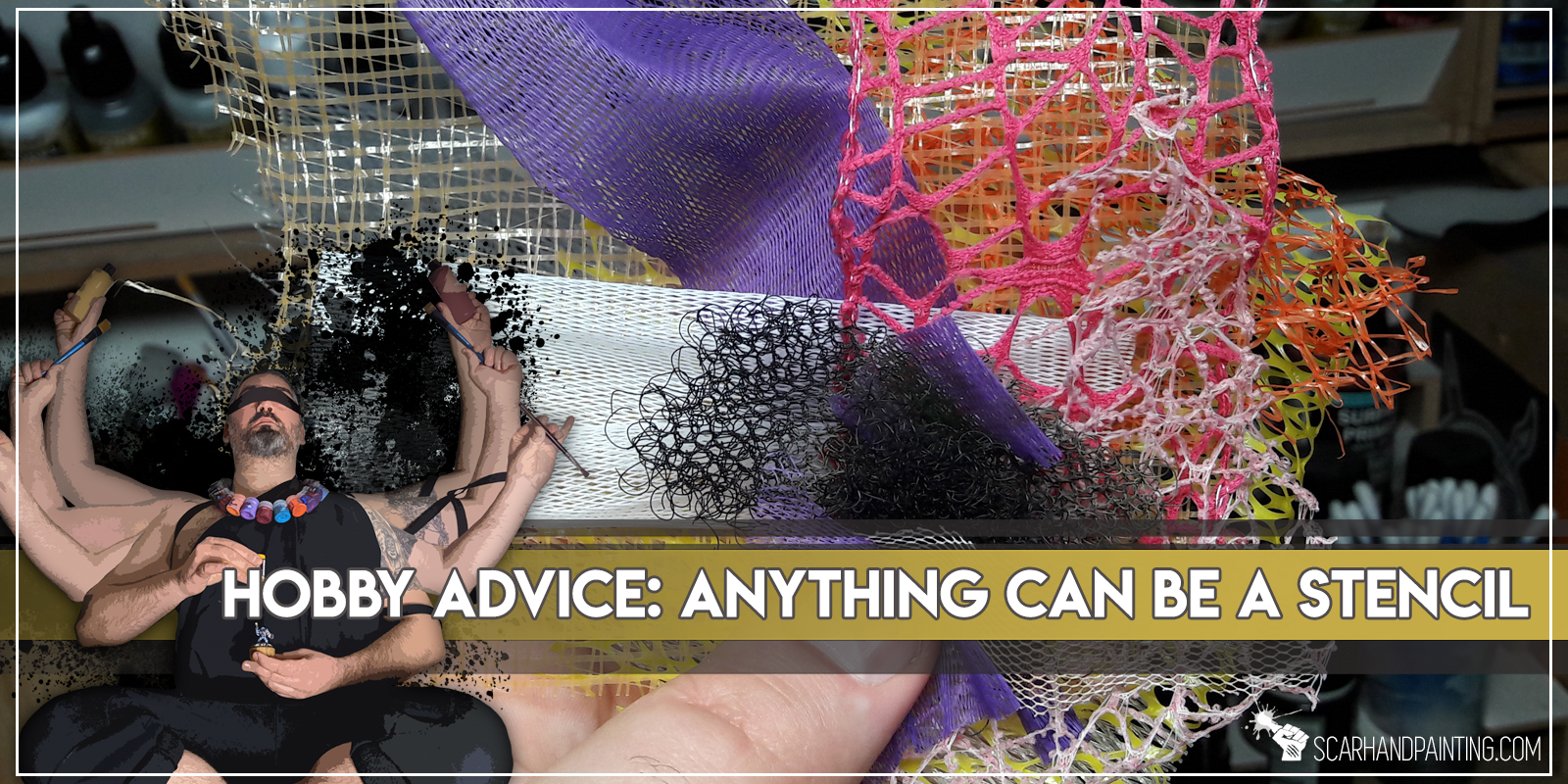
Let’s talk Stencils. There’s just so many awesome airbrush stencils out there. The world around us is filled with them, even though we’re used to pass them by without further notice…
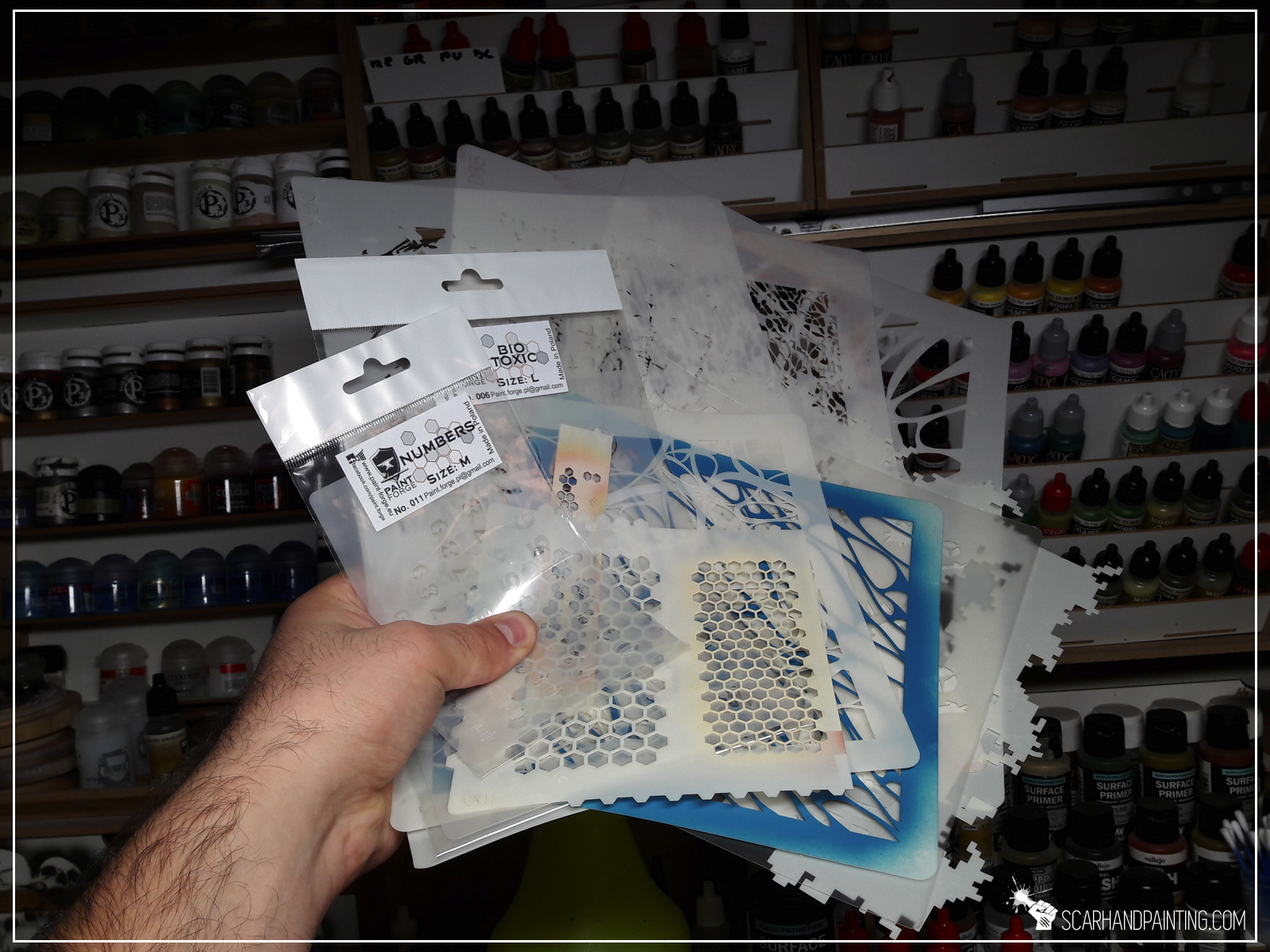
No, I ain’t talking about these! These are all professional stencils, some of which are crazy expensive! Nope – I’m talking about all the stencils that you might already have at home and not know about it! Some may be found in the kitchen, some inside your bathroom, some can even now be in your reach, across the hobby desk!
“But Maciej, you resourceful genius” I hear you say “how come?!”
Here’s the thing: “Anything can be a stencil!” Still don’t believe me? Check these out!
Dirty, dusty effect – why not?

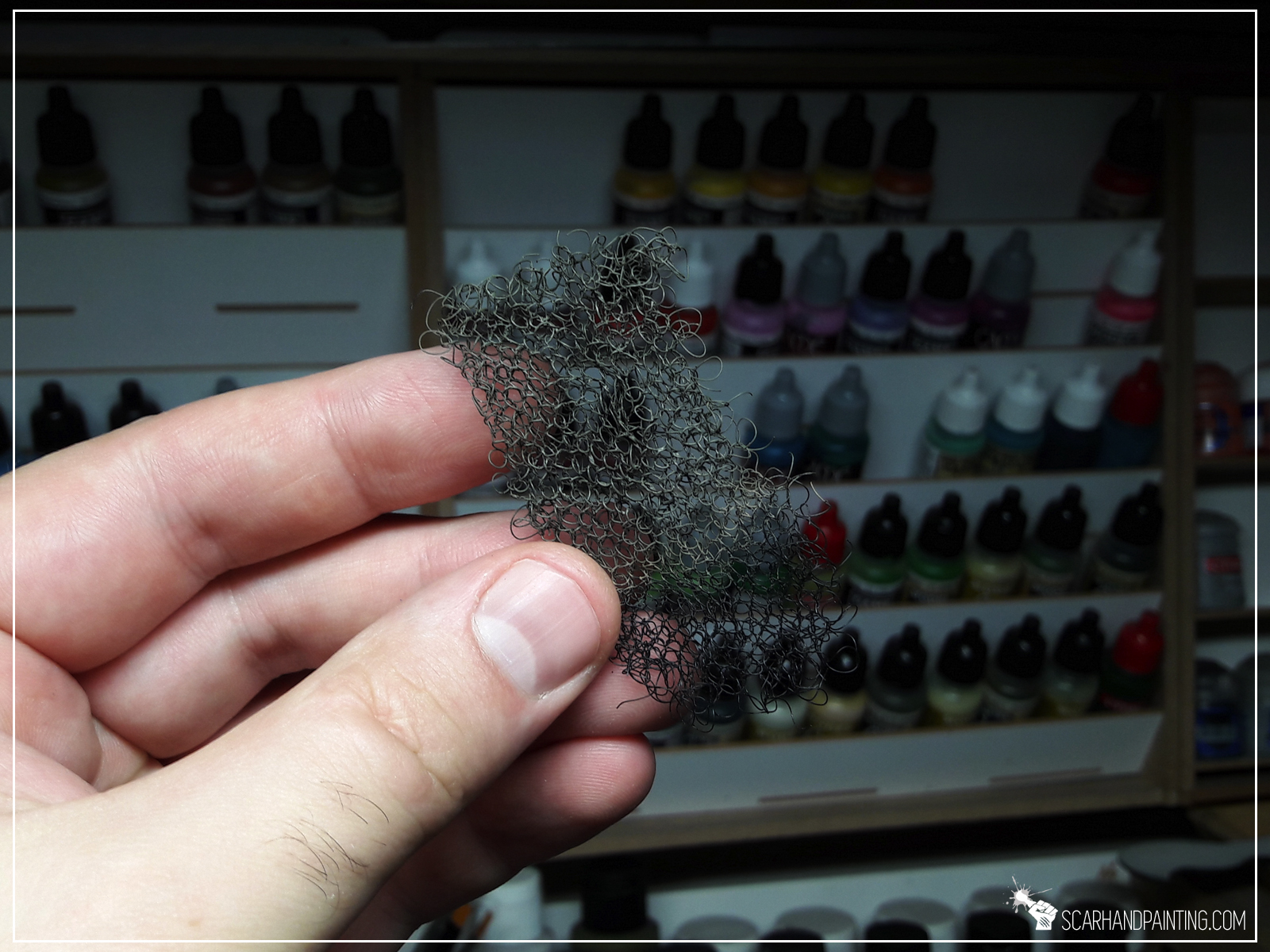
Still haven’t used, but I know there will come a time to do it 😛
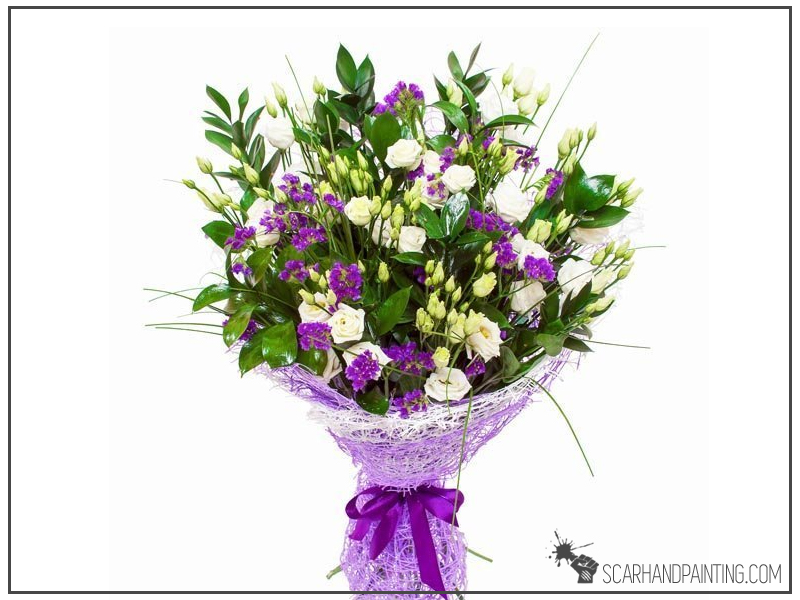
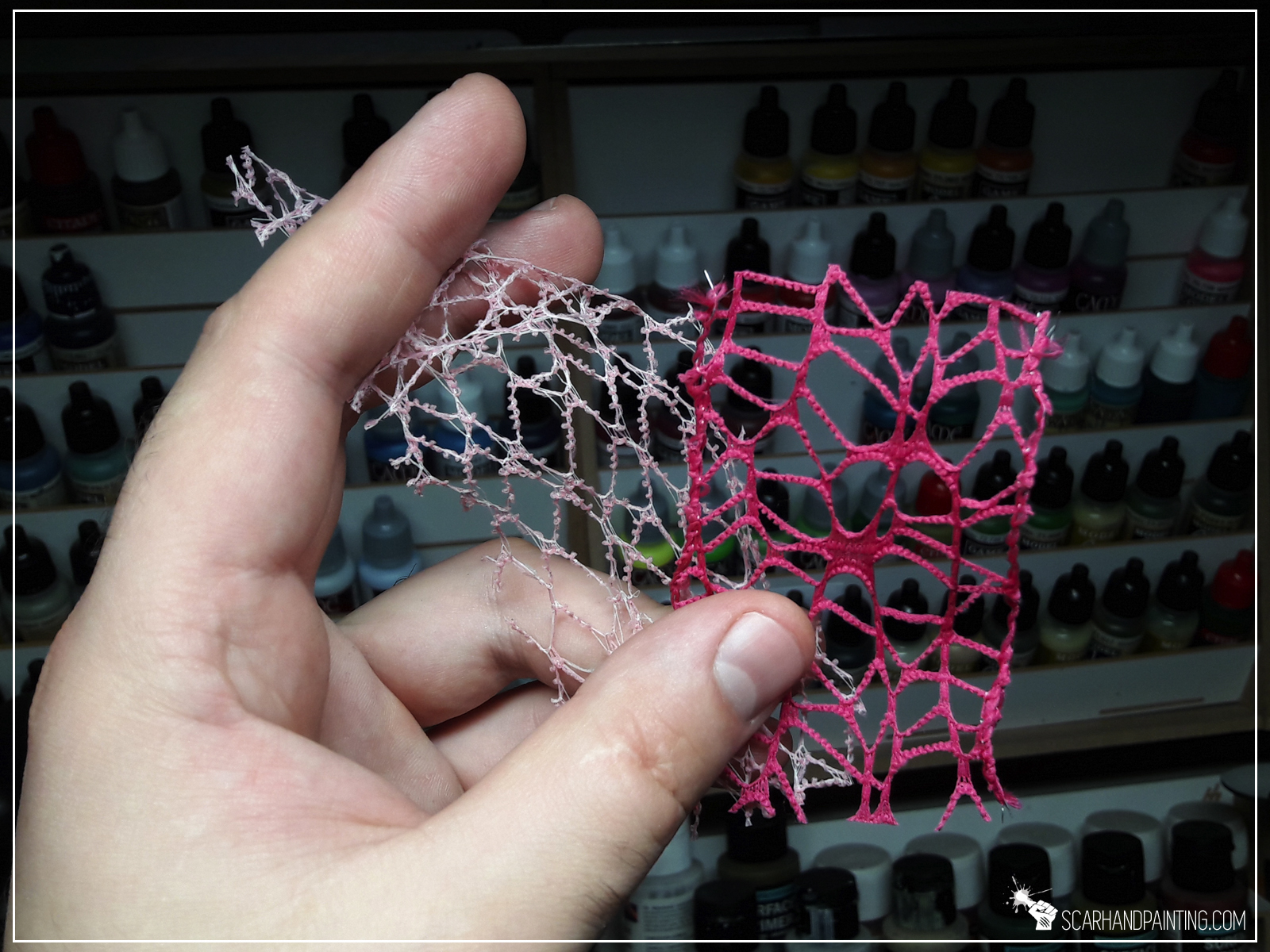
Cuz there’s never enough hex in your life!
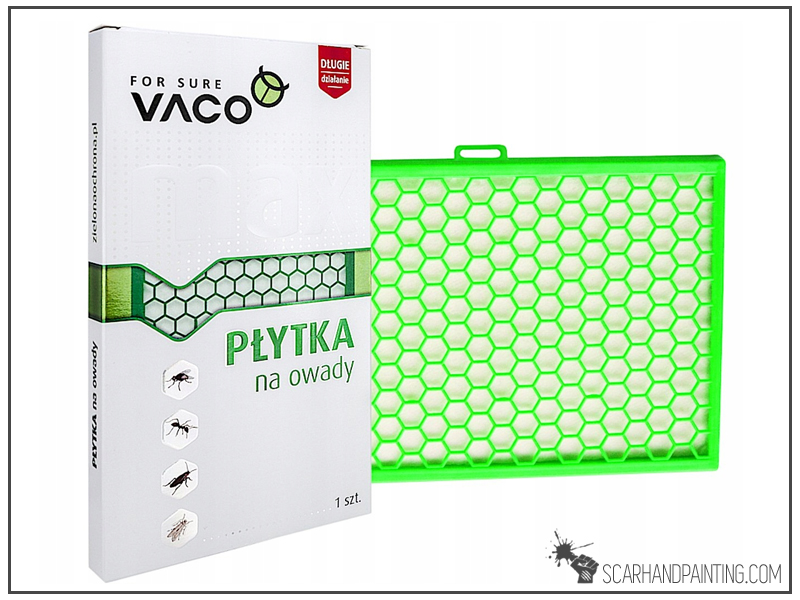
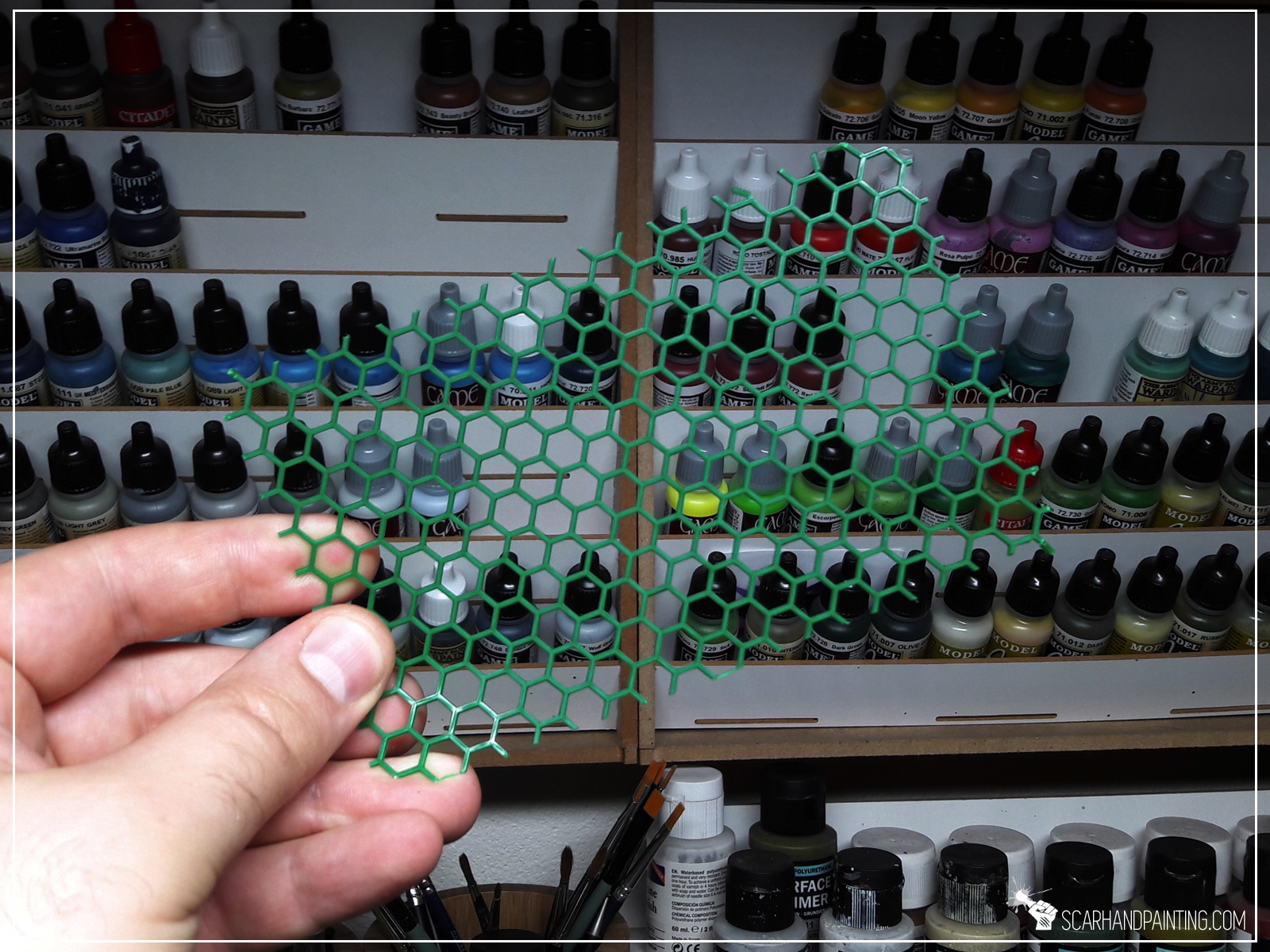
I call upon thee God of Thunder!


Not a stencil, but totally worth consideration 😉
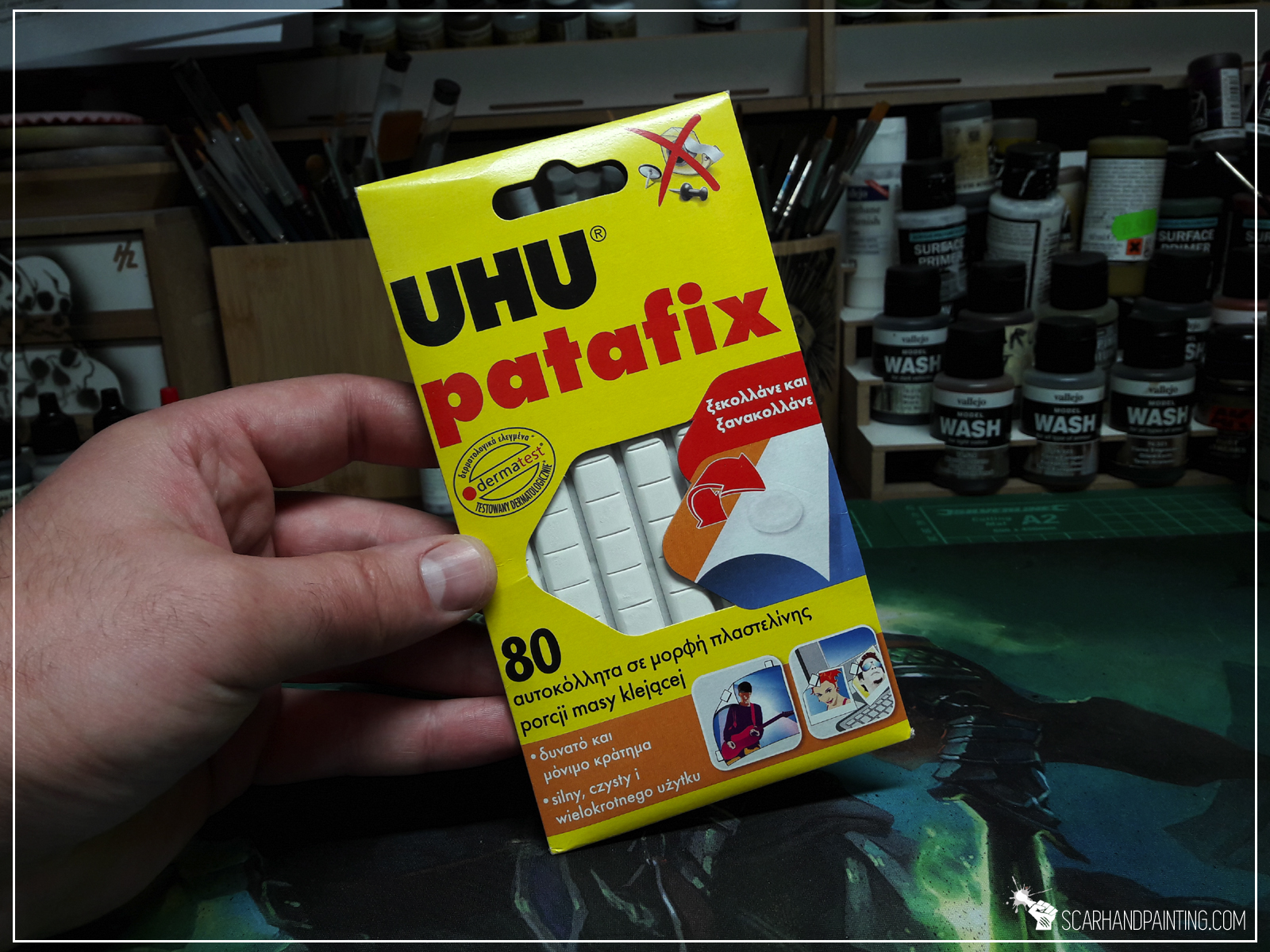
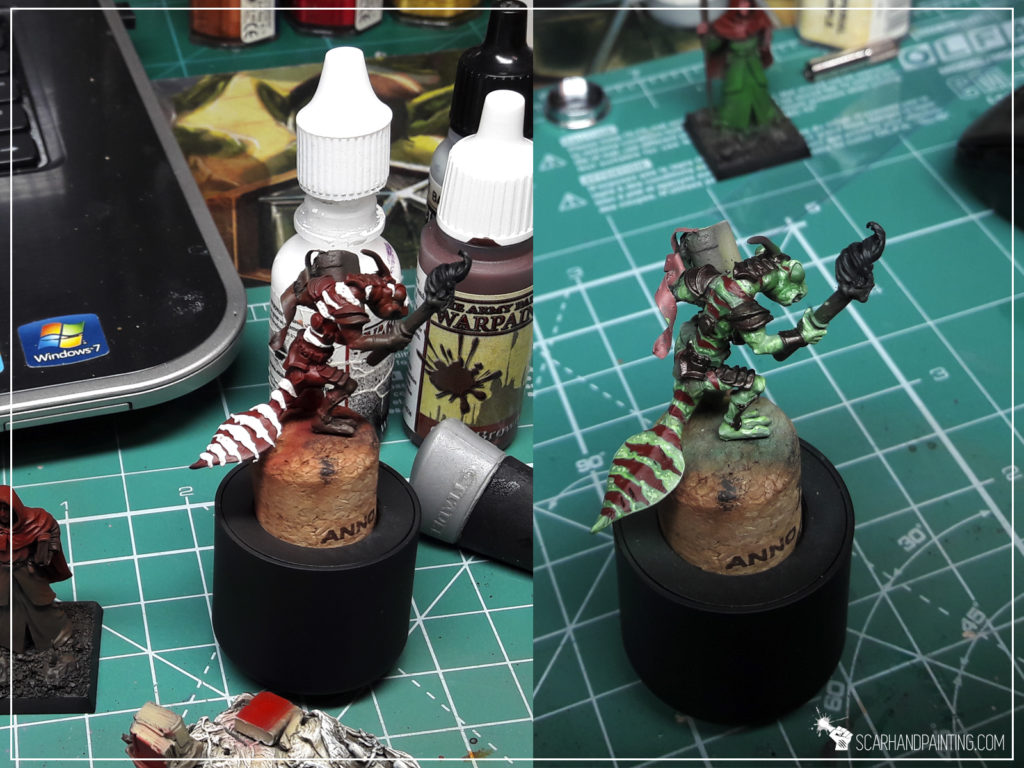
My favorite source of elastic, detailed stencils.

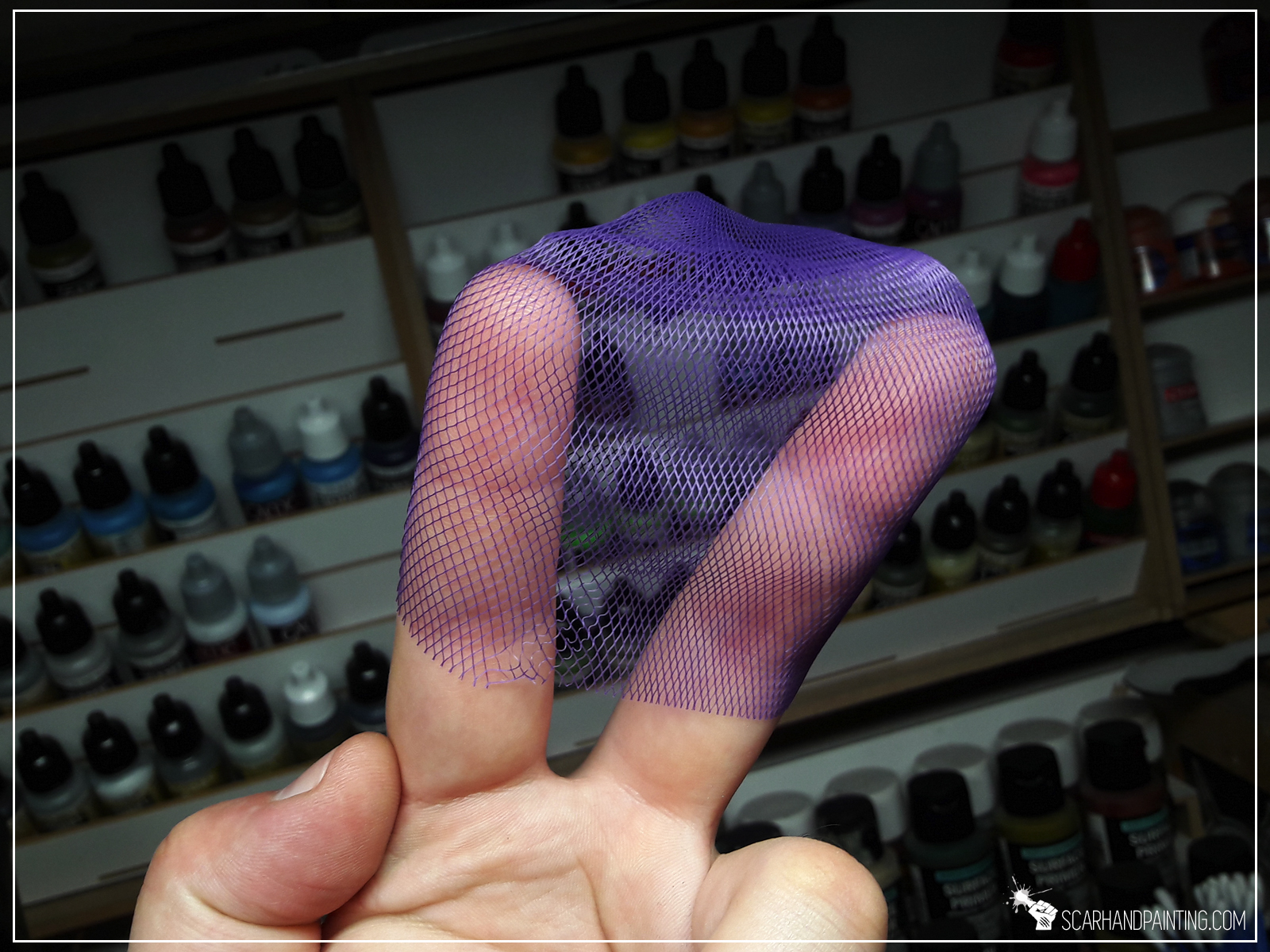
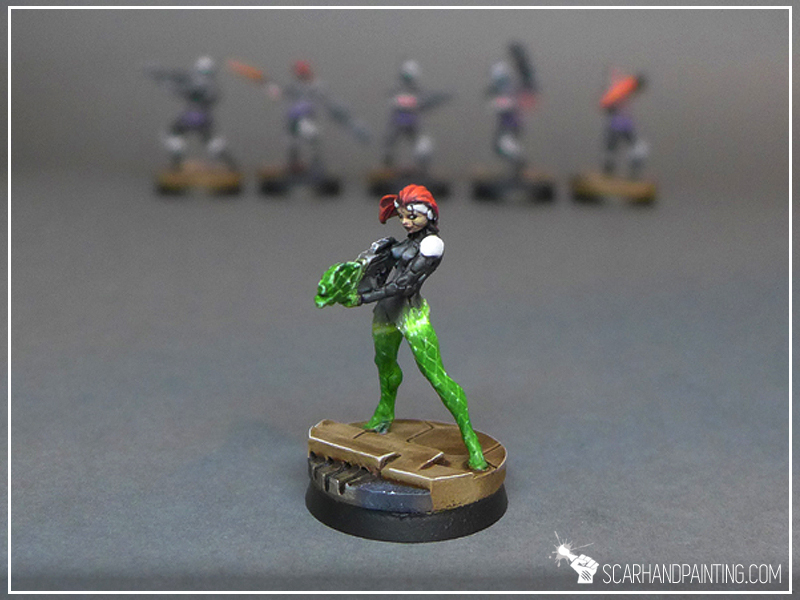
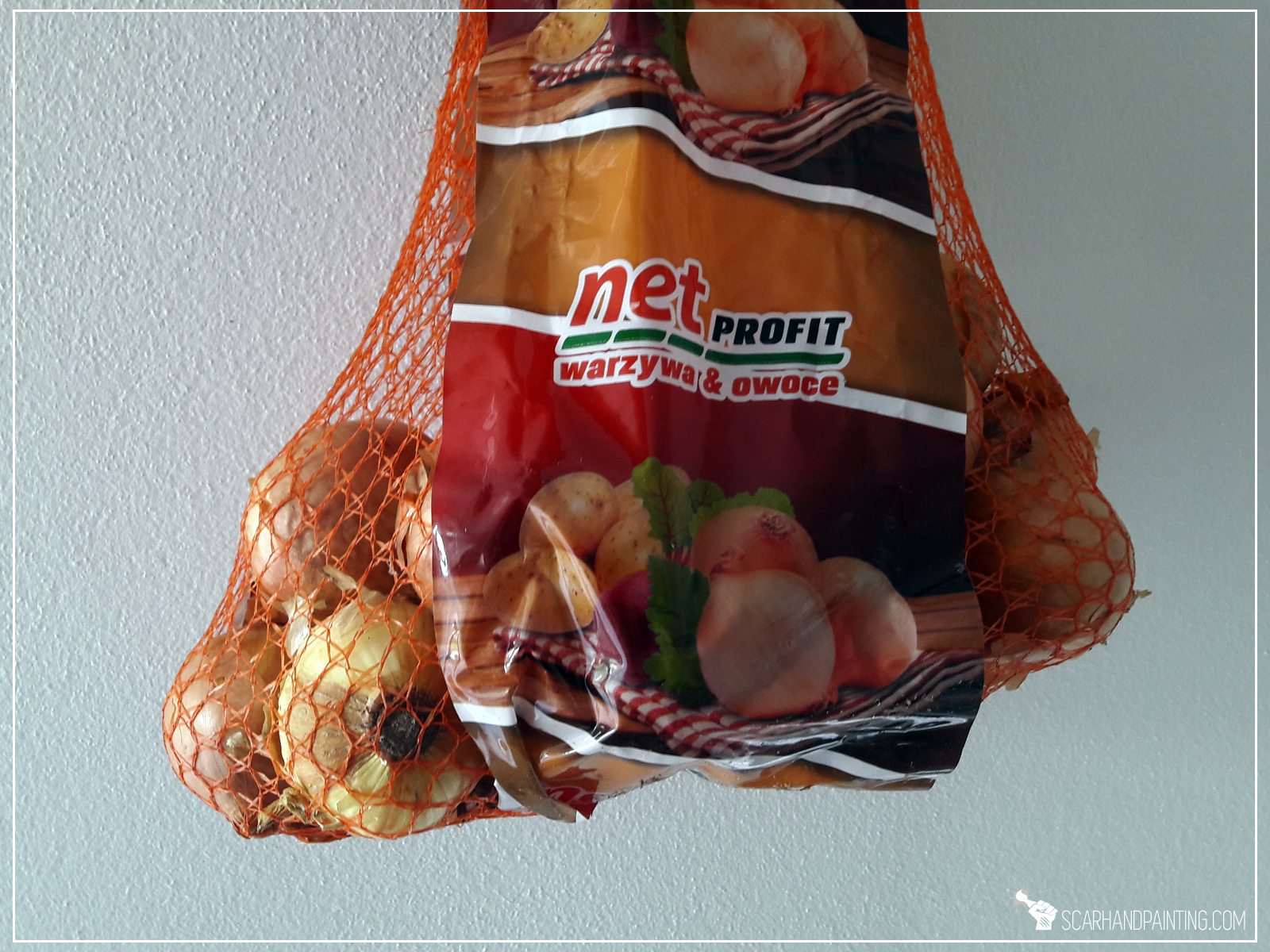
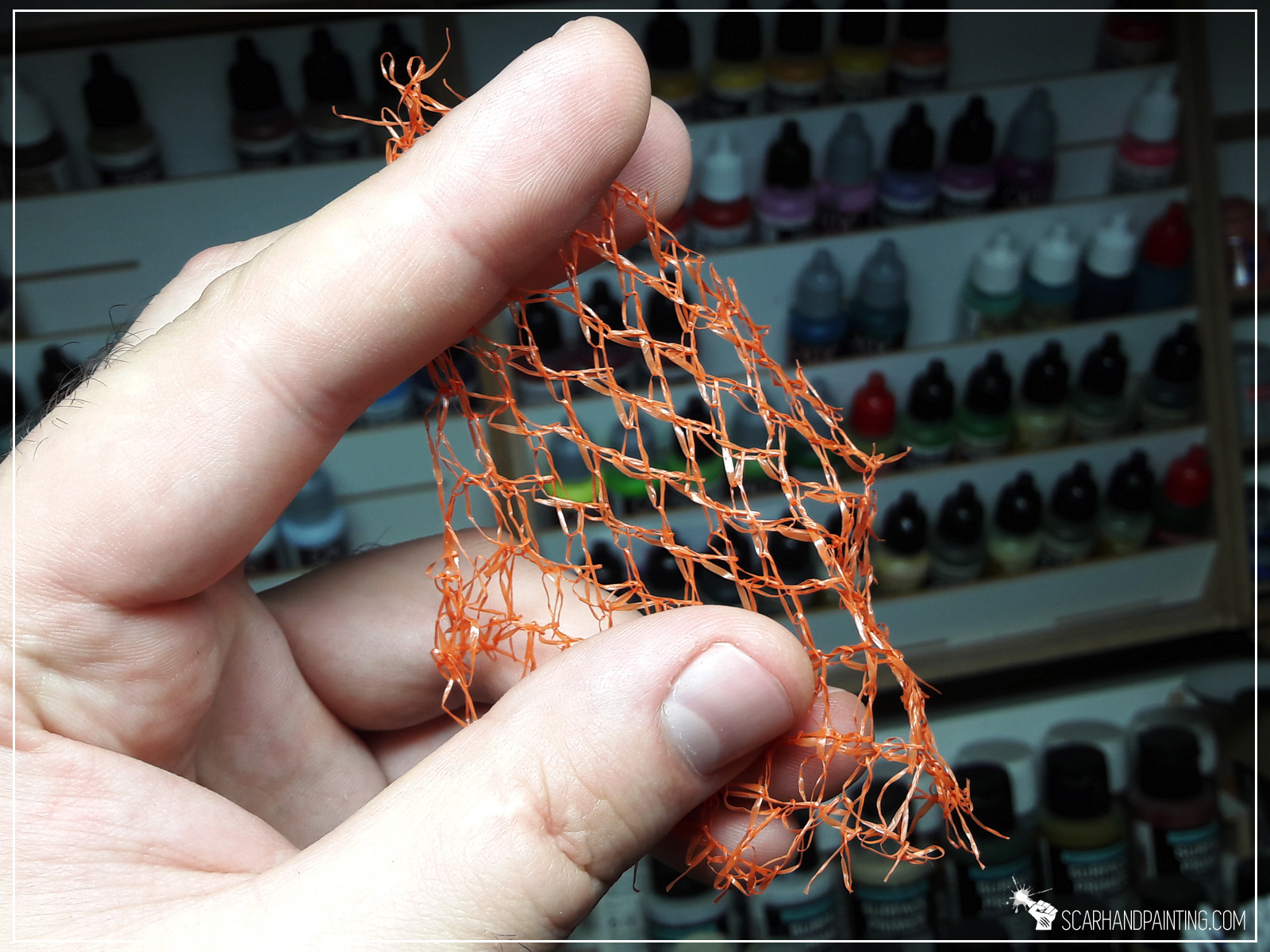
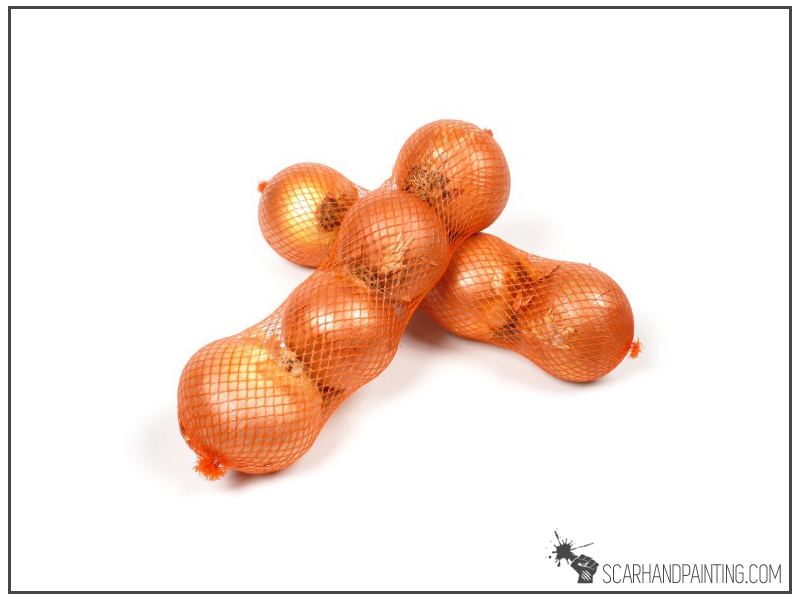

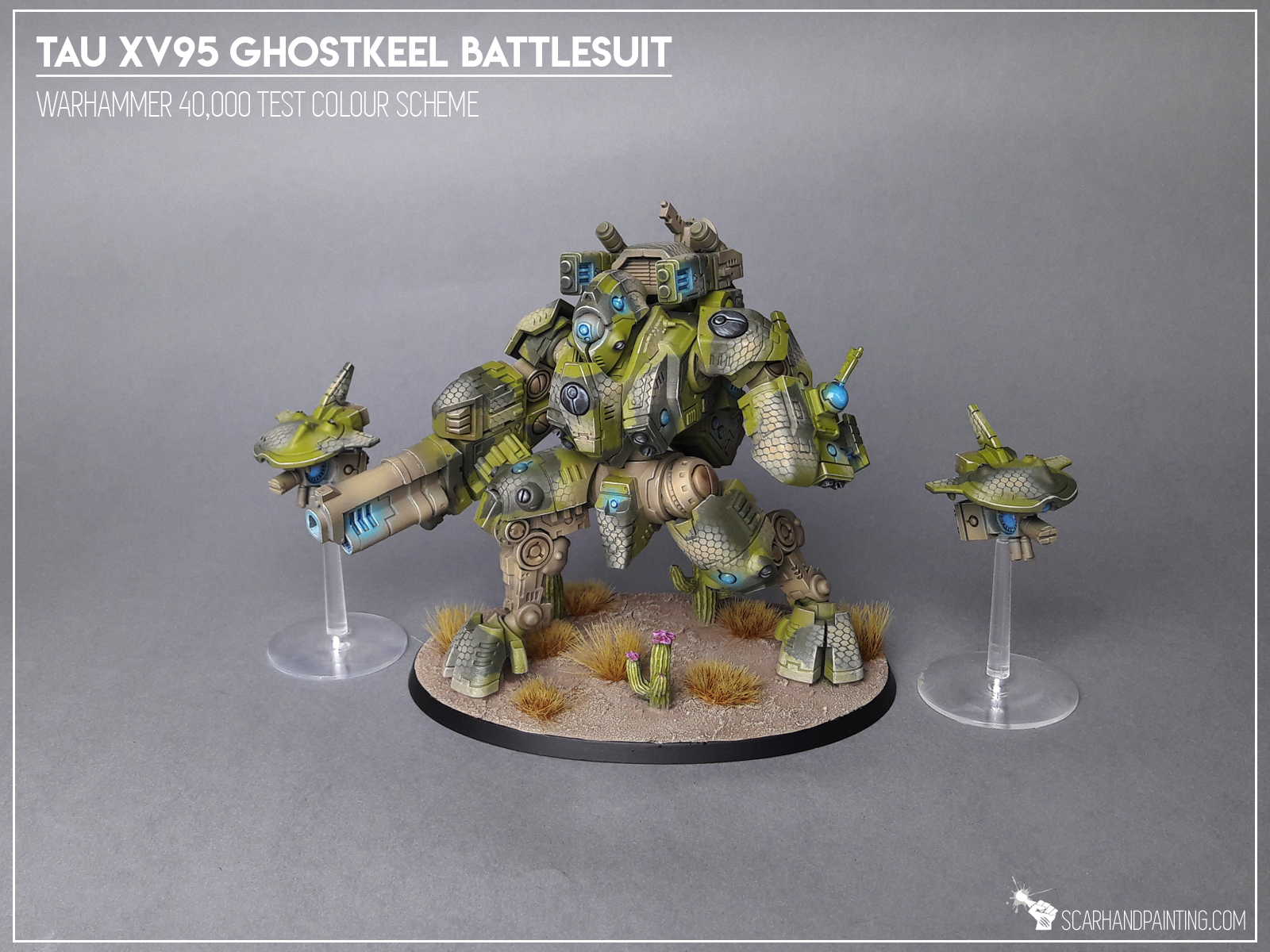
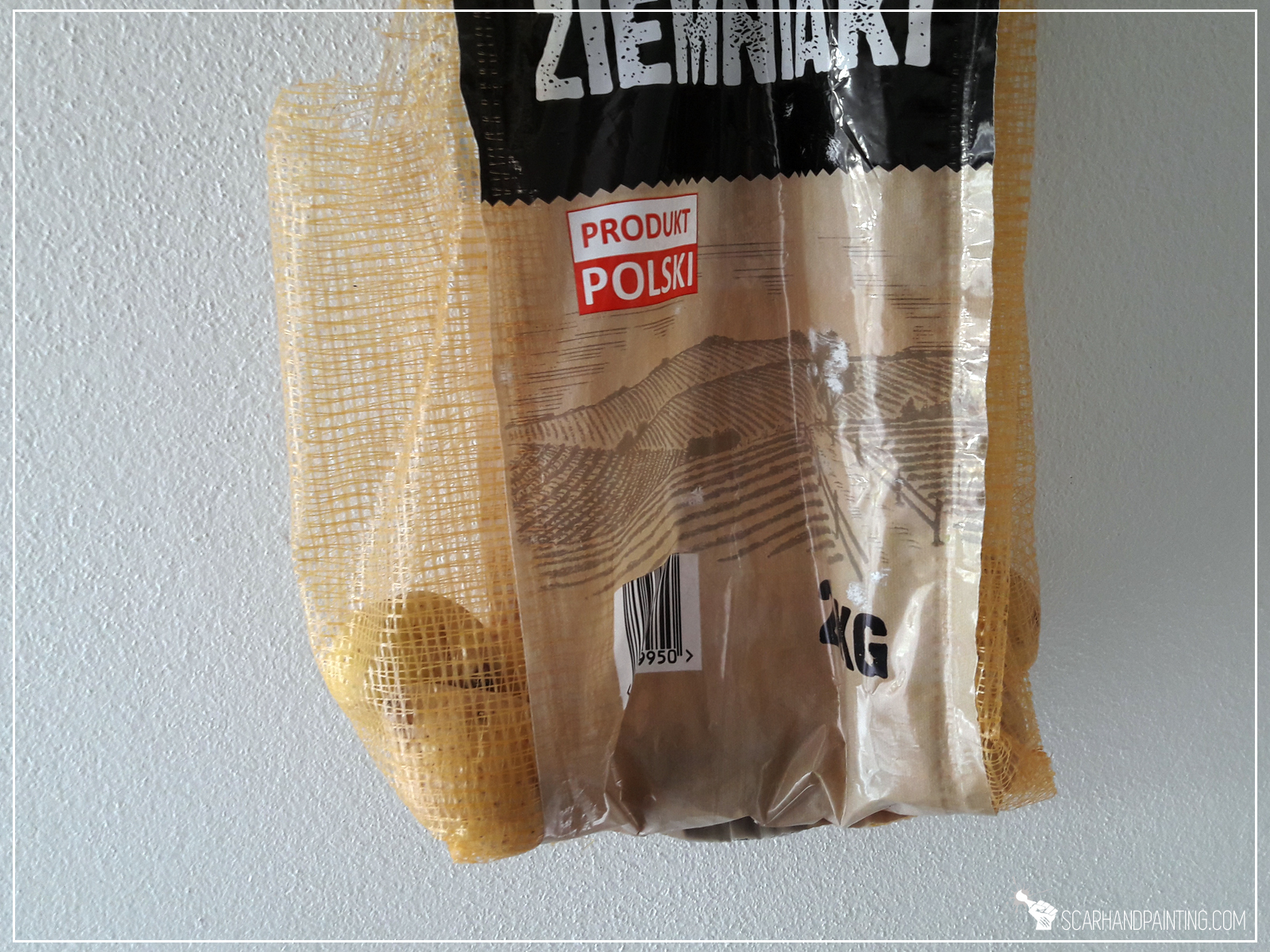



Feel inspired to rampage across your home and try to find as many stencils as possible? Feel like “gonna catch them all!”? I wish you good hunt!
PS: What are yours favorite DIY stencils? Let me know in the comments or under THIS facebook post 😉
custom miniature commission
warhammer 40k painting service
warhammer commission painting
40k commission painting
miniature commission painting
custom miniature painting
miniatures painting service
Address:
Scarhandpainting Kulesza Maciej
Damrota 11, 42-622 Świerklaniec, Poland
E-mail: contact@scarhandpainting.com
Scarhandpainting is a professional miniatures painting service. Why choose Scarhandpainting? Two decades worth of hobby experience, five years in the market, hundreds of finished commissions and happy customers. We offer a characteristic style of paint job on seven different levels to cater to your needs.
Looking for Warhammer 40,000 painting service on a budget? Or maybe high quality paint job with quick turnaround time? We’ve got you covered! Red more…
© 2023 Scarhandpainting Kulesza Maciej
